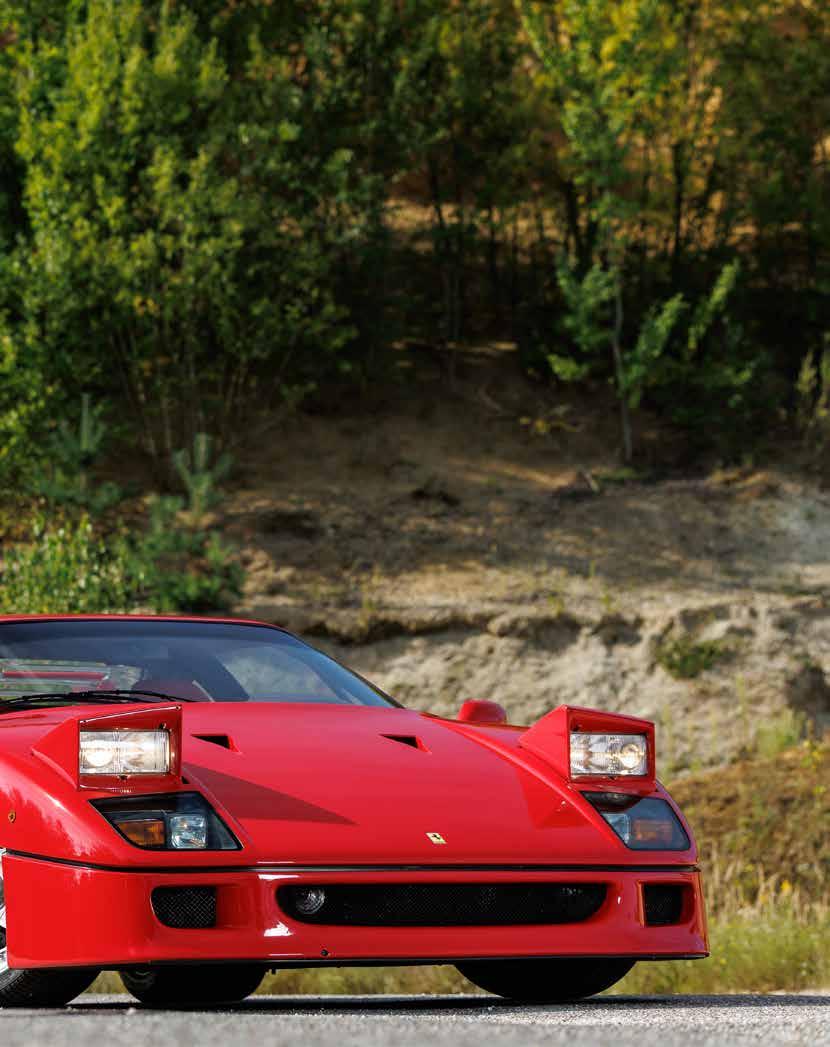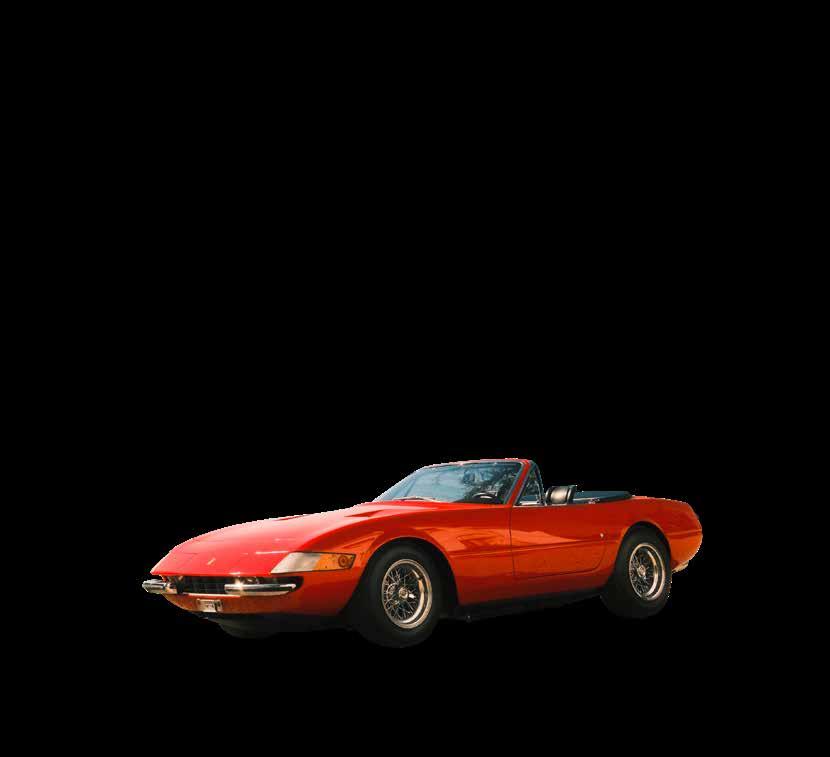ZOUTE SALE
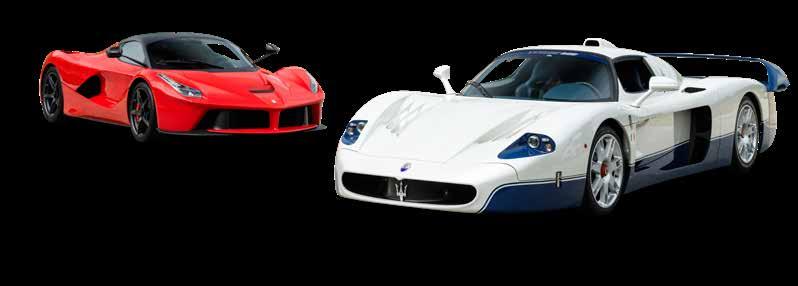
Important Collectors’ Motor Cars
Knokke - Zoute, Belgium I October 12, 2025
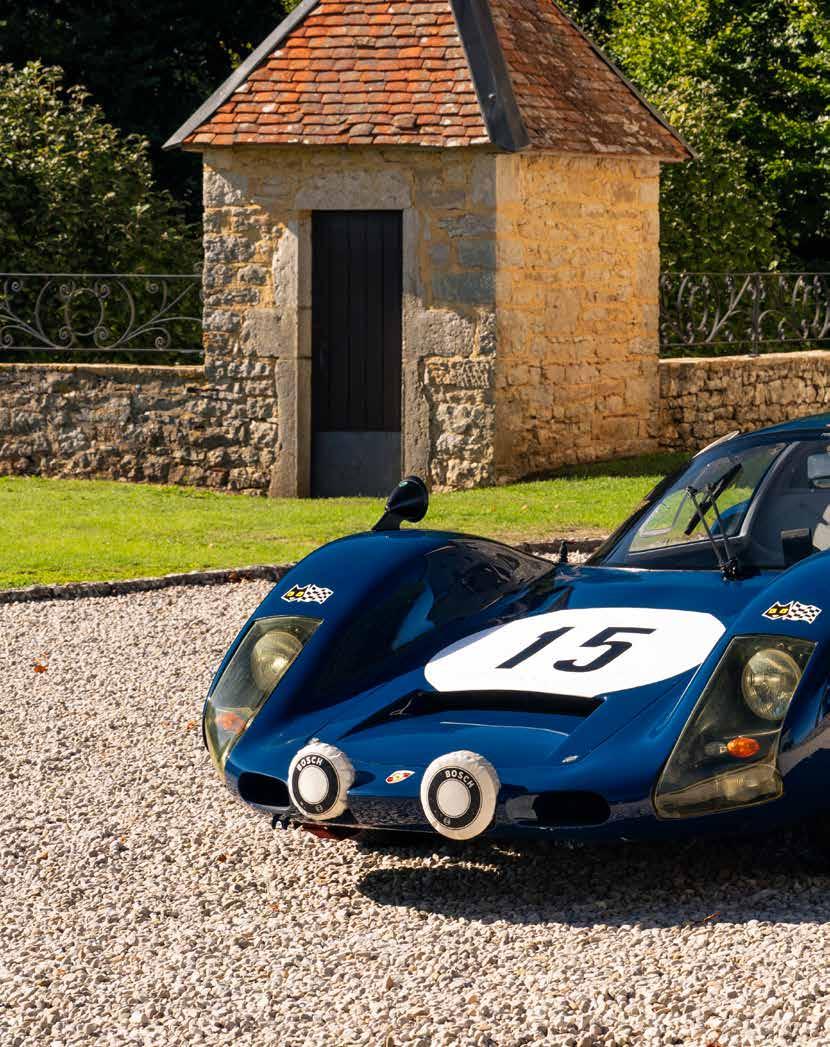
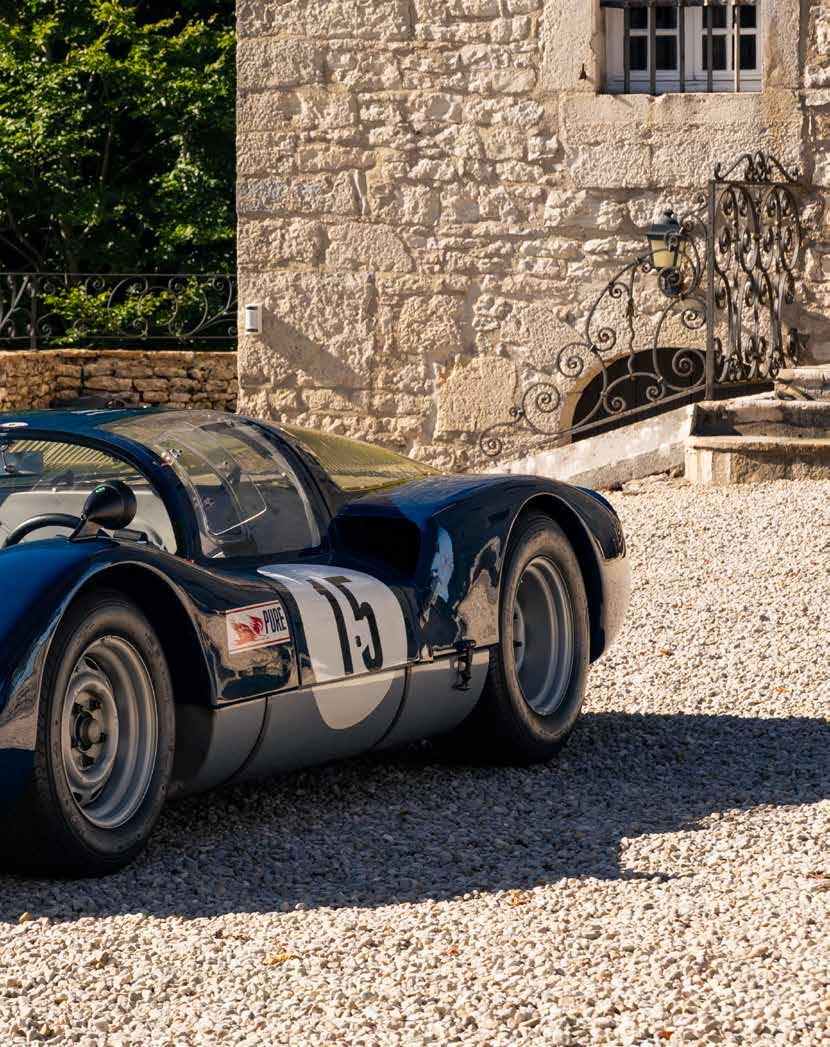


Important Collectors’ Motor Cars
Knokke - Zoute, Belgium I October 12, 2025


Sunday 12 October 2025, 12:00 and 13:00
Knokke - Zoute, Belgium
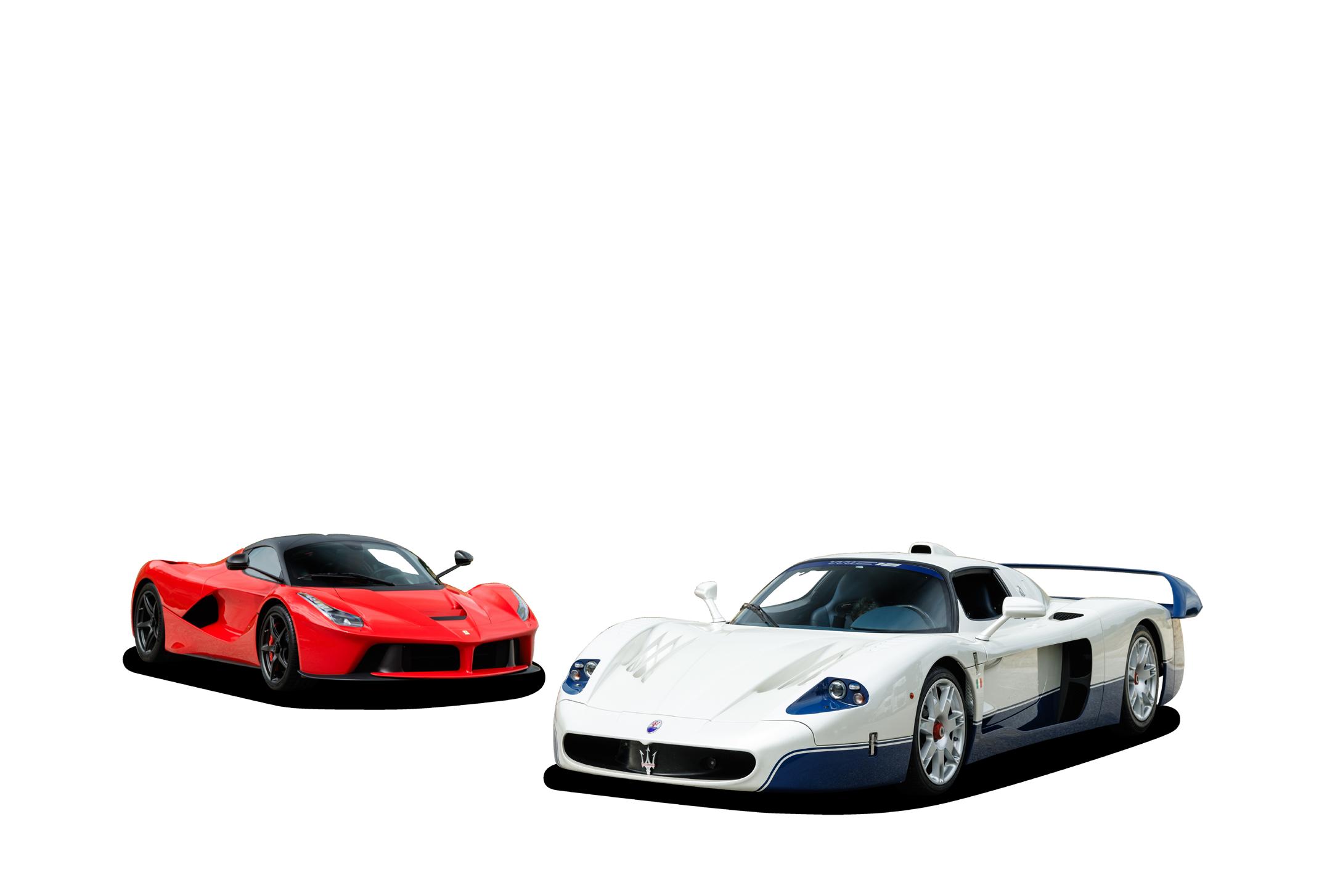
ONDER JURISDICTIE VAN
Mr Alex Dockers
Gerechtsdeurwaarder in Waregem
BONHAMS CSC
Chaussée de Charleroi 89
Brussels, 1060
Bedrijfsregistratienummer
België 841074627
KNOKKE – HET ZOUTE
Albertplein
8300 Knokke, België
VEILINGDATUM & AANVANGSTIJD
zondag 12 oktober 2025
Automobilia, 12.00
Collectiewagens, 13.00
BEZICHTIGING
woensdag 8 oktober 10:00 to 20:00
donderdag 9 oktober, van 10.00 - 18.00 uur
vrijdag 10 oktober, van 10.00 - 20.00 uur
zaterdag 11 oktober, van 09.00 - 19.00 uur
zondag 12 oktober, van 09.00 - 18.00 uur
UNDER THE JURISDICTION OF Mr. Alex Dockers Judicial Officer. in Waregem
BONHAMS CSC
Chaussée de Charleroi 89 Brussels, 1060
Bedrijfsregistratienummer
België 841074627
KNOKKE – HET ZOUTE
Albertplein
8300 Knokke, België
AUCTION DATE AND START TIMES
Sunday 12 October 2025
Automobilia, 12:00 Cars, 13:00
VIEWING
Wednesday 8 October, 10:00 to 20:00
Thursday 9 October, 10:00 to 18:00
Friday 10 October, 10:00 to 20:00
Saturday 11 October, 09:00 to 19:00
Sunday 12 October, From 09:00 to 18:00
CONTACTGEGEVENS TIJDENS DE VEILING
Vanaf maandag 6 oktober tot zondag 12 oktober
+33 (0) 1 42 61 10 11
BELANGRIJK
De verkoop wordt gehouden onderhevig aan de algemene voorwaarden. Wij adviseren potentiële kopers om de “Belangrijke informatie voor kopers en verkopers” te lezen voor informatie over douane, transport en opslag.
VERKOOPNUMMER 31021

CONTACT DETAILS DURING THE SALE PERIOD
From Monday 6 October to Sunday 12 October
+33 (0) 1 42 61 10 11
IMPORTANT
The sale is conducted according to the general conditions printed at the back of this catalogue. We advise potential bidders to familiarise themselves with the “Post Auction Guide and Collections” regarding customs, transport and storage.
SALE NUMBER 31021
www.bonhamscars.com
www.bonhamscars.com Bonhams Cornette de Saint Cyr N° agrément 2007-638
avenue Hoche 75008 Paris +33 (0) 1 42 61 10 11

Whitney Maxwell
Managing Director
New York
English
+1 646 837 8145
whitney.maxwell @bonhamscars.com

Tomas Schultz
Head of Department (EU)
Sweden
Swedish and English
+46 73 665 70 31 tomas.schultz @bonhamscars.com

Gabriel Rapetti
Head of Sale, Paris
France
French and English
+33 661 801 556
gabriel.rapetti @bonhamscars.com

Mike Flewitt
Global Motoring Chairman
London
English mike.flewitt @bonhamscars.com

Matthew Hook Business Director
London
English
+44 20 7393 3913
matthew.hook @bonhamscars.com

Gregor Wenner Senior Specialist Italy and Germany
German, English, Italian, and Dutch +39 333 564 3610 gregor.wenner @bonhamscars.com

Simon Kihlstedt Specialist
Sweden
Swedish, English and Danish +46 70 253 38 14 simon.kihlstedt @bonhamscars.com

James Knight Senior Advisor
London
English +44 20 7447 7440
james.knight @bonhamscars.com

Alex Verstraete Senior Specialist
Belgium
Dutch, French, German, and English
+32 475 64 59 31
alex.verstraete @bonhamscars.com

Loïc Maschi Specialist
France
French and English
+33 1 89 20 04 55
loic.maschi @bonhamscars.com

Jacques Bruyns Specialist Consultant
Belgium
Dutch, French and English
+32 475 74 50 34 jacques.bruyns.consultant @bonhamscars.com

Jonathan Middag Specialist
Netherlands and Germany
Dutch, French, German, and English
+31 6 50 60 77 96 jonathan.middag @bonhamscars.com

Maximilien Gagnebin
Head of Sale, Switzerland
UK and Switzerland
French, German and English +44 7498 961 636 maximilien.gagnebin @bonhamscars.com

Pierre Tirone Specialist
France and Switzerland
French, English, Italian, Spanish, and Dutch
+32 472 35 49 45
pierre.tirone @bonhamscars.com











Operations & Sale Coordination

Stephanie
Paris
French and English
+33 156 791 231
stephanie.pinault@ bonhamscars.com

Catherine Tejada
Los Angeles
English and Spanish
+1 323 436 5468
catherine.tejada @bonhamscars.com

Mark Gold

Jennifer
20 7468 5807
mark.gold @bonhamscars.com

Annika Morrill
+44 20 8963 2817
annika.morrill @bonhamscars.com
jennifer.burns @bonhamscars.com


Katie Barnet

Suzanne Kress
20 3988 6306
katie.barnet @bonhamscars.com Jessica

suzanne.kress @bonhamscars.com
jessica.chavez @bonhamscars.com
14 8344 5495 tom.bibb @bonhamscars.com
Marketing & Communications
Marketing & Communications

Catherine Avrili
London English +44 20 3988 6425
catherine.avrili @bonhamscars.com

Oliver Hughes


Lydie Bastin
646 8378 140
+44 20 3988 6344 oliver.hughes @bonhamscarsonline.com
@bonhams.com
7393 3845
lydie.bastin @bonhamscars.com

Ben Walker
International Dept. Director
London
English +44 20 7468 5858
ben.walker @bonhamscars.com

Toby Wilson
Head of Department
Guildford
English
+44 14 8344 5495
toby.wilson @bonhamscars.com

James Stensel Head of Department
Milton Keynes English +44 20 8963 2818
james.stensel @bonhamscars.com

Adrian Pipiros Specialist Guildford
English +44 14 8344 5494
adrian.pipiros @bonhamscars.com

Bill To
+44 18 6922 9475 bill.to @bonhamscars.com

James Garguilo Specialist Guildford
English +44 14 8344 5496
james.garguilo @bonhamscars.com

Andrew Barrett Specialist
Milton
English +44 18 6922 9476
andrew.barrett@ bonhamscars.com

Kurt Forry Specialist San Francisco
English
+1 717 623 1638
kurt.forry @bonhamscars.com

Harry Taylor
Sale Coordinator
Milton Keynes
English +44 20 3988 6324
harry.taylor@ bonhamscars.com

Estelle Perry Consultant
Paris
French and English estelle.perry @bonhamscars.com
Bonhams|Cars UK
101 New Bond Street
London, W1S 1SR
+44 (0) 20 7468 5801 ukcars@bonhamscars.com
Bonhams Motorcycles
Unit 4 Lakeview Park, Bond Avenue, Bletchley
Milton Keynes, MK1 1FE ukmotorcycles@bonhamscars.com
Automoblia UK
4 Millmead, Guildford GU2 4BE
+44 (0) 1483 445 494 automobilia@bonhamscars.com
Bonhams|Cars and Automoblia Europe
6 Avenue Hoche 75008 Paris
+33 (1) 42 61 10 11
+33 (6) 63 20 76 74 (Automobilia) eucars@bonhamscars.com
Bonhams|Cars West Coast 7601 W Sunset Blvd
Los Angeles, CA 90046
+1 (415) 391 4000 uscars@bonhamscars.com
Bonhams|Cars East Coast
580 Madison Avenue
New York, NY 10022
+1 (212) 461 6514 uscars@bonhamscars.com
Bonhams|Cars Online 38A Innovation Drive
Milton Park, Abingdon Oxfordshire, OX14 4RT 01865 521 088 hello.uk@bonhamscarsonline.com bonhamscarsonline.com
The Auction will be held as a traditional auction with audience space reserved for registered bidders and guests. The Auction will also be streamed online for public viewing.
In most cases, an Estimate is printed beside the Entry. Estimates are only an expression of Bonhams’ opinion made on behalf of the Seller of the range where Bonhams thinks the Hammer Price for the Lot is likely to fall; it is not an Estimate of value. It does not take into account any VAT or Buyer’s Premium payable. Lots can in fact sell for Hammer Prices below and above the Estimate. Any Estimate should not be relied on as an indication of the actual selling price or value of a Lot. Estimates are in the currency of the Sale.
All prospective bidders and buyers are required to register for the sale in order to bid. To register for the sale, please contact paris@bonhams.com / +33 1 42 61 10 10 or visit the sale page via our website www.bonhamscars.com/zoute. Alternatively please follow the instructions on the Bidder Registration Form at the back of the catalogue. Please note that we may require additional bank references in order to complete your registration.
Further to registering in order to bid, you will be required to provide photographic identification (passport or driving licence) and proof of address (utility bill/bank statement). If you wish to register a Company, please submit a certificate of incorporation, showing the company’s full name and registered address; documentary confirmation of each beneficial owner owning 25% or more of the company; the ID documents (driving licence or passport) for the authorised signatory and where the authorised signatory is not a director, a letter on company letterhead confirming the individual’s authority to act.
In Person Bidding: Registered bidders are permitted to bid in person. After registering, you can collect a bidders paddle at our Registration Desk.
Online Bidding: Watch the auction online and submit real time bids from www.bonhamscars.com/zoute

App Bidding: Download now for android and iOS. You will be required to provide a valid credit card in your name which must be verified before you are able to place bids. If you are placing bids on behalf of a company, please ensure you indicate this when registering.
Telephone Bidding: Bid via telephone during the auction with a Bonhams|Cars representative. To ensure availability, telephone bids must be arranged 24 hours prior to the auction. Bonhams|Cars will phone the bidder several lots in advance and will execute bids upon instruction by the bidder.
Absentee Bidding: Bidders may submit an absentee bid, which is the bidder’s maximum bid for a lot. After an Absentee Bid Form is completed in advance of the auction, a Bonhams|Cars’ representative will execute the bid on behalf of the client, buying the lot either under or at the maximum bid and against other bidding and reserves.
Please note Lots marked with this symbol P require special registration formalities. Please see the Lot symbols key for further information.
To reach our Client Services Department for more information and for registration, please call +33 1 42 61 10 10 or email paris@bonhams.com To view the auction live, please
To view the auction live, please go to www.bonhamscars.com/zoute
Buyer’s Premium
Motor Cars, Motorcycles and Child’s cars
Lots 31 - 33 , 34 - 43 & 101 - 175
Bonhams will charge buyers a buyer’s premium of 15% +VAT on the final hammer price
Automobilia
Lots 1 - 30
Bonhams will charge buyers a buyer’s premium of 28% +VAT on the first €40,000 hammer price, then 27% +VAT up to hammer price €800,000 on the total hammer price, then 21% +VAT up to €4,500,000 on the total hammer price and 14,5% +VAT thereafter.
This applies to each lot purchased and is subjected to VAT.
Bidders should note that this sale is expressly held on, and subject to, the Conditions of Sale in the auction catalogue which each bidder, by making a bid, automatically acknowledges that he or she has read, understood and accepted.
Certain symbols are used to denote that additional VAT is due on the hammer price in addition to the buyer’s premium. Please see the Lot Symbols Key for further information.
To submit a claim for refund of VAT, the local authorities require lots to be exported from the country sale within strict deadlines. For lots on which Import VAT has been charged (marked in the catalogue with a * or Ω) lots must be exported within 30 days of Bonhams’ receipt of payment and/or within 90 days of the date of the Sale, whichever is the earlier.
For all other lots, export must take place within 90 days of the sale date.
VAT at the prevailing rate (currently 21%) will be added to the buyer’s premium which will be invoiced on a VAT inclusive basis. If you are planning to export please make the department aware.
Further export costs, duties and VAT may be applicable, depending on the country of destination. The responsibility to meet these charges rest with the buyer.
Any viewer who damages a Lot will be held liable for all damage caused and shall reimburse Bonhams or its agents for all costs and expenses relating to rectification of such damage.
All available history files are accessible for inspection during the view. All available registration documents are held within a separate file at the documents desk during the auction. To view this document please ask a member of staff.
Vehicles are offered with and without keys and documents. It is the buyers responsibility to inspect the lot at the sale to satisfy themselves as to the completeness, integrity and presence of keys, spares and documentation. The catalogue will not necessarily list such items.
We recommend you read carefully the Conditions of Sale printed in this catalogue under which this Sale is conducted.
Bonhams|Cars strongly encourages interested bidders to perform their own due diligence inspecting lots on offer by attending the preview or by scheduling a virtual preview appointment with a specialist. Please contact the department for inquiries and scheduling.
Ω Omega: This Lot is from outside the EU. If this vehicle is to stay in Belguim, it will be subject to Import VAT at the standard rate of 21% and Import Duty at 10%+VAT on the hammer price. Please see the VAT & Lots Under Customs Bond section for further information.
* Asterisk: This Lot is from outside the EU. If this vehicle is to stay in Belguim, it will be subject to Import VAT at the reduced rate of 6% on the hammer price. Please see the VAT & Lots Under Customs Bond section for further information.
† Dagger: Lots offered by a company liable to VAT and will have local VAT being applied on the Hammer Price.
P Purple Paddle Lots / Restricted Bidding:
Please note that special formalities are required should you wish to bid on Lots marked with this symbol P. Contact Client Services at +44 (0) 20 7447 7447 or bids@bonhams.com in advance of the sale. Please also note Online Bidding is not available for these Lots, unless pre approved before the sale, although we are pleased to offer a bidding by telephone service should you wish to bid remotely.
For more information on each lot, please scan the QR code here.
It is of critical importance that you ensure that you have readily available funds to pay the Purchase Price and the Buyer’s Premium (plus VAT and any other charges and Expenses to us) in full before making a bid for the Lot. If you are a successful Bidder, payment will be due to us by 4.30 pm on the second working day after the Sale so that all sums are cleared by the eighth working day after the Sale. Payments made by anyone other than the registered Buyer will not be accepted. Bonhams|Cars reserves the right to vary the terms of payment at any time.
Bonhams’ preferred payment method is by bank transfer. You may electronically transfer funds to our Trust Account. If you do so, please quote your paddle number and invoice number as the reference. Our Trust Account details are as follows:
HSBC
Acc. Name: CORNETTE DE SAINT CYR SA-
HSBC HUB International number : BEMDBK401-012349
Account no.: BEMDBK401-012349-001
IBAN: BE22949123490147
SWIFT/BIC: HSBCBEBB
Please note payments for purchases must be from a bank account in the same name as the registered bidder. Payments from third parties are not accepted.
Purchases will only be released when cleared funds are received.
For all registrable vehicles, please note buyers will not receive the vehicle title at the time of the auction. Bonhams|Cars retains all registration documents to manage and complete the transfer of ownership.
All historical documents and accompanying items will be shipped either with the vehicles or from Bonhams|Cars’ offices.
For general document enquiries and updates please contact: clothilde.duval@bonhamscars.com
Collections
Automobilia
All automobilia can be collected when payment is received after the sale until 12pm Monday 13 October 2025 from the venue.
Thereafter, all lots will be packed and transferred to the PANAME Services Automobilia Storage Facility in Paris.
Administration and uplift from the venue:
€35 + VAT per automobilia lot, capped to €500 + VAT per invoice.
Please note large size automobilia lots marked with ◊◊◊ in the catalogue will be subject to a special uplift fee of €200 + VAT.
Storage charges:
€5 + VAT per automobilia lot per day
€10 + VAT per automobilia lot marked ◊◊◊ per day
Collections from the Automobilia Department will commence from Wednesday 15 October 2025 (during normal office hours).
Payment for storage must be arranged directly with PANAME Services. Anyone wishing to collect an automobilia item from the storage must first call PANAME Services and arrange payment and confirm that PANAME Services have a release from Bonhams|Cars prior to arriving.
Collection by appointment only and at least 24-hours notice must be given.
Contacts: Paname Services
Contact: Nour ou Marie 54 avenue Gaston Monmousseau 93240 Stains France +33 (0)1 84 74 24 00 contact@panameencheres.fr
Motor Cars, Motorcycles and Child Cars
All vehicles must be collected from Bonhams|Cars marquee by 12pm Monday 13 October 2025 when cleared funds are received or on presentation of a proof of payment validated by those responsible for the sale.
Customers must however notify Suzanne Kress BY EMAIL ONLY, suzanne.kress@bonhamscars. comclothilde.duval@bonhamscars.com, no later than 8pm on the day of the sale if they will be collecting their vehicle by 12pm Monday 13 October.
In the absence of customer instructions, all vehicles will be removed to a temporary storage facility in MALDEGEM (9991) by the logistics company EXCLUTRANS B.V at your expense and risk.
The uplift and storage costs, which will be invoiced directly by EXCLUTRANS BV, are outlined on this page. It is strongly advisable that you make contingency arrangements regarding collection in advance of the sale. All storage and removal charges must be paid in full prior to the vehicle’s collection or onward transportation.
Collection is strictly by appointment only and at least 24-hours notice must be given. Anyone wishing to collect a vehicle from the Nice Airport storage must first call EXCLUTRANS BV & arrange payment and confirm that EXCLUTRANS BV have a release from Bonhams|Cars prior to arriving.
Buyers should satisfy themselves that they have collected all relevant registration and log books, documents and keys relating to their Lot(s) at the time of collection. EXCLUTRANS BV, its agents & representatives accept no liability for any loss or damage whatsoever under any circumstances whilst items are in their control.
Administration and uplift from the venue for all vehicles:
€275 + VAT per Motor car
€175 + VAT per motorcycle or child car
Storage charges from Tuesday 14 October to Tuesday 28 October 2025 (14 days)
€30 + VAT per motorcar & per day
€20 + VAT per child car & motorbike
From Wednesday 29 October 2025
€150 + VAT per vehicle & per month
EXCLUTRANS BV
Contact:
EXCLUTRANS BV
Theo Van den Eeckhout Koekoeklaan 43 9991 Maldegem, Belgium +32 9 232 01 71 info@exclutrans.com
For all enquiries relating to Customs, be they administrative or legal, please contact FIBONACCI
Contact: FIBONACCI
Joris Eysermans Schoolstraat 41 2970 Schilde-Antwerp, Belgium
+32 460 96 18 40 office@fibonacci.cars
Insurance after sale
Buyers are reminded that their vehicles are their responsibility from the fall of the auction hammer. It is your responsibility to have adequate insurance cover in place. Neither Bonhams, nor their agents, will be liable for any damage or loss that the lot may suffer from the fall of the auction hammer.
Cars under Customs
Please note that for motor cars subject to the local import tax should they remain in the EU, as Bonhams is the guarantor of the customs duties and taxes clearance, these motor cars cannot be released to the buyer or his transporter immediately after the sale.
Photography
Peter Singhof Mattia Bortoluzzi
Roman Fihurka
Simon Clay
Daniel Zizka
Artus Boutin
Stanislas Dorange
Tomasz Sarna
Francis Vermeulen
Sian Loyson
Mathieu Damiens
Dennis Noten
Noortje Blokland
Alexis Ruben
Rasmus Kristoffersson
Célia Huart
Antonin Vincent Quentin Decorps
Acknowledgements
David Hawtin
Fabio Collina, Archivio Storico Maserati
Jérôme Hervet
Andy Prill
Jacqueline Hervet
Andrea Modena, Fabio Menegon, Ferrari Classiche
Theo Van Eeckhout (Exclutrans)
Joris Eysermans (Fibonacci)
Gert Callewaert
Nicolas Van Frausum
Circuit du Var
Valentin Rossi
Marcel Massini
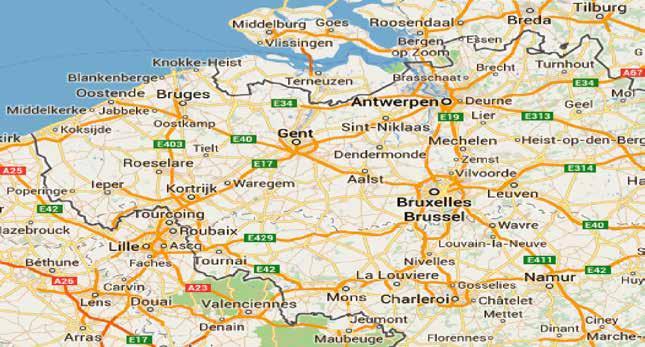

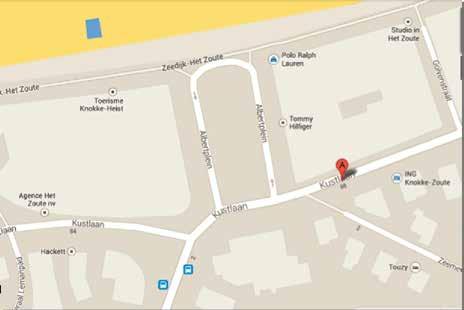
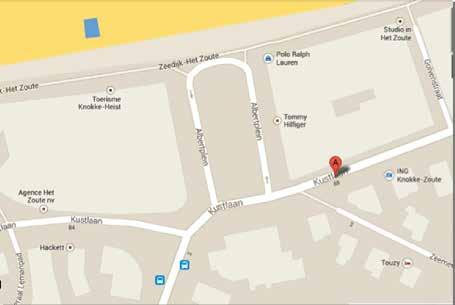

Lots 1 - 30, at 12:00
Further images and information of each lot can be found at bonhamscars.com/zoute or scan the QR code below.

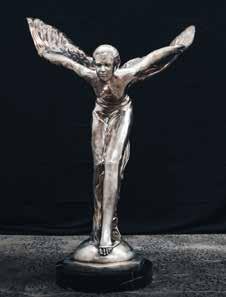
1
USED CAR OK – LIGHT-UP SIGN

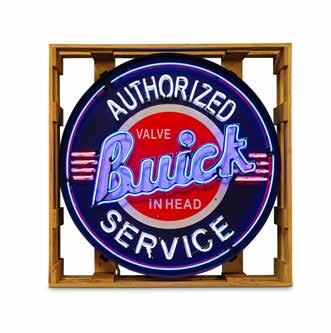
3
Promotional neon sign “Used car OK”, officially licensed product by GM (General Motors).
Contemporary manufacture, with a metal backing and shaped neon tubes for illumination.
Electrical system operates on 220 volts.
Diameter: 90 cm
Delivered in its wooden transport crate.
Crate dimensions: 100 x 100 cm
€1,500 - 2,500
No Reserve
2
Artwork offering an artistic interpretation of the Porsche logo combined with the Martini universe. Signed lower right by Sylvain Binet, official Porsche artist. Created on a rigid aluminum panel, using inks and raised resin applications. Sold with a certificate of authenticity signed by the artist.
Presented in a double frame combining silver metal and wood.
Artwork dimensions: 60 x 60 cm
Framed dimensions: 81 x 81 cm
€1,500 - 2,000
No Reserve


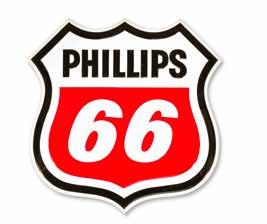
5
Bronze statue inspired by the iconic Spirit of Ecstasy sculpture, originally created by Charles Sykes as the emblematic mascot of RollsRoyce automobiles.
Contemporary fabrication. Mounted on a black marble base.
Height: 140 cm – Depth: 90 cm – Wingspan: 85 cm
– Approximate weight: 100 kg
€7,000 - 10,000
No Reserve
4
Promotional illuminated sign for the Buick automobile brand. Official product under GM (General Motors) license. Contemporary production, featuring a metal backing and shaped neon tubes for lighting. Fitted with a 220-volt electrical system.
Diameter: 90 cm.
Delivered in its wooden transport crate.
Crate dimensions: 100 x 100 cm
€1,500 - 2,500
No Reserve
Volumeter by Bennett, made for the Gulf Oil Company. Restored model in the iconic blue and orange color scheme. Complete with its opaline glass globe and keys.
Equipped with a 220-volt lighting system for both the globe and the front panels. American manufacture, circa 1938. Base, corners, and dome in cast iron, sides in lacquered steel sheet.
Height with globe: 190 cm
€6,000 - 8,000
No Reserve
6
Large promotional illuminated sign for Phillips 66, an American oil company. Shield-shaped sign made of thermoformed plastic, single-sided. 220volt electrical system. Dimensions: 165 x 165 cm.
€2,500 - 3,500
No Reserve
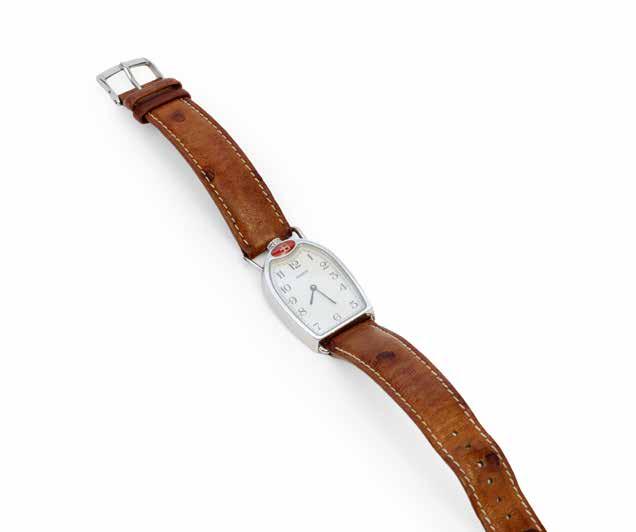
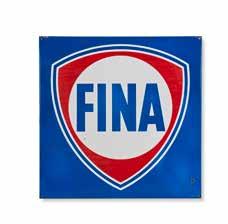
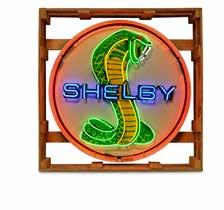
7
BUGATTI, “CALANDRE” WATCH CIRCA 2000

Beautiful stainless steel bracelet watch inspired by the famous horseshoe shape of Bugatti Grand Prix grilles. Asymmetrical case topped with an enamel badge bearing Ettore Bugatti’s initials. Winding crown at noon resembling a radiator cap. Silver dial with guilloché finish. Arabic numerals, glaive-shaped hands, screwed case back. Quartz movement. Ostrich leather strap with steel pin buckle. Dial, case, and movement signed. Numbered specimen A01880, part of a limited edition of 1,999 units.
Dimensions: 24 x 32 mm
€1,000 - 1,200
8
FINA – LARGE ENAMEL SIGN
Large, square, single-sided enamel sign.
Promotional sign for the Belgian oil company Fina – Petrofina, acquired by Total in 1999. Printed by AAF, circa 1960s.
Dimensions: 175 x 175 cm
€1,500 - 2,500 No Reserve
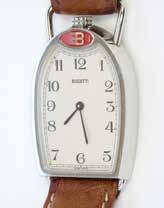
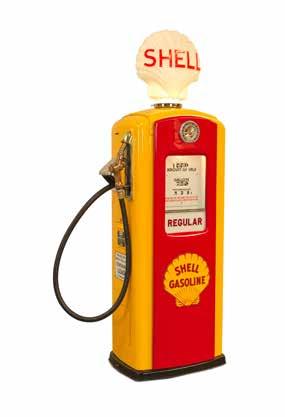
Promotional illuminated sign for Shelby Cobra. Contemporary production, featuring a metal backing and shaped neon tubes for lighting. Fitted with a 220-volt electrical system.
Diameter: 100 cm.
Delivered in its wooden transport crate.
Crate dimensions: 110 x 110 cm
€1,500 - 2,500 No Reserve
10
DATA EAST - CHECKPOINT TURBOBOOST PINBALL MACHINE - 1990
Electronic Data East Pinball Inc Porsche-themed Checkpoint Turbo-Boost pinball machine. Produced in America, dated 1990. Intended for 4 players, with its cash box key. Restored and runs on 220-volt power supply. Height 180 cm -
Length 140 cm - Width 75 cm
€7,000 - 9,000
No Reserve

PEDESTRIAN TRAFFIC LIGHT – WALK / DON’T WALK – 1960s
Pedestrian traffic light of American origin, dating from the 1960s. Three-light model featuring one yellow signal and two illuminated signs: “WALK / DON’T WALK”. Mounted on a cast iron base by Econolite. Electrical system operates on 220 volts. Unrestored.
Height: 220 cm
€1,500 - 2,500
No Reserve
12 ◊◊◊
Bennett volumeter, model 756, manufactured for the Shell Oil Company. Restored gas pump in red and yellow colors, complete with its opaline globe in the shape of a seashell. Equipped with a 220V lighting system for both the globe and front panels. American-made, circa 1950.
Cast iron base, corners, and dome; lacquered sheet steel sides.
Dimensions: 150 x 60 cm
Total height with globe: 195 cm
€6,000 - 8,000
No Reserve
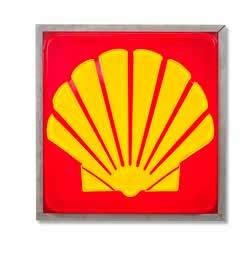
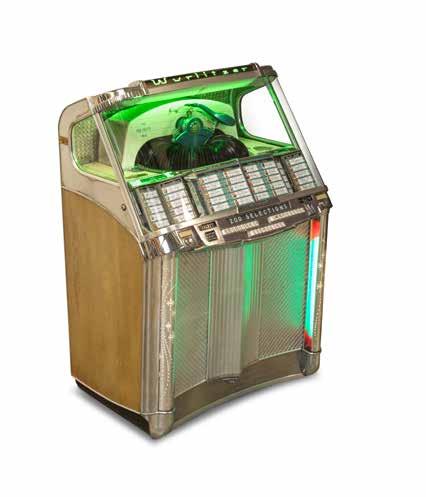
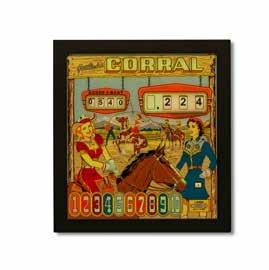
Promotional illuminated Shell sign, based on a design by Raymond Levy, circa 1991. Single-sided thermoformed plastic panel, framed in metal.
Manufactured by Plasti-Line Inc., Knoxville, Tennessee, U.S.A.
Fitted with a 220-volt electrical system.
Dimensions: 91 x 91 cm
€2,000 - 3,000 No Reserve
Rare American jukebox by Wurlitzer, model 2000, known as “The Centennial”. A true icon, it was produced in 4,000 units in 1956 to commemorate the brand’s 100th anniversary. Wood and metal cabinet, chrome finishes, and curved glass front panel. Decorative illuminated features such as backlit glass pilasters and a metal grille. Holds 100 x 45 RPM records, offering up to 200 song selections. Equipped with a rotating title page system allowing the display of a greater number of tracks. Push-button control panel located on the front. This is an unrestored model, sold with invoices for repairs carried out in 2013 (lamp, amplifier, record selector, etc.). Working coin mechanism.
Dimensions: 140 x 85 cm

Considered one of Wurlitzer’s most iconic models of the 1950s, the Centennial 2000 remains highly sought-after by collectors today.
€24,000 - 28,000
Rear glass panel, also known as a backglass, from the iconic “GOLD STAR” pinball machine by the American brand Gottlieb. 220-volt lighting system with dimmer control and remote. Mounted in a wooden frame.
Dimensions: 49 x 54 cm.
€400 - 600 No Reserve
17 ◊◊◊
“Amazon Hunt I” electric pinball machine, first edition by the American brand Gottlieb, produced in only 1,515 units in 1983. An iconic pinball that immerses players in a thrilling adventure through the heart of the Amazon jungle. Designed for 4 players, and comes complete with its coin mechanism key. Good condition and operates on 220 volts.
Dimensions: 180 x 130 x 71 cm.
€4,000 - 7,000


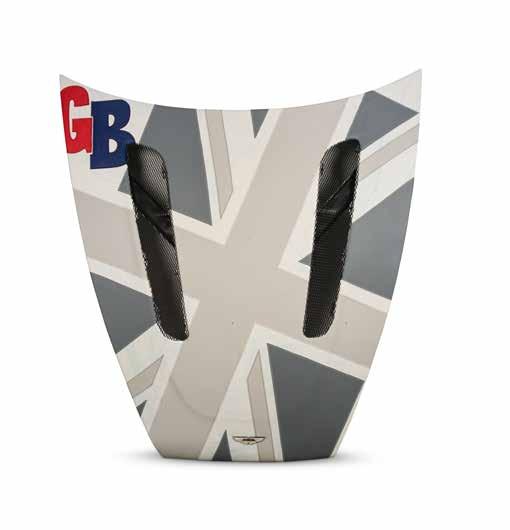
18
MERCEDES-BENZ 300 SLR 1955 –WHITE MARBLE SCULPTURE
1:10 scale sculpture in white Carrara marble, created by artist Nicola Stagetti from Pietrasanta, Italy.
Depicts one of the most expensive cars in the world: the 1955 Mercedes-Benz 300 SLR Uhlenhaut.
Unique piece, carved from a single block of marble.
Sold with the artist’s certificate. Presented in its display case.
Sculpture: 43 x 18 x 12 cm – Display case: 49 x 24 x 16 cm.
€6,000 - 10,000
19
LEATHER-COVERED BONNET BY SKIZO –ASTON MARTIN
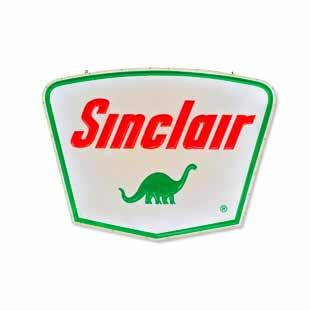
Aston Martin V12 Vantage bonnet “Aston Martin GB”, signed by the artist Skizo, on the back.
Original metal bonnet, painted and covered in white, dark grey, and light grey leather. Enameled Aston Martin badge is repeated on the leather. 140 x 144 cm.
€4,000 - 6,000 No Reserve
20
BALLY PINBALL MACHINE – KISS – 1978
“KISS” electric pinball machine by the American brand Bally, produced by Aucoin in 1978 with the official endorsement of the band KISS. An iconic machine that lets players relive the golden age of the band, a time when hard rock ruled the stage. Designed for 4 players, and comes complete with its coin mechanism key. In good condition and operates on 220 volts.
Dimensions: 190 x 130 x 71 cm.
€8,000 - 12,000
Promotional illuminated sign from the American oil company Sinclair. Shield-shaped sign made of thermoformed plastic with a metal backing, single-sided. 1970s. Neon lighting with a 220volt electrical system.
Dimensions: 123 x 166 cm.
€2,000 - 3,000 No Reserve
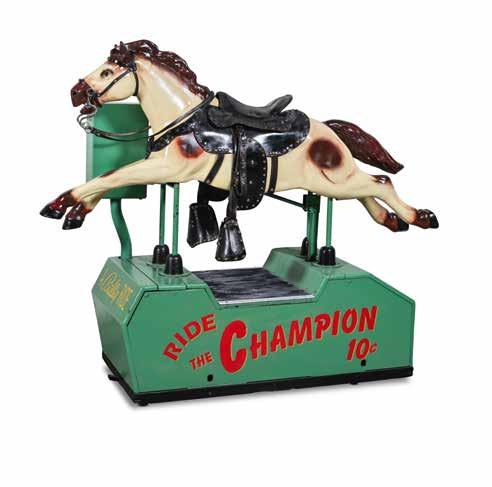
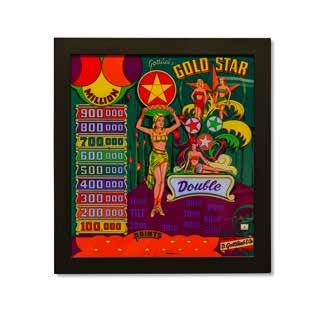
22 ◊◊◊
MECHANICAL HORSE – “RIDE THE CHAMPION” – BALLY, USA – 1952
Coin-operated mechanical kiddie ride, manufactured by Bally Manufacturing Co. in 1952. Inspired by “Champion the Wonder Horse”, the faithful steed of famous cowboy Gene Autry, star of a popular American TV series of the time.

Rear glass panel, also known as a backglass, from the iconic “Corral” pinball machine by the American brand Gottlieb.
220-volt lighting system with dimmer control and remote. Mounted in a wooden frame.
Dimensions: 49 x 54 cm.
Fitted with a genuine black leather saddle and bridle, adorned with round metal studs, as well as a metal bit. Complete with its working coin mechanism and original key. The motor, powered by 220 volts, is housed in a greenpainted metal base.
This type of mechanical horse was typically installed in front of grocery stores or other shops, offering children an imaginary horseback ride.
Dimensions: 180 x 140 cm
€15,000 - 18,000
€400 - 600 No Reserve
24
WURLITZER JUKEBOX – MODEL 800 –1939/1940
American jukebox by Wurlitzer, model 800, manufactured in the United States between 1939 and 1940.
Wood and metal cabinet, chrome accents, and a glass front panel. Two-tone wood veneer with an arched top and an ornate metal grille. Decorative lighting features include backlit amber glass pilasters. Holds 24 x 78 RPM records featuring rock and roll, jazz, and blues. Push-button selection system located on the front panel. Fully functional coin mechanism. Electrical system runs on 220 volts.
Dimensions: 160 x 80 cm
The Model 800 was the first jukebox to feature the famous bubble tubes, known as “Liquid Fire.”
€14,000 - 18,000

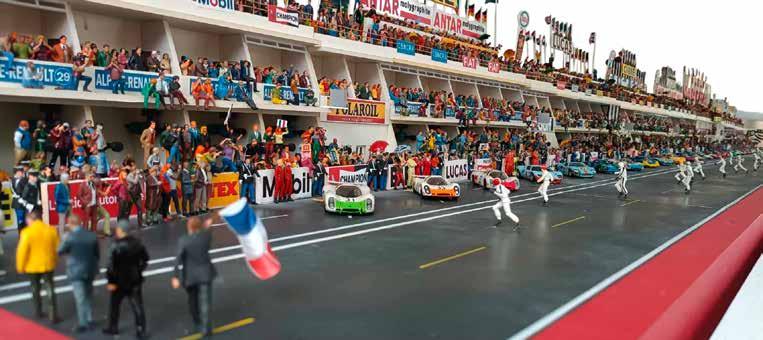
25 ◊◊◊
1968 24 HOURS OF LE MANS START –EXTRA-LARGE DIORAMA
This unique diorama recreates the starting line of the 1968 24 Hours of Le Mans with exceptional scale and accuracy. Built at 1:43 scale, it spans nearly 5 meters and stands out as an extraordinary piece, both in size and in content.
The result of over 1,200 hours of passionate craftsmanship, it brings together the 30 legendary starting cars, their drivers, the pit buildings, and the vibrant atmosphere of the era.
The diorama faithfully reproduces the dramatic “Le Mans-style” start of the 1968 race — with drivers sprinting across the track to their cars — based on official archival documents from the ACO heritage department.
Mounted on a custom base and protected by a presentation display case, it offers an exceptional level of detail.
Model maker Éric Bayez, already acclaimed for his first diorama “The Start of the 1970 24 Hours of Le Mans”, acquired by the Le Mans Museum and exhibited since 2023, presents here an even more spectacular creation. With its realism and immersive energy, this piece takes the viewer straight into the heart of the Le Mans legend.
A masterful work, and a true collector’s piece, destined to join the finest automobilia collections.
Dimensions: 4.90 x 0.70 m
€35,000 - 50,000
26 ◊◊◊
GAS PUMP – FLYING A GASOLINE
Original American gas pump, manufactured for the Flying A Gasoline company, likely intended for use on roads and airfields in California. Unrestored model, featuring two opening panels, both complete with their original keys.
Equipped with a 220-volt lighting system for the top globe and front panels.
Enamelled panels, one marked Bennet, the other Tokheim. Base, corners, and dome are made of cast iron; sides in painted sheet metal.
Height: 160 cm
€4,500 - 6,000 No Reserve
27 PAINTING – ZOUTE GRAND PRIX 2025
A work specially created by the artist to celebrate the 2025 Zoute Grand Prix. The artist explains:”I wanted to create this piece, ‘ Zoute Grand Prix’, inspired by the elegance, prestige, and luxury of the seaside resort of Knokke-Heist and its unique lifestyle.”
Unique piece, signed in the lower right by Sylvain Binet, official Porsche artist.
Created on a rigid aluminium panel, enhanced with textured inks and resins.
Sold with a certificate of authenticity signed by the artist. Presented in a double frame combining silver-toned metal and wood.
Artwork dimensions: 60 x 60 cm
Framed dimensions: 81 x 81 cm
€2,000 - 2,500
No Reserve
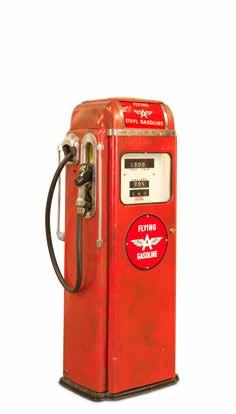

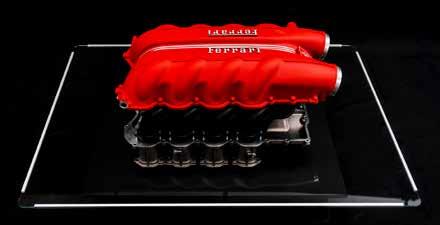

29

30 ◊◊◊
TABLE / ENGINE – FERRARI CALIFORNIA
Coffee table featuring a Ferrari California engine. The engine, stripped of its mechanical components, is artistically integrated at the center of the table and mounted on a black base. Dimensions: 110 x 80 cm.
€5,000 - 7,000
No Reserve
FERRARI – LIMITED EDITION
Colnago Ferrari road bike, produced in a limited edition of only 199 units — this one being number 1, the very first.
This commemorative edition was produced in 2007, marking the 60th anniversary of the iconic Prancing Horse brand. For the occasion, Colnago, in collaboration with Ferrari, created this special edition bicycle.
Carbon frame made in Italy, titanium bottom bracket, Colnago Artemis wheels, hydraulic brakes, Look Kéo Blade carbon pedals, and Prologo carbon saddle. Extremely lightweight, with a total weight of just 7.5 kg.
This high-performance bike is the result of a historic partnership between Ernesto Colnago and Enzo Ferrari, initiated in 1986. Together, they brought Formula 1 technology into cycling — notably the pioneering use of carbon fiber.
An iconic model that combines innovation, Italian design excellence, and motorsport heritage — a must-have for collectors and Ferrari enthusiasts alike.
€10,000 - 15,000
No Reserve
Impressive steel sculpture composed of over 300 mechanical parts from original automotive components, assembled and welded to form the silhouette of a warrior.
Signed by the artist Mister Boy and dated 2004. The sculpture’s body can be dismantled into 7 parts for easier transport.
Dimensions: 240 x 170 cm
€20,000 - 30,000
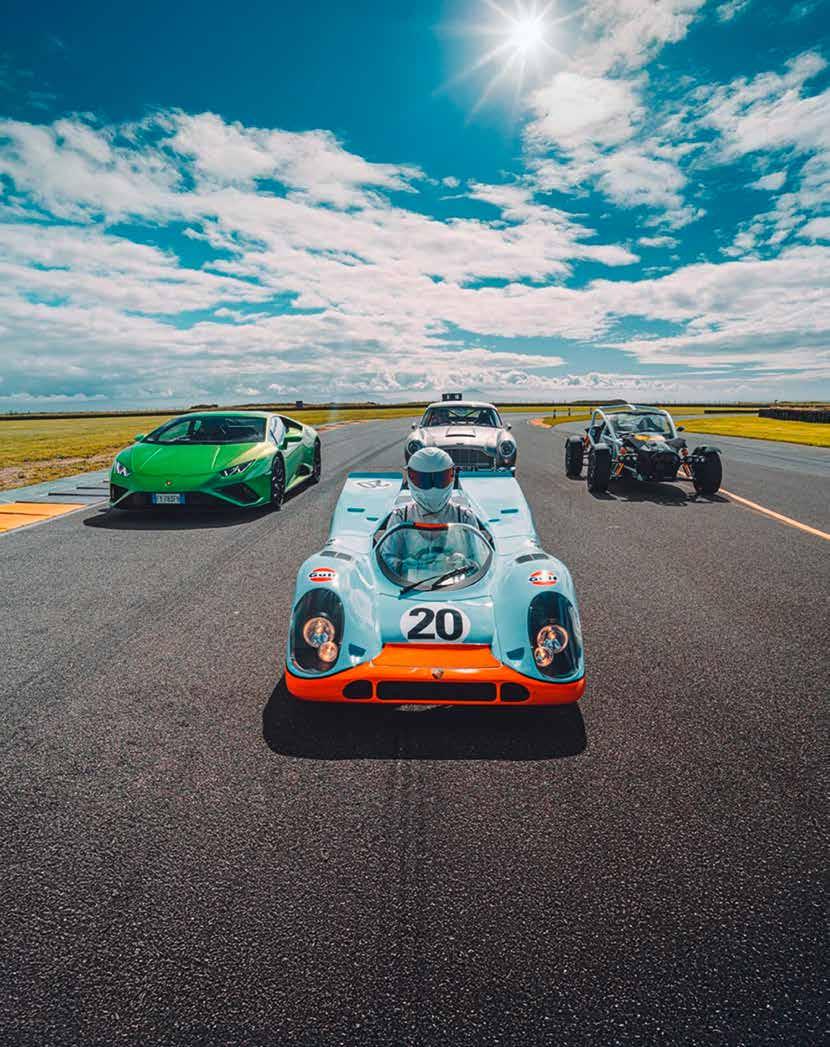
• 9hp petrol engine
• Engine with key-start ignition,
• Fiberglass bodywork
• Hydraulic disc brakes
• Tubular steel chassis
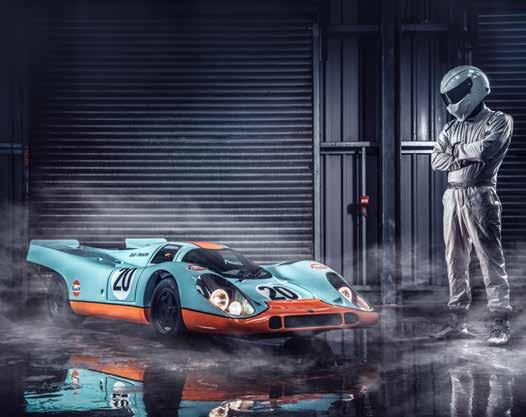

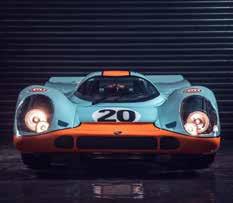
Few cars in history carry the same mythical status as the Porsc he 917K—the machine that dominated Le Mans and cemented itself as one of the greatest racing cars ever built. This extraordinary 72%-scale Porsche 917K Junior replica brings that legend to life in a way no other tribute can.
Developed using a 3D scan of the Le Mans–winning chassis 917.023, this meticulously engineered replica is not just a toy, but a true collector’s piece with genuine provenance. It featured in Top Gear, driven by The Stig himself, and was celebrated in Top Gear’s Speed Week issue, where the magazine hailed it as “the best toy car ever built.”
Beneath its iconic fiberglass bodywork lies real performance: a 9hp petrol engine with key-start ignition, capable of 28 mph. The powder-coated tubular steel chassis is fitted with spring suspension, rack-and-pinion steering, and hydraulic disc brakes serious engineering for a “junior” car.
Measuring 2.6 meters long and 1.6 meters wide, it rides on 10-inch wheels with pneumatic tires and includes a quick-release steering wheel, functional headlights, a rear cooling fan, and a diamondstitched seat pad.
Unlike many juniors, this car isn’t just for show. Designed to accommodate both children and adults, it delivers a thrilling and authentic driving experience—whether enjoyed as the ultimate plaything, displayed as a centerpiece in a collection, or cherished as a conversation piece with undeniable Top Gear provenance.
For the enthusiast, collector, or motorsport aficionado who thought they had everything—this is the one car that proves them wrong.
€20,000 - 30,000 No Reserve
For more information on the Symbol next to the Lot Number, please refer to the Lot Symbols Key at the front of the Catalogue.
• Key-start engine
• Capable of speeds up to 55 km/h
• Limited edition
• Functional dashboard instruments
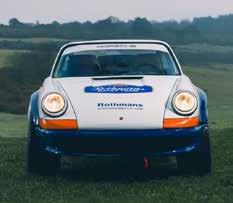

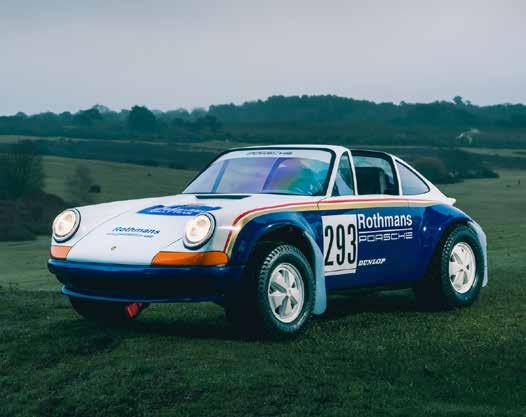
Celebrating Porsche’s historic victory in the 1984 Paris-Dakar Rally, this 911 Dakar Junior is a hand-built, limited-production tribute, finished in the legendary Rothmans livery. A true collector’s item, it blends motorsport heritage, precision engineering, and unmatched exclusivity.
Under the striking bodywork lies a 230cc key-start engine producing 9hp, capable of speeds up to 55 km/h (restrictable). Rack-and-pinion steering, independent wishbone suspension with coil-overs, Brembo hydraulic disc brakes, and a purpose-built chassis ensure that every drive delivers a full-size Porsche experience, simply scaled down. Designed for varied terrain, this car performs as impressively off-road as it does on smooth surfaces.
The cockpit reflects Porsche’s rallying pedigree and luxury standards: twin bucket seats upholstered in Connolly leather with houndstooth inserts, a full set of functional dashboard instruments, and a leathertrimmed Moto-Lita steering wheel. Every detail has been crafted for authenticity, ensuring it is as impressive to display as it is to drive.
Limited edition and highly collectible, this Dakar Junior is suitable for two drivers and represents a rare opportunity to own a functioning homage to one of Porsche’s most iconic triumphs. Whether for display, investment, or exhilarating use, it is a standout piece of motorsport history
Measurements: Length 3.1m – Width 1.62m – Height 1.02m
Weight: 250kg with driver
€20,000 - 30,000
No Reserve
For more information on the Symbol next to the Lot Number, please refer to the Lot Symbols Key at the front of the Catalogue.
A Scaled Tribute to Senna’s Legendary 1988 World Championship Car MP4/4 F1
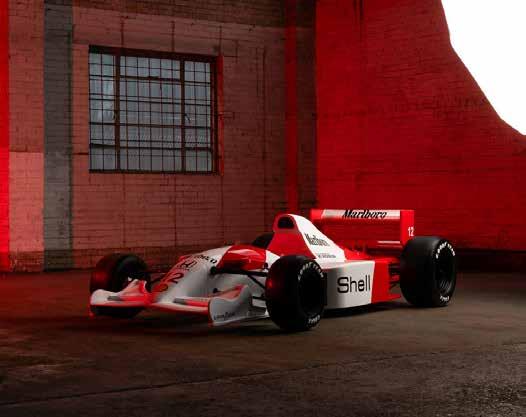
The McLaren MP4/4 is etched into motorsport history as one of the most dominant Formula 1 cars ever built. Driven by Ayrton Senna in his first season with McLaren, the Honda-powered MP4/4 secured all but one race victory and pole position during the 1988 season— cementing Senna’s first of three World Championships and defining the end of F1’s turbo era.
This remarkable junior car is a special commission, faithfully inspired by that legendary machine and engineered to deliver an authentic single-seater experience in scaled form.
Powered by a 230cc key-start engine producing 9hp, it features a 2:1 reduction gearbox, centrifugal clutch, and single-piston disc brake, all integrated into a purpose-built monocoque chassis. F1style suspension has been replicated front and rear, ensuring that this miniature racer handles with genuine precision.
• Powered by a 230cc key-start engine
• Single-piston disc brake
• Monocoque chassis.
• F1 style suspension
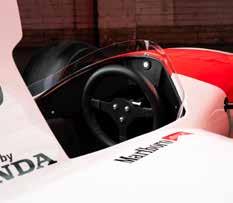
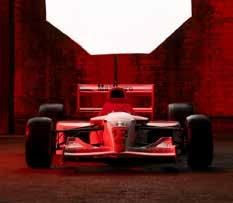
The composite body is finished in a full hand-painted livery, perfectly capturing the iconic look of Senna’s 1988 championship-winning machine. Purpose-built slick tyres—10” at the front and 12” at the rear—deliver grip straight from cold, with no need for warming blankets. Despite being scaled down, every element has been developed with durability, reliability, and driveability in mind.
Measuring 3.1m in length, 1.62m in width, and 1.02m in height, and weighing approximately 250kg with driver, the MP4/4 Junior is suitable for both children from 5 years old and adults alike.
This is more than a toy—it is a meticulously engineered tribute to one of Formula 1’s greatest cars, offering collectors and enthusiasts the rare chance to experience a piece of motorsport history in an entirely unique way
€30,000 - 40,000
No Reserve
For more information on the Symbol next to the Lot Number, please refer to the Lot Symbols Key at the front of the Catalogue.
Effectively ‘as new’
Frame no. Z50J-2601915
Engine no. Z50JE-2301962
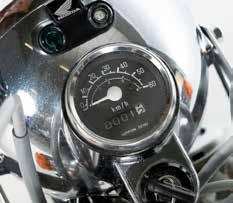


An important milestone in Monkey Bike development was reached in 1974 with the launch of the Honda Z50J, which featured front and rear suspension like a ‘proper’ motorcycle while retaining the overheadcamshaft engine and 8” wheels, first seen on the Z50A respectively.
In 1978 the Z50J Monkey was heavily revised with a larger fuel tank (9 liters), 12-volt CDI ignition, a manual clutch, and a four-speed gearbox, becoming the more aggressive looking ‘Gorilla’. Immensely popular as paddock transport the world over, Monkeys are currently much in vogue.
With Honda in Japan ceasing production of the existing Monkey and Gorilla in 2007, pending the arrival of new fuel-injected models for 2009, original examples of these charismatic little machines can only become increasingly collectible. A collector’s item, this Z50J Gorilla Limited Edition Spring Collection is one of only 3,500 built in 1999 for the Japanese market only.
The Gorilla offered here is still factory fresh and has never been fuelled, which makes it extremely rare and all the more collectible. The machine comes with all its original manuals, mirrors and sales advertising as delivered from Honda to the dealers at the time. Comes with Japanese export documents and taxes in the EU have been paid.
€9,000 - 10,000 No Reserve
Frame no. Z50J-2501311
Engine no. Z50JE-2056967
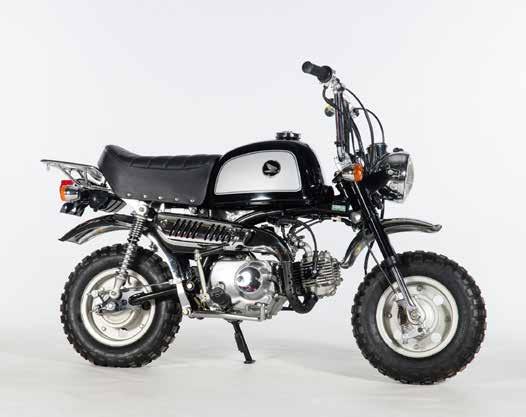

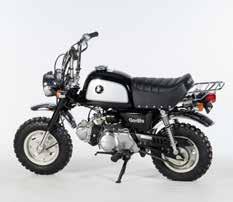
An important milestone in Monkey Bike development was reached in 1974 with the launch of the Honda Z50J, which featured front and rear suspension like a ‘proper’ motorcycle while retaining the overhead-camshaft engine and 8” wheels, first seen on the Z50A.
In 1978 the Z50J Monkey was heavily revised with a larger fuel tank (9 Litres), 12-volt CDI ignition, a manual clutch, and a four-speed gearbox, becoming the more aggressive looking ‘Gorilla’. Immensely popular as paddock transport the world over, Monkeys are currently much in vogue.
With Honda in Japan ceasing production of the existing Monkey and Gorilla in 2007, pending the arrival of new fuel-injected models for 2009, original examples of these charismatic little machines can only become increasingly collectible.
A collector’s item, this Z50J Gorilla Edition is one built in 1998 for the Japanese market only. The Gorilla is still factory fresh and has never been fuelled, which makes it exceptionally rare and all the more collectible. Comes with Japanese export documents and taxes in the EU have been paid.
€9,000 - 10,000 No Reserve
Only 200 kilometres recorded from new 2000 HONDA MONKEY Z50 ‘MILLENNIUM’
Frame no. AB27-1005153
Engine no. AB27E-1005125

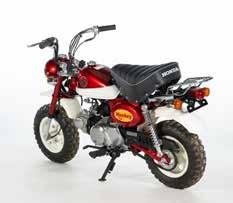
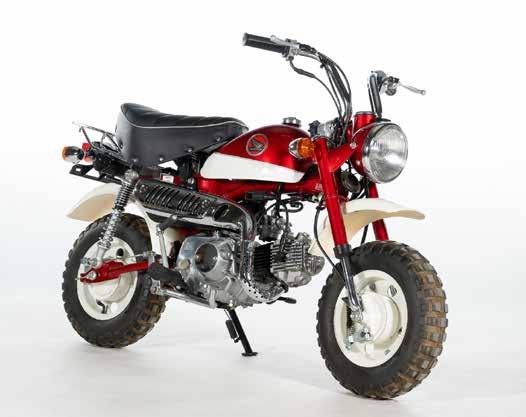
With the launch of the Z100 in 1961, Honda created the class of motorcycle known as ‘Monkey Bikes’, so called because of their diminutive stature. They were originally intended for children to ride at amusement parks, and only later did Honda develop a road-going version CZ100.
The engine was the C100 step-thru moped’s reliable four-stroke single, while an ultra-short wheelbase, 5” wheels and a lack of suspension were all features of a machine which, in the case of the folding handlebar version, could be fitted into the boot of a car.
The Monkey Bike was soon attracting the attention of collectors worldwide, and Honda was not slow to cash in on enthusiasts’ passion for these charming little machines by introducing a succession of limited edition models.
The machine offered here is an example of the rare, limited edition Millennium model, only 3,000 of which were built in the year 2000. Unrestored and described by the vendor as in ‘as new’ condition, having covered only 200 kilometres, this highly collectible Millennium is a must-have for every serious Monkey collector. Tool kit included. Comes with Japanese export documents and taxes in the EU have been paid.
€8,000 - 9,000 No Reserve
Only 27 kilometres recorded from new 1995 HONDA Z50J MONKEY
Frame no. to be advised
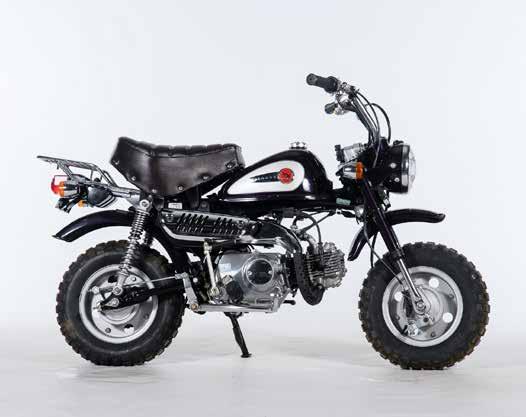
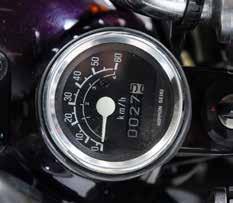
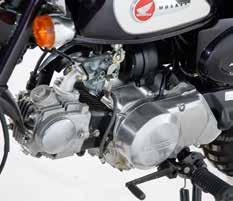
No class of motorcycles is more collectible than Japanese mini-bikes, particularly those of the Honda ‘Monkey Bike’ family, which have been highly prized since the original Z100’s arrival back in 1961. With the launch of the Z100, Honda created the class of motorcycle known as ‘Monkey Bikes’, so called because of their diminutive stature. They were originally intended for children to ride at amusement parks, and only later did Honda develop a road-going version.
The engine was the C100 step-thru moped’s reliable four-stroke single, while an ultra-short wheelbase, 5” wheels and a lack of suspension were all features of a machine which, in the case of the folding handlebar version, could be fitted into the boot of a car.
Offered here is an example of the rare and collectible 1995-series Honda Z50J Monkey ‘Deep Purple’, a quite rare edition built solely for the Japanese market and never sold abroad.
We have been advised by the vendor that the machine is completely original and in effectively ‘as new’ condition since it has covered only 27 kilometres since 1995. A ‘must have’ for the serious mini-bike collector. Tool kit included. Comes with Japanese export documents and taxes in the EU have been paid.
€6,000 - 7,000 No Reserve
Frame no. AB27-1500632
Engine no. AB27E-1200708


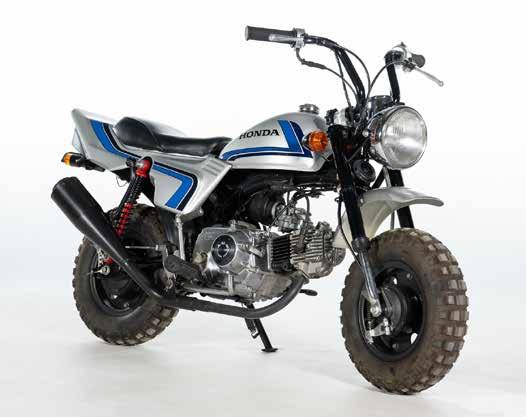
Launched in Japan in 1961, and exported widely from the mid1960s onwards, the ‘Monkey Bike’ was soon attracting the attention of collectors worldwide, and Honda was not slow to cash in on enthusiasts’ passion for these charming little machines by introducing a succession of limited edition models.
The machine offered here is an example of the rare, limited edition ‘Freddie Spencer’ model, only 2,500 of which were built. The Freddie Spencer was named in honour of the eponymous American motorcycle racer and three-time World Champion for Honda, who secured his first world title (in the 500cc class) in 1983, his second year in the competition.
He was World Champion again in the 500cc category in 1985 and took the 250cc crown that same year, the last occasion that a single rider has won more than one World Championship in a given year. Spencer also won the prestigious Daytona 200 in 1985, and the Monkey’s colour scheme echoes that of his winning Honda CB750F.
Unrestored and described by the vendor as in very good condition, having covered only 942 kilometres from new, this highly collectible ‘Monkey’ is offered with a very rare ‘Special Monkey’ body kit produced by Takegawa and Kitaco in Japan. Comes with Japanese export documents and taxes in the EU have been paid.
€6,000 - 7,000 No Reserve
Frame no. AR02-1000691

Launched in 2004 by Honda Racing Corporation as a modern tribute to the celebrated RC110 of 1962, the Dream 50R is today regarded as one of the most desirable small-capacity racers ever offered by the factory. Intended solely for closed-circuit use, it was never roadlegal and was produced in very limited numbers. For many years it was assumed that only 440 had been built, but frame numbers such as this one’s – AR02-1000691 – would appear to demonstrate that production extended much further, with the actual total believed to be close to 1,000 units worldwide.
This particular machine is especially noteworthy. Delivered new for the Japanese domestic market, it carries its original Japanese decals and equipment, distinguishing it from the more commonly seen export versions. Even more remarkable, it has never been started. Upon completion at the factory it was placed into storage, where it has remained untouched ever since.
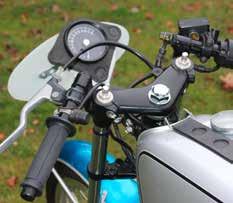

As a consequence, this motorcycle is presented today in genuine ‘time-capsule’ condition. Light surface oxidation is visible on several metal components, not as the result of wear but as evidence of its untouched originality and years in careful storage. Collectors prize such authenticity, which serves as a guarantee that nothing has been disturbed or altered since this Dream left HRC’s hands.
Technical details remain as delivered: a jewel-like 49cc DOHC four-valve single capable of astonishing revs; six-speed gearbox; disc brakes front and rear; 18” wire-spoked wheels; clip-on handlebars; and rearset footrests. At barely 71kg dry, the Dream 50R embodies the spirit of Honda’s golden era of lightweight racing machines.
In short: this is not merely another Dream 50R; with its untouched status, original Japanese-market specification and frame number firmly within the upper production range, it represents an exceptional opportunity to acquire one of the most exclusive small-capacity Hondas ever offered at auction.
€10,000 - 13,000 No Reserve
Frame no. VM1T038156(01)
Engine no. VM1T038156(01)
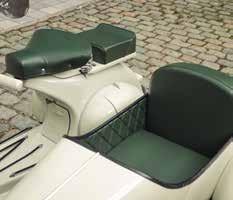
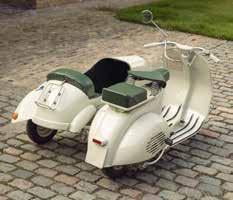
• Desirable early Faro Basso model
• Rare matching scooter/sidecar combination
• Engine and transmission rebuilt in 2018 (bills available)
• Virtually impossible to find in this stunning condition
• Comes with Belgium registration documents

Along with the rival Lambretta, the Piaggio-built Vespa mobilised an entire generation of Italians in the immediate post-war years; the hitherto humble scooter going on to become part of youth culture in the 1960s as favourite transport of the fashion conscious Mods. The name ‘Vespa’ (wasp) is said to have been inspired by the buzzing sound made by its single-cylinder two-stroke engine. “Just like Henry Ford put the workers on wheels in America,” company boss Enrico Piaggio told Newsweek, “we put automotive transport within the reach of people who never expected to travel that way.”
The first step towards the Vespa was taken in 1944 when Piaggio engineers Renzo Spolti and Vittorio Casini designed a motorcycle with enclosed bodywork: the MP5. Disappointed with the result, Enrico Piaggio commissioned aeronautical engineer Corradino D’Ascanio to come up with something better. That something was the Vespa.
A patent for the design was filed in 1946 and the first 13 examples were completed soon after, exhibiting aeronautical influence in the form of monocoque body construction, which was perhaps not so surprising given its designer’s background and the fact that Piaggio’s pre-war business had been the manufacture of aircraft and aero engines.
D’Ascanio hated motorcycles, believing them to be bulky, dirty, and unreliable, and his solution to Piaggio’s design brief represented what would now be termed ‘Blue Sky’ thinking.
Since its introduction in 1946, millions have been made and countless different versions come and gone, yet the Vespa of today remains recognisably related to the first one made some 70 years ago. Classic? Most definitely.
This Vespa Faro Basso (low headlight) model is the same as that used in the 1953 movie Roman Holiday starring Audrey Hepburn and Gregory Peck, which brought the Vespa scooter - hitherto little known outside its native Italy - to the attention of a wider world. This model has partly aluminium bodywork, unlike later Vespas.
This rare and beautifully presented Vespa scooter benefits from a comprehensive overhaul of the engine and transmission, undertaken in 2018, and as a result is said to be in excellent condition and very nice to ride. The matching sidecar too is described as in excellent condition. Such a combination is extremely rare and virtually impossible to find in this stunning condition. Homologated for use on the road, this charming early Vespa is offered with an original tool kit and invoices relating to the aforementioned rebuild totalling over €2,750.
€20,000 - 25,000
No Reserve
Only 80 kilometres recorded from new 1986 BMW R80 G/S PARIS-DAKAR
Frame no. 6297125
Engine no. 04860290
• Delivered new in Italy
• Kept indoors as a work of art
• Currently resident in Belgium
• Confirmed as a genuine Paris-Dakar model by BMW
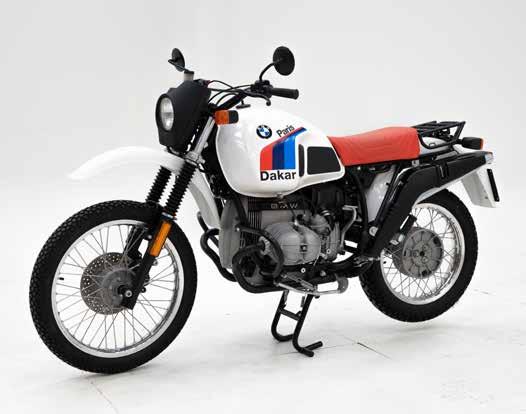
A unique offer, this BMW R80 G/S Paris-Dakar is effectively brand new, with only dealer ‘mileage’ recorded, and has been autographed by the Belgian World Champion, Gaston Rahier, winner of the ParisDakar Rally for BMW in 1984 and 1985. BMW’s first ‘R80’, the R80/7, was introduced in 1977. Like its R75/7 predecessor, the R80/7 was powered by BMW’s traditional air-cooled flat-twin engine coupled to low-maintenance, shaft-drive transmission. Recognising the increasing demand for off-road-styled models, BMW re-entered the ISDT in 1979 as a means of publicising its forthcoming range of enduro roadsters. The first of these, the R80 G/S, was announced in September 1980 Based on the equivalent R80/7 roadster, the G/S featured a 21” front wheel; raised mudguards; a high-level exhaust system; a skid plate under the crankcase; and a single-sided ‘monolever’ swinging arm. The R80 G/S is historically significant as the first model to use BMW’s monolever rear suspension system, in which the driveshaft tunnel also functioned as a single-sided swinging arm, resulting in a lighter construction and making changing the rear wheel easier.
Strikingly finished in white with an orange seat, the stock R80 G/S was too heavy for serious rough stuff but nevertheless excelled as a longdistance tourer, a market sector that its successors dominate to this today. BMW positioned the model as a ‘Reise-enduro’ (travel enduro): an all-terrain motorcycle with excellent touring capabilities; indeed, the designation G/S stands for Gelände/Straße, meaning off-road/road.
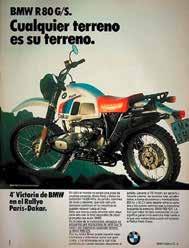


Although the R80 G/S was not intended as a competition motorcycle for enduro racing, modified versions won the arduous Paris-Dakar Rally in 1981, 1983 and 1984, and to cash in on these successes, in 1984 BMW launched the R80 G/S Paris-Dakar model, as seen here. The most striking feature of the Paris-Dakar variant was its enormous 32-litre fuel tank, while other special features included a single seat, a rear luggage grid and ‘Paris-Dakar’ graphics.
With only 80 kilometres on the odometer, this BMW R80 G/S, despite being nearly 40 years old, is still in factory-fresh condition. It was delivered new in Italy, where the first owner parked it in his living room. (The original documents are on file.) The second owner did the same, and applied a preserving treatment to the exhaust so that it would keep its shine. He too kept the bike as an art object but had it registered. Later, the BMW was sold to Belgium, where it has not yet been registered. It comes with an original (unused) service booklet and a second set of keys. BMW Classic has confirmed that this is an original Paris-Dakar edition (certificate on file). A new battery has been fitted and the vendor advises us that the machine is roadworthy, although, of course, the original tyres will need to be changed before use. A remarkable motorcycle that has spent virtually its entire life displayed as a work of art.
€30,000 - 35,000
Only 9,500km recorded from new 2000 APRILIA 997CC RSV MILLE SP
Frame no. ZD4MED000XS000070
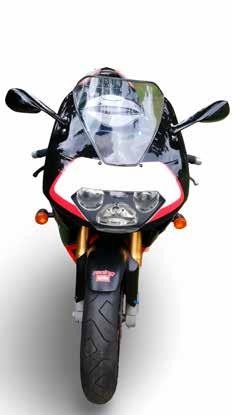
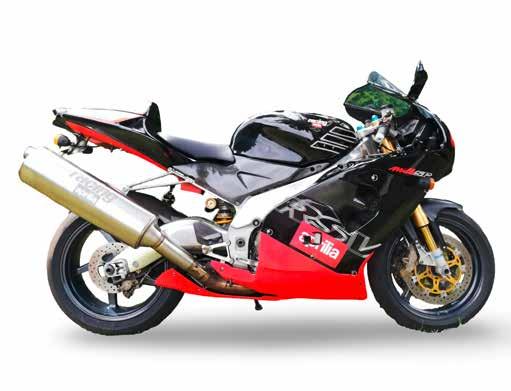
Developed to homologate Aprilia’s RSV Mille for World Superbike competition, the limited-production RSV Mille SP (Sport Production) was a significant step up from the standard road bike. At its heart was a specially developed version of the 60° Rotax V-twin engine, featuring revised magnesium cases, shorter stroke, larger valves, and twin injectors per cylinder – all designed to offer greater tuning potential for race use.
The SP’s chassis specification was equally focused: a lightweight aluminium twin-spar frame, fully adjustable Öhlins suspension, and Brembo Gold Line brakes ensured that it handled with the precision expected of a top-tier homologation special. Carbon-fibre bodywork and magnesium engine covers further helped reduce weight.
Just 150 examples of the RSV Mille SP were built to satisfy the homologation requirements, making it one of the rarest superbikes of its era – a true rival to the Ducati 996 SPS and Honda RC45, and considerably more exclusive.
The example offered here is number 70 of the 150 believed built. At the time of cataloguing, it had covered just 9,636 kilometres from new. It is offered with its keys, owner’s manual and warranty/service book, German Fahrzeugbrief, and assorted paperwork.
Seldom seen on the open market, the RSV Mille SP represents a compelling opportunity for collectors of rare homologation specials – a high-spec, low-production superbike with a focused, race-bred specification and enduring appeal.
€20,000 - 25,000 No Reserve
Hallyday
Frame no. 56KTHAAA0G3341078
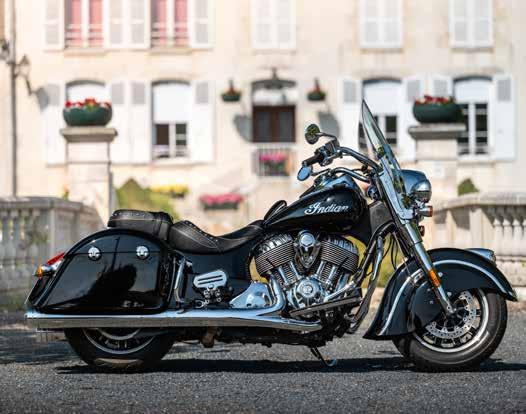
Among the world’s oldest motorcycle makers, Indian has carved out a prime spot for itself in the industry and in American culture, despite a particularly turbulent history over the years. A serious contender to Harley Davidson, the brand with the Indian head logo stood out thanks to the manufacturing standards of its motorcycles, and the latest models, since it was purchased by Polaris in 2011, are no exception to the rule. The Indian Springfield is inspired by 1950s styling blended with 21st Century technology. It features the 1811cc Thunderstroke 111, which delivers 14.1 Mkg at 2600 RPM, all enhanced by pneumatic suspension, ABS, cruise control, keyless ignition, etc.
As told to Pierre Billon in his book Johnny Hallyday on the Road, in 2016, Johnny Hallyday wanted to take a motorcycle road trip on the famed Route 66. He turned to Harley Davidson to discuss a commercial partnership, but the brand declined as they were seeking to appeal to a younger audience. It was thus Indian that was chosen to carry the singer across the United States.
• Loaned to the singer by Indian Paris in 2016
• Kept at his estate in Marne La Coquette
• Only one owner since Johnny Hallyday
• Under 21,000 kilometres recorded
• Logbooks and invoices available from new

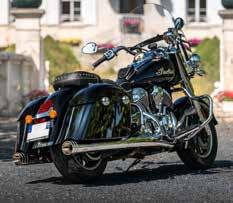
In July 2016, motorcycle number 56KTHAAA0G3341078 was entrusted by Indian-Victory Paris, Avenue de la Grande Armée, to Johnny Hallyday. He used it for a few months in preparation for his American road trip, where he received the same model, this time loaned by Indian US, from 13th to 26th September of the same year. This would be the artist’s final road trip, as he passed away on 5th December 2017.
Sold on 28th September 2016 to its current owner, the motorcycle had just a few hundred kilometres on the clock. Since then, it has been serviced regularly at Indian Paris with meticulous care, as evidenced by its properly completed logbook. The exhaust silencers have since been replaced, again by Indian and with an invoice, by a model with electronic valves from Dr. Jekill and Mr Hyde, and in the same way, the air filter was replaced by a sports model, also by Indian. The motorcycle comes with the original parts.
With under 21,000km on the clock today, this Indian presents beautifully and will be sold with all its original documentation. Above all, it is one of the last motorcycles to have been ridden by Johnny Hallyday, and there are still photos of it at his Marne la Coquette estate.
€30,000 - 50,000 No Reserve
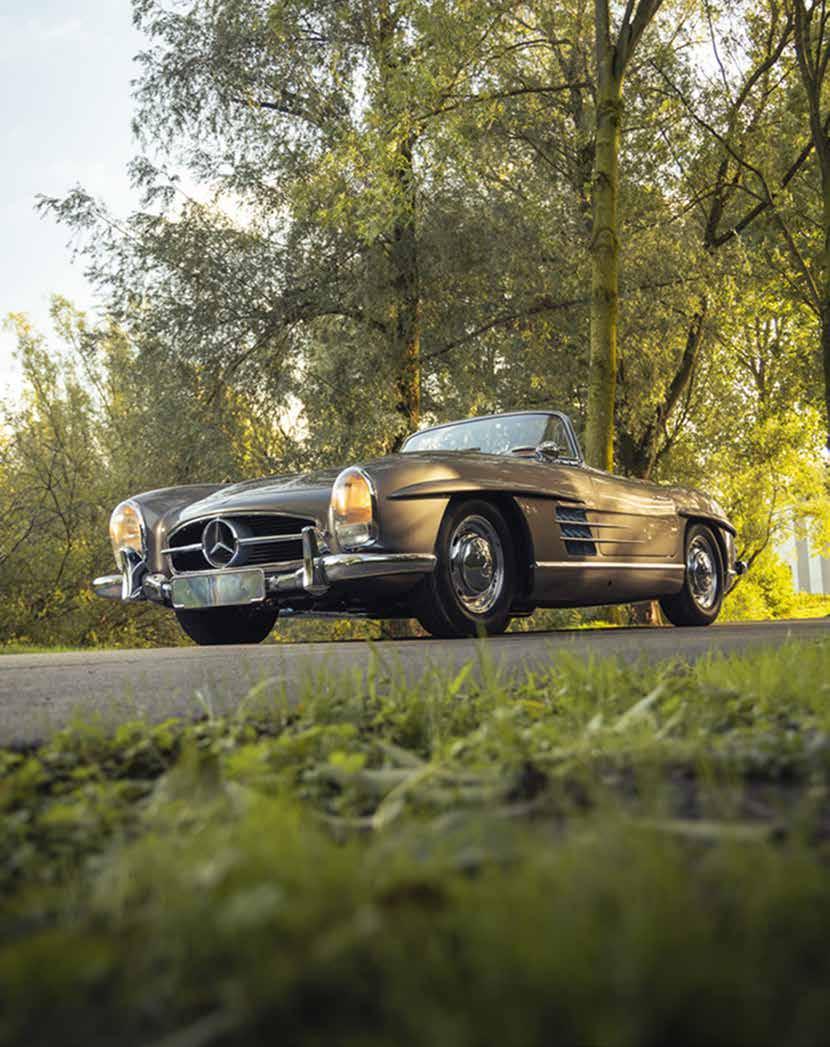
Lots 100 - 175, at 13:00
Further images and information of each lot can be found at bonhamscars.com/zoute or scan the QR code below.
Offered for sale in aid of the Heads Up Fund for Brain Tumour Research
2025 MICROLINO ELECTRIC BUBBLECAR
Chassis no. to be advised
• Unique model paying tribute to Peyo's Smurfs
• New and unregistered
• Manufactured in Europe
• Accommodates two adults plus luggage
• Up to 177 kilometres range
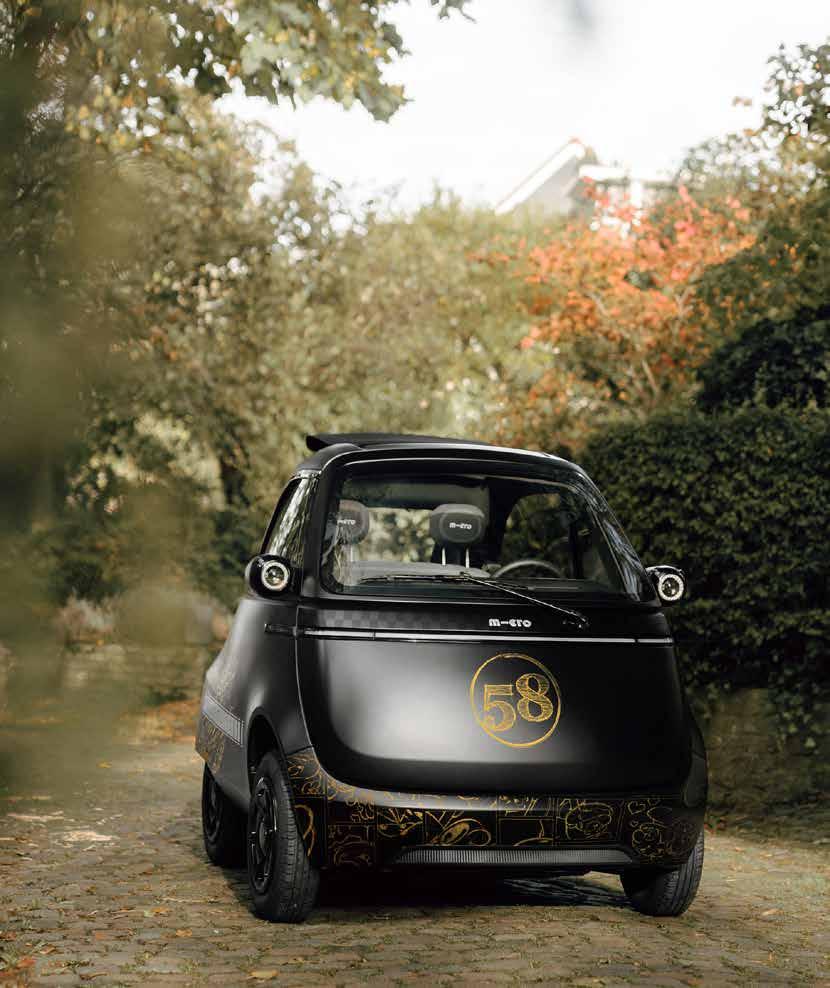
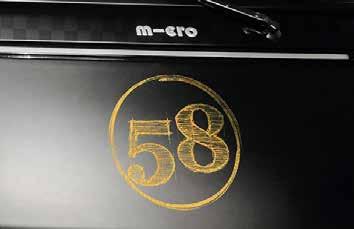
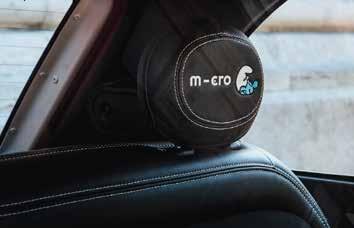
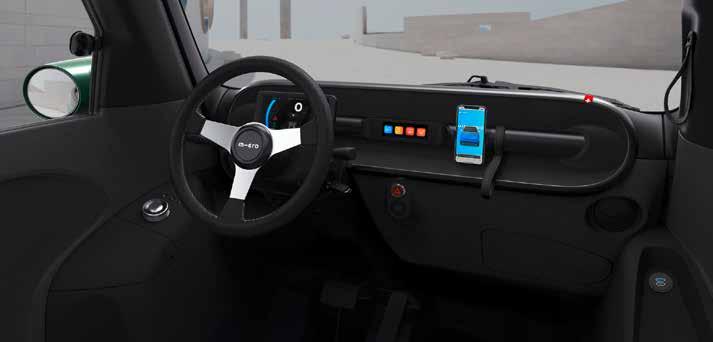
An urban icon signed by a master's hand - that of Peyo, creator of the beloved Smurfs - this is a brand new car offered by the importer of Microlino in Belgium . When Swiss engineering meets the graphic poetry of Belgian comics, the result is as surprising as it is exceptional: a Microlino fully customized in the spirit of Peyo's universe.
Inspired by the iconic microcars of the 1950s and first seen at the Geneva Motor Show in 2016, the Microlino embodies a modern and sustainable vision of urban mobility: compact, electric, elegant, and eco-conscious. Designed by Swiss company Micro Mobility Systems and exclusively distributed in Belgium by D'Ieteren, the Microlino stands out with its rounded silhouette, signature front-opening door, and a range of up to 228 kilometres depending on the battery. Manufactured in Europe with a steel chassis and aluminium body, this retro-designed city car - valued at €25,000 - offers a driving experience that is as unique as it is efficient.
Available as either a light or heavy quadricycle, the Microlino can be charged with either a household or Type 2 connector. The 12.5kW (17hp) electric motor is mounted at the rear and there is a choice of batteries in three different capacities giving ranges of 91km, 177km, and 228km respectively.
The Microlino seats two adults and has 230 litres of luggage space. Top speed is 90km/h.
For this exclusive edition, the Microlino becomes a canvas for the timeless universe of Peyo. This unique model pays tribute to the Smurfs through an artistic design blending humour, tenderness, and nostalgia. A true one-of-a-kind work of art on wheels, it symbolizes the meeting point between popular imagination and technological innovation.
All proceeds from the sale will go directly to the Heads Up Fund for Brain Tumour Research based in Ghent, Belgium, which actively supports research into brain tumours, particularly among young people. Through this charitable initiative, the Zoute Grand Prix, Bonhams, D'Ieteren, and the Smurfs come together to show that art, mobility, and social commitment can move forward hand in hand.
€18,000 - 20,000
No Reserve
Please kindly note this lot will be subject to VAT as this a new car, please refer to your local tax authorities.
Chassis no. MA2S4244258
Engine no. 9FA-SA-H2331
Body no. FE623954
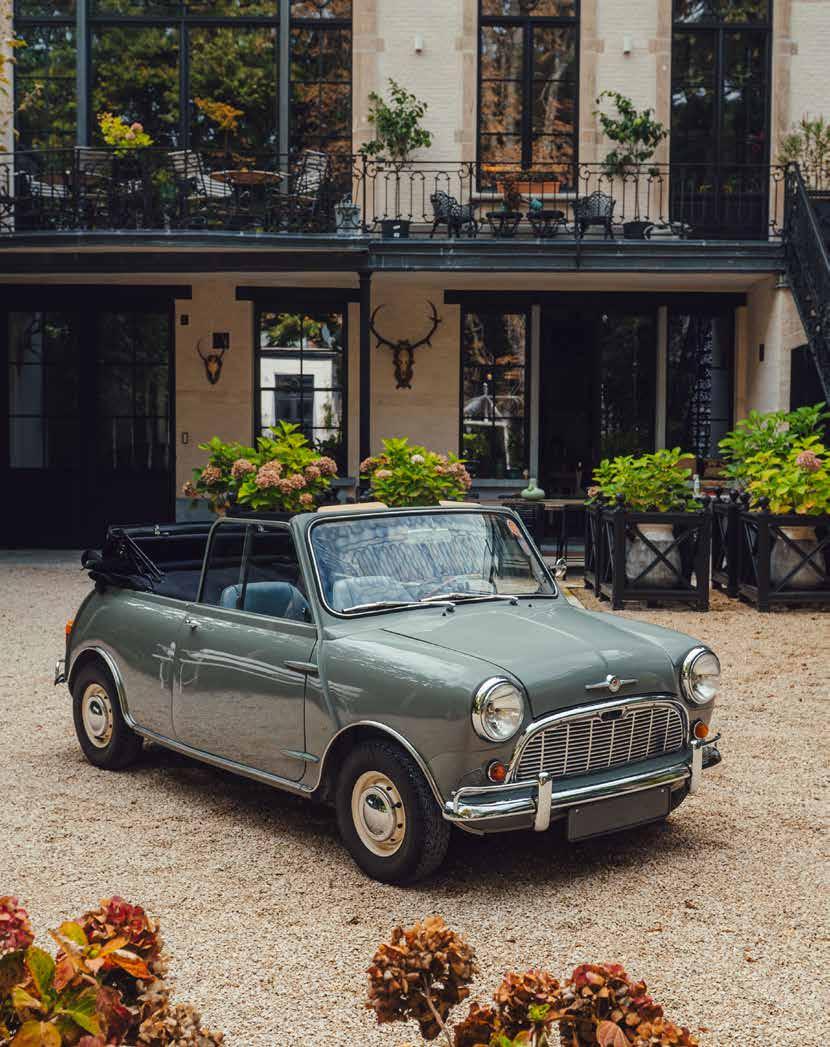
• An early example of Crayford's Mini Sprint Convertible
• 998cc Mini Cooper engine coupled with other upgrades
• Restored with no expense spared in 2015/2016
• Concours winner at the Beaulieu National Mini Cooper Day 2016
• Converted to LHD and registered in Belgium
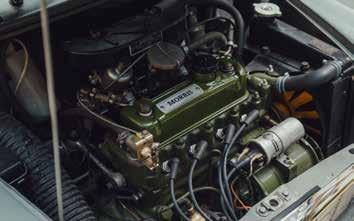

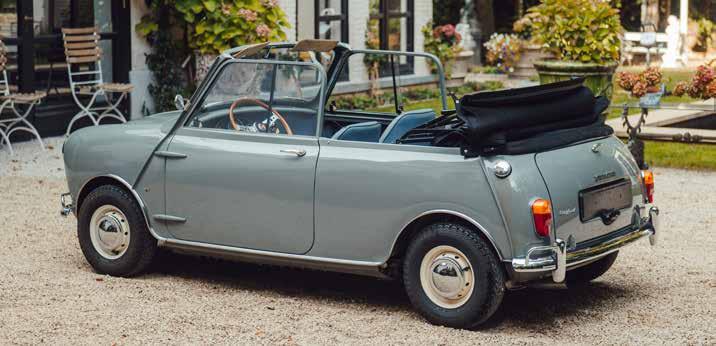
"Crayford Mini Sprint was developed and tested over many thousands of miles and has scientifically engineered chassis developments, to give improved rigidity. The superb roadholding and handling of the standard car is, if anything, enhanced. The wonderful spacious interior is almost exactly as standard. The car simply has a folding top. A sleek, clean design, built by leading hood manufacturers of England, in tough good-looking 'Vynide', with a rear window as large as the saloon. Easily let down, and if necessary, put up, from the driving seat. A real convertible for the family man – The Crayford Mini Sprint. The car to get you there quickly, safely, and more economically, with fresh air and sunshine to hand." – Crayford Engineering.
Founded in 1962 by Jeffrey Smith (engineer and designer) and David McMullan MBE (sales), coachbuilder Crayford was based in Westerham, Kent, specialising in the conversion of coupés and saloons into convertibles and estates.
According to its Belgian registration document, this Crayford Mini Sprint Cabriolet was registered for the first time on 14th September 1962. Its first owner, a Buckinghamshire resident, kept it until the 1980s. Lavishly restored between 2015 and 2016, it was fitted with various upgrades, such as a pair of reclining Microcell seats, a Les Leston Grand Prix steering wheel, 7.5" discs, and a Cooper speedometer. It also has two SU carburettors and a synchronised gearbox 1128. All this notably allowed the car to obtain first prize in the John White Trophy at the 2016 Beaulieu National Mini Cooper Day, when it was also selected to take part in that year's Goodwood Revival showcase.
It was sold via Bonhams to its current owner in 2019. Imported to Belgium, it was then converted to left-hand drive and driven regularly between Knokke and Antwerp.
Rare and delightfully elegant, this Crayford Mini Sprint is a choice model. Registered in Belgium, and accompanied with a spare key, it represents a wonderful opportunity for anyone looking for a leisure car, rarer and more comfortable than a Moke or a Mehari.
€25,000 - 40,000 No Reserve
Chassis no. B382000825LROFE
Engine no. 4257-F21KA
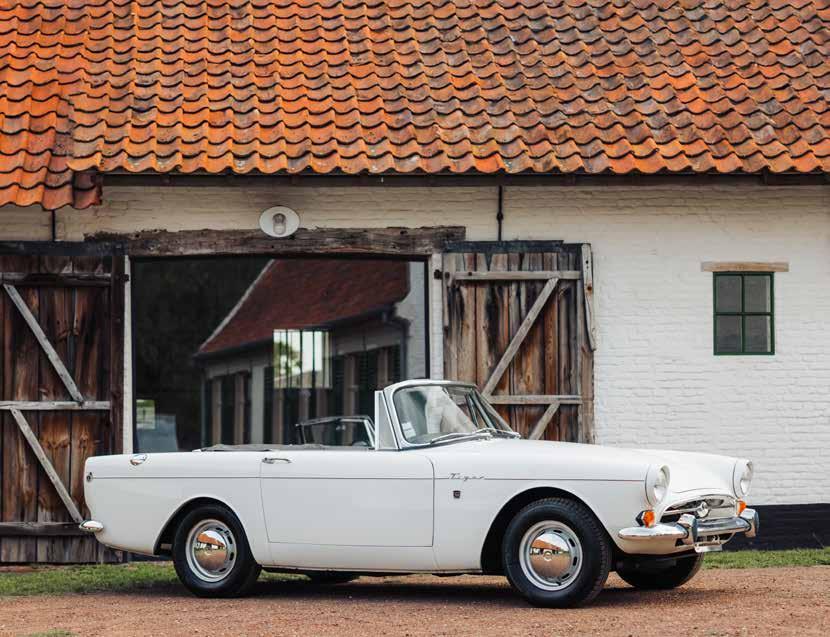
• Rare Mk1A version
• 4.2-litre V8 engine and manual transmission
• Left-hand drive
• An older restoration
• Comes with Belgium registration documents
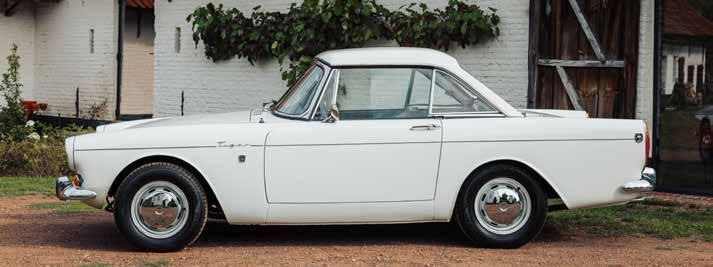

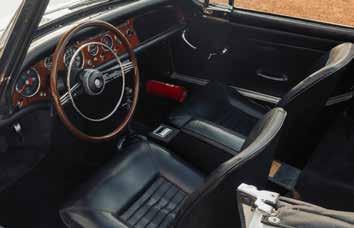
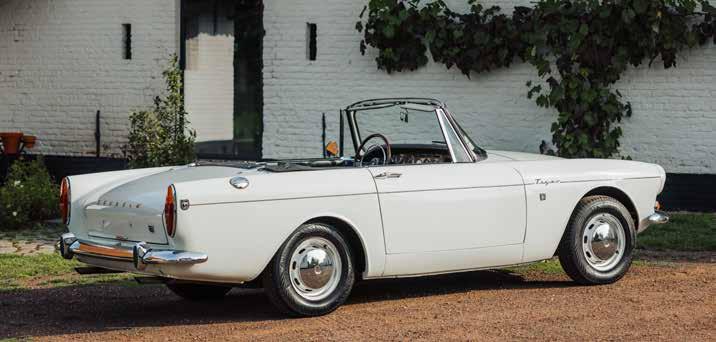
Inspired by Carroll Shelby's success in shoehorning a Ford V8 into the AC Ace to create the Cobra, Rootes' West Coast USA sales manager Ian Garrad asked Shelby to perform the same trick with its Sunbeam Alpine sports car, which was losing sales to more powerful rivals in the all important North American market. To begin with the project was unofficial, only gaining factory approval when a prototype shipped to the UK was driven by company chairman Lord 'Billy' Rootes, who declared himself hugely impressed.
Shelby chose Ford's 260ci (4.2-litre) 'Windsor' V8 engine, and even though this had 'only' 164bhp on tap it was approaching double the output of the contemporary Alpine's 1.6-litre four. The transplant radically transformed the car's character. Getting it to fit, though, was far from easy as Shelby later recalled: "I think that if the figure of speech about the shoehorn ever applied to anything, it surely did to the tight squeak in getting the 260 Ford mill into the Sunbeam engine compartment. There was a place for everything and a space for everything, but positively not an inch to spare."
Production was contracted out to Jensen Motors in West Bromwich, commencing in 1964. Jensen received fully trimmed Alpine IV bodies, which were then modified appropriately. The Tiger kept the Alpine's basic layout but featured a stronger gearbox and rear axle plus rack-and-pinion steering. Vastly superior to its Alpine progenitor in performance terms, the Tiger stormed to 60mph in under ten seconds and peaked at around 120mph, matching the rival Austin-Healey 3000.
For those requiring more performance there were numerous tuning parts available for the ubiquitous Ford V8. The Mk1A version featured improved ventilation, steering wheel location, and hood stowage.
Sadly, the Tiger was killed off by Rootes' new owner Chrysler shortly after the revised 4.7-litre Tiger II was introduced in 1967. A little over 7,000 Sunbeam Tigers had been produced when the final cars rolled off the production line in 1968. Of these, only some 800 were delivered to the UK, the rest going for export.
The Sunbeam Tiger we offer here is a very nice and early example. Its chassis number identifies this left-hand drive Tiger as a Mk1A, produced between August 1965 and September 1966, during which period 2,706 examples were built. The car was restored some years ago and now shows a certain patina. It drives well and it gives you that instant smile on your face. This is how the Sunbeam Tiger was meant to be.
To the owner's knowledge the car has not suffered any accidents or been used in any competitive events, only for recreational activities. A very good opportunity to buy a nice driving, good looking car for rallies or Sunday trips.
€50,000 - 60,000
No Reserve
Chassis no. 191653
Engine no. 02369
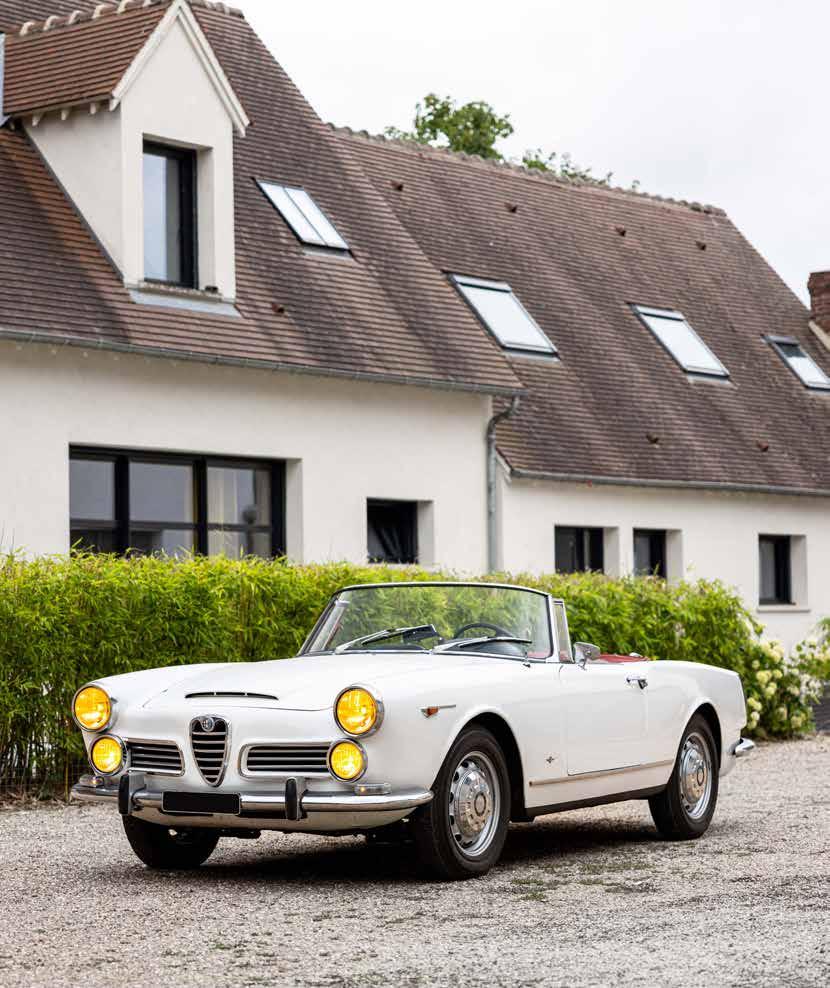
• Elegant styling by Carrozzeria Touring
• Single family ownership (father/son) since the late 1960s
• Original colour scheme
• Comes with a convertible top and a hardtop
• Valid Contrôle Technique
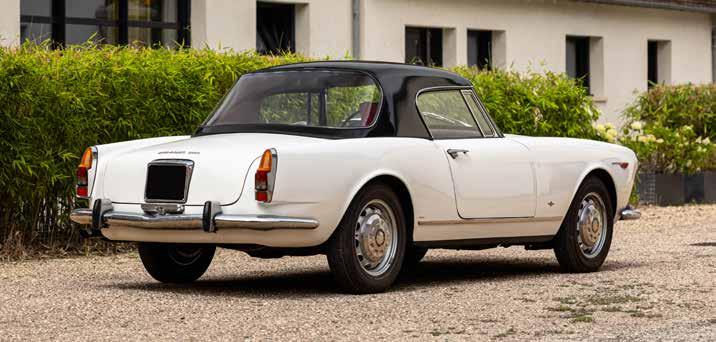
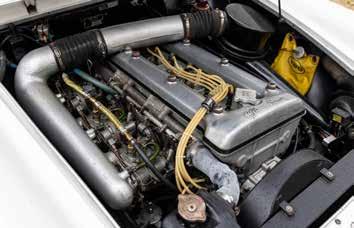
"...its vocation was not a sporty one rather that of an elegant and comfortable grand tourer for people who loved the open air: the well finished cab easily accommodated four people, was fully accessoried and the set-up was fairly soft. The car was well suited to lively but relaxed driving, rather than seeking its limit." - Lorenzo Ardizio, Alfa Romeo – All the Cars, describing the 2600 Spider.
Introduced at the Geneva Motor Show in 1962, Alfa Romeo's 106-Series '2600' range was a direct replacement for the preceding 102-Series '2000' cars. Carrozzeria Touring and Carrozzeria Bertone were responsible for the 2600 Spider and Sprint Coupé respectively; both of which looked like their 2000 predecessors. The latter's chassis design and body styles were retained, with minor revisions and improvements, but in place of the old, long-stroke, 2.0-litre four was a new, 2,584cc, twin-cam six-cylinder engine clearly descended from that of the immensely successful Giulietta. A maximum output of 145bhp was claimed for this unit when installed in the Sprint coupé and Spider, which was good enough for a top speed of around 125mph (200km/h). Cars Illustrated magazine reckoned this magnificent power unit "one of the smoothest, quietest running sixes, irrespective of the speed at which it is running, in our experience". Power reached the rear wheels via a fivespeed manual synchromesh gearbox, while the braking system featured discs at the front and drums at the rear. The 2600 series would be Alfa Romeo's last to featured a twin-cam inline six power unit.
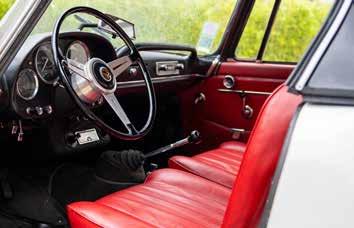
Homologated in 1962 and raced until 1967 by both the works and privateers, the Sprint version was piloted by stars such as Andrea de Adamich, Jean Guichet and Carlo Facetti, achieving class wins in the 24 Heures du Spa, Tour de France, Nurburgring 12 Hours, Monza 4 Hours, Mugello and other rounds of the European Touring Car Championship. During the same period it was extensively hill-climbed and rallied, proving to be a powerful and reliable all-rounder. Approximately 2,255 Spiders and 6,999 Sprint Coupés were produced between 1962 and 1966, and today these rare and hitherto under-appreciated models are becoming increasingly sought after by discerning Alfisti.
This lovely Alfa Romeo 2600 Spider was inherited in 1987 by our vendor from his father, who had owned it since the late 1960s. The Alfa has been regularly maintained by the owner's team of mechanics, just like all the other cars in his collection, and is finished in its original exterior colour of Bianco Spino, albeit repainted a long time ago. The red Skai (leatherette) interior is original. On a recent test drive the engine started straight away and was smooth, as was the gearbox, while the brakes worked well.
Accompanying documentation includes a French Carte Grise and valid Contrôle Technique, and the car also comes with a convertible top and a hardtop.
€70,000 - 90,000 No Reserve
1977 FERRARI DINO 208 GT4
by Carrozzeria Bertone
Chassis no. 12884
Engine no. F106C00000613
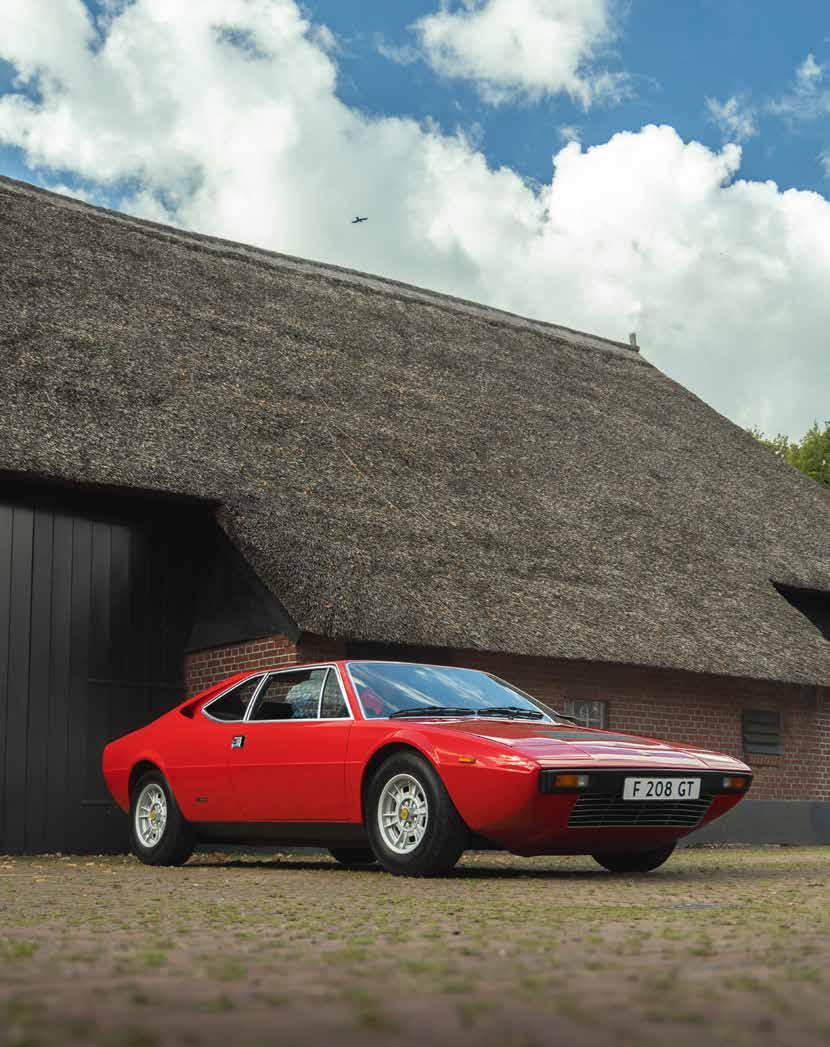
• Rare Italian-market-only model
• One of only 840 made
• Remained in Italy until 2024
• Recent extensive maintenance including new timing belts (bills available)

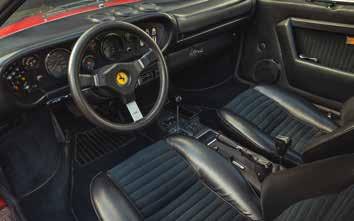

In 1975 Ferrari introduced a 2.0-litre version of its first V8-engined road car, the 3.0-litre Dino 308 GT4. The newcomer was the 208 GT4, conceived to take advantage of its home market's vehicle taxation system, which penalised cars with engines exceeding 2 litres in capacity. The V8 engine was reduced in bore size to 66.8mm (from 81mm) for a capacity of 1,990cc, and produced 180bhp at 7,700rpm. Despite the reduction in horsepower, the Dino 208 GT4's all-round performance and 137mph top speed nevertheless placed it in the front rank of contemporary 2.0-litre sports cars.
An Italian delivery (as they almost all were), this delightful little Dino was purchased in 1991 by a lady owner in Florence. At that time car registrations changed when the car changed province, and previously this Dino had been registered in the Southern Italian city of Bari. The Ferrari spent most of its life in Italy before it was purchased by its last registered owner in Lithuania in 2024.

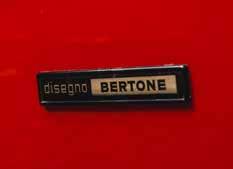
Upon purchasing the car he embarked on some extensive servicing and repairs; these included fitting correct Michelin XWX tyres; a thorough service including new timing belts with uprated tensioners; new fuel pump; servicing of carburettors; servicing the cooling system, including new hoses: and various other repairs and improvements. Parts were supplied by the German specialists Dino Parts. All invoices are on file.
The car is offered with cancelled Italian registration documents, deregistered Lithuanian documents, and invoices for the aforementioned recent maintenance. A delightful entry-level Ferrari with important works just completed.
€50,000 - 60,000 No Reserve
105
Delivered new in France – Ferrari Classiche Certified 1963 FERRARI 250 GTE 2+2 SERIES III
Coachwork by Pininfarina
Chassis no. 4571
Engine no. 4571

Intended to extend Ferrari's appeal to a sector of the market already contested by rivals Aston Martin and Maserati, the 250 GTE 2+2 debuted in the summer of 1960. Ferrari's first four-seater, the 250 GTE 2+2 was directly descended from the most commercially successful Ferrari of its day, the 250 GT. Launched in 1954, the latter featured a lighter and more-compact Colombo-designed 3.0-litre V12 in place of its Europa predecessor's Lampredi unit. The 250 GT chassis followed Ferrari's established practice, being a multi-tubular frame tied together by oval main tubes, though the independent front suspension now employed coil springs instead of the transverse-leaf type. A four-speed, all-synchromesh gearbox transmitted power to the live rear axle, while hydraulic drums looked after braking all round. Disc brakes arrived late in 1959 and a four-speeds-plus-overdrive gearbox the following year, and both were features the 250 GTE enjoyed from the start of production in 1960. Pininfarina's brief had been to produce a 2+2 without sacrificing the 250's elegant, good looks or sporting demeanour and the master stylist succeeded brilliantly with the GTE.
First seen in prototype form at the 1960 Le Mans 24 Hour Race, where it served as the Race Director's car, the Ferrari 250 GTE 2+2 had its official world premiere later that year at the Paris Salon. There had been four-seater Ferraris before the 250 GTE - Ghia, Touring and Vignale all producing '2+2' designs in the 1950s - but these attempts had been compromised by the necessity of using a chassis not conceived with passenger carrying in mind and were deemed less than entirely successful. Close collaboration between Ferrari and Pininfarina in the design of Maranello's first series-production four-seater ensured that no such criticism could be levelled at the 250 GTE.
• Sold new by Franco Britannic
• Matching numbers and colours
• Still with its original purchase invoice and Bulletin de Garantie (warranty)
• Massini report on file
• Only one owner from 1963 to 2016
At 2,600mm in the wheelbase, the multi-tubular chassis was similar to that of the Pininfarina-designed 250 GT 'notchback' Coupé and 200mm longer than the contemporary 250 GT SWB's. Moving the engine forward by 200mm and widening the rear track by 38mm made room for two rear seats in a bodyshell which, despite its increased length, retained Pininfarina's customary classical proportions. Independent front suspension, a live rear axle, all-round disc brakes and a four-speed manual/overdrive gearbox completed the basic chassis specification, while the Tipo 128E outside-plug engine's 240bhp ensured that there was no reduction in performance despite the inevitable weight gain. Top speed was within a whisker of 140mph, while one example driven by Ferrari works driver Phil Hill and carrying two passengers, accelerated from a standstill to 100mph and back to rest in 25 seconds, a staggering achievement for an almost fully laden Grand Tourer.
A popular and highly profitable car for Ferrari, the 250 GTE progressed through three series, changes being confined mainly to the dashboard layout and the front and rear lighting arrangements, before production ceased in 1963. By that time 950 cars had been sold, making the this the most popular and commercially successful Ferrari to date.
This Ferrari 250 GTE 2+2 Series III, chassis 4571/GT, left the Maranello factory on 30th April 1963. Bearing the elegant Rosso 20200 Sintetico Italver paint, paired with Nero VM 8500 Connolly upholstery, it was delivered new in France by Franco-Britannic in Levallois-Perret on 16th May 1963.

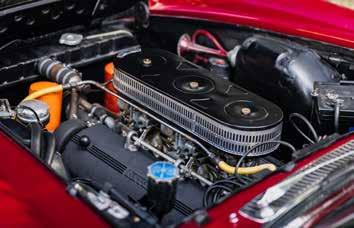
The original purchase invoice, in the name of Interocean Airways S.A., still available in the historical file, tells us that the car was sold "complete with five chrome-plated wire wheels, with tyres and tools" and cost USD 9,200. Its warranty was then dated 17th May 1963 and made out in the name of Interocean Airways S.A. in Paris. It was in the name of Lawrence M. Kesselman, a pilot and partner in the company, that the car was registered, as noted on the French certificate of conformity dated 20th May 1963.
Later, on 1st December 1982, the GTE went through customs in Luxembourg on its way to M.A. Scholer, who was in fact Marie-Antoinette Kesselman-Scholer, the wife of the car's official first owner. The car was then registered in Luxembourg on 11th March 1983 under registration number 29737. We also have an invoice dated 1997 for a service carried out at Jaguar Luxembourg for Mr Lawrence Kesselman of 230 Park Avenue, New York, and likewise a 2001 report from an expert stating that "the vehicle mentioned here is in excellent original condition, as much its mechanical parts as the appearance of the coachwork and interior".
It was in 2016 that the original family parted ways with the GTE via Ferrari Eberlein, where a full service was carried out. After receiving its Ferrari Classiche certification on 13th April 2016, confirming its authenticity and that its chassis, engine, gearbox and axle numbers matched, it was acquired by Mr Brueren in the Netherlands, on 25 April 2016. The latter sold the car through Bonhams, at a sale at the Grand Palais Ephémère in Paris, in February 2023.
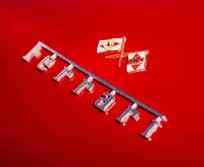
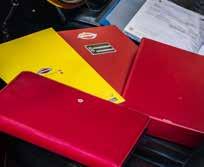
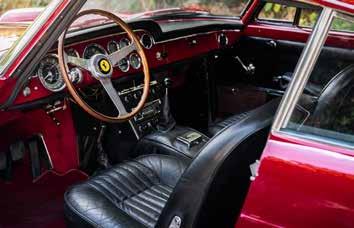
Acquired by an eclectic collector, it was entrusted to Dino Sport in Clarbec for a full service. The work completed included the renewal of various parts, the painting of the air box cover, the replacement of various seals, checks and adjustments to the timing chain, adjustment of valve clearance, tuning the carburation and ignition, as well as replacement of all fluids and 12 spark plugs.
Today, the configuration of 4571/GT is as it was when it left the factory. All major mechanical components have matching numbers, and its colours have remained true to the originals, despite paintwork completed several years ago. Its black leather interior has a pleasing patina, and still has its contemporary Becker Grand Prix (documentation for which can be found in the car's file). Fitted with a stainless steel exhaust as a treat for the ears, above all it comes with a file retracing its history, from its original purchase invoice, its French homologation document, its warranty, its customs clearance from Luxembourg, down to its Red Book, along with the Ferrari Classiche plaque and its most recent maintenance invoices.
This GTE represents an excellent opportunity to be part of the 250 dream, by means of a car with a clear history, matching numbers and, what is more, with room for the whole family to enjoy the famous V12 Colombo.
€250,000 - 330,000
106
Tickford
Chassis no. AM300/3/1321
Engine no. DBA/940
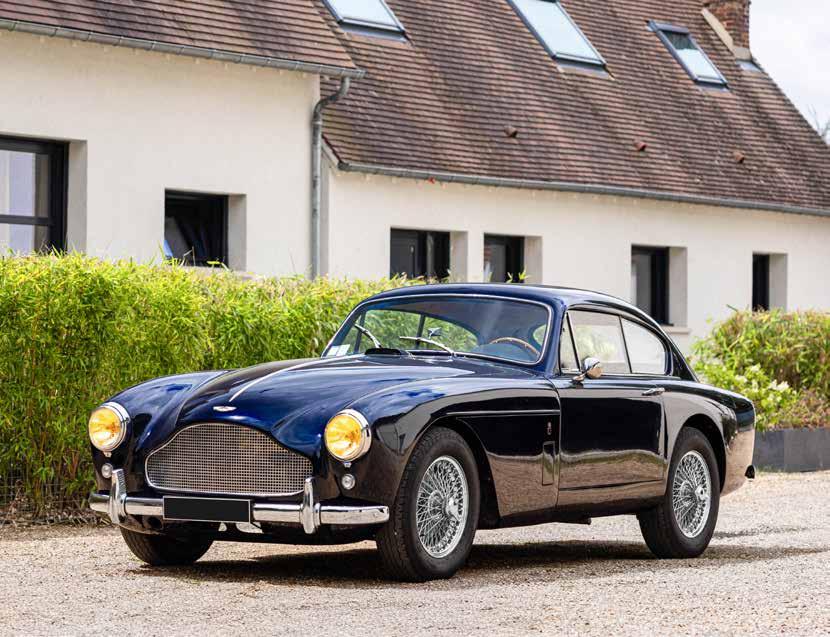
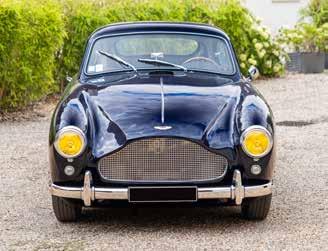
• One of only 551 DB Mark IIIs made
• Delivered new to France
• Present ownership since 2004
• Restored while in the present ownership
• Valid Contrôle Technique
Two years after the introduction of the DB2/4 Mark II came the DB Mark III (also known as the DB2/4 Mark III), 551 of which, mainly saloons, were made between March 1957 and July 1959. Externally the most obvious change was the adoption of a DB3Sstyle grille, establishing the 'hallmark' look of subsequent Aston Martins. This restyled nose gives the car a more imposing look, while the interior boasted a redesigned dashboard with instruments grouped in a cowled panel ahead of the driver. According to The Autocar: "The latest models – the DB Mk IIIs – have a number of important improvements and, in addition, a subtle crispness and refinement, as compared with the DB2/4, not easily attributed to any one modification."
The 3.0-litre DBA engine benefited from an extensive redesign by Tadek Marek (newly arrived from Austin) and featured, among other improvements, a stiffer block, stronger crankshaft, and a new cylinder head with bigger valves. 162bhp was available with the single-pipe exhaust system, 178bhp with the optional twin-pipe version.
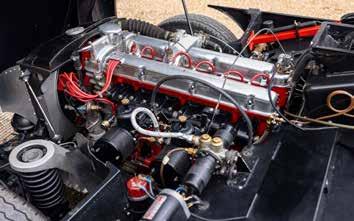
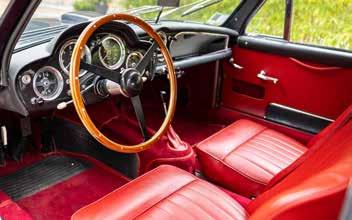
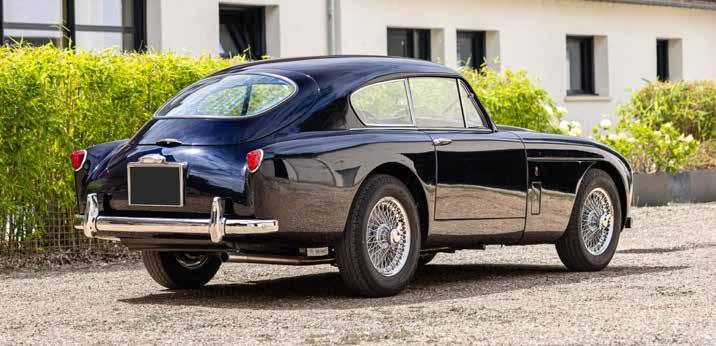
Elsewhere there were improvements to both clutch and gearbox; Laycock overdrive became available; and front disc brakes were standard rather than optional after the first 100 cars had been built, commencing at chassis '1401'. Despite the inevitable weight increase, the Mark III was faster than any of its predecessors with a top speed of 120mph (193km/h).
The DB Mark III is also notable as the first Aston Martin to feature in a 'James Bond' novel, being driven by '007' in Goldfinger. It was also the last Aston Martin produced with the W. O. Bentley-era six-cylinder engine. Furthermore, as it was built in 1957, this car is eligible for the Mille Miglia.
Its accompanying copy guarantee form reveals that left-hand drive chassis number '1321' was delivered new on 17th June 1957 to Aston Martin agents Garage Mirabeau in France. The car left the Newport Pagnell factory finished in Ice Blue with brown Connolly leather interior trim. It first owner was Dr J. Claude Roy, a resident of St Tropez, France. The AMOC Register records the car as still being in France in 1989.
The engine currently fitted is of the correct DB Mark III type. However, it should be noted that as the timing cover (where the engine number is stamped) was replaced during the comprehensive restoration of the engine by the current owner, we are unable to confirm that this is the original engine.
Our vendor purchased the Aston in February 2004, since when the car has been comprehensively restored and the engine rebuilt by his team of mechanics, who have regularly maintained the car together with all the others in his collection. The odometer reading is 198 kilometres, which is believed to be the distance travelled since the engine rebuild. On a recent test drive the engine started straight away and was smooth, with all gears shifting well, while the brakes also worked properly.
Accompanying documentation includes a French Carte Grise, valid Contrôle Technique, and a record of historical works carried out. The car also comes with an instruction booklet and a complete tool kit. €140,000 - 170,000
Only 30 kilometres recorded from new 2021 FORD
Chassis no. 1FAGP9EW0MH200255
• Modern reworking of an iconic racing GT
• Limited-edition Heritage model
• 'Second generation' V6 turbo model
• Delivery mileage only
• Factory fresh condition
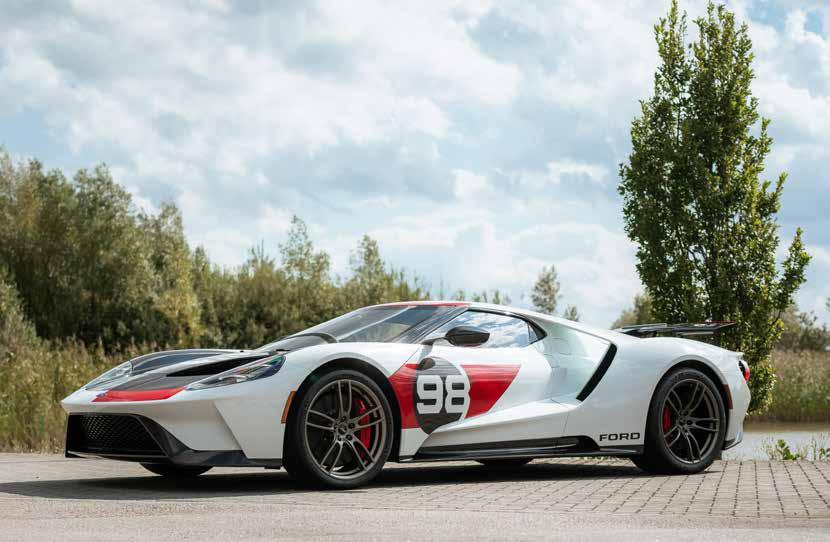
"This is what true innovation looks like. From its 3.5L EcoBoost® technology to its ultra-efficient aerodynamics, the Ford GT is the culmination of everything great we do at Ford. ...everything about the Ford GT is designed to deliver pure performance." - Ford Motor Company.
In 2015 a second-generation Ford GT was unveiled at the North American International Auto Show. Technologically a far cry from its predecessors, the new Ford GT featured a 3.5-litre twin-turbocharged V6 engine; carbon-fibre monocoque chassis; carbon-fibre body panels; pushrod suspension; and active aerodynamics. Producing 647bhp, the turbo V6 drove the rear wheels via a Getrag seven-speed DCT gearbox. The factory claimed a sub-3.0 second 0-60mph time and a top speed of 216mph (347km/h), which makes the Brembo carbon-ceramic brakes a necessity rather than a luxury.
In fact, Ford's new supercar had been created with GT racing in mind, hence the presence of an integral roll cage and a host of other competition-car technologies. Yet despite its start-of-the-art track-focused suspension, the GT has a ride quality rivalling that of a luxury saloon.
Autocar's Matt Prior was obviously impressed: "the GT... has a level of composure - that balance between ride and handling – that I'm not sure I've better experienced in 20 years of road testing. It's so compliant, yet there's so little roll, and body movements are so well controlled, that is genuinely astonishing". All of the planned 1,000 road models had been sold before deliveries commenced in 2017 and these exclusive supercars remain highly sought after today, production having ceased in 2022.
And as for its maker's racing aspirations, the new GT did not disappoint. At Le Mans on 19th June 2016, the number '68' Ford GT of Ford Chip Ganassi Racing driven by Hand/Müller/Bourdais finished 1st in the LM GTE-Pro class, their victory marking 50 years since Ford's first Le Mans win in 1966 with the original GT40.
This Ford GT is a thrilling modern supercar in commemorative 'Heritage Edition' guise. It has covered a mere 30 kilometres from new and is presented in 'factory fresh' condition as it has never been used beyond delivery. The manufacturer's Certificate of Conformity, Swedish registration documents, and the service book come with it.

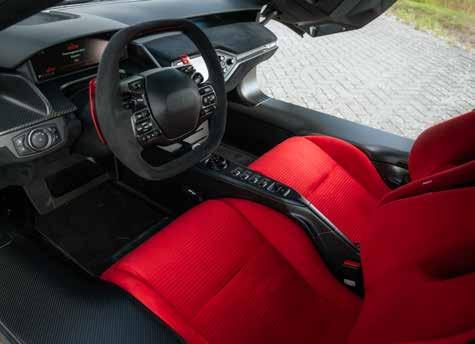
The '66 Heritage Edition was released as a celebration of the original model's first win at the 1966 Daytona 24-Hour race. This model features Frozen White exterior paint; an exposed carbon-fibre bonnet; asymmetrical Race Red accents on the nose, roof, driver's side door, and rear wing; exposed carbon-fibre '98' roundels; unique 'Ford' badging; and one-piece forged wheels.
The interior is trimmed in red Alcantara with exposed carbon-fibre inlays to the seats and dashboard. The car rides on a set of Heritage Gold 20" spoked alloy wheels, while other notable features include carbon-ceramic brake discs; red Brembo callipers; Michelin Pilot Sport Cup 2 tyres; reversing camera; front axle lift; switchable suspension, multifunction steering wheel; cruise control; air conditioning; and a central infotainment system with satellite navigation.
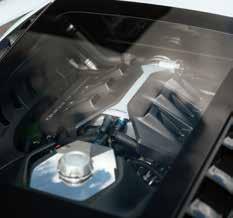
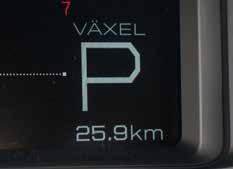
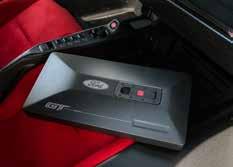
Capable of rocketing from 0-100km/h in a hair-raising 2.8 seconds before reaching a top speed of nearly 348km/h (216mph), the Ford GT is an exhilarating modern supercar with dramatically sculpted bodywork and an impressive racing heritage.
This example builds on that rich history, and its 'Heritage Edition' specification celebrates the original GT40's racing successes with a host of stylish touches from exposed carbon-fibre detailing to tasteful Heritage Gold wheels. Having covered just delivery mileage from new, it would make a superb addition to any enthusiast's stable, and promises to thrill each time its powerful twin-turbocharged V6 roars into life.
€500,000 - 600,000
For more information on the Symbol next to the Lot Number, please refer to the Lot Symbols Key at the front of the Catalogue.
Chassis no. XL9GA11A05Z363031
The Spijker company started out as coachbuilders in Amsterdam before constructing its first automobile in 1898. Spijker was technologically adventurous, introducing the first six-cylinder car with four-wheel drive and all-round brakes in 1903, by which time the name had changed to the more internationally acceptable 'Spyker'. Faced with a downturn in demand for its large luxury cars the firm merged with the Dutch aircraft manufacturer, N.V. and in 1915 adopted the Latin moto 'Nulla tenaci invia est via' ('For the tenacious no road is impassable'). A horizontal, two-bladed propeller was chosen as the company emblem and both it and the motto were used by the modern-day Spyker company.
Despite a reputation for quality and the achievement of some notable competition successes, the original Spyker company disappeared in 1925. Its name and reputation for producing well-engineered, highperformance motor cars had not been forgotten though, and an entirely new Spyker possessing the same goals emerged in 1999.
• Early classic black/cognac with factory hardtop
• Bullet points
• Bullet points
• Recently upgraded audio option
• 19" wheels and propeller steering wheel
• Recently serviced and upgraded by marque specialists Jasper den Dopper
• Registered in The Netherlands
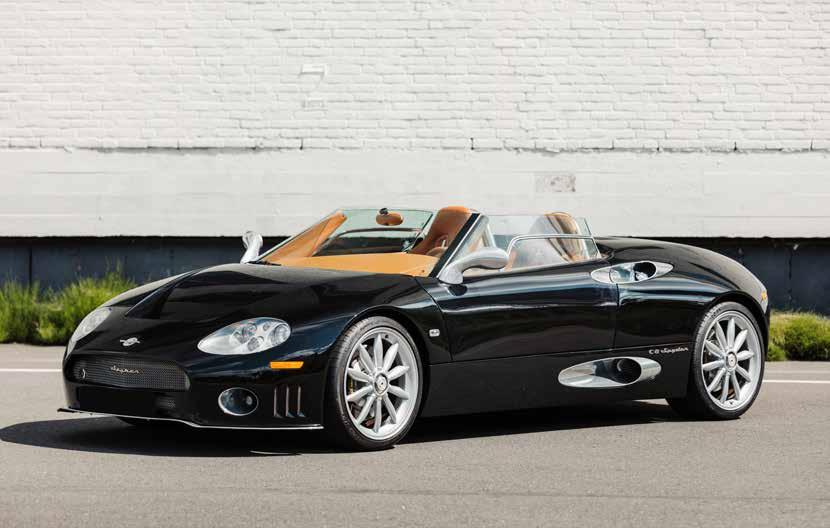
Founded by Maarten de Bruijn, the reconstituted company was set up to manufacture exclusive sports cars commencing with the Spyker C8, which debuted at the Birmingham International Motor Show in October 2000.
An advanced, mid-engined, two-seat barchetta, the C8 was powered by a 4.2-litre Audi V8 engine producing approximately 400bhp and had a top speed of around 300km/h (186mph). The C8's ultrastiff spaceframe chassis was constructed using a combination of aluminium sheet and extrusions, while the aluminium body panels were supplied by Coventry Prototype Panels in the UK and later Karmann in Germany. Variations on the theme were not long in coming: in February 2001 the C8 Laviolette coupé appeared at the Amsterdam Motor Show to be followed by the more powerful twinturbocharged C8 Spyder T.
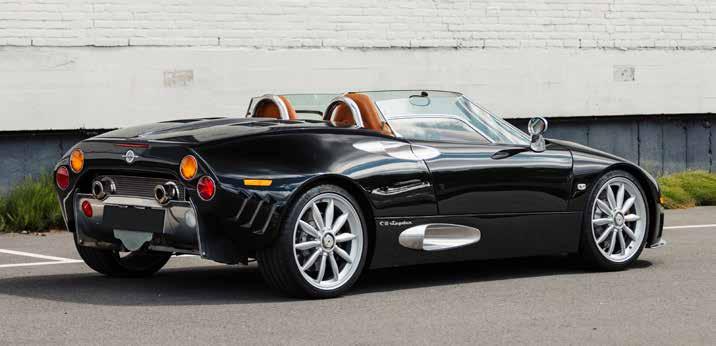

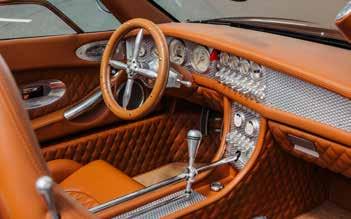
Despite its 'new kid on the block' status, Spyker succeeded in establishing a strong presence in the supercar market. Indeed, the C8 won instant acclaim, receiving the Institute of Vehicle Engineers Design Award soon after its introduction. In 2002 the first competition version, the C8 Double12R endurance racer, was entered by the Spyker Squadron factory racing team at Le Mans. On 14th July 2005, it was announced that the C8 was approved for sale on the United States market.
The C8 offered here, chassis number '031', left the factory in 2005 and, according to the registers, is the 22nd Spyker built. After chassis number '70' Spyker started making their bodywork on serial tools at Karmann, bringing to a close the era of hand crafted panels for the C8 Spyders and Laviolette. On the early Spyker, customers could choose between a hardtop or a soft-top, though only 18 were ever optioned with the factory hardtop like this car.
Originally '031' was delivered to the USA, remaining there until 2015 when it was exported to Belgium and subsequently registered in 2017. According to the registers, the current vendor is the second private owner. In 2021 the car visited marque specialists Spyker Enthusiast (Jasper den Dopper) for maintenance and upgrades (fourpoint harness with cognac shoulder pads) while later in 2022 the car was upgraded with the factory audio system and the original Spyker key fob was added again.
The black/cognac is one of the signature Spyker colour combinations and this example is a very well maintained car. All servicing and maintenance has been carried out by Jasper den Dopper according to the factory specifications, while the upgrades were done using original parts. The current odometer reading is only 6,578 miles and this rare and exclusive Dutch supercar is presented in immaculate 'like new' condition.
€400,000 - 450,000
No Reserve
Number '226' of only 448 built 2001 FERRARI 550 BARCHETTA
PININFARINA
Coachwork by Pininfarina
Chassis no. ZFFZR52B000124204
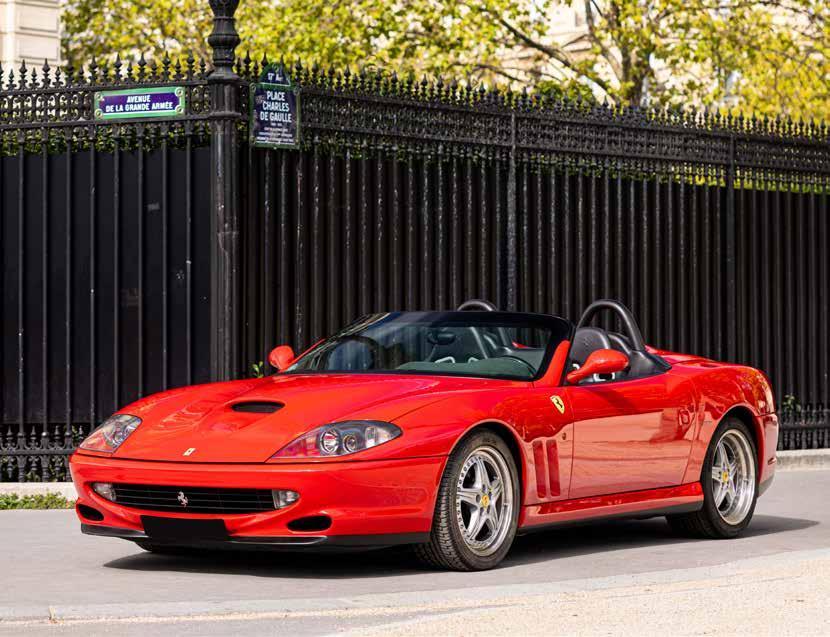
"The 550 Barchetta Pininfarina was designed to recall the glories of successful road racers of the past, such as the 166 MM, and thoroughbred front-engined 12-cylinder Ferrari roadsters of the calibre of the 250 GT California and 365 GTS/4 Daytona. Ferrari has always created very special runs of cars, and the 550 Barchetta Pininfarina was developed with the aim of being a unique Ferrari - one that deliberately seeks to be more provocative and less rational than the rest of the range." - Ferrari.
The long association between Ferrari and Pininfarina has been responsible for the creation of some of the most sublime fusions of art and automotive technology, and to mark the world renowned Carrozzeria's 70th Anniversary in 2000, Ferrari supremo Luca di Montezemolo invited Sergio Pininfarina to submit designs for a frontengined roadster embodying the spirit of past Maranello classics. Choosing the 550 Maranello coupé as the basis, the maestro proposed a return to the traditional barchetta style.
• Desirable limited edition model
• Manual transmission
• Full service history
• All books and tools
• Ferrari Classiche 'Red Book' included
• Less than 24,000 km recorded from new
In Ferrari's own words: "Functional and unadorned with a simple manual soft-top, the barchetta-style solution has enabled Ferrari's engineers to offset the additional weight gained by reinforcing the chassis and fitting rear roll bars. Consequently the 550 Barchetta Pininfarina weighs no more than the 500 Maranello."
The heart of any Ferrari is its engine, and the Barchetta Pininfarina's 48-valve, 5.5-litre V12 is the same as that of the 550 Maranello, developing 485bhp at 7,000rpm. All main engine castings of this stateof-the-art power unit are in light alloy, the aluminium wet liners are Nikasil coated and the connecting rods are titanium alloy. The design of the inlet and exhaust systems is derived directly from that of Ferrari's Formula 1 engines, providing the optimum balance between volumetric and combustion efficiency. Variable intake geometry helps increase both torque and maximum power as its manufacturer explains: "Ferrari's patented system incorporates a third plenum in the intake manifold which varies the fluid dynamic characteristics. Air is taken in via 12 electropneumatic throttle valves which are governed by the engine's CPU. This control ensures optimum performance at all engine speeds, guaranteeing excellent torque delivery throughout the rev range." One expects nothing less from Ferrari.
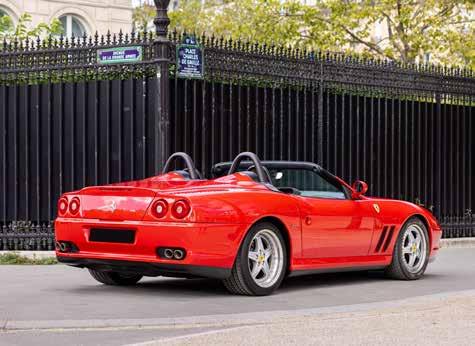
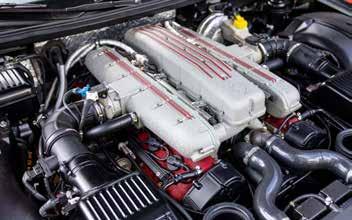
Standard equipment included a six-speed manual transaxle gearbox, electric windows and door mirrors, air conditioning, remote alarm and central locking, and split-rim alloy wheels. The production run was limited to 448 cars, each individually numbered and carrying a plaque inside with its own serial number and Sergio Pininfarina's signature. The result was an instant classic, with production reserved for a handful of faithful Ferraristi.
Number 226 of the 448 examples produced, this 550 Barchetta was is finished in Rosso Corsa with 'Scuderia Ferrari' wing shields and a Nero leather-trimmed cabin, featuring carbon-fibre inlays and a numbered plaque on the transmission tunnel. It rides on a set of 18" five-spoke split-rim alloy wheels shod with Pirelli P Zero Rosso tyres. Other notable features include red brake callipers, air conditioning, a switchable sport mode, carbon-backed sports seats with Cavallinoembossed headrests, and a Ferrari-branded Becker stereo system. Included in the sale is the owner's book pack; the original Ferrari service book duplicate; tool kit; and the all-important Ferrari Classiche 'Red Book' Certification confirming that when certified it was in period-correct factory specification.
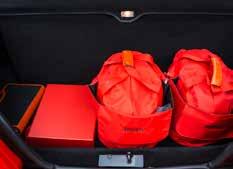

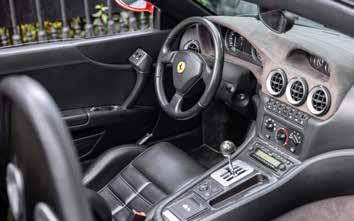
The car also comes with its two Ferrari racing helmets. The odometer displays 23,941 kilometres, which the seller believes to be accurate. The car comes with registration documents from Monaco where it is registered.
This 550 Barchetta was last serviced in July 2023 at 23,589 kilometres by Garage Milliancourt. Prior to this, services were carried out in January 2022 at 23,504 kilometres by SF Grand Est Mulhouse, including a change of timing belts and a repaint, and in 2011, 2009, and 2005 by Charles Pozzi.
The Ferrari 550 Barchetta is an exciting and particularly rare modern classic Gran Turismo, limited to just 448 examples and combining its striking Pininfarina styling and powerful V12 engine with an engaging open-gate manual gearbox. Offered for sale with only 23,941 kilometres on the odometer, this Ferrari Classiche-certified example would make a superb addition to any collection, and promises to deliver a memorable driving experience each time its new keeper gets behind the wheel. €375,000 - 400,000
Only 8,950 kilometres recorded from new 2002 NISSAN
Chassis no. BNR34-403458
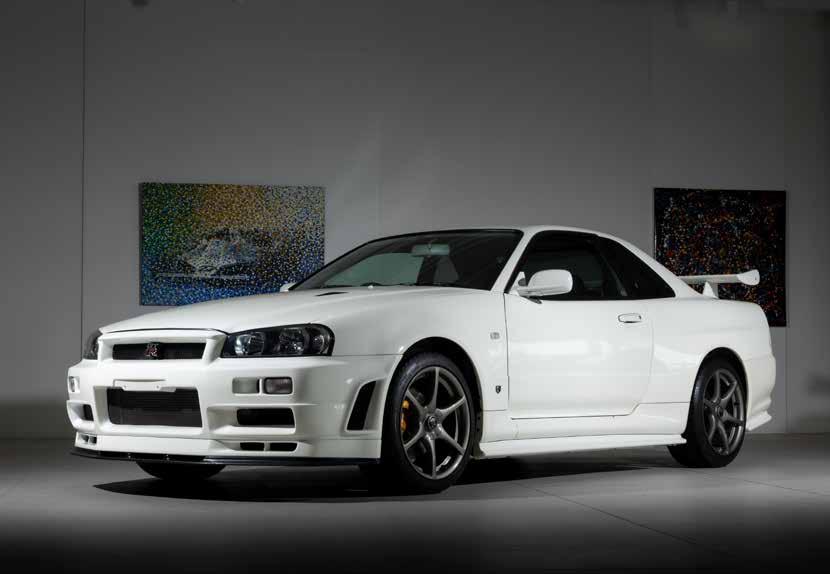
First used for its flagship sports car between 1969 and 1973, the Skyline name was revived by Nissan for the BNR32 GT-R of 1989, and the model wold go onto become its showcase for advanced technologies such as four-wheel steering and all-wheel drive. The BNR32 was also immensely successful in competitions, the Group A version winning the Japanese Touring Car Championship four years in a row.
The car we offer belongs to the Skyline GT-R's fifth (and final) generation, the BNR34, which was produced between January 1999 and August 2002. The newcomer was shorter than its BNR33 predecessor, while the 2.6-litre inline six-cylinder twin-turbocharged engine now featured cam covers finished in bright Cherry Red. Inside the cockpit there was a new multifunction display of engine and chassis data, while the V-spec model's also monitored intake and exhaust gas temperatures. The V-spec (Victory Specification) also came with Nissan's ATTESA E-TS Pro all-wheel drive system and an active limited-slip differential.
• Delivered new in Japan
• Desirable limited-edition last-of-the-line model
• Registered in Germany since February 2024
• Major service carried out by Motikon in July 2024
In October 2000 the V-spec was superseded by the V-spec II, which featured stiffer suspension, larger brakes, and a ducted carbon-fibre bonnet among a host of other advances. What would be the final iteration of this famous family arrived in February 2002 in the form of the Skyline GT-R V-spec II Nür, its name referring to the fearsome Nürburgring racetrack in Germany where the car was developed. The Nür's most significant upgrade was its engine, which was based on the N1 racing unit and featured larger turbochargers and stronger internals.
Nür models also came with a speedometer reading up to 300km/h (186mph); gold-coloured cam covers instead of red; and a gold-coloured VIN plate instead of silver. To conform with Japanese regulations for passenger vehicles at the time, the GT-R was advertised as having a maximum power output of 206kW (276bhp) whereas its actual output was over 246kW (330bhp). When production ceased in August 2002 a total of 718 V-spec II Nür models had been built.
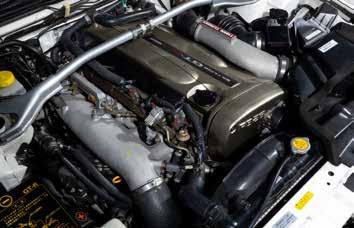
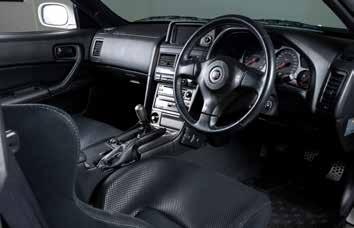
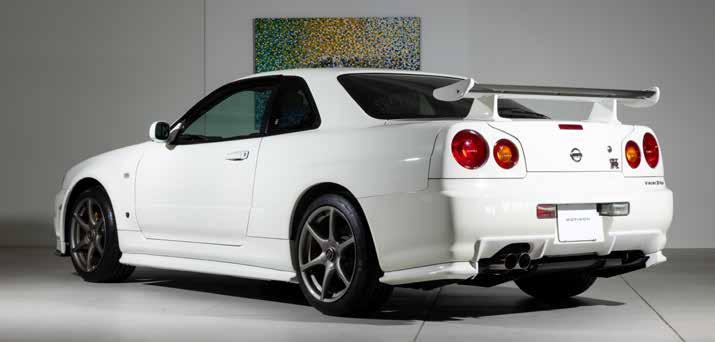
Finished in QM1 White, this highly desirable last-of-the-line model features privacy glass, satellite navigation and six loudspeakers. It also comes equipped with the following Nismo (Nissan Motorsports) components: S-tune front bumper; side and rear skirts; MFD (Multi Function Display); and gear shift knob.
The car was built in April 2002 and first registered in Osaka, Japan later that same month at zero kilometre. Its first registration mark was 'Osaka 399 Te 1000'. A technical inspection was carried out on 9th May 2005 at 4,900 kilometres, and again on 18th April 2007 at 6,200 kilometres. On 13th December 2007 the Skyline was auctioned at USS Tokyo, rated as Auction Grade 4.5 (very good).
On 6th March 2008 ownership was transferred to Enman Co Ltd in Osaka (likely a pre-export holding) and on 10th September 2008 the car was officially deregistered in Japan for export. On 8th February 2024 a preregistration inspection was carried out by GTÜ in Germany, and 19 days later was registered to the current owner in Landkreis Peine, Germany (license plate: 'PE Y 1075'). On 3rd July 2024 a major service was carried out by Motikon. The current odometer reading is 8,959 kilometres.
Finale of the Skyline GT-R family, the V-Spec II Nür is one of the most technologically advanced of the many variants, which over the years have been largely responsible for establishing Nissan's not inconsiderable reputation as a frontline performance brand.
€350,000 - 450,000
For more information on the Symbol next to the Lot Number, please refer to the Lot Symbols Key at the front of the Catalogue.
Chassis no. WBAEJ110XYAF77664
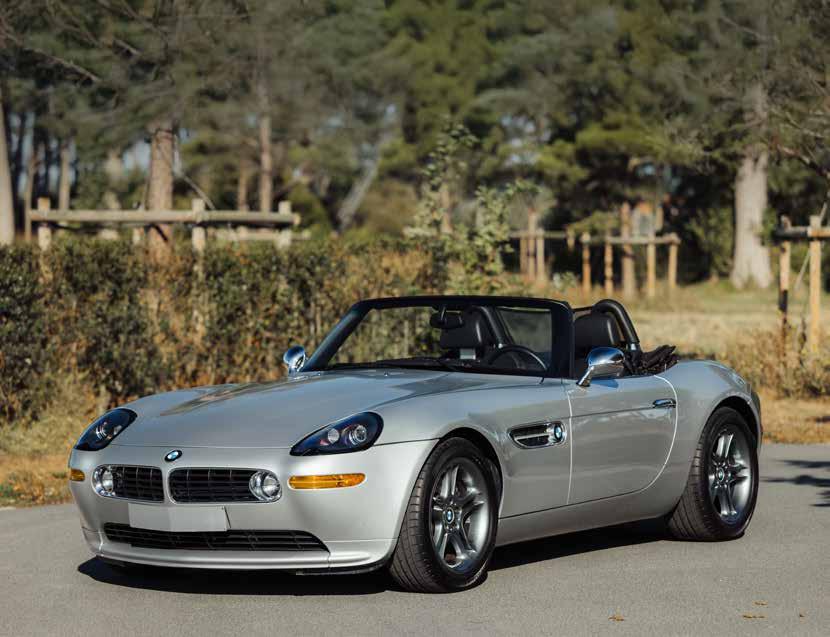
In recent times many motor manufacturers, particularly those with a significant sporting heritage, have felt the need to reference iconic models from the past when launching their latest. BMW has proved adept at exploiting this 'retro' trend, commencing in 1996 with the Z3 coupé and convertible, the styling of which brilliantly recalled its fabulous '328' sports car of pre-war days. Its next effort along similar lines - the 'Z07' concept car of 1997 - took its inspiration from the post-war Alfred Goetz-designed '507', a luxurious limitededition roadster.
The sensation of the 1997 Tokyo Auto Show, the Z07 was received so enthusiastically that BMW decided to proceed with a production version: the Z8. For the most part the Z8 remained remarkably faithful to the original concept, retaining the 507-like twin-nostril front grille and distinctive front-wing vents. A period-style interior had been one of the Z07's most remarked upon features, and that too made it into the Z8.
• Delivered new to South Korea
• Only 20,153 kilometres recorded from new
• Current ownership in Belgium since 2013
• Used sparingly over the last 12 years
• Regularly maintained
The Z8's body panelling and bespoke spaceframe chassis were fabricated in lightweight and corrosion resistant aluminium, while the 32-valve 4,941cc V8 engine, shared with the M5 saloon, was built by BMW's Motorsport division. With 400bhp on tap, the Z8 raced to 100km/h (62mph) in 4.7 seconds and only the built-in rev limiter stopped it from exceeding 250km/h (155mph). It was rumoured that 290km/h (180mph) was achievable with the restrictor removed...
Power reached the run-flat tyres via a Getrag six-speed manual gearbox. Needless to say, the Z8 also came with all the modern appurtenances one would expect of a flagship model: traction control, stability control, front and side air bags, GPS navigation, climate control and power operation of the seats, steering wheel and convertible hood all being included in the package.


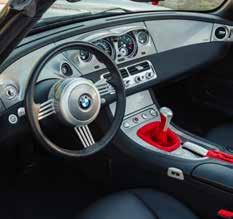
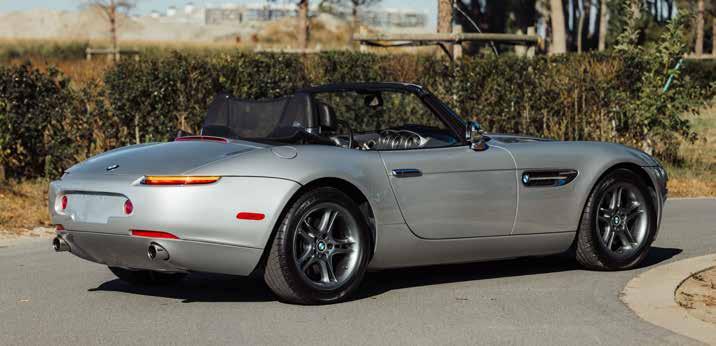
The fact that the Z8 was a low-volume model assembled, for the most part, by hand, enabled BMW to offer customers considerable freedom in personalising their cars. Further enhancing its appeal to collectors, the factory announced that a 50-year stockpile of Z8 parts would be maintained. Despite a (US) launch price of over $128,000, initial demand was so high that a bidding war broke out, with many Z8s selling for well in excess of that figure. By the time production ceased in 2003, 5,703 of these fabulous cars had been built.
This Z8 was built in 2000 and delivered new to South Korea where it was first registered in 2009. The car is accompanied by a bluepainted hardtop, service book, instruction books, and original interior parts (that have been replaced with red coloured ones). Additional options includes a cup holder, a 6-CD charger, and a fully integrated cellphone to US standard. The car rides on correct 18" spoked alloy wheels.
The current owner purchased the BMW in 2013 from a South Korean collector when the odometer reading was around 11,340 kilometres. The car has been registered in Belgium since 2013 and the front lights have been changed to EU specification. Our vendor describes its condition overall as very good, and believes the paint is original and never repainted. He also notes that the car has been serviced according to plan and used sparingly over the last 12 years.
This BMW Z8 is a highly sought-after convertible cruiser, finished in a timeless factory colour combination. Offered from a long-term ownership, it has covered only 20,153 kilometres from new at the time of cataloguing, which judged by its condition and documentation, is believed to be accurate.
€190,000 - 220,000
No Reserve
Ex-Abarth works test car driven by Didier Auriol during the 1992 WRC season
1992 LANCIA
Chassis no. ZLA831AB0-00556292
Engine no. 821E5.000.1334399

The Lancia Delta HF Integrale offered here represents a rare opportunity to acquire a true piece of World Rally Championship history: an official factoryprepared Abarth-built Muletto Stradale, used in-period by rally legend Didier Auriol as a reconnaissance and test car during the 1992 WRC season. Survivors of this type are exceedingly scarce.
This example is an official Abarth-built works car to Group N WRC specification, used by the Lancia factory team during the 1992 World Rally Championship season. This Muletto (test car) was driven by Didier Auriol in official test sessions for both the Rallye de Corse and the 1,000 Lakes Rally. It is one of very few known Muletto Stradale cars: a rare blend of rally test car and street-legal transport, only some 20 of which were built. Of historical importance, it is directly connected to the iconic Martini Racing Team and Lancia's sixth and final World Rally Championship title (1992). It was the fate of most such cars to be either crashed during testing or crushed having fulfilled their intended purpose, so survivors are extremely rare.
On 4th April 2025 this car was comprehensively inspected and certified by Lancia Classiche in Turin, receiving the highest L0 classification: over 95% original components, fully functional and in excellent cosmetic condition. Lancia Classiche's 60-page illustrated Certificate of Authenticity report is on file together with a Certificate of Conformity (inspection recommended). This car retains both its original chassis and engine, with numbers correctly positioned, and displays only some 30,000 km on the odometer.
• Rare homologation special
• One of only three survivors known by Lancia
• Lancia Classiche certified in 2025 (certification on file)
• Recent extensive mechanical overhaul (bills available)
• Outstanding mechanical condition
• Believed genuine 30,284 kilometres from new
Notable features include a 2.0-litre 16V turbocharged engine producing 205bhp; original EVO I gearbox and drivetrain; authentic suspension setup; improved brakes; and four-wheel drive. As well as the aforementioned documentation the car comes with original Italian registration plates ('TO40747S'), German registration papers, FIA Passport, PRA documentation (Automobile Club d'Italia), TÜV reports, and a period photograph of it.
From the mid-1960s until the early 1990s, Lancia was a major force in international rallying, winning the World Rally Championship for Makes no fewer than 11 times between 1972 and 1992, including a remarkable six successive victories commencing in 1987. During the same period, Lancia drivers won the European Rally Championship on 14 occasions and the World Drivers' Championship (only instigated in 1978) four times. The models used - Fulvia HF, Stratos, Rally 037, and the Delta family (S4, HF, and Integrale) - are among the most successful rally cars of all time.
Badged as the Delta HF 4WD on its introduction in 1986, the model retained the Volumex blower initially before switching to a straightforward turbo when transformed into the Integrale in 1987. The latter would prove a supremely capable rally car, winning the World Championship in both 1987 and 1988, yet in road trim remained a thoroughly practical family hatchback. Integrale performance was boosted further by the introduction of a 16-valve cylinder head for the 2.0-litre four-cylinder engine in 1989, maximum power increasing to 200bhp and top speed to 220km/h.
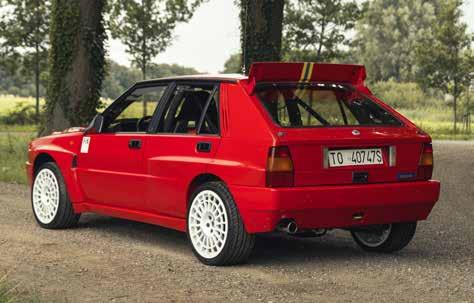
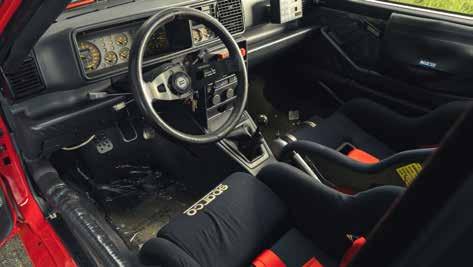
Homologated to maintain the works rally team's competitive edge, the first Evoluzione (Evo) models were manufactured towards the end of 1991, incorporating wider front and rear track, appropriately altered bodywork, and an engine re-mapped to produce 205bhp among many other detail improvements. The Evo 2 was essentially the same but came with a catalyst in the exhaust system.
As Octane magazine put it in its June 2012 edition: "Between 1987 and 1992, the Integrale utterly dominated its branch of motor sport, winning 46 rallies and six consecutive constructors' championships outright. And to keep the rally car at the sharp end of the results table, the road car went through a number of iterations, each more potent than the last."
Rally Specification:
Quick-release bonnet and boot fasteners
Abarth two-spoke steering wheel
Relocated rally-style fuel filler with bespoke tank
Internal battery kill switch
Sparco and Kindragon bucket seats
Full roll cage and fire extinguisher
Kevlar footwell protection plates
Digital rally computer
Strut brace, coilover suspension with adjustable dampers
Competition-spec auxiliary front lights
A re-mapped ECU allowing the engine to produce 205 HP
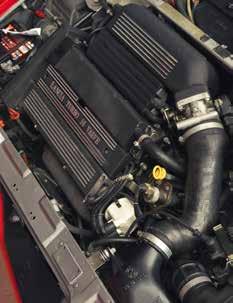
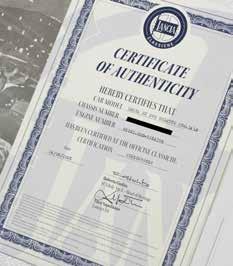
Exterior: Monza Red with yellow/blue central stripe, O.Z. Racing, Ferodo Racing and FIA Historic Rally decals
Wheels: 17" white Speedline alloys with Yokohama Sportivo tyres
Interior: black cloth trim, with original protective plastic still covering the door cards
Recently, over €21,000 was spent on an extensive high-level mechanical restoration, and all supporting invoices and documents are available. Retaining its original Italian registration plate - 'TO40747S' - the car also comes with a period photograph of a Lancia in action during the 1992 testing programme.
This 1992 Lancia Delta HF Integrale Evo 1 Muletto Stradale is a historically significant ex-works Lancia, directly tied to Didier Auriol's testing programme in Lancia's championship-winning year. With its rare provenance, Lancia Classiche certification, low mileage and recent major restoration, it represents an outstanding opportunity, or as the centre piece of a collection. Finished in Monza Red with Nero (black) interior, this is a true collector's item representing an irreplaceable link to Lancia's WRC 'Golden Age'.
€160,000 - 200,000
113
NO LOT
One owner from new 2020 FERRARI 488 PISTA 'PILOTI FERRARI' TAILOR MADE
Chassis no. ZFF90HMB000253118
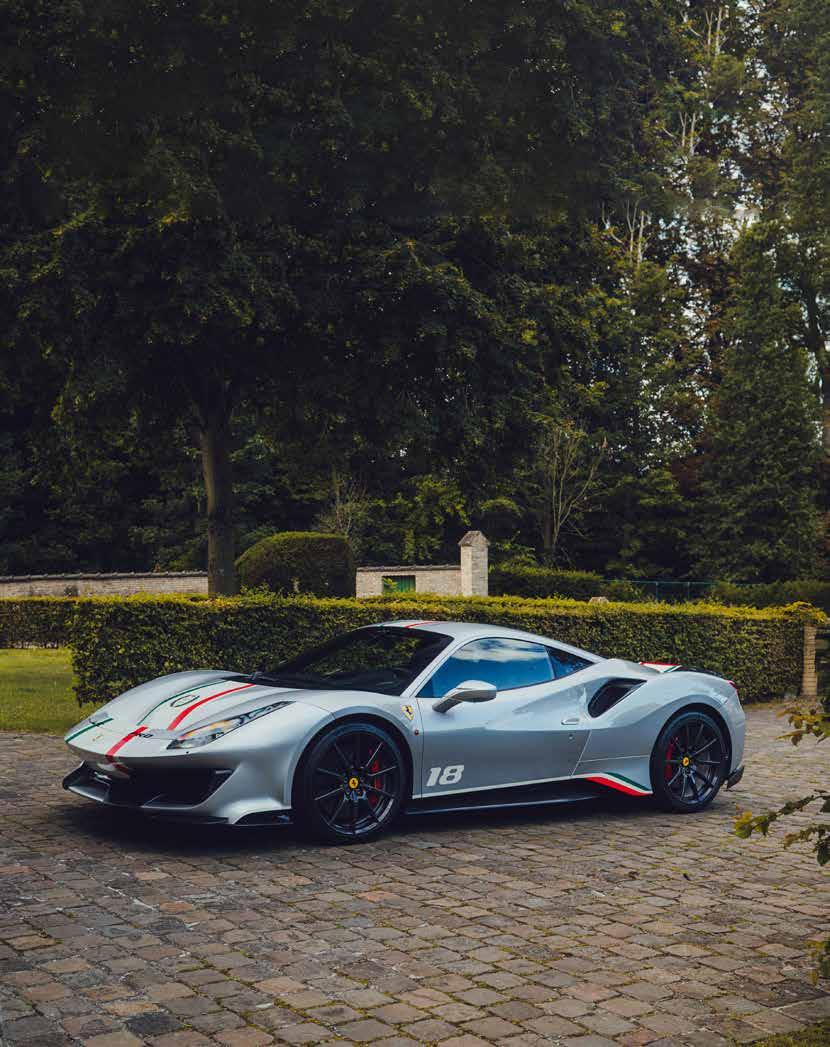
• Originally only available to Ferrari's racing driver clients
• Ultimate iteration of Ferrari's award-winning V8
• Finished in elegant Argento Nürburgring 101/C
• Delivered new to Austrian pilot
• Factory warranty until 11 March 2026
• Ferrari service included until 20 March 2027
• Comes with 1st owner Austrian registration documents
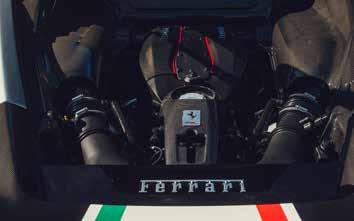
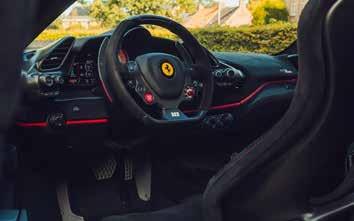
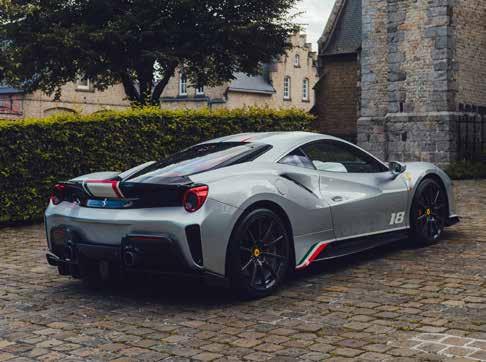
Unveiled on the eve of the 2018 24 Hours of Le Mans, the 488 Pista Piloti Ferrari was conceived by Ferrari's Tailor Made department as a tribute to the AF Corse racing team's FIA WEC GTE Pro titles in 2017. The Pista's design was influenced by the 488 GTE and 488 Challenge racing variants. Available exclusively to Ferrari's racing driver clients, ensuring its extreme rarity and desirability, the Piloti Ferrari featured a bespoke livery inspired by the No.51 488 GTE, along with a host of unique interior and exterior details. Among the four colours offered, Argento Nürburgring, which this car has, is by far the most elegant and understated, perfectly accentuating the model's racing lines.
At the heart of the Ferrari 488 Pista is a strengthened version of the celebrated 3.9-litre twin-turbocharged V8 producing 720 PS (710 bhp) and 770 Nm of torque, which was voted 'International Engine of the Year' in 2018. The 488's performance remains astonishing: 0-100 km/h in 2.85 seconds, 0-200 km/h in 7.6 seconds, and a top speed exceeding 340 km/h. With 50 PS more power and significant weight savings over the 488 GTB; advanced aerodynamics derived from Ferrari's GTE programme (S-duct, vortex generators, revised underbody); and the availability of carbon-fibre wheels for the first time on a Ferrari road car, the Pista represents the pinnacle of the Special Series lineage. In short: this is the ultimate iteration of Ferrari's award-winning V8, incorporating advanced aerodynamics and chassis technology lifted directly from the 488 GTE racer.
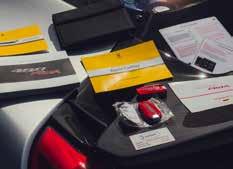

Highlights of this car's exceptional specification include the following:
• Exterior: full Piloti Ferrari Tailor Made livery, tricolore stripes, '18' race number, WEC/ PRO logos, black S-duct, Tailor Made plaque
• Carbon exterior pack: splitter, diffuser, air intakes, rear bumper and engine covers
• 20" carbon-fibre wheels, ultra-light and highly sought after
• Titanium exhaust system, suspension lifter, electrochromic mirrors, HELE system
• Interior: Alcantara Nero 9440, extended carbon fibre trim in matte finish (dashboard, console, sills, luggage compartment)
• Piloti Ferrari detailing: tricolore paddle 'dreamlines', bespoke stitching in Rosso 0504, Cavallino stitched on headrests, Tailor Made dedication plate
• Track-focused options: Ferrari telemetry system, Track inner camera kit, 4-point harnesses, racing seats (Medium size), fire extinguisher, white rev counter
• Additional convenience: Apple CarPlay, Hi-Power Hi-Fi, navigation with Bluetooth, rear parking camera
The 488 Pista Piloti Ferrari remains one of the most exclusive modern Ferraris: a direct motor sport homage, a Tailor Made creation, and a peak of the Special Series bloodline that includes the 360 Challenge Stradale, 430 Scuderia and 458 Speciale. Rarely seen on the open market, oneowner examples of this calibre, especially those finished in elegant Argento Nürburgring and with the most desirable options, represent a singular opportunity for the discerning collector.
€540,000 - 580,000
For more information on the Symbol next to the Lot Number, please refer to the Lot Symbols Key at the front of the Catalogue.
Chassis no. AM109A1*1210
Engine no. AM109A1*1210

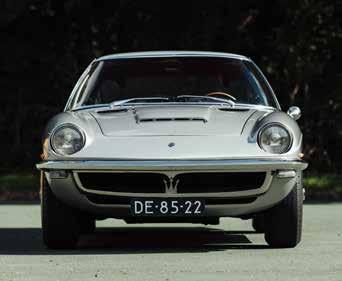
• One of only 828 Mistral Coupés produced
• Ultimate and most desirable 4.0-litre engine
• Aluminium coachwork
• Restored in 2010
"We do not suppose there are many cars whose names conjure up an aura of exotic glamour to the same extent as that of Maserati. Even now, many years after the company has withdrawn from any form of competition, past glories linger on." - Sporting Motorist, 1965.
Maserati's survival strategy for the 1960s centred on establishing the company - which hitherto had mainly concentrated on its Grand Prix and sports car racing activities - as a producer of road cars. The Modena marque's new era began in 1957 with the launch at the Geneva Salon of the Touring-bodied 3500 GT. A luxury aluminiumbodied '2+2', the 3500 GT drew heavily on Maserati's competition experience, employing a tubular chassis frame and an engine derived from the 350S sports car unit of 1956. Suspension was independent at the front by wishbones and coil springs, while at the back there was a conventional live axle/semi-elliptic arrangement. The 3500 GT's designer was none other than Giulio Alfieri, creator of the immortal Tipo 60/61 'Birdcage' sports-racer and the man responsible for developing the 250F into a World Championship winner. The twin-overheadcamshaft, six-cylinder engine was a close relative of that used in the 250F and developed around 220bhp initially, later examples producing 235bhp on Lucas mechanical fuel injection.
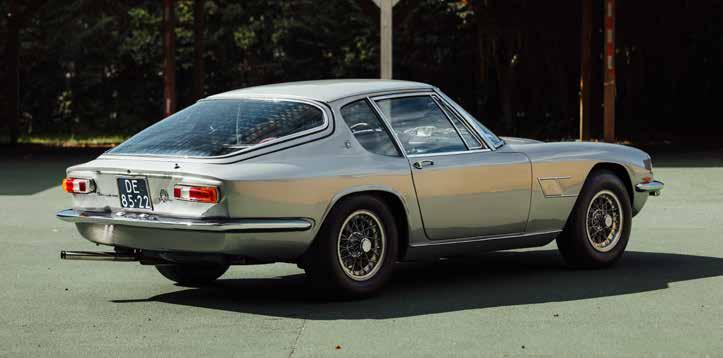
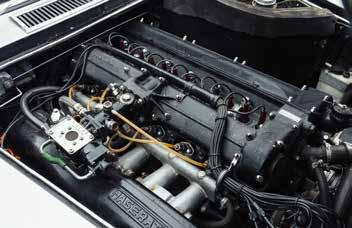
Built initially with drum brakes and four-speed transmission, the 3500 GT was progressively updated, gaining five speeds, front disc brakes and, finally, all-disc braking.
The next development of the theme arrived in 1962. Built on the shortwheelbase chassis of the Vignale-bodied 3500 GT Spyder, the Sebring coupé featured a five-speed gearbox, disc brakes and fuel injection as standard equipment, with automatic transmission, air conditioning and a limited-slip differential available as options.
Last of the classic six-cylinder Maseratis, the Pietro Frua-styled Mistral commenced production in 1963. The 3.7-litre version of the famous long-stroke engine was fitted to most cars, other options being the 3.5-litre or, from 1966, the 4.0-litre unit, all of which came with Lucas fuel injection. A handsome two-seater on a shortened, square-tube chassis, the aluminium-bodied Mistral was built in Coupé and Spyder versions, the former's opening rear window hatch making it unusually practical for a sports car.
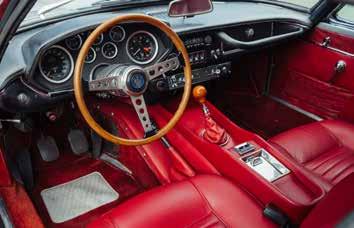
Sporting Motorist was highly impressed by what Frua had achieved: "... this must surely be one of the best-looking cars that we have had through our hands. It looks dashing without being flamboyant, smart without being vulgar, purposeful without being brutal." Sporting Motorist concluded its test thus: "Overall, the Maserati Mistral is a magnificent motorcar, not only in appearance but in performance." We can only concur.
As with the Sebring, a five-speed gearbox, disc brakes and fuel injection were standard equipment; automatic transmission, air conditioning and a limited-slip differential the options. Mistral production ceased in 1970, by which time a total of 828 Coupés and 123 Spyders had been built.
A 1967 model, this Mistral 4000 has the desirable combination of the 4.0 liter engine and the manual transmission. The car was sold new in 1967 to mister Mario Calva in Turin and came to The Netherlands in 1990. The car was restored and resprayed in 2018 and the engine rebuild in 2017. It looks stunning in Silver metallic over a red Connolly interior The car is in generally very nice condition, with very good engine, transmission and interior. It has a matching engine and gearbox and it comes with Dutch registration documents. It is offered with a history file.
€100,000 - 140,000
Chassis no. 106327
Engine no. 72593
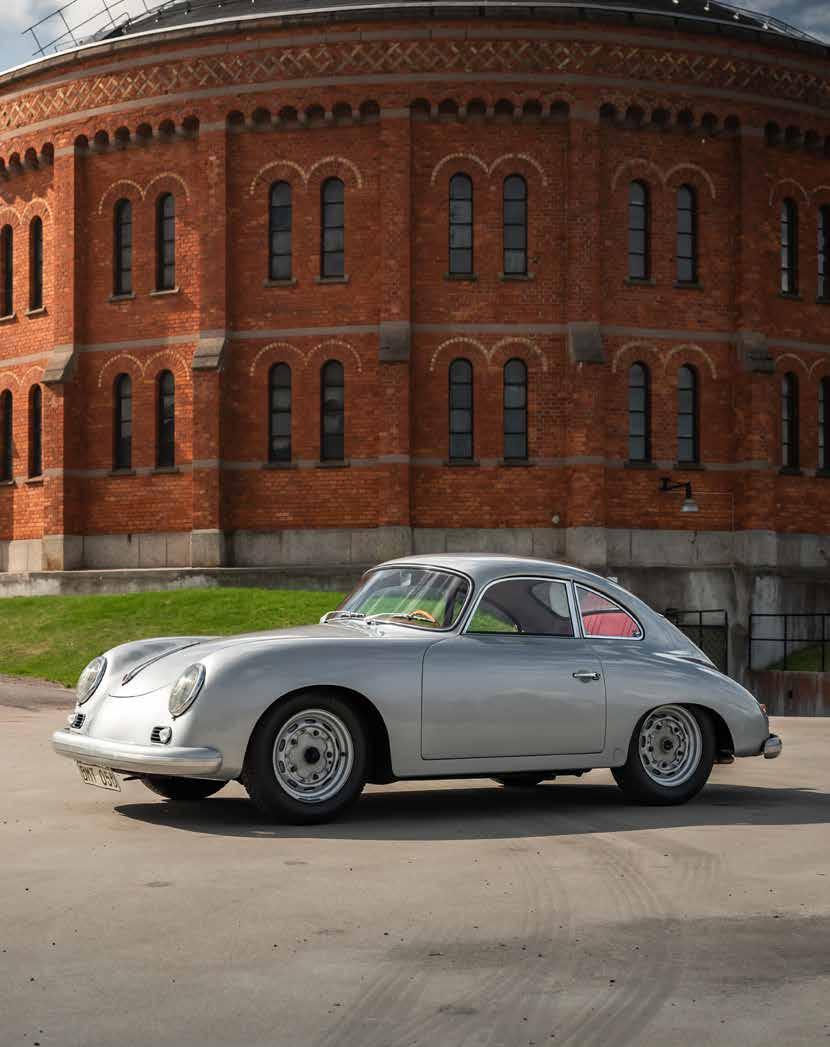
• Delivered new in Sweden
• Matching-numbers Type 616/1 60bhp engine
• Professionally restored between 2001 and 2005 (records available)
• Extensive history file
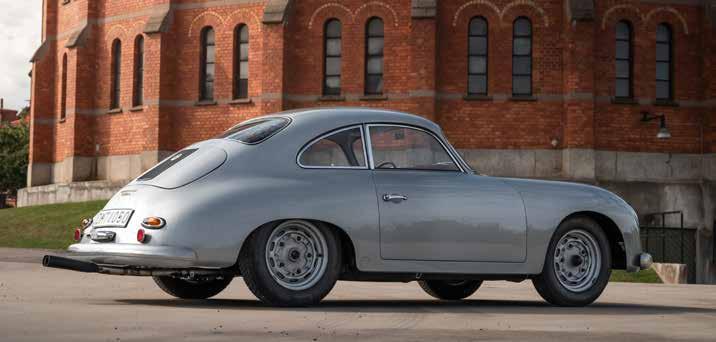

The work of Ferdinand Porsche's son, 'Ferry', the 356 was based on the Volkswagen designed by his father. Manufacture commenced in 1948 with a short run of aluminium-bodied cars built at Gmünd before Porsche began volume production of the steel-bodied 356 coupé at its old base in Stuttgart, at first in premises shared with coachbuilders Reutter and then (from 1955) in its original factory at Zuffenhausen. The Porsche 356 set a new standard for small sports cars on its arrival and would prove adaptable to all forms of motor sport including circuit racing and rallying. The year 1955 marked the arrival of the revised 356A model, the newcomer being readily distinguished by its curved windscreen and 15" - down from 16" - wheels. Regularly revised and updated, Porsche's landmark sports car would remain in production well into the 911 era, the final examples being built in 1965.
Sold new in Sweden in 1959, this Porsche 356A 1600 Coupé has the 60bhp Type 616/1 engine and comes with a Porsche Certificate; the latter confirms it has matching numbers and was ordered finished in silver metallic with beige leatherette/corduroy interior, the latter equipped with optional safety belts.
The first owner was one Nils Henriksson from Stockholm, who owned the car, carrying the registration 'AA3520', until November 1963. Nils traded in the Porsche at Förenade Bil, Brahegatan 38 in Stockholm.
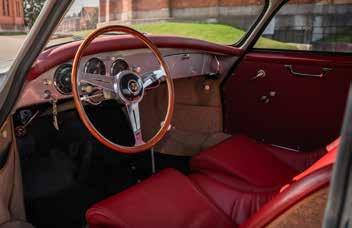
It was then bought by Lars Holmberg of Örebro on 19th October 1964. He owned the Porsche, re-registered as 'T34560', until 3rd July 1970, when the car failed the recently introduced traffic safety vehicle inspection test (MoT). Lars Holmberg kept the car laid up in a garage in Örebro from 1970 until 2001 when he sold it to Nichlas Gatensjö. Mr Gatensjö commissioned a complete renovation of the car by Lars-Åke Ingsten, the well-known and highly respected Porsche and Volkswagen renovation specialist in Helsingborg, Sweden. The renovation was carried out between 2001 and 2005.
In 2007 the engine was uprated to 1,720cc with Shasta pistons, Super camshaft, SC heads with electronic ignition system. This engine work was carried out by Fredrik Buchaus in Sigtuna, Sweden.
The car comes with Swedish registration documents and comprehensive documentation including photographs of the renovation, inspection reports and invoices. Also on file is extensive documentation from the 1960s, including a copy of the chassis card from Scania-Vabis (the Swedish Porsche importer at the time); the card is dated 11th February 1959 and records some warranty work on the car at the time.
€95,000 - 115,000
No Reserve
Chassis no. 151630
Engine no. 83291 (see text)
Gearbox no. 26 005

"...after a turn at the wheel of the new Porsche... one is forced to admit that this is the Car of Tomorrow. That appears, on its face, to be an exaggerated statement, but experience with the car has given an entirely new driving experience to the test staff. It is safe to say that no car in the history of Road & Track has offered so many different and new driving sensations." - Road & Track on the Porsche 356, November 1952.
Although Ferdinand Porsche had established his automotive design consultancy in the early 1930s, his name would not appear on a car until 1949. When it did, it graced one of the all-time great sports cars: the Porsche 356. Having commenced manufacture with a short run of aluminium-bodied cars built at Gmünd, Porsche began volume production of the steel-bodied 356 coupé at its old base in Stuttgart, at first in premises shared with coachbuilders Reutter and then (from 1955) in its original factory at Zuffenhausen.
• Delivered new to the USA
• An older restoration
• Comes with the matching numbers engine
• Porsche 912 90bhp engine installed
• Porsche Certificate of Authenticity
The work of Ferry Porsche, the 356 was based on the Volkswagen designed by his father. Like the immortal 'Beetle', the 356 employed a platform-type chassis with rear-mounted air-cooled engine and torsion bar all-independent suspension, yet somehow contrived to offer level of performance that belied the basic layout's humble origins.
In 1951 an aluminium-bodied works car finished first in the 1,100cc class at the Le Mans 24-Hour Race and 20th overall, thus beginning the marque's long and illustrious association with La Sarthe. Constant development saw the 356's engine progressively enlarged, with 1.3-litre and 1.5-litre units first becoming available in 1951. In 1952 a Porsche synchromesh gearbox was adopted and the original split windscreen replaced by a one-piece; the latter was still V-shaped, gaining the sobriquet Knickscheibe (bent window) as a result. 1955 marked the arrival of the revised 356A, the newcomer being readily distinguished by its curved windscreen and 15" - down from 16" - wheels.
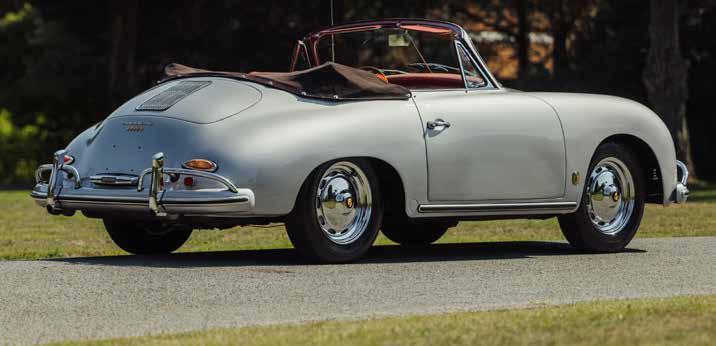
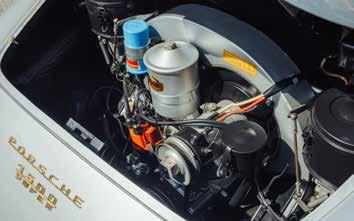
Cabriolets had been manufactured right from the start of 356 production, but the first open Porsche to make a significant impact was the Speedster, introduced in 1954 following the successful reception in the USA of a batch of 15 special roadsters. The Speedster was dropped in 1958 and replaced by the more civilised Convertible D, which differed principally by virtue of its larger windscreen and winding side windows. Porsche sub-contracted cabriolet body construction to a number of different coachbuilders, this example being the work of its long-established collaborators, Karrosserie Reutter.
Manufactured on 2nd February 1959, this very rare and highly soughtafter Porsche 356 variant was owned by the Morris family of Berkeley, California from new until 2004 when it was sold to one Norman Petersen in San Francisco. In 2014 Mr Petersen sold the car back its original owners and it would remain with them until sold to the current owner in The Netherlands in 2021, since when it has formed part of their private collection. According to our vendor, this car has always been taken care of and has never seen any rust or damage in his life. It always lived in a dry climate.
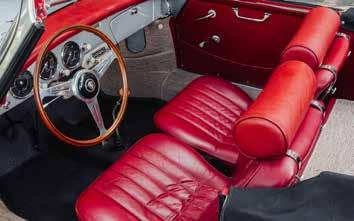
Painted over 20 years ago, it is said to retain all its original panels and numbered components: floor, battery box, gearbox, doors, door panels, colours, etc. The convertible top is 'as new' and all panel gaps are excellent.
The accompanying Porsche Certificate of Authenticity reveals that '151630' was specified with US bumpers, sealed beam headlights, Koni shock absorbers, and Phoenix tyres. The original colour scheme was Silver Metallic with red leather upholstery, and the car was destined for Porsche's distributor, Max Hoffman, in New York. This car was ordered with the 1600cc 'S' engine producing 75bhp, the most powerful option available for a 356 in 1959. The original engine was fully rebuilt by San Francisco Porsche specialists The Stable in 2007 and is included in the sale. At present the car has a 90bhp engine from a Porsche 912 installed, which likewise was fully rebuilt in 2014. Our vendor states that the car is 'on the button', running and driving beautifully, and displaying excellent oil pressure. The contents of the history file include copies of the 2021 shipping paperwork, sundry invoices, a California Certificate of Title, and a Porsche 356A driver's manual. It has a US title but all EU taxes have been paid.
€170,000 - 200,000
One registered owner from new 2005
Chassis no. ZAMDF44B000012083
Engine no. 22
• One of only 50 built
• Scrupulously maintained (13 services since new)
• Last service in August 2025
• One of the most exclusive and collectible of modern Maseratis
• Delivered new to its single registered owner in Italy
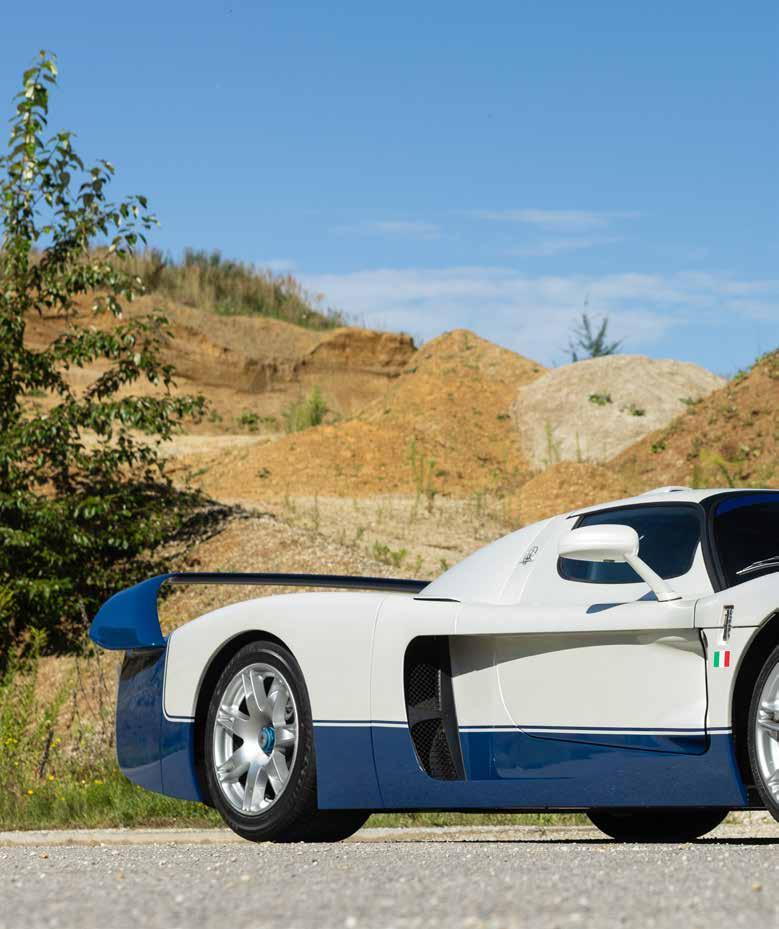

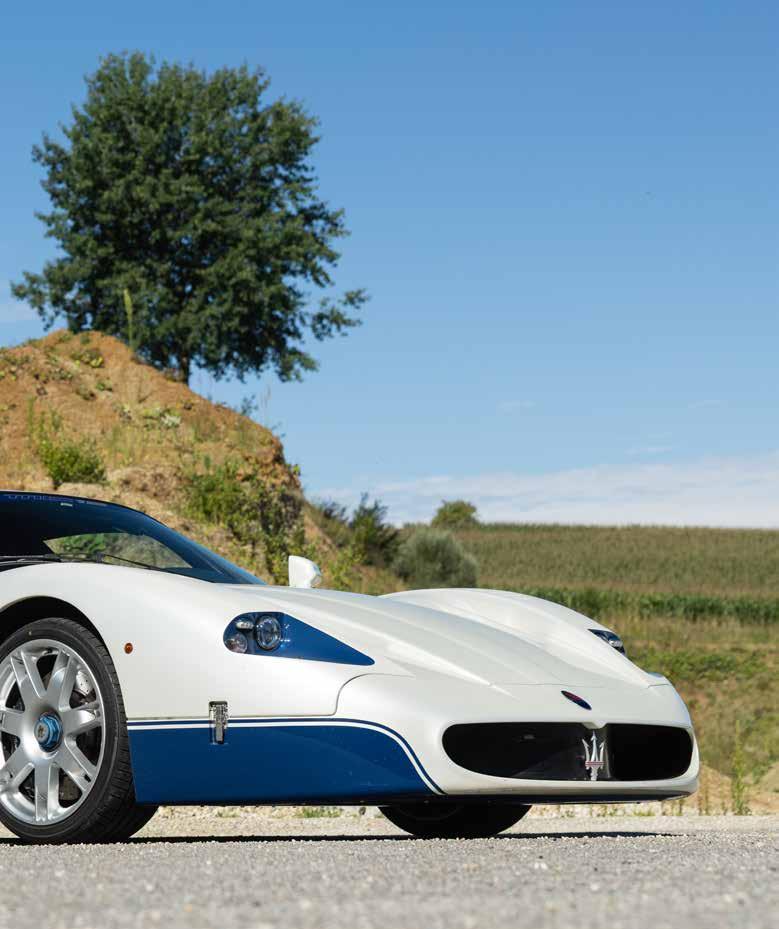
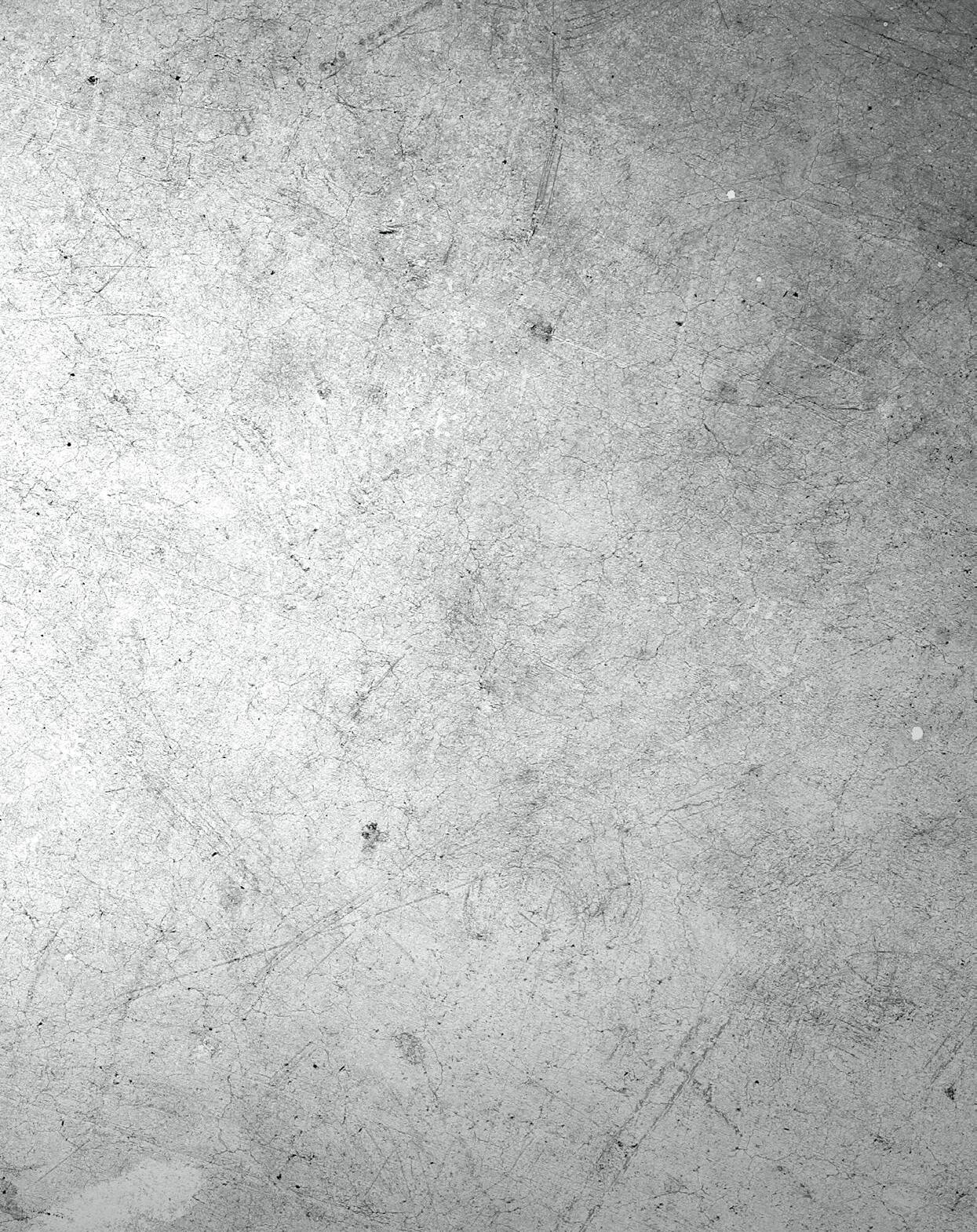
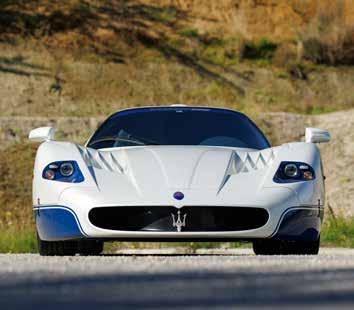

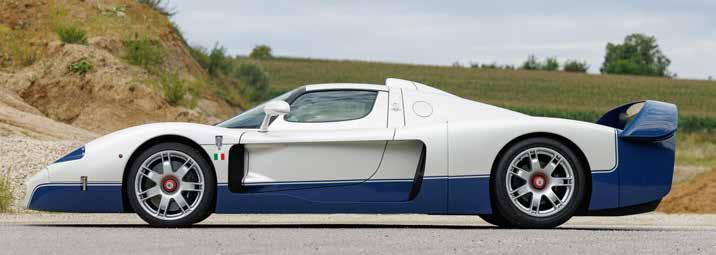
"In the recent realm of automotive legends, the Maserati MC12 stands as a beacon of power, precision, and unparalleled performance. Born from the fires of motorsport, this extraordinary machine was crafted to dominate the FIA GT Championship, pushing the boundaries of speed and engineering excellence." - Carrozzieri Italiano.
Maserati's amazing MC12 was a limited edition 'homologation special' conceived with the sole purpose of providing the famous Italian manufacturer with a competitive car for international GT racing. Two batches of 25 cars each were built in 2004 and 2005 respectively, each batch with slightly differing specifications to meet FIA rule changes, for a total of only 50 cars. Styled by Maserati Centro Stile, the MC12 was based on the Ferrari Enzo, albeit larger overall, and used developments of the Enzo's normally aspirated 6.0-litre V12 engine and its associated six-speed automated manual gearbox. Maximum power output in Stradale specification was 621bhp. Performance figures of 0-100km/h (62mph) in 3.8 seconds and a maximum speed of 330km/h (205 mph) were claimed.

The MC12's monocoque chassis was constructed of carbon fibre and Nomex, with aluminium sub-frames front and rear. Suspension was by double wishbones with pushrod-operated coil spring dampers. Two suspension modes were available: 'Sport' (road) or 'Race' (track).
Its 'homologation special' status notwithstanding, the MC12 boasted a most luxurious interior combining carbon fibre, blue leather and silver 'Brightex', a synthetic material said to be 'too expensive for the fashion industry'. Nevertheless, Maserati were criticised for not providing an audio system, or room to accommodate an after-market one, while other criticisms concerned the lack of a boot, rear window and spare tyre, but then the MC12 was never intended to be a serious Gran Turismo.
Rather, it did exactly what its creator intended, winning the FIA GT Manufacturers' Cup in 2005 by a comfortable margin over runners-up Ferrari, while the two teams running MC12s, Vitaphone Racing and JMB Racing, finished 1st and 2nd respectively in the Team Cup competition.
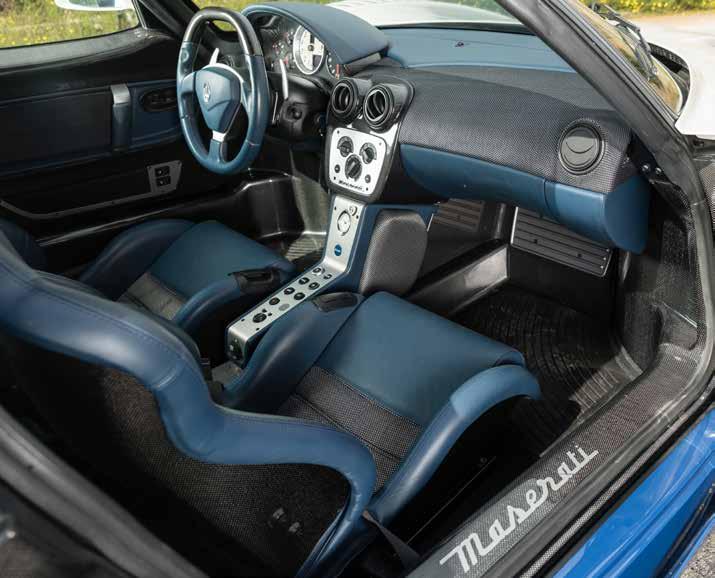
Vitaphone would go on to win the Team Cup with the MC12 for the next four years, while MC12 drivers Michael Bartels and Andrea Bertolini would share 1st place in the Drivers' Championship in 2006, 2008 and 2009. In 2007 Maserati again secured the Manufacturers' Cup while Thomas Biagi won the Drivers' Championship. To say that the MC12 had been immensely successful would be somewhat of an understatement.
In mid-2006 Maserati unveiled the Corse, a $1.7 million track-only version of the FIA GT Championship-winning MC12 reserved for valued Maserati customers, although its use would be restricted to private track days.
This stunning MC12 Stradale was delivered new to its only registered owner on 5th January 2005 via the Rome-based Maserati and Ferrari concessionaire SA.MO.CAR. SpA. It was first registered to a leasing company for the owner's benefit, and subsequently to him personally
This car is finished in the only available colour combination of Pearlescent White with blue accents and a blue interior, a tribute to the Camoradi racing team of the late 1950s.

The Rome-based enthusiast owner enjoys the cars in his custody and has looked after the Maserati carefully, as evidenced by regular services, all but one carried out by SA.MO.CAR and listed below:
Service 25.07.2005 at 4,901km
Service 07.04.2006 at 9,385km
Service 24.05.2007 at 15,720km
Service 01.08.2008 at 20,002km
Service 20.09.2010 at 27,546km
Service 03.01.2013 at 32,749km
Service 30.06.2014 at 36,550km
Service 13.07.2016 at 39,368km
Service 10.08.2017 at 40,511km
Service 29.03.2018 at 41,956km
Service 27.08.2021 at 43,398km
Service 08.01.2024 at 44,781km
Service 21.08.2025 at 45,508km


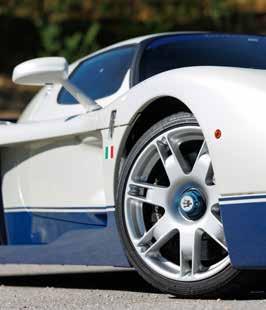

The service carried out in January 2024 included removal of the engine to fit a new sump gasket and various other gaskets to cure an oil leak. For this to be done the car was transported back to the factory in Modena; the total cost of these works amounted to almost €28,000. The last service listed above was carried out by the official Maserati dealer Mori Schöberl in Ingolstadt, Germany.
It is refreshing to see a supercar that has been used and enjoyed, and it is clearly a testament to the quality of engineering that these exotic cars can actually be driven on the road. Many experts agree that cars are better off being driven, as static display often leads to more problems. And to put the distance travelled into perspective, it amounts to approximately 2,200 kilometres per year.
Offered with cancelled Italian registration documents and the important original stamped service book in its dark blue leather pouch, this beautiful MC12 - unquestionably one of the most exclusive and collectible of modern Maseratis - is for the true enthusiast.
€3,400,000 - 4,000,000
For more information on the Symbol next to the Lot Number, please refer to the Lot Symbols Key at the front of the Catalogue.

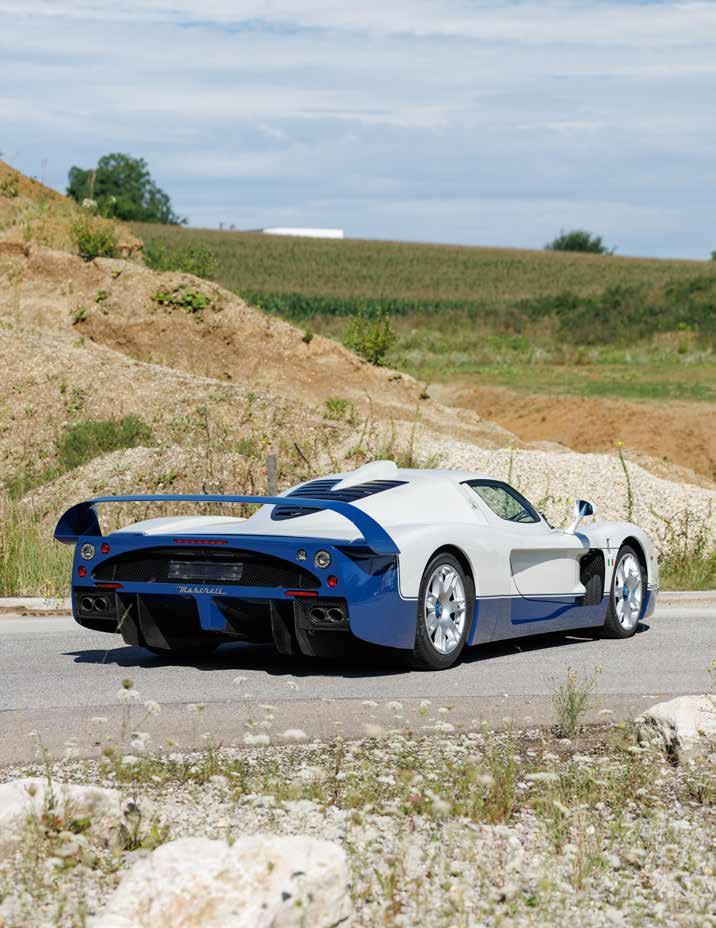
Chassis no. HK2 A178
Engine no. D383 522R

"The HK500 was the most interesting car we ever made but the Facel II was the best. It was totally elegant." – Jean Daninos.
In its relatively short life, the French firm of Facel produced approximately 2,900 cars, all of which were stylish, luxurious and fast. Hand built, they were, of course, necessarily very expensive – the Facel II was priced in Rolls-Royce territory – and were bought by the rich and famous seeking something exclusive and distinctive. The roll call of owners includes royalty, politicians, diplomats and entertainers: Tony Curtis, Danny Kaye, Ringo Starr, Joan Fontaine, Ava Gardner, and Tony Franciosa - whose car is offered here - being counted among the latter. Confirming that there was high-performance substance behind Facel's unquestionable style, they were owned and driven by great motor racing figures such as Sir Stirling Moss, Maurice Trintignant and Rob Walker.
Forges et Ateliers de Constructions d'Eure-et-Loire (Facel) was founded in December 1939 as a subsidiary of the military aeronautics company Bronzavia. After WW2 Facel was headed by Jean Daninos, formerly Bronzavia's technical director, who merged the company with Mètallon. Facel engaged in the supply of car bodies to Panhard, Simca, and Ford before diversifying into automobile manufacture in its own right with the launch of the Vega at the 1954 Paris Salon.
• The 79th Facel II produced
• Automatic transmission
• Restored in the early 2000s
• Present ownership since 2023
• Extensively refurbished (€30,000 spent)
Government legislation had effectively killed off France's few surviving luxury car manufacturers after WW2, but that did not deter Jean Daninos in his bold attempt to revive what had once been a great French motoring tradition. A luxurious Grand Routière, the Vega took its name from the brightest star in the Lyra constellation and featured supremely elegant coupé bodywork welded to a tubular-steel chassis. There being no suitable French-built power unit, Daninos turned to the USA for the Vega's, setting the pattern for future models. The engine chosen initially was Chrysler's 4.5-litre, 180bhp V8, while there was a choice of push-button automatic or Pont-à-Mousson four-speed manual transmission.
Improvements to the first FV model were not long in coming, the FV1, introduced in March 1955, featuring a lengthened wheelbase for increased rear seat room and a 4.8-litre, 200bhp Chrysler V8. A few FV1 cabriolets were built but Daninos was not keen on soft-tops and production concentrated on fixed-head coupés, although there was also the Excellence, a limited-edition four-door saloon on an extended wheelbase.
An improved model, the HK500, appeared in 1957. Maximum power was now around 360bhp courtesy of the latest, 5.9-litre (later 6.3-litre) version of Chrysler's 'Hemi' V8 while top speed rose to around 140mph, making the HK500 one of the fastest cars of its era.

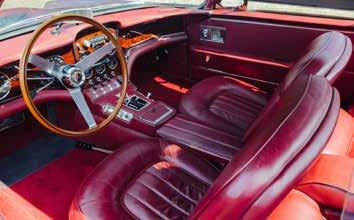
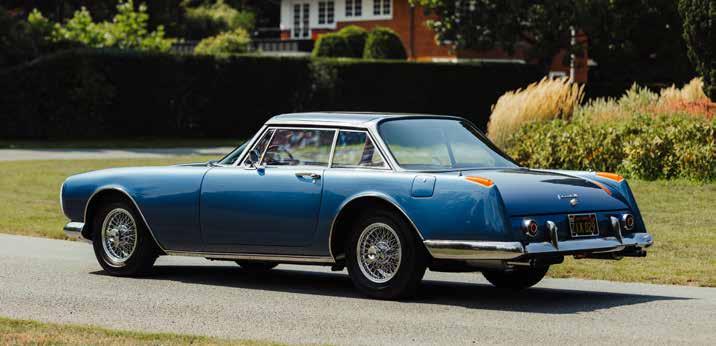
Power steering became an option and Dunlop disc brakes were adopted as standard equipment in 1960. Capable of effortless and virtually silent 120mph cruising, the HK500 possessed, according to The Motor magazine, "a brilliant combination of good comfort and quite exceptional roadholding".
Launched in 1961, the Facel II was destined to be the last of the V8engined models. Road testing one in 1962, Autocar commented: "A striking amalgamation of French, American and British components, the big Facel has a wonderful way of covering the miles extremely fast without mechanical fuss." Following an unsuccessful venture into engine manufacture that effectively bankrupted the company, production ceased in 1964 after approximately 180 Facel IIs had been built (published figures vary). Today these rare Franco-American GTs are among the most highly sought after of post-war classics.
According to Facel factory production records kept by the Amicale Facel Holland, chassis number 'HK2 A178' was built per order of European car importer Max Hoffman for the American market. The Facel carried a production number of '178', indicating that it was the 79th Facel II produced. It was delivered with a 383ci (6.3-litre) Chrysler wedge V8 engine and TorqueFlite three-speed automatic transmission.
As standard equipment the Facel II featured Dunlop disc brakes, a limited-slip differential, power steering, a single four-barrel Carter AFB carburettor, power windows, clear glass, and an HMV radio with automatic antenna. Options on this car included wire wheels and air conditioning.
This car was restored to a very high standard in the early 2000s in the colour combination of Medium Blue with a dark red leather interior. Between 1980 and 2011 the Facel was in the collection belonging to Lee Munder of Palm Beach, Florida, and in another collection from 2012 to 2023 (see copy Florida CoT on file). In 2023 the car was purchased by our vendor and shipped to The Netherlands. The new owner had the Facel fully checked, serviced, tuned, the brakes rebuilt, new tyres fitted and the stainless steel trim removed and repolished. In addition, the car was repainted to a very high standard. According to our vendor, once stripped to bare metal it was found to be very sound, with an accident- and rust-free body. This extensive refurbishment cost approximately €30,000. As one would expect, this well restored Franco-American classic is said to run and drive beautifully. It has a US title; all EU taxes have been paid.
€170,000 - 200,000
Chassis no. 0874
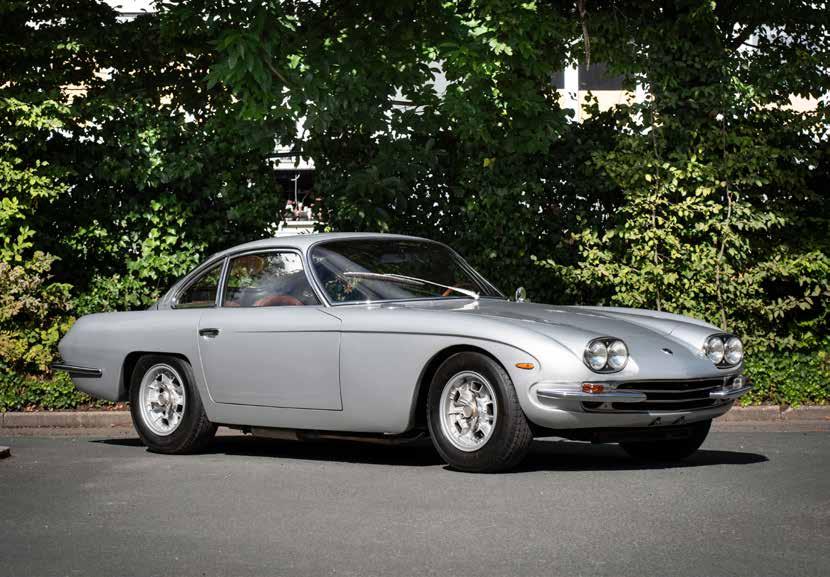
It is the stuff of legend that Ferrari-owning industrialist Ferruccio Lamborghini only turned to automobile manufacture as a result of receiving off-hand treatment at Maranello, vowing to build a better car. A successful manufacturer of tractors and related machinery, Lamborghini possessed the resources to realise his dream without having to compromise.
Lamborghini's first production car, the Carrozzeria Touring-styled 350 GT, debuted at the 1964 Geneva Motor Show. The work of two of Italy's most illustrious automobile designers, the 350 GT featured a glorious 3.5-litre, four-cam V12 designed by Giotto Bizzarrini, housed in a chassis penned by Gianpaolo Dallara. The 350 GT's four camshafts and all-independent suspension meant that it upstaged the best that Ferrari offered at the time, but to compete with his Maranello rival's larger models Lamborghini needed a four-seater, and the 400 GT 2+2 duly appeared in 1966.
• The first four-seater Lamborghini model
• One of only 247 built
• Complete ownership history from new
• Original colour scheme Grigio Argento with Tobacco leather interior
• Comes with current Belgian registration documents
A development of the 350 GT, the newcomer used an enlarged - to 3,929cc - V12. This 4.0-litre unit had first appeared in 1965, finding its way into a handful of late 350 GTs, this interim model being known as the 400 GT. Lamborghini's own five-speed all-synchromesh manual transmission first made its appearance on these cars. The 400 GT's claimed maximum power was 320bhp - up from the 350 GT's 270 - an output sufficient to make the former a 150mph-plus (240km/h-plus) car.
The 400 GT 2+2 retained the overall, and highly acclaimed, looks of the 350 GT while contriving to be slightly taller in the interests of increased rear-passenger headroom. Bodies were now steel (the 350 GT's had been aluminium) and the 400 GT 2+2 had the twin headlights that had already been adopted in place of the oval originals, largely to meet the USA's requirements.
Despite its novice status as an automobile manufacturer, Lamborghini soon dispelled any lingering doubts about its ability to compete with the world's best Grand Tourers.
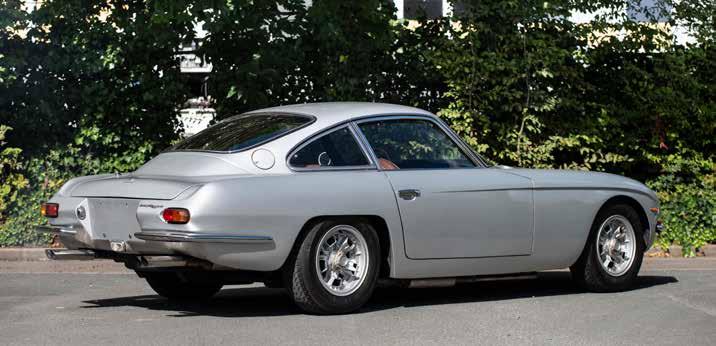
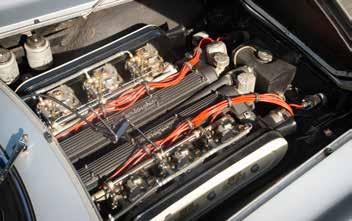
Reviewing the 400 GT in its 2+2 form in 1967, Autocar magazine voted it "better than all the equivalent exotic and home-bred machinery in this glamorous corner of the fast-car market". The relaxed manner of its long-legged performance was reckoned the finest quality of the Lamborghini, its V12 engine being judged to have the broadest range of smooth torque the testers had experienced. Autocar concluded: "To achieve this level of performance without noise, fuss, temperament or drama is an achievement; in the time taken for development, it is nothing short of sensational."
A total of 23 examples of the interim 400 GT and 224 of the 400 GT 2+2 were completed between 1966 and 1968, which makes it one of the rarest Lamborghini models ever built.
Chassis number '0874' was supplied new in Rome via the concessionaire Carpanelli to Mr Giovanni Albarelli on 4th April 1967 and comes with a copy of its first registration document. The original colour scheme was Grigio Argento with Tobacco leather interior, which the car retains to this day. Mr Albarelli kept '0874' for six years before the car passed to another resident of Rome, Mrs Valeria Alberti. In 1978, Mrs Alberti sold the Lamborghini to the well-known Belgian collector Baudoin Dejaiffe, who would keep it for the next 12 years.
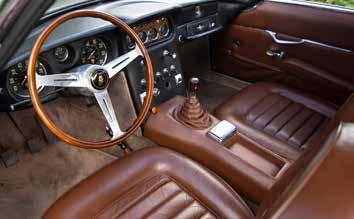
In 1990 Mr Lejaiffre sold '0874' to Claude Levy in France, who owned the car until March 1993 when it was registered to another French enthusiast, Mr Christian Bouveron. At that time the odometer total was around 52,000 kilometres, and the car received a thorough mechanical refurbishment by Lamborghini specialists Ciclet Automobiles, as evidenced by service records on file. Mr Bouveron subsequently sold '0874' to Belgian collector M. Blesin, who would keep the car for 20 years before it passed to the current owner in Belgium in March 2015. More recently the Lamborghini was treated to a full carburettor overhaul by AB Racing together with a general mechanical check-up.
Offered with a comprehensive history file, '0874' is a fine example of Lamborghini's class-leading Gran Turismo and worthy of a place in any distinguished private collection.
€250,000 - 300,000
No Reserve
Chassis no. ZA9L00000GLA12010

• One of only 328 made
• Early example equipped with Weber carburettors
• Delivered new to Oman
• With the same (third) owner since 1989
• Well maintained and unrestored
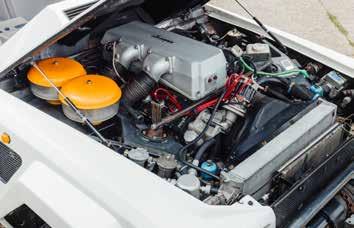
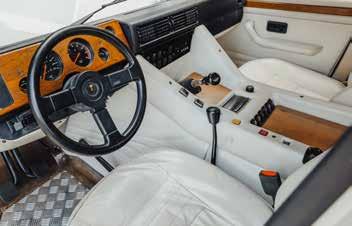

One of the most exciting and exclusive off-road vehicles ever conceived, the Lamborghini LM002 resulted from the marriage of the Countach QV's 5.2-litre quad-cam V12 to a functionally - some would say brutally - styled '4x4', the union resulting in scintillating performance and a top speed in the region of 125mph (200km/h).
Breathing via six twin-choke Weber carburettors, the engine produced 450bhp and drove via a ZF five-speed heavy-duty transmission and two-speed reduction gearbox offering a choice of ten speeds and twoor four-wheel drive. Relatively few early LM002s were delivered with carburettors before Lamborghini switched to fuel injection.
The chassis featured independent suspension all round, while the distinctive five-door body was hand made in glassfibre (wings, bonnet, roof) and aluminium (doors). The LM002, also known as the 'Rambo Lambo', came equipped in a manner one would expect from one of the world's foremost supercar manufacturers, boasting a sumptuous leathertrimmed interior, tinted power windows, and air conditioning as standard.
The LM002 had resulted from a Lamborghini project to develop a military off-roader, the first prototype, which appeared in 1977, being named 'Cheetah'. In its earliest form Lamborghini's all-terrain warrior was fitted with a rear-mounted Chrysler V8 and lacked a roof or any doors to speak of.
Shortly thereafter the LM001 emerged, this time boasting an enclosed body with four doors and a somewhat feeble AMC V8 engine, again mounted in the rear. The finished article finally arrived in 1985 in the shape of the front-engined V12-powered LM002, which was offered in military or luxurious civilian versions, the latter equipped to individual customer tastes. Some were bought by armed forces in the Middle East but proved to be expensive to maintain and were disposed of, ending up in civilian hands. A total of 328 LM002s had been completed when production ceased in 1993.
Chassis number '12010' is one of the first cars produced 1985, ordered by a prominent family in Oman. The second owner was a Dutch doctor working in Oman, who sold the car (via a Belgian dealer) to the current Belgian owner in 1989 (purchase invoice on file). This Lamborghini LM002 has enjoyed 36 years under the same ownership and has covered only some 12,800 kilometres from new. Mechanically well serviced and in good condition, the vehicle has never been restored and remains in its original configuration. It is registered in Belgium and has a green technical certificate valid until 6th April 2027. Additional documentation consists of the original Omani registration papers with translation and the names of the first two owners.
Any Lamborghini is going to be exceedingly cool, and they don't come much cooler than this stunning white-on-white LM002.
€350,000 - 400,000
Hull no. 100
Length: 6.55 metres
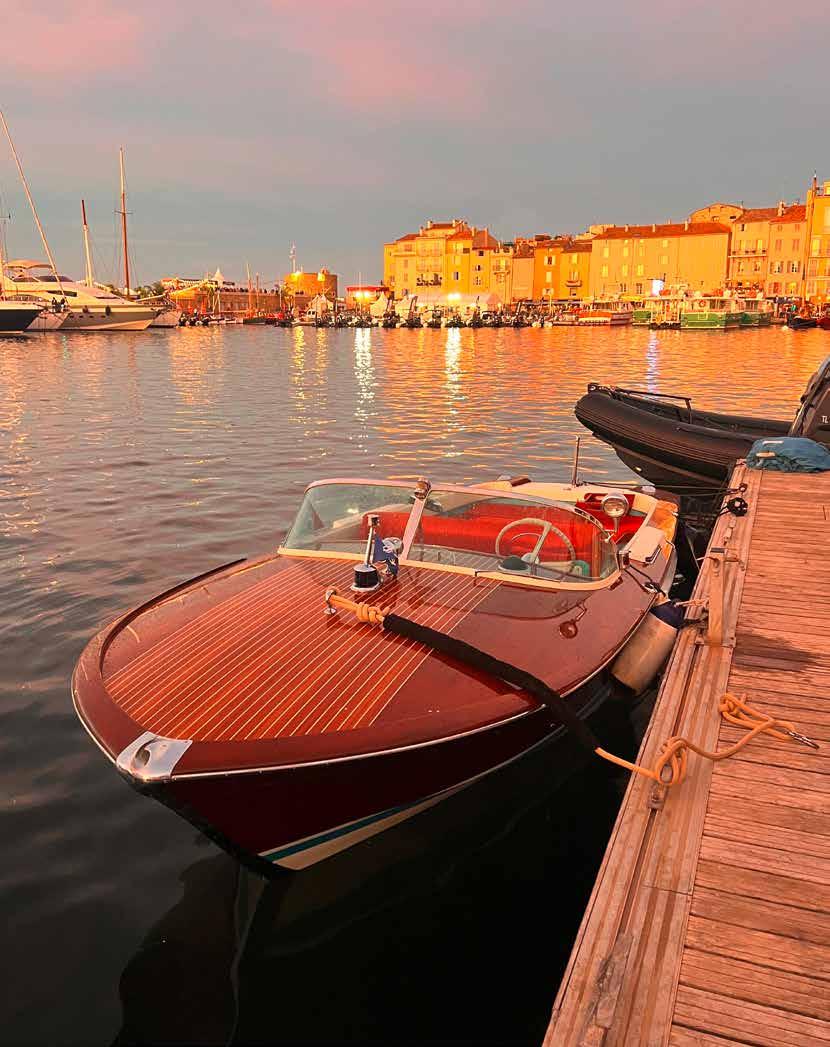
• Riva's last wooden motorboat
• One of only some 270 built
• 220bhp Crusader V8 engine
• All woodwork completely renewed in 2024
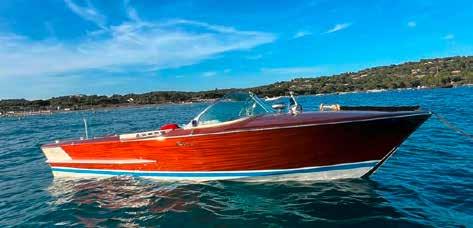

A family business dating back to 1842, Riva was founded at Sarnico, a small town on the shores of Lago d'Iseo in northern Italy, and by the 1930s was a leading manufacturer of small racing boats. In the 1950s the founder's grandson Carlo transformed the business, creating wooden boats of a style and elegance that surpassed all rivals and won the Italian firm an international reputation. Like compatriot Ferrari on the road, Riva enjoyed a imperious profile on the water, being favoured by royalty, industrialists and movie stars; Brigitte Bardot, Sophia Loren and Peter Sellers being numbered among the latter.
Named after the Mexico Olympics of 1968, the Olympic was introduced in 1969, superseding the Super Florida. Similar in style to the Florida series, the elegant and luxurious Olympic was both longer and roomier.
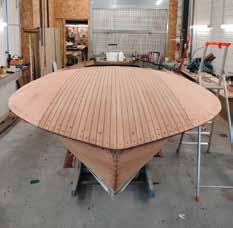
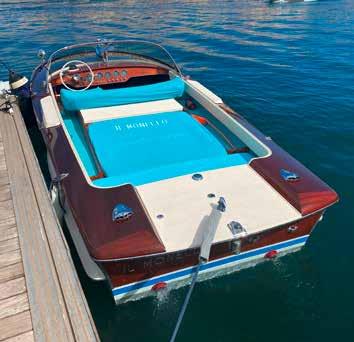
The last wooden motorboat to be designed by the Cantieri Riva (Riva Shipyard) company, the Olympic remained fundamentally unchanged until production ceased in 1983, all examples being the same length: 6.55 metres (21' 6"). The majority of the approximately 270 boats produced were completed prior to 1975 and nearly all carried 220 or 270hp Riva-badged Crusader V8 engines, making them fast and ideal for water skiing (top speed was an impressive 38 knots). The Olympic was able to accommodate six persons in comfort, and with a five-hour endurance, made long and fast passages possible.
In 2024, this Olympic's wooden elements were completely renewed, and a photo album documenting the work done is included in the sale. Beautifully presented, the boat has been at the seller's Saint Tropez home over the season and comes complete with a trailer.
€110,000 - 150,000
Chassis no. BJ43-003040
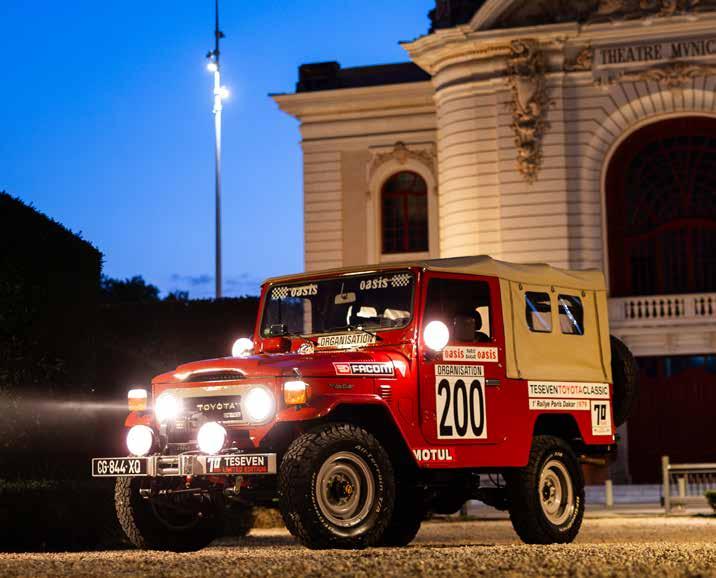
The Toyota Land Cruiser needs no introduction, so well established is its reputation around the world. Since 1951, it has been demonstrating its robustness across the continents!
Born on 13 June 1949 in Boulogne-Billancourt, Thierry Sabine began his career behind the wheel of the sports cars of the time, racing from 1969 in an Alpine A110, then in 1970 in a Porsche 911 S, all with good results, finishing second in the Critérium National des Rallyes (the French rally championship). In 1973, he also won the Rallye international de Picardie in an Alpine A110. Being something of an all-rounder, he also tried track racing, competing in endurance races, even taking the title of Champion de France des Circuits in a Porsche 911 3.0 RSR!
Just after graduating from studies in journalism, he was hired as a press officer by the town of Le Touquet-Paris-Plage, with the assignment of finding activities to enliven the town during the winter. This was where Thierry Sabine got drawn into events organisation and set up the famous Enduro du Touquet sand bike race. Meanwhile, he continued his career in motorsports, making his way into the final classification of the 1975 and 1976 24 Hours of Le Mans, sharing the wheel, for instance, with a certain Jean-Claude Andruet.
• Bought new by Diane Thierry-Mieg
• Driven by Thierry Sabine and his team for the first Dakar Rally (Oasis-Paris-Dakar)
• Professionally restored by Teseven Toyota Classic with Toyota's approval
It was in January 1977 that the idea for his greatest work, the ParisDakar, took root. He was taking part in the Abidjan-Nice rally on a motorcycle and got lost in the desert, at the border between the Ténéré and Libya. His motorcycle ran out of fuel, leaving him no choice but to abandon it and continue on foot, without water or provisions, for three days. Fortunately, he was found by a reconnaissance plane sent out by the organiser. Thierry Sabine then fell in love with Africa, "It is an experience that I wouldn't wish on my worst enemy, but I will never regret it". On his return, he met Diane Thierry-Mieg, a model, who he married in November of the same year. It was with her that Thierry Sabine finally established the Paris-Dakar, from 26 December 1978 to 14 January 1979. The idea was simple, a route starting in Paris, going through Algiers then Agadez, before finishing in Dakar. "A challenge for those who go. A dream for those who stay behind." The rest is history, a rally that celebrated its 47th edition in 2025 and which has attracted the greatest drivers in all categories.
In 1978, Thierry Sabine and Diane Thierry-Mieg acquired this Land Cruiser with the model's first earnings. It was a BJ43, chassis 3040, fitted with the robust 3.0L Type B diesel, which would have the burdensome task of carrying out reconnaissance and assistance on the first Paris-Dakar, in the hands of Thierry Sabine, along with his wife and his team of friends.
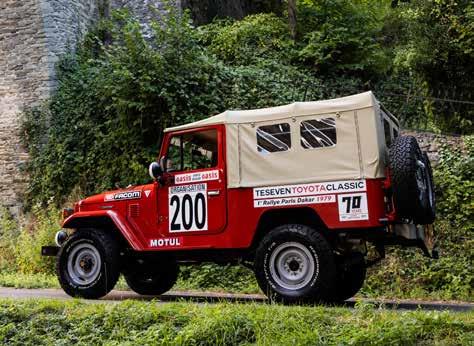
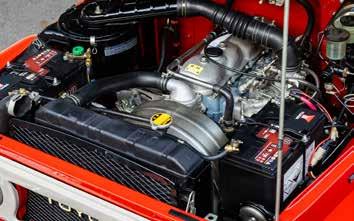
Somewhat prepared for the occasion, the Toyota notably carried four jerrycans fixed to its bumpers, two spare wheels, a radio and a tripmeter. Emblazoned with the number 200, the Toyota demonstrated its robustness, its engine running almost 24 hours a day, responsible for timing the competitors, it covered the 10,000-kilometre route without any problems, from Trocadero to Dakar. Diane remembers "I did the whole of the first Paris-Dakar sitting on a crate between 2 seats".
For the next edition, the Toyota was once again put to work, but the growing organisational operation brought in an increasing number of vehicles, both on the road and in the skys, before the Toyota retired to the French countryside, sold to a friend of the Sabines, who used it for several years as a sturdy utility vehicle.
Thierry Sabine's BJ43 was eventually located during the 2010s by the Teseven Toyota Classic team, who understood the historical significance of the 4x4, and a major restoration then began. Teseven is one of the rare specialists recommended by Toyota for the restoration of Land Cruisers, their workshop in south-west France exudes a passion for and in-depth knowledge of the famous 'Yota.
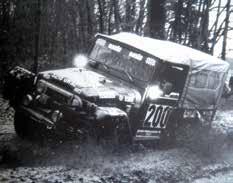

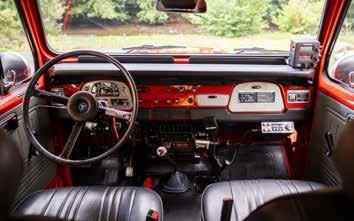
450 hours were required to restore it to a condition as good as new and true to the first time it took part in the Paris-Dakar. The vehicle was completely dismantled, each part was restored in accordance with its original state, while specific parts from the period were found and fitted in the Toyota, with some improvements: a 12-volt electric winch, electric power steering, long-range Cibié headlights, Koni shock absorbers, a stainless steel exhaust pipe, 6 new BF Goodrich tyres, 4 Toyota jerrycans, a period Twinmaster, and a Président Valery vintage CB radio.
Since the restoration was completed, the Toyota has notably been exhibited at the Dakar retrospective at Rétromobile 2024, before being driven by Diane Thierry-Mieg in the 2024 Route des Légendes. Today in rare, restored condition, this Toyota BJ43 represents a keystone of the Paris-Dakar's history, returned to its original configuration, or perhaps even better! The seller and restorer has informed us that they would like to continue to service the Toyota in years to come if it can occasionally be loaned for promotional purposes. This BJ43 is to be sold with its French registration document, as well as a certificate signed by Diane Thierry-Mieg. €100,000 - 150,000
Chassis no. 198042109500057
Engine no. 198980109500056
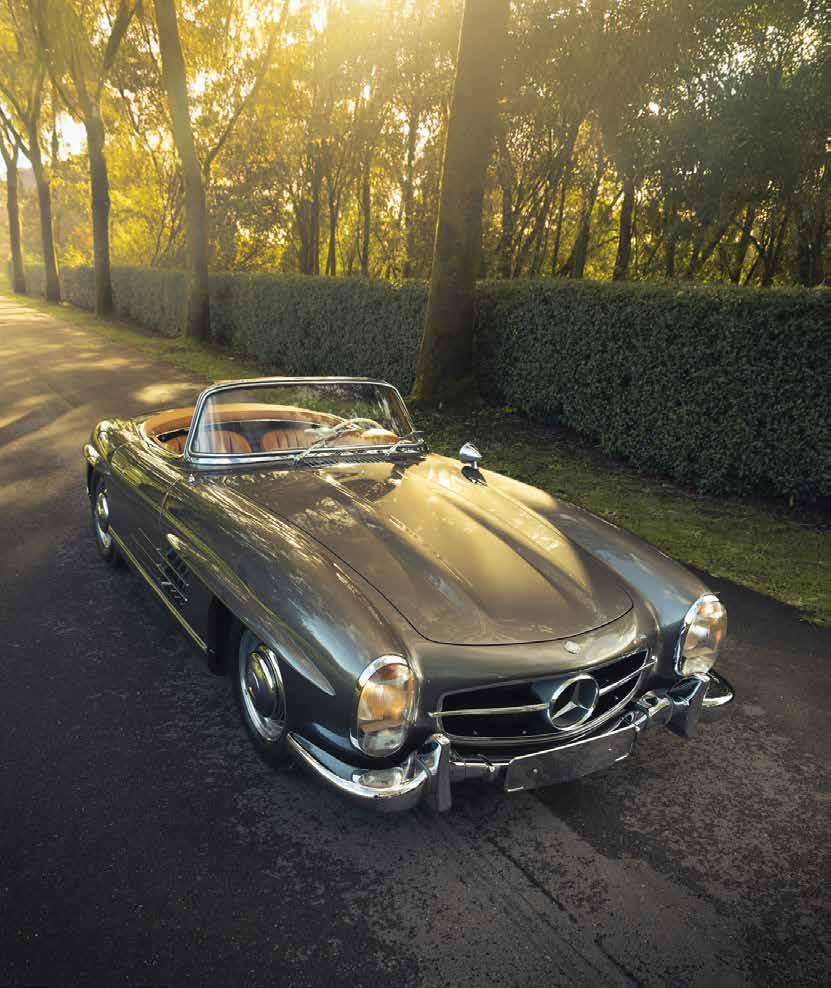
• One of 1,858 Roadsters built
• Delivered new in Dortmund, Germany
• Present ownership since 1991
• Major mechanical overhaul in 2008
• Numerous invoices
• Comes with a Dutch registration
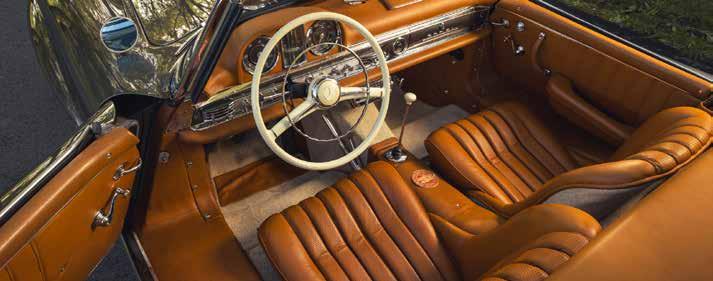

Created to spearhead Mercedes-Benz's return to competition in the post-war era, the 300 SL debuted in the 1952 Mille Miglia, finishing 2nd and 4th overall. Wins in the Carrera Pan-Americana and at Le Mans followed, and the 300 SL was on its way to becoming part of motor sporting legend. Max Hoffman, the Mercedes-Benz importer for North America, believed there would be a market for a road-going version and managed to convince the factory that such a car would be a success.
The first racers were open-topped but before the '52 season's end the distinctive 'Gullwing' doored Coupé had appeared. Unusually high sills were a feature of the multi-tubular spaceframe chassis, and while access was not a problem of the open car, the adoption of coupé bodywork required innovative thinking - hence the Gullwing doors.
Launched in 1954, the production 300 SL retained the spaceframe chassis of the racer and was powered by a 2,996cc, overheadcamshaft, inline six canted at 45 degrees to achieve a lower, more aerodynamic bonnet line. Using Bosch's innovative direct fuel injection, this state-of-the-art power unit produced 215bhp at 5,800rpm. A fourspeed gearbox transmitted power to the hypoid bevel rear axle, while suspension was independent all round by wishbones and coil springs at the front with swing axles and coil springs at the rear.
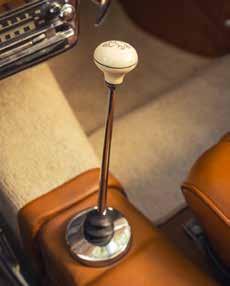
Tested by the highly respected American magazine Road & Track in 1955, the 300 SL accelerated from 0-60mph in 7.4 seconds, going on to achieve a top speed of 140mph: outstanding figures for its day. It was, arguably, the world's first supercar. Its racing parentage notwithstanding, the 300 SL was and remains a thoroughly practical automobile, as civilised in city driving as it is exhilarating on the highway.
Clearly the 300 SL Coupé would be a hard act to follow yet the Roadster version, introduced just three years later, succeeded in bettering its closed cousin's already exemplary road manners. Built with conventional doors, the 300 SL Roadster was first exhibited at the Geneva Salon in May 1957 and was an immediate hit with the 1950s 'Jet Set' of royalty, actors, and socialites. The production of an open 300 SL involved altering the cockpit area, where the spaceframe was redesigned to permit lower sills for improved access. At the same time the rear suspension was changed to incorporate low-pivot swing axles. Disc brakes were standardised from March 1961, while towards the end of production a small batch of Roadsters was completed with an aluminium cylinder block.
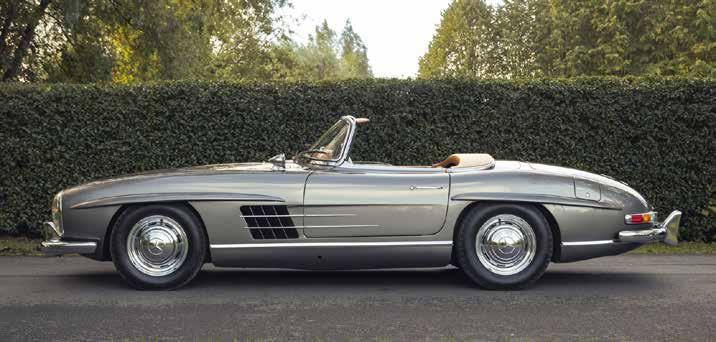

The Roadster's neutral steering characteristics received fulsome praise from Road & Track. A 0-60mph time of 7.0 seconds and a top speed of 130mph were recorded, making the 300 SL Roadster one of the fastest convertibles of its time. The 300 SL Roadster sold well for a car that cost more than a Ferrari 250 GT California Spyder, and would outlive the 300 SL Coupé, which ceased production in 1957, by several years. Roadster production ceased in 1963 after 1,858 cars had been built, some 70% being exported to the USA, and today the model is both rare and highly sought after.
The beautiful Mercedes-Benz 300 SL Roadster we offer was delivered new in 1959 in Dortmund, Germany and is believed to have been driven in Europe until 1969 when it was exported to the USA. Resident in California from 1969 until 1991, the Mercedes then came back to Europe where the last custodian kept the car in his collection from 1991 to 2025. It is believed that the original 1959 engine was replaced in period by the factory; the engine number has been retained.
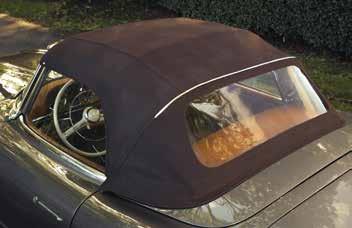
Some years ago the Roadster was repainted in the current exterior colour 172 Grau, an attractive official Mercedes colour, and given a new brown leather interior. In 2008, a major overhaul of the engine and mechanicals was undertaken (invoice available) while recently the car underwent a major service. Front disc brakes have been mounted to make it more driveable. The Roadster is now in beautiful condition and drives very well. It comes with a copy of the Datenkarte, as well as a lot of invoices.
A beautiful example of the iconic 300 SL Roadster, this is a highly desirable motor car that would make an exhilarating yet extremely practical touring companion; indeed, there cannot be many better ways of travelling to a classic event, taking part and driving home.
€1,000,000 - 1,200,000
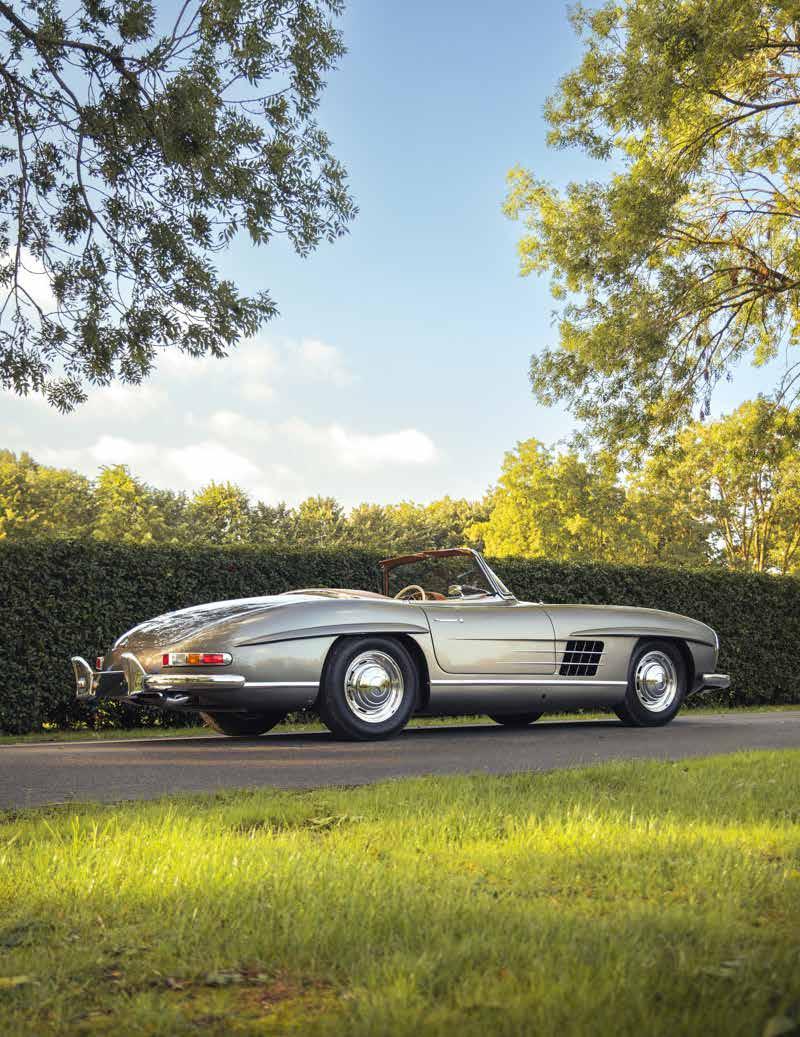
Chassis
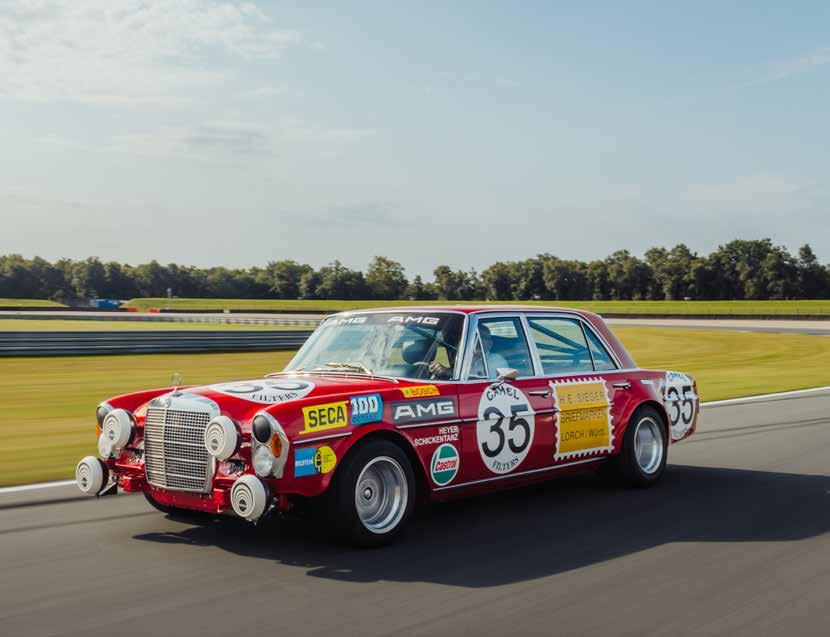
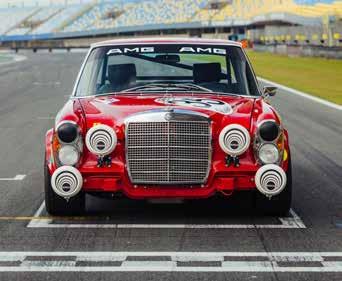
• Faithful replica of AMG's famous 'Rote Sau'
• Delivered new to Austria
• Restoration and transformation completed in July 2025
• Air suspension like the original 'Rote Sau'
The imposing Mercedes-Benz competition saloon offered here is a faithful replica of the famous AMG-built 300 SEL 6.3 'Rote Sau' (Red Pig), which astonished the motor racing establishment when it finished 2nd in the Spa 24 Hours race on 25th July 1971. There were many more-fancied entries in the field, driven by the likes of Nikki Lauda, Hans Stuck, Dieter Glemser and Jochen Maas, yet the Mercedes of Hans Heyer and Clemens Schickentanz beat all but one of them: the works Ford Capri of Glemser/Soler-Roig. AMG's was a privateer effort and many drivers had turned down the opportunity to race the rank outsider, including the 1971 Le Mans winner Gijs Van Lennep. It should be mentioned that the unflattering sobriquet 'Rote Sau' was not used by AMG but was bestowed on the behemoth by the motoring press.
AMG is now Mercedes-Benz's performance brand but back in 1971 it was an independent concern specialising in tuning the Stuttgart company's products. Even so, the choice of the heavyweight 300 SEL 6.3 luxury saloon must have seemed bizarre to all but AMG founders Hans Werner Aufrecht and Erhard Melcher, who no doubt reasoned that even if the car proved uncompetitive, it would generate much valuable publicity for the fledgling firm.

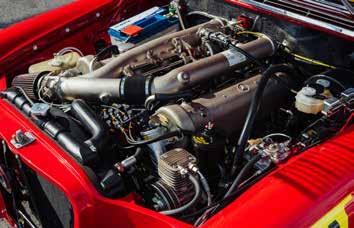
Using a crashed example as the basis, AMG rebuilt the car in its entirety, ditching the automatic gearbox in favour of a five-speed manual and racing clutch. With its 6.3-litre V8 engine tuned to produce 428bhp - a substantial improvement on the standard car's 250 horsepower (DIN)the 'Rote Sau' had a top speed of 265km/h (165mph).
Sadly, its racing career would be short-lived, as the regulations were changed to limit engine capacity to a maximum of 5.0 litres in 1972. The 'Rote Sau' was sold to the French aerospace company Matra, who needed a heavy, powerful and fast vehicle for testing aircraft tyres. It then disappeared from view, believed scrapped at some time during the 1980s.
As the original 'Rote Sau' made such an impression in the minds of motor racing enthusiasts, many attempts have been made to create replicas. We believe that the car offered here comes closest to the original. Before its conversion into a Rote Sau replica, this 300 SEL 6.3 belonged to an Austrian owner until 1988 when it was exported to Germany, passing into to the ownership of Amrein Automobile in Lahnstein.
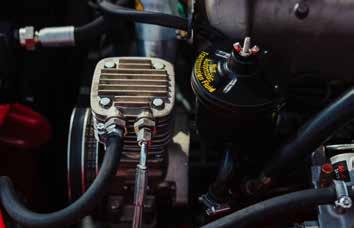
Our vendor purchased the Mercedes on 5th February 2024, with the intention to make the best possible replica of the original Rote Sau. For that reason, the car has had a full body-off restoration, with every last nut and bolt renewed or refurbished. The car's mechanical transformation was undertaken by classic Mercedes specialists Wörle Fahrzeugtechnik of Syrgenstein, Germany. The complete bodywork was entrusted to Kraaijvanger in Haaksbergen, Netherlands and the air suspension was made by Intrax Suspension Technology in The Netherlands. The restoration was completed on 1st July 2025.
Related bills are available as well as certificates from Wörle Fahrzeugtechnik. Built with the highest possible attention to detail, this Rote Sau is believed to be the best replica currently on the market. In fact, it is a new car worthy of a place in the collection of any connoisseur of motor racing!
The car comes with its original Austrian registration document and a spare key.
€150,000 - 250,000 No Reserve
Chassis no. 188 014 7500024
Engine no. 199.980.0024

• One of only 49 300SC Coupés built
• Coachbuilt in the traditional manner
• The most desirable of all Mercedes-Benz's post-war luxury models
• Restored in 2012
• Comes with Dutch registration documents

Right from the marque's creation in 1926 by the merger of Daimler-Benz and Mercedes, Mercedes-Benz's top-of-the-range models have ranked in the forefront of the world's greatest automobiles. Throughout the 1950s the company's flagship model was the 300S, a luxurious Grand Tourer in the tradition of the pre-war 540 K, which was both lighter and faster than its illustrious predecessor. Mercedes-Benz's first prestige car of the post-WW2 period, the 300 debuted at the Paris Salon in 1951. The range comprised the six-light, four-door saloon and similar-sized cabriolet, plus a trio of two-door variants built on a shorter wheelbase.
Like the majority of 1950s luxury cars, the 300 retained a separate chassis, though unlike most of its rivals could boast all-independent suspension. Later to form the basis of the immortal 300 SL sports car's, the 3.0-litre, overhead-camshaft, six-cylinder engine produced 115bhp, an output good enough to endow the saloon with a genuine 100mph maximum speed despite an all-up weight of 1,780kg (almost 4,000lbs). And while not unique in that respect, the 300 could cruise at close to its maximum speed while transporting six passengers in comfort in a manner that few of its contemporaries could match. 126 1957 MERCEDES-BENZ
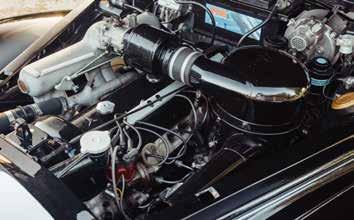


Even more performance was available to those in a position to afford a 300S. At US$12,500 the latter was more than double the price of the most expensive Cadillac and costlier than a 300 SL, so remained the province of a highly select clientele. Built in coupé, cabriolet and roadster versions, the 300S enjoyed an extra 35bhp courtesy of an increased compression ratio and three - as opposed to two - Solex downdraft carburettors. Its top speed was 176km/h (109mph), a figure improved upon by the subsequent 300Sc.
Introduced towards the end of 1955 at the Frankfurt Motor Show, the 300Sc featured a 175bhp dry-sump engine equipped with Bosch fuel injection, and boasted revised rear suspension with single-pivot swing axles similar to that of the 300 SL Roadster, a development that enhanced both roadholding and handling. The car's top speed was now 180km/h (112mph) with 100km/h (62mph) reachable in around 13 seconds. To cope with the improved performance, servo-assisted brakes, optional from 1954, were standardised.
Other than the fact that it was restored in 2012, there was little information to hand at time of cataloguing concerning this ultrarare 300Sc. It is hoped that further information will come to light by time of sale. Finished in black with cream upholstery, the car can be described as in very good condition throughout, with excellent interior.
Coachbuilt in the traditional manner by Sindelfingen, the 300S family represents a standard of excellence that has rarely been equalled; only materials of the finest quality were used for the hand finished interiors, which were comparable with those of the contemporary Rolls-Royce. The 300Sc is widely regarded by discerning collectors as the most desirable of all Mercedes-Benz's post-war luxury models. Only 200 examples of the 300Sc were built through April 1958: 98 Coupés, 49 Cabriolet As, and 53 Roadsters. Survivors are both rare and highly sought after.
€325,000 - 400,000
Chassis no. ZA9DE21A0WLA12996(1)

After 17 years in production, the legendary Countach was replaced by the Diablo, which on its arrival was the fastest, most advanced and most expensive Lamborghini ever built. First exhibited publicly at Monaco in January 1990, the Diablo improved on its illustrious predecessor in every way, setting a new benchmark in supercar design. Nobody can have been surprised to learn that it had been styled by Marcello Gandini, the man responsible for the Lamborghini Miura and Countach, for the family resemblance was obvious. Over the last 35 years we have not only admired Gandini's breathtaking design, but also been captivated by the Diablo's entire presence. The striking lines, aggressive stance, and timeless elegance of his masterpiece go beyond mere aesthetics.
Lamborghinis have never been produced in huge numbers, but even among these rarities the Diablo SV stands out as one of the most elusive Raging Bulls ever. Look at the Diablo's production run of just over 2,900 units — around one quarter of the Aventador's — and you'll begin to understand.
• One of only 346 produced
• Highly original and unmolested
• One of only three in Special Order Balloon White
• Believed to be original paintwork and interior
• Known ownership history
• Well documented (service book, Belgian registration documents, bills, etc)
• Only 35.570 (verified) kilometres recorded
Like many Lamborghinis, there were plenty of special editions built to satisfy their most loyal customers, among them the ultimate SV with only 346 examples produced. Designed to appeal more to the enthusiast driver, the simpler and lighter two-wheel-drive Diablo SV (Super Veloce) was introduced at the Geneva Motor Show in 1995 and came with a more powerful 510bhp engine despite being cheaper that the four-wheel-drive Diablo VT. Other SV changes included an adjustable rear spoiler, different lighting, a ducted engine lid, and larger diameter front brakes.
Our Lamborghini Diablo SV was delivered new from Pierce Monte Carlo France in the rare colour Balloon White, which is believed original. It came new with no SV stickers, black leather interior, airbag, and a body-coloured spoiler. The Diablo's first owner, M. Chapelle, drove the car for two years before selling it to its second (Belgian) owner with only 11,000 kilometres recorded. Since then, the car has spent its entire life in Belgium.



The car's second owner, M. Hoste, lived in the historic centre of Bruges and rarely took the car out, averaging fewer than 2,000 kilometres annually during the 13 years she owned it. In 2015 she sold the car, which was still in absolutely immaculate condition, to a well-known Belgian Lamborghini aficionado. Since then, the car has hardly been driven, as evidenced by the service records. The Diablo joined his collection alongside some other top-of-the-range Lamborghinis such as an LM002, some other Diablos including an SVR, and his Countach. After around seven years in the collection, during which period it attended a few Lamborghini events, the car changed hands again in 2022 to join an even larger collection. Once again, the car only came out for service and technical inspections, otherwise it was safely tucked away in the collection.
Now, three years later, there is an exciting opportunity to purchase this car, which is absolutely everything a collector dreams of: an absolute mint condition (pre-facelift) Diablo SV in the rare colour Balloon White with a fully documented history, stamped service book, original driver's manual, original tool rolls and paint thickness meter readings are available.

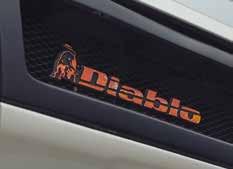
The interior completes the picture perfectly: the seats look as if they have never been sat upon, and even the door entry panels, which usually show signs of age, are nearly flawless. Official Belgian Car Passes - 17 in number dating from December 2000 to August 2024verify the odometer reading of 35.570 kilometres as genuine. This car also comes with copies of its old registration documents and some beautiful old photographs of it on Belgian roads.
According to our vendor, the 510-hp, 5.7-litre V12 engine starts up immediately and runs flawlessly, without any noise or irregularities. In addition, the gearbox shifts smoothly through all the gears, and the clutch copes easily with the V12's raw power. A car that has been so well preserved is a rarity among the surviving Diablo SVs, let alone one that is for sale. This car would be an absolute asset to any collection.
€400,000 - 450,000
Chassis no. SAJJEAEX8AX220680
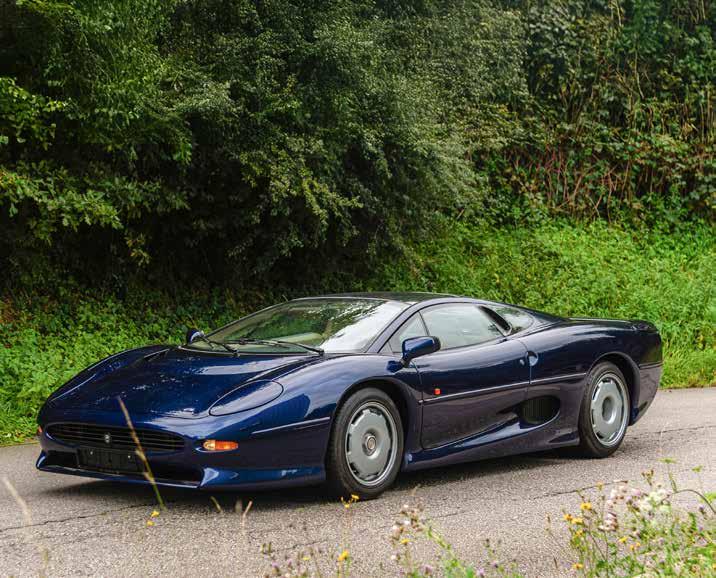
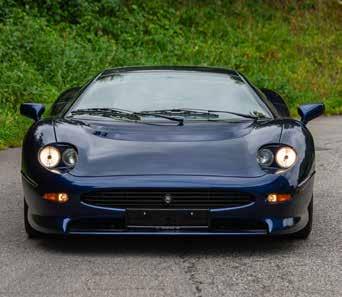
• Two owners from new
• Only 1,800 kilometres recorded from new
• Highly original (paintwork believed original throughout)
• Complete original book pack
The words 'supercar' and 'sensational' are often to be found in conjunction, and no more justifiably so than in the case of Jaguar's fabulous XJ220. Worthy successor to the multiple Le Mans-winning C-Type and D-Type Jaguars of the 1950s, the XJ220 grabbed the headlines, just as its illustrious forebears had done in previous decades, when it burst upon an astonished world in October 1991. A limited production run of a minimum of 220 and a maximum of 350 cars, combined with an eventual VAT-inclusive price tag of nearly £403,000, only served to further ensure the XJ220's exclusivity. In the event, approximately 285 examples had been built when production ended in 1994 (published production figures vary).
Planning for Jaguar's proposed 200mph supercar had begun in the mid1980s - design proceeding mainly in the project team's spare time! - and finally bore fruit when the prototype was exhibited at the UK Motor Show in October 1988, only four months after Jaguar had claimed its sixth victory at the Le Mans 24-Hour Race. Clothed in aluminium bodywork, the beautiful XJ220 was styled by Keith Helfet and featured an upswept tail, deeply scalloped side air intakes, and flush headlight covers that dropped down into the nose to reveal the fixed lenses behind. So favourable was the reception that the order book was soon oversubscribed, Jaguar having taken around 1,500 deposits of £50,000 each. Tom Walkinshaw Racing (TWR), Jaguar's collaborator in its endurance racing programme, was entrusted with the XJ220's development and construction.
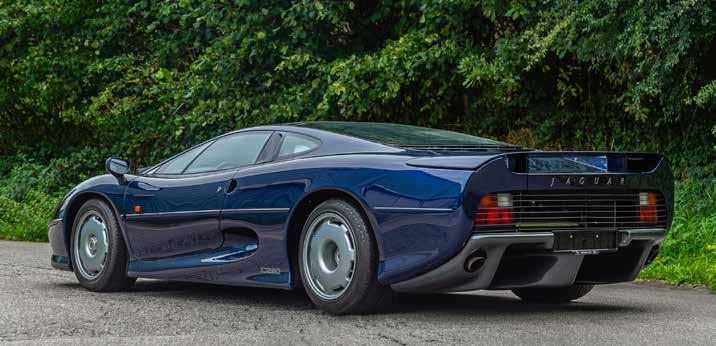
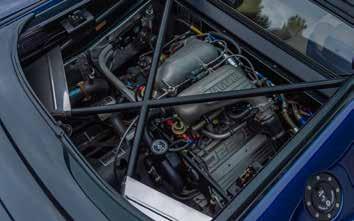
The XJ220 survived Jaguar's take-over by Ford the following year, but when it eventually entered production in 1992 was a very different beast. Gone was the prototype's 6.2-litre V12 engine, replaced by a more powerful Cosworth-designed, 3.5-litre, twin-turbo V6 as used in the XJR-11 sports-racer, while other casualties of the need to simplify the design for production included the prototype's four-wheel drive and adaptive suspension. Producing no less than 542bhp, this stupendous engine enabled the XJ220 to meet its 200mph-plus design target
With the rev limit raised and catalytic converters removed, the XJ220 held the record for the world's fastest production car between 1992 and 1998, with a run of 217.1mph at the Nardò Ring in Italy. With the emissions equipment fitted, 212mph was recorded with F1 driver Martin Brundle behind the wheel. The 0-100mph time was staggering 7.9 seconds!
This car is believed to be number 283 of only 285 XJ220s built, including prototypes. Inside, there are Connolly leather-trimmed sport seats; a Nardi steering wheel; air conditioning; electric windows; and electrically operated and heated door mirrors.
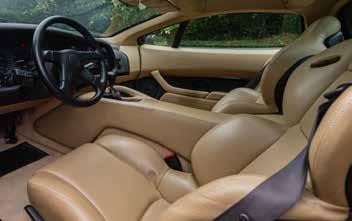
Famously, the XJ220's dashboard curves around into the driver's door where there are four smaller dials: clock, ammeter, boost gauge, and gearbox oil temperature. A fixed glass roof floods the cabin with light. An Alpine stereo is fitted, along with an Alpine CD autochanger. The wheels are Speedline Corse alloys: 17" front, 18" rear.
The car has had two owners in total, the last being a collector in Germany. Accompanying the car is a complete and original book pack; including, service book, German registration documents and full original booklet from factory also including the original toolbox pack; the centre-lock wheel nut removal tool; spare bulb kit; original first aid kit; and a warning triangle. There is no known bodywork damage; indeed, the Le Mans Blue paintwork is believed to be original throughout and it remains in generally superb order, though with some minor stone chips to the front splitter. The Sand Beige coloured seats believed to be original. No electrical faults have been detected, and all switches and buttons work as they should.
This stunning 1990s supercar remains highly original and boasts very low mileage from new. It comes with a box containing all the parts required for the next major service.
€420,000 - 450,000
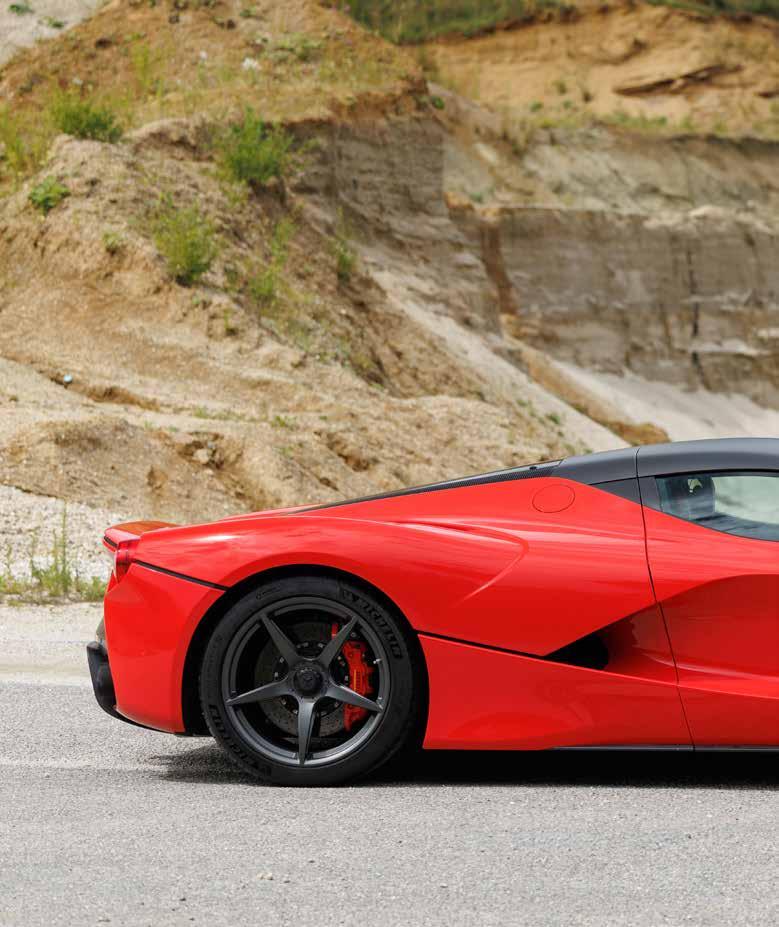
Offered with extended factory warranty until December 2026 2014 FERRARI LAFERRARI
Chassis no. ZFF76ZHB000201168 Engine no. 225402
• One of only 499 made
• Delivered new in France
• Only two registered owners from new
• Full Ferrari service history
• Last serviced on 5th April 2024 at 17,335 kilometres
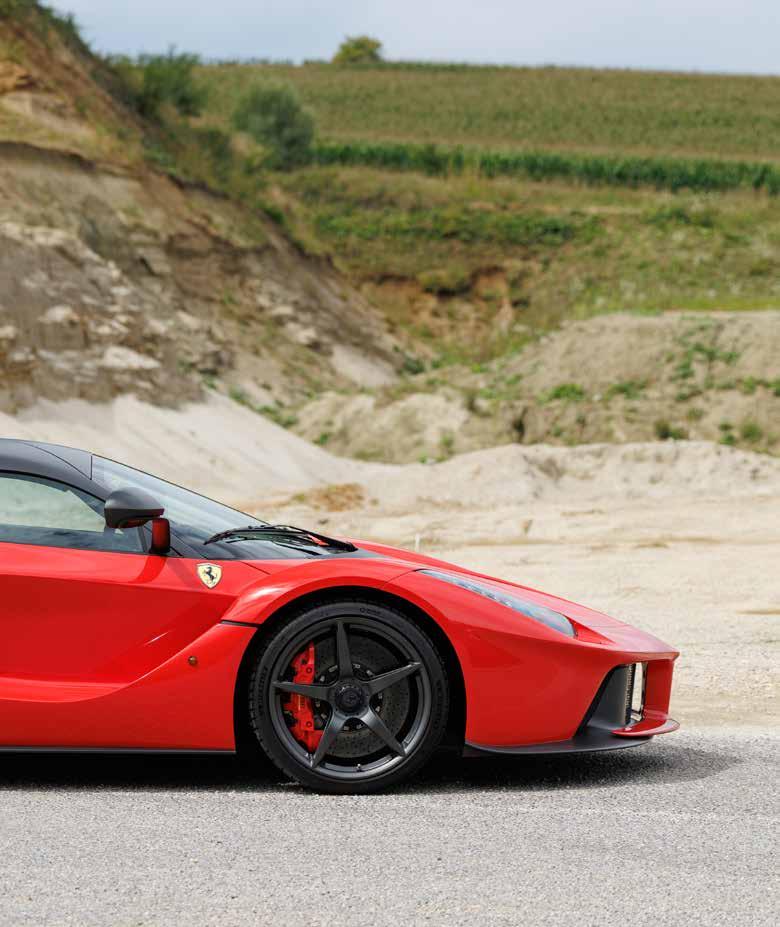
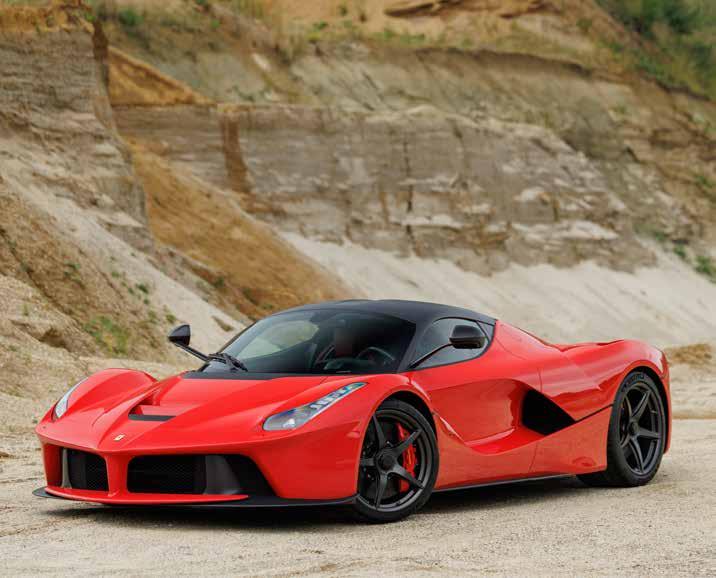
"The LaFerrari is very possibly the world's fastest, most exciting hypercar. Which is some statement to make when there are machines such as the McLaren P1 and Porsche 918 Spyder to contend with. The bottom line, however, is that LaFerrari has more power (a whopping 950bhp) and less weight to carry around than its prestigious rivals so figuratively, if nothing else, it quite clearly has the upper hand. Either way, this is the ultimate Ferrari..." – Autocar.
In today's increasingly environmentally conscious times, even supercar manufacturers have felt the need to polish up their 'Green' credentials. Seeking better fuel economy and reduced emissions, they have brought 'hybrid' technology to this previously exclusively fossil-fuels-only sector of the market. This has resulted in a 'win-win' situation: these latest hypercars being more environmentally friendly while at the same time considerably more powerful than before. Ferrari's first offering in this expanding category was the LaFerrari, a limited-edition coupé that entered production in 2013. Ferrari's last model with a mid-mounted 12-cylinder engine, LaFerrari was the distillation of no fewer than nine design studies created during the process of its development. The car was unveiled at the 2013 Geneva Auto Show. Unusually, its styling had no input from Ferrari's long-term collaborator, Carrozzeria Pinifarina.
Clearly, a car evocatively titled 'LaFerrari' would have to have a V12 engine, a type of power unit used in the very first Ferrari of 1947 and for a glorious succession of the Italian factory's most famous models.
The LaFerrari V12 has a displacement of 6.3-litres and produces 789bhp, supplemented by an electric motor producing 161bhp for a combined output of 950 horsepower, the highest power output of any Ferrari road car. With the car is in motion, the electric motor's lithium-ion battery pack is charged by a KERS (Kinetic Energy Recovery System) as used in the current generation of Formula 1 cars. Power reaches the rear wheels (there's no four-wheel drive) via a seven-speed dual-clutch transmission. And if you didn't use those 950 horses all the time, there was also a useful decrease in fuel consumption, not that that would have interested the typical LaFerrari owner.
Designed by Ferrari's F1 technical director, Rory Byrne, the LaFerrari has a carbon fibre monocoque chassis with suspension at the front by double wishbones and at the rear by a multi-link system - pretty much the norm for the current generation of supercars. Any car with a 200mphplus maximum needs plenty of stopping power, and the LaFerrari was equipped with Brembo's finest carbon-ceramic brakes. Ferrari claimed a top speed exceeding 349km/h (217mph), similar to the Enzo's top speed; however, the LaFerrari could accelerating from 0-100km/h (0-62mph) in under 2.4 seconds and reach 300km/h (186mph) in 15 seconds, comfortably out-performing its predecessor. The factory also claimed that LaFerrari had lapped its Fiorano test track in 1:19.7, faster than any other road-legal Ferrari.
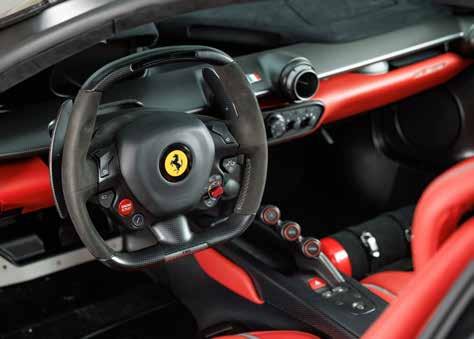
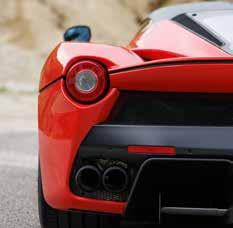
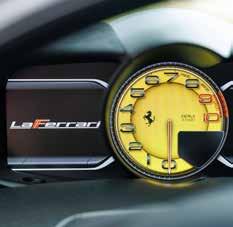
Electronic systems abound in even the humblest of modern hatchbacks, and as one would expect, the Laferrari boasts just about every bit of automotive electrickery imaginable: electronic stability control; high performance ABS/EBD (anti-lock braking system/electronic brake distribution), EF1-Trac F1 traction control integrated with the hybrid propulsion system; E-Diff 3 electronic differential; and magnetorheological suspension dampers - all controlled by 21 computers. There was also active aerodynamics, the front and rear wings being adjustable on the move to provide either high or low downforce while also controlling cooling of the engine, gearbox, batteries, and brakes. More electronics were deployed in the cockpit in the form of a 12.3" (310mm) TFT digital dashboard display with a choice of three optional layouts capable of relaying data from the telemetry system. The steering wheel featured integrated controls, while the gear change paddles were fixed directly to steering column.
One of the fortunate few to have driven a LaFerrari, Autocar's Steve Sutcliffe was mightily impressed when let loose in one at Fiorano. "The ride instantly feels spookily smooth and calm, the steering surprisingly light but bursting with a delicious, old school kind of feel. The brake pedal also feels light underfoot but is again rippling with feel. And the throttle response, the first time I go anywhere near the loud pedal is just outrageous; the car explodes down the back straight even on half throttle in fourth gear.


"And that's what you get when you integrate electric power with a thumping great V12. At low revs the electricity provides the torque, and provides it instantly, and from there on up – at about 3000rpm – the V12 takes over. Yet the transformation is so smooth you are never actually aware that it takes place. Instead, it feels like the car is powered by a 10-litre V12 that somehow has massive low rev response at the same time.
"And yet, in their way, the gearchange, the brakes, the steering, the turn in, the handling balance and the ride... they are all every bit as incredible as the engine – sorry the power source – and the acceleration it can produce."
Putting a 950 horsepower car weighing only some 1,255kg dry in the hands of mere mortals, as opposed to professional racing drivers, might be considered somewhat reckless, but in designing LaFerrari, its makers ensured that whatever the car did it did predictably. "You always know where you are with this car," declared Autocar. "And considering just how insanely fast it is, that is arguably its greatest achievement; being manageable."
Despite a price of £1 million (approximately €1.4 million) each, all 499 examples planned had sold before the first had been delivered. However, merely having pockets of limitless depth was not alone sufficient for you to acquire a LaFerrari, which was only available to loyal customers vetted by Ferrari.

Representing a possibly once-in-a-lifetime opportunity to own one of these fabulous Ferrari hypercars, the LaFerrari offered here left the factory in March 2014 to be delivered via the famous French Ferrari importer Charles Pozzi in Levallois-Perret, just outside the French capital, to its first owner, a resident of Paris. The service book notes the pre-delivery check was carried out on 26th March 2014, and the car also comes with a duplicate of the official 'Attestato per vetture Serie speciali'.
The colours are Rosso Scuderia with a matching leather interior. Having ordered an Atelier model from Ferrari's personalization programme, the fortunate first owner chose a variety of very desirable (and costly) additional options. These include Rosso Scuderia brake calipers; numerous matt finish carbon-fibre parts including the roof, rear view mirrors, Cup wheels, lower sections; Ferrari telemetry; suspension lifter; sports exhaust pipes; fire extinguisher; large size seat cushion; and four-point safety harnesses.
In 2015 the LaFerrari was sold to a new custodian in Luxembourg, who chose to have it serviced in its native Italy. The car comes with Ferrari service history recording the following services:
26/03/2014: Pre-delivery inspection by Charles Pozzi
06/05/2015 @ 4,245 km: Charles Pozzi
16/06/2016 @ 11,097 km: Ineco, Padua
21/05/2018 @ 15,798 km: Motor Service Srl, Modena
05/04/2024 @ 17,335 km: Maranello Service Srl, Cremona
19/08/2025 @ 17,666 km: Official Ferrari dealer Emil Frey Sportivo, Munich
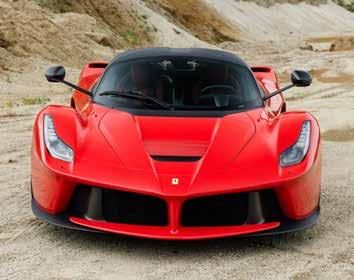
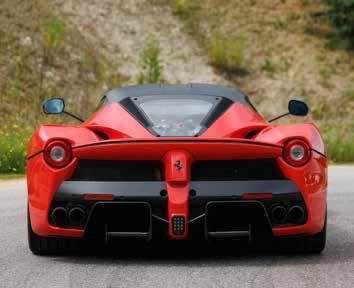
Importantly, for peace of mind, this car comes with a two-year extension of the factory guarantee, including the battery, which is valid until December 2026. New Michelin Pilot Sport tyres were fitted in June 2024.
The car is offered with Luxembourg registration documents; the aforementioned duplicate 'Attestato per vetture Serie speciali' (yellow book) confirming matching numbers (chassis, engine and gearbox); the original stamped service book; factory warranty extension; and technical certificate of the state of the battery.
With the forthcoming Ferrari F80 already sold out, the LaFerrari is expected to be the last of the special series Ferrari models still equipped with a V12 engine, and a normally aspirated one at that.
A rarity with only 499 of the closed version made; a superb specification; comprehensive Ferrari service history; and the all-important warranty extension covering both the car and battery, make this an exciting proposition for the Ferrari collector.
€3,300,000 - 3,600,000
For more information on the Symbol next to the Lot Number, please refer to the Lot Symbols Key at the front of the Catalogue.

130 P
Ordered new by Peter Gregg from the Brumos Racing Team 1973 PORSCHE 911 CARRERA 2.8 RSR M 491
Chassis no. 9113600940
Engine no. 6930133 (see text)
• 30th example of only 49 produced
• One of only two Black 911 2.8 RSR produced
• Raced by Formula 1 driver Peter Revson at the Lime Rock 100 Miles (6th OA)
• Recently participated in Le Mans Classic, Tour de Corse Historique and Tour Auto
• Registered in France
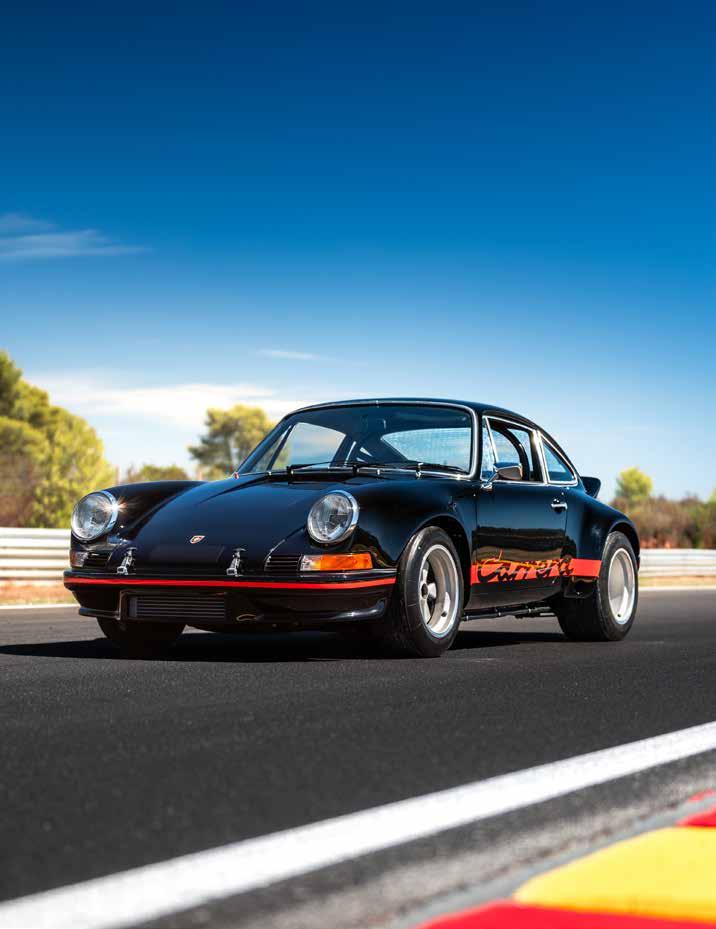
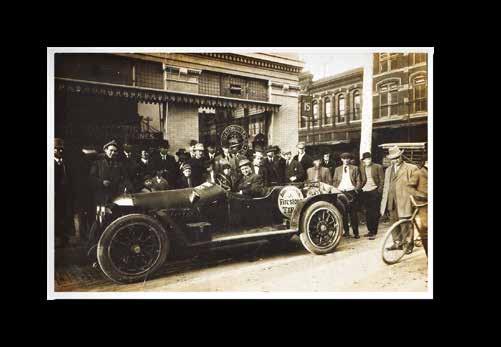
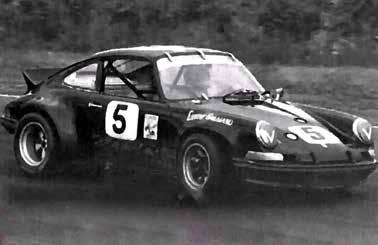
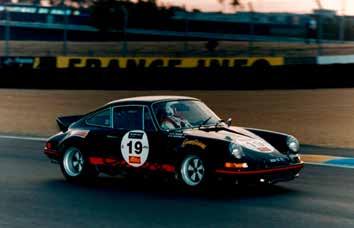
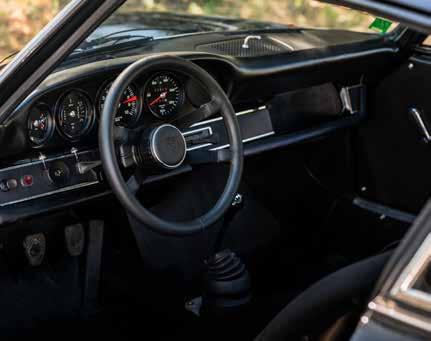
While 1,580 examples of the Carrera 2.7 RS were sold between 1973 and 1974, only 49 of these were built to racing specifications as 911 2.8 Carrera RSR. Although similar to the production 911, the shell was built with a thinner steel, paired with wider fender flares and plastic bumpers. The front one was notably intended to contain the oil cooler. The sound proofing was almost fully eliminated, as well as the rear seats, while the front bucket seats were made as light as reasonably possible.
From the two batteries fitted on the standard cars, only one was kept on the RSR. The common glass used for the windows was replaced by thinner Glaverbel safety glass. The interior was only trimmed with black felt glued directly on the metal. The door panels were completely flat, only fitted with door straps acting on a simplified lock mechanism. The suspension remains quite similar to the 2.7 RS, with modifications on the rear suspension, including Delrin and Unibal joints, and auxiliary coil springs were mounted around the shock absorbers. The front suspension was only fitted with coil springs around the struts. The RSR also received quick adjustable and removable anti-roll bars. The braking system of the 2.7 RS was updated with ventilated and perforated discs fitted with aluminium callipers with adjustable balance from rear to front or reverse. The car hugged the road with 9- and 11-inch alloy wheels respectively on the front and on the rear. The engine itself has seen its bore increased to 92mm, raising the total capacity to 2806cc. The crankcase, crankshaft and connecting rods were the same as the standard 911S but racing camshafts were used, running on four bearings instead of three.

The setting of the injection pump was modified to comply with the new engine specifications, and the ignition was upgraded to twin-spark specification. To limit the weight of the rotating components, the cooling fan was slightly smaller, and an oil cooler was fitted in the front bumper. In the end, the RSR version of the Flat-6 was producing 300 bhp at 8,000 rpm. The transmission was passing through a reinforced clutch, and the gearbox’s oil admitted a separate cooler. The limited-slip differential had a locking factor of 80%.
As fitted, the RSR limited its weight to 900kg, a power to weight ratio which brought the car to a successful career in competition. In the mid1970s the normally aspirated Carrera RSR dominated its class in World Championship sports car racing, winning at the Targa Florio, Daytona 24 Hours, Sebring 12 Hours and Nürburgring 1,000kms, defeating 3.0+litre prototypes from Ferrari, Matra and Mirage-Ford in the process, an outstanding achievement for a production-based motor car.
Porsche's policy had been to entrust defence of their GT division honours to private owners, and the Carrera 2.7 had been developed for this purpose. Although the factory also entered some examples, they usually ran in the Prototype class to avoid direct competition with the Zuffenhausen company's own customers. The RS was essentially the road-going version, the RSR the racer.

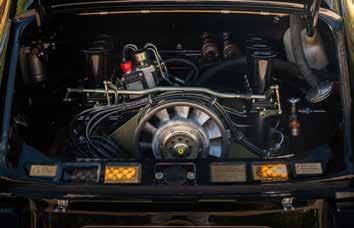
In total, only 49 examples of the 911 2.8 RSR were built between 1973 and 1974.
Chassis 0940 left the factory in March 1973 under production number 103564810, heading for the United States. It was painted black 1010 (two such models were delivered); fitted out with a code 11 black leatherette interior, as well as a 220 limited-slip differential, red lettering and a special transmission. This black 911 2.8 RSR, one of two produced, was then delivered new in Jacksonville in February 1973 to the Brumos dealership managed by Peter Gregg. It was sold to Arnold Golding in July 1973. On 15 September 1973, Golding entered it under number 5 for the Lime Rock 100 miles, accompanied by Formula 1 and Can-Am driver Peter Revson. The latter had already made a name for himself with the American public when he finished second, with Steve McQueen, in the Porsche 908 of Solar Productions Team - who produced the film Le Mans - at the 1966 12 Hours of Sebring. Arnold Golding not being a professional driver, at Lime Rock he only managed to take the Clarkson/Golding team's 2.8 RSR to 33rd place in the first race. On the other hand, Peter Revson's talent allowed him to move from 33rd to 6th place overall after 65 laps.
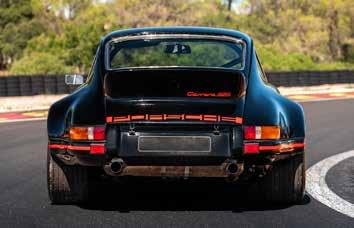
Following this race, Revson reproached Peter Gregg and Michael Keyer's team for having received help from the Porsche factory, so much faster and sharper were their cars than the 0940 in his hands. Arnold Golding then, on 30th September 1973, entered his 911 RSR in an SCCA race at the Bridgehampton Race Circuit in Long Island when he came off the track after losing control of his vehicle. The RSR then hit a bridge pier and the driver was transported to hospital in Southampton, where he passed away a few hours after the incident.
The remains of the car were then purchased by Bill Schmid, then by Gary Kildall of Austin, Texas (an IT pioneer). In 1989, 0940 was acquired by John Starkey, an expert on the model and author of several reference books on the Porsche 911 R/RS/RSR. The black RSR was rebuilt during the 1990s before being presented for sale at auction in Monterey in 2001, where it was sold to James C. Moore of Detroit. James C. Moore and his RSR took part, notably, in several Historic Sportscar Racing events under the Klub Sport Racing team's banner. Incidentally, it was Phil Bagley, owner of the Klub Sport Racing team, who purchased the car in 2002. A restoration of the car to its original specifications was then undertaken. Phil Bagley, as an enthusiast of the Stuttgart firm, was naturally invited to take part in the Porsche Parade 2003 in West Palm Beach.

Having arrived in France in 2003, it was then the subject of an article in Flat 6 magazine. The RSR was acquired by Christian Perrier in 2004. He registered it in his name on 2nd February 2004 and immediately took part in the Tour de France Auto. He then entered it for Le Mans Classic. Sharing the wheel with M. Gonthier, they obtained 21st place in the weekend's third race. Still in 2004, Christian Perrier and the 0940 also took part in the Tour de España, and they returned in 2005. In 2006, Christian Perrier and Gérard Bouvet took part in the Tour Auto, finishing 9th overall. In 2008, the 911 and Christian Perrier took part in the Tour Auto once again before passing the car on to Jean-François Piquet in July 2009. At its wheel, he took part in 2010 in the Tour Auto and the Tour de Corse Historique, then in the Ronde du Ventoux 2011. It was then maintained at the Modern Garage in Domène and we have numerous invoices from this period. The 911 RSR changed hands in 2014, acquired by its current owner via Claudio Roddaro. In 2017, the car obtained its FIVA identity card.
Today, 0940 is in recently restored condition. The number 9113600940 is stamped under the front bonnet, corresponding to its registration plate, stamped with the same number. The figures 1035648 are stamped under the dashboard and correspond to its production number of the time.
The engine casings bear the casting numbers 901.101.102.7R and the cylinder heads 901.105.11.1R. The dual ignition injection engine, restored by Manfred Rugen in 2010 is stamped with type 911/72 and number 6939133. The last number was the car's engine number when it left the factory, but has been re-stamped. Its black-painted coachwork coupled with red lettering blends aluminium trim, fine sheet metal and polyester. Its passenger compartment is equipped with a four-point roll-cage, Recaro seats consistent with the originals, as well as safety harnesses and an extinguisher system.
Sold with its historical file including various press articles, photographs, invoices and expert reports, it has its French registration document and its FIVA passport. One of only 49 models, this is a rare opportunity to acquire the famous 2.7 RS's big sister. Although it has suffered the tribulations of racing in its time, as have many other 2.8 RSRs, this 911 is rare in having begun its sporting career in the hands of a Formula 1 driver! Eligible for numerous events around the world, as its previous owners have proven, it will need to be fully serviced before taking to the track again, having been little used since its last restoration.
€1,000,000 - 1,500,000
For more information on the Symbol next to the Lot Number, please refer to the Lot Symbols Key at the front of the Catalogue.
Chassis no. WPOZZZ96ZNS498008
Engine no. 62M09667 (Type M64/01)
• Rare competition version
• Attractive livery of Mika Hakkinen's Carrera Cup car
• Recent professional restoration (dossier available)
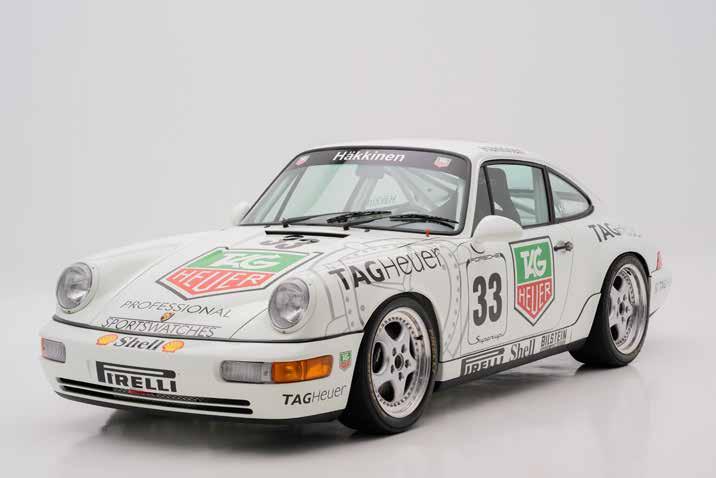
The arrival in 1989 of the Type 964 version of the 911 gave rise to the Carrera Cup model and the Cup Championship, first held in Germany in 1990. Representing a major step forward for the 911, the new Carrera 4 and Carrera 2 - coded named '964' - had been launched in 1989, the former marking the first time that four-wheel drive had been seen on a series-production 911.
Face-lifted but retaining that familiar shape, the Carreras had been given a more extensive work-over mechanically, 87% of parts being claimed as entirely new. Although the normally aspirated duo shared the same 3.6-litre, 247bhp, flat-six engine, the Turbo initially kept its existing 3.3-litre unit. Power-assisted steering (another 911 'first'), anti-lock brakes and a five-speed manual transmission were standard, with the Tiptronic auto 'box a Carrera 2-only option.
Overseeing the Carrera Cup project was former racing driver and Operations Manager of the Weissach Development Centre, Herbert Linge, who was adamant that the Cup concept be applied to the 911 and not one of Porsche's other models. The Carrera 4 was dismissed as being unsuitable for development as a racer, so that left the Carrera 2.
Porsche Motorsport racing engineer Roland Kussmaul modified the Carrera 2 by removing the interior; installing a Matter roll cage; providing a special lightweight induction chamber; modified exhaust system; aluminium bonnet; a Recaro racing seat; unique Speedline 8" and 9.5"x17" lightweight alloy wheels; and much more. The road car's ABS was retained, albeit adapted for racing. These modifications took the dry weight down to 1,120kg, 230kg lighter than stock. The 3.6-litre 260bhp M64/01 twin-plug engine was blueprinted, producing a maximum of 260bhp, and the Cup also featured revised gear ratios; and a limited-slip differential; providing drivers with a refined and rapid racing car: the M001 Type 964 Cup. The suspension too was modified, featuring shorter and stiffer springs and an adjustable anti-toll bar.
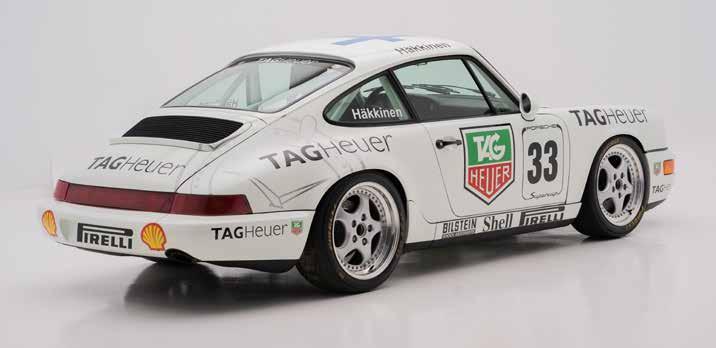
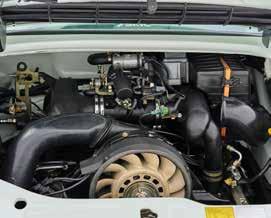
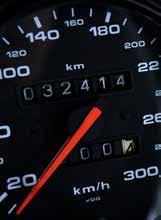
Teams wishing to participate in the Cup had to pay a DM25,000 refundable deposit as a sign of their commitment to the series, which in 1990 consisted of 10 rounds, overall victory going to Olaf Manthey that year. In 1991 the Carrera Cup was again run over 10 rounds, three of which supported rounds of the Formula 1 World Championship. Fields of, typically, some 40 cars were the norm, with participants drawn from the ranks of both professional and amateur drivers. The 1991 title went to Mercedes DTM works driver Roland Asch. As popular as ever, the Porsche Carrera Cup continues to enjoy strong support all over the world.
This particular car took part in several standalone Porsche Carrera Cup races with various guest drivers, but it does not have a technical passport or a verified race history. (It still retains a 1993 verification seal on the ECU, both as a sticker and as a metal tag.) The car showed signs of racing incidents from its competition period, all of which were professionally repaired.
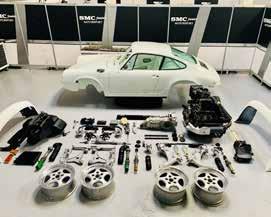
According to the accompanying Porsche Technical certificate (issued by Porsche Madrid), this 911 Carrera Cup left he factory on 28th January 1992 and was delivered to a German client. The original specification was paint in P5 (Grand Prix White) with a black and red vinyl interior. Further options include a limited slip differential, 17" Cup wheels, airbag delete, etc.
In 1994, the Porsche was registered for road use, and in 1999 it arrived in Spain where it continued to be used on the road and for occasional 'track day' events. The 911 was de-registered in 2007.
The car has just undergone a comprehensive restoration in Spain by specialists SMC Motorsport, as documented in the accompanying dossier, and it now comes with a Porsche Classic Technical Certificate. The photographs of the restoration are well worth perusing.
This example has the same livery as that with which Mika Hakkinen won the Porsche Carrera Cup race at Monaco in 1993.
€200,000 - 230,000
The ex-Louis Chiron, Monte-Carlo Rally and Carrera Panamericana 1950 DELAHAYE
Coachwork by Carrozzeria Motto
Chassis no. 815042
Engine no. 815050 (see text)
One of only 51 Type 175 and 175 S chassis built, '815042' was delivered new on 10th November 1950 to the French racing driver Jean Trévoux and has significant in-period competition history. Only 14 Type 175/175 S models are known to survive.
Based initially at Tours and from 1906 in Paris, Delahaye built its first automobile in 1894 and soon branched out into commercial vehicle manufacture. Up to the mid-1930s its products tended to be rather lacklustre but then in 1935 came the first of a new generation which would change the marque's image forever: the T135 Coupe Des Alpes. A fine sporting car, the T135 was powered by an engine which, although designed for car use, had first appeared in a Delahaye commercial vehicle. The 3.2-litre, six-cylinder, overhead-valve unit produced 110bhp on triple Solex carburettors, while the chassis featured transverse-leaf independent front suspension, four-speed synchromesh or Cotal gearboxes, centre-lock wire wheels and Bendix brakes. Delahaye improved on the formula the following year with the 3,557cc, 120/130bhp T135 MS, and the sports version was soon making a name for itself in competitions, taking 2nd, 3rd, 4th and 5th places in the run-to-sports-car-regulations 1936 French Grand Prix and winning the Monte Carlo Rally and Le Mans 24-Hour Race outright in 1939. In England, Prince Bira contested the 1938 Donington 12-Hour Sports Car Race in Prince Chula's example, winning the event and going on to take victory in Brooklands' 'fastest road car in England' race against some formidable opposition.
Government legislation had effectively killed off France's few surviving luxury car manufacturers after WW2; undeterred, and fortunate not to be entirely reliant on passenger car production, Delahaye soldiered on, at first with the 3.6-litre 135 M, which was identical to the pre-war model. Delahaye's first new designs of the post-war era were the Types 175, 178 and 180, its first with left-hand drive. These three models were built on different wheelbases: 2.95m for the 175, 3.15m for the 178 and 3.33m for the 180.
Introduced at the Paris Salon in 1946, the newcomers featured an entirely new and stronger chassis with Dubonnet-type independent front suspension and a leaf-sprung De Dion axle at the rear, while the engine was a development of the existing overhead-valve six. The latter now featured a 12-port cylinder head and a seven-main-bearing block with a 94mm bore, which, combined with the existing 107mm stroke, gave a capacity of 4,455cc. Maximum power output depended on the induction system: 120/125bhp (single carburettor); 140/148bhp (twin carburettors); and 160/164bhp (triple carburettors). Other notable mechanical features included dual-circuit Lockheed hydraulic drum brakes and Cotal four-speed semiautomatic transmission.
• Significant in-period competition history
• Overall winner of the 1951 Rallye Monte Carlo
• One of only 14 known survivors of the 51 cars built
• Delivered new to Jean Trévoux and driven by Louis Chiron
• Comes with an illustrated report by Jean-Paul Tissot of Club Delahaye
Delahaye had no in-house coachworks, so all its chassis were bodied by independents, making every car unique. The gifted French designer Philippe Charbonneaux was responsible for the Type 175's frontal aspect, which was featured on the otherwise naked chassis displayed at Paris in 1946, although several coachbuilders would depart from Delahaye's preferred look.
The Type 175 was produced in limited numbers, its high price and stiff competition from foreign manufacturers restricting sales to a mere 51 cars by the time production ceased in 1951. Sadly, the once-great firm of Delahaye would not last much longer, disappearing from view following its merger with Hotchkiss in 1954.
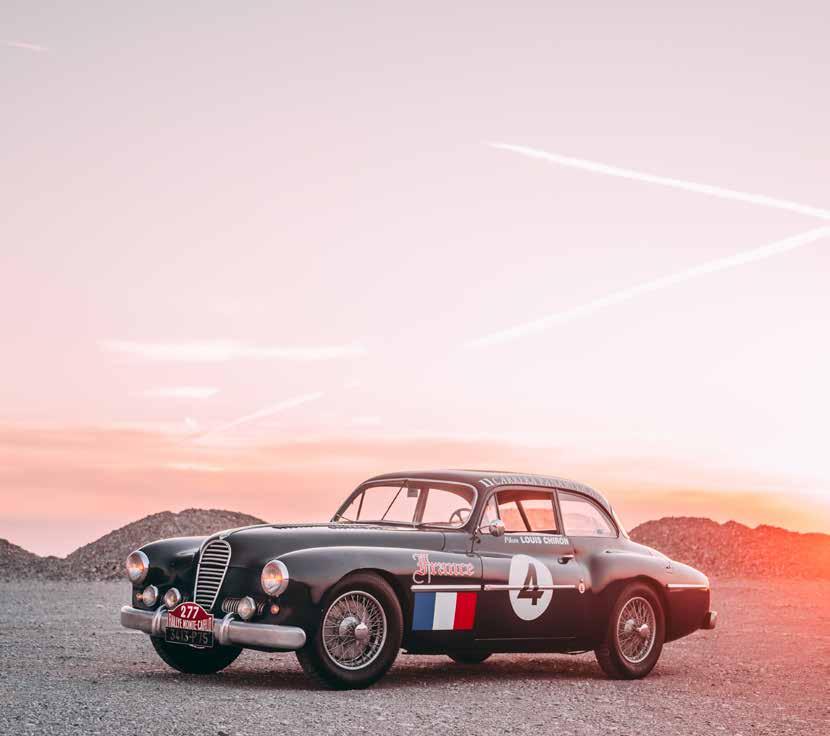
Delahaye Type 175 S, chassis number '815042', carries unique 'threebox' coach coachwork by the Italian Carrozzeria Motto, a company Charbonneaux had commissioned to build the prototype body of the Type 235, Delahaye's final model. Based in Turin, Rocco Motto's company specialised in lightweight sporting coachwork and had extensive experience in the construction of barchetta-type competition bodies for the likes of Alfa Romeo, FIAT and Cisitalia.
One of the three Type 175 S chassis with racing engines built for Jean Trévoux, '815042' was first registered as '3413 P 75' to him, then to his wife Henriette Trévoux, on 13th January 1951 when they were resident at 5, boulevard Richard Wallace in Neuilly-sur-Seine near Paris, France. Jean Trévoux was a well-known French racing driver who was a podium finisher on 27 occasions. Having commenced his racing career with a Bugatti, winning the Critérium Paris-Nice in 1932, he later became associated with Hotchkiss, winning two Paris-Nice events and finishing 2nd in the Algerian Grand Prix de Tourisme for the French manufacturer. He also claimed a 7th place finish at Le Mans in 1935, co-driving a privately entered Riley with René Carrière. By the time Jean Trévoux ordered this car, he had already had two Type 175 S chassis bodied in fastback style by Motto: '815050' and '815051', one white, the other blue.
'815050' participated in the first edition of the Carrera Panamericana in Mexico, from 5th to 10th May 1950, driven by Trévoux and André Mariotti (Trévoux was married to a Mexican woman and had been living in Mexico since 1946). The Delahaye carried number '19' and finished 12th in the tough event. After the race, the car remained in Mexico before disappearing, although its engine would reappear later (see below).
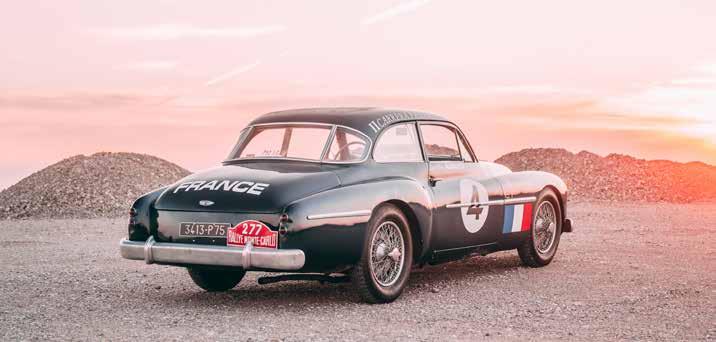
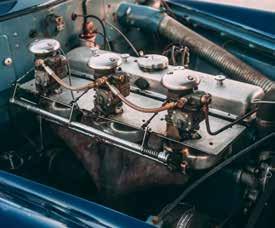

Among countless other races, Trévoux took part in the Grand Prix de l'ACF, Liège-Rome-Liège, 24 Hours of Le Mans, Carrera Panamericana and the Monte-Carlo Rally, winning the 1951 Monte overall in this very car (number '277') with co-driver Roger Crovetto. Trévoux had first won this challenging event in 1934 as co-driver to Louis Gas (driving a Hotchkiss); he was joint winner in 1939 and then outright winner in 1949 and 1951. The newspapers at that time reported that Trévoux's Delahaye was the most powerful car in the rally, with almost 200 horsepower on tap. It featured on the cover of various motoring magazines, including the French Action Automobile et Touristique in February 1951 and the British Autosport in January 1952. Associated brands such as Solex, Marchal, and Kléber-Colombes featured the Delahaye in their advertising.
Following its success at Monte Carlo, '815042' was entered in the 1951 Carrera Panamericana, run between 20th and 25th November, and on this occasion was crewed by Chiron and André Mariotti (competitor number '4'). The car was repainted for this race in a darker shade of blue and was fitted with an air intake on the bonnet to improve engine cooling.
Louis Trévoux had accepted an offer from Packard to race for them, so he had set up a syndicate with the agreement of the French Embassy and the French Chamber of Commerce to raise funds for Louis Chiron's trip and participation in the Carrera Panamericana. Unfortunately, the Chiron/Mariotti Delahaye was dogged by tyre failures, leading to its disqualification for turning up three minutes late for the start of the third stage.
Around 1952, '815042' was bought by Baron Jules de Koenigswarter and would remain in Mexico, passing through the hands of several other owners, one of whom removed the original engine and fitted a Ford V8 and threespeed transmission. The Delahaye had been stored for several years when
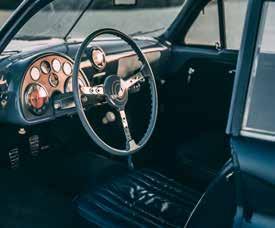
Michel François, a Frenchman living in Mexico, bought it and recovered the original engine and original Cotal gearbox. Around 1986, Jean Gorjat, a prominent collector, bought the car and kept it for some 15 years before selling a French connoisseur.
The current owner has undertaken a major mechanical restoration, during which the engine was found to be stamped '815050'. As related above, chassis '815050' was another of the cars Motto had delivered new to Jean Trévoux. There can be several interpretations: engine '815050' may have been fitted to chassis '815042' on delivery, or it may have been sold to Michel François as the engine for Jean Trévoux's Delahaye 175 S, as we know both cars were in Mexico in the same period.
Accompanying documentation includes several photographs taken in the 1950s; an FIA historic technical passport issued in September 2021; a French Carte Grise, cancelled in 2017; and an illustrated historical study compiled in 2023 by Jean-Paul Tissot, Club Delahaye honorary chairman and associate expert of the Société des Automobiles Delahaye.
Jean-Paul Tissot concludes his study by saying (roughly paraphrased): "This Delahaye 175 S by Motto, number '815042', would be an exceptional acquisition for any discerning collector, who would not only have the satisfaction of owning the winner of the 1951 Monte Carlo Rally, but also an entrant in the 1951 Carrera Panamericana driven by the legendary Louis Chiron.
As far as its condition is concerned, we are advised that the car is particularly well preserved and conforming to original specification, while also benefiting from recent mechanical attention to ensure that it runs excellently.
€180,000 - 220,000 No Reserve
Chassis no. S 818987
Engine no. G 9089-8S
• Sold new in the USA
• Present ownership since 2002
• Matching numbers (chassis and engine)
• No restoration required since acquisition
• Enthusiastically campaigned
• Registered in Belgium

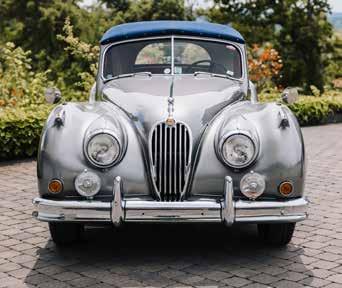
"For 1955, Jaguar present a range of models incorporating not only added refinements, but mechanical advances directly derived from their many outstanding successes in international competitive events. All the wealth of experience gained on the race-tracks of the world and in record-breaking speed and endurance tests is built into every Jaguar to provide for discriminating motorists the highest degree of efficient performance allied to comfort and safety." - Jaguar Cars Ltd.
Launched in 1954, the Jaguar XK140 was broadly similar to, though more refined than, its sensational XK120 predecessor, major engineering changes being confined to the repositioning of the engine 3" further forward, the adoption of an Alford & Alder rack-and-pinion steering as used on the racing C-Type and the battery is no longer located behind the seats but is housed in the front right wing to allow two small seats to be fitted at the rear. It should also be noted that the firewall is completely different: it surrounds the sides of the engine, freeing up legroom and providing more space for the occupants, with the front wings becoming shorter and the doors longer. The suspension and brakes remained much as before, though with stiffer torsion bars at the front and telescopic shock absorbers replacing the previous lever type at the rear. Like its forbear, the XK140 was built in three model types: roadster, coupé and drophead coupé, the latter two offering usefully increased cabin space and occasional rear seats.


Outwardly the newcomer was distinguishable by its revised radiator grille, rear lights incorporating flashing indicators, and larger bumpers - the latter adopted to withstand the cut and thrust of urban parking.
The power unit remained Jaguar's well-tried, 3.4-litre, twin-cam six, which now produced 190bhp in standard trim thanks to higher-lift camshafts and revised porting. To ensure reliability, steel bearing caps replaced the previous cast-iron type. A close-ratio gearbox enabled better use to be made of the increased performance while Laycock-de Normanville overdrive became an option for the first time. Special Equipment (SE) XK140s came with wire wheels and Lucas fog lamps, and could be ordered with an engine developing 210bhp courtesy of the 'C'-type cylinder head. XK140 performance was well up to the standards set by its exemplary predecessor, contemporary magazine road-tests regularly recording top speed figures in excess of 120mph. Tested by Road & Track magazine, a USA-specification XK140MC (as the 'C'-type head-equipped SE version was known there) recorded a 0-60mph time of 8.4 seconds on the way to a top speed of 121.1mph, highly respectable figures even today.
Writing in Autosport, John Bolster had this to say: "The Jaguar XK140 is a very high class machine that has more delightful qualities than almost any other car on the market. I have long ago given up wondering how they make them for the money; for sheer value there is nothing to compare with them in the high-performance field."
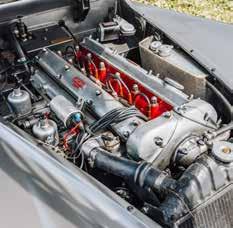
One of 2,310 left-hand drive XK140 drophead coupés made, this SE model was delivered new in the USA via Jaguar Cars New York. The accompanying Jaguar Heritage Trust Certificate records the original colour scheme as Battleship Grey with white-piped red interior and Sand soft-top. Our vendor purchased the XK from the Sports Car Centre in Wagenberg, Netherlands in December 2002 (purchase receipt on file). According to our vendor, the car was in excellent condition when he bought it and has not required any restoration during his ownership. The current owner has had the car regularly serviced by a Belgian garage with a strong reputation for restoring classic British cars.
Notable features include Avon tyres, Koni shock absorbers, very good brakes and an additional cooling fan (we're told the engine never overheats, not even in hot weather). While in the vendor's care this enthusiastically campaigned XK140 has successfully completed two Liège-Rome rallies and four National Classic rallies. During our test drive, we noted the car's very sound handling on both slow and fast sections. Accompanying documentation consists of current Belgian registration papers, an old French Carte Grise in the previous owner's name and the Jaguar Heritage Trust Certificate confirming that the car is matching in terms of both the engine and the chassis.
€70,000 - 90,000
No Reserve
Chassis no. DBVC/3624/R
Engine no. 400/3129
• One of only 140 'Mark 1' DB6 Volantes
• Delivered new in the UK
• Manual transmission mounted in period
• Present ownership for the last 17 years
• Known ownership history
• Restored in 2000
• Matching engine
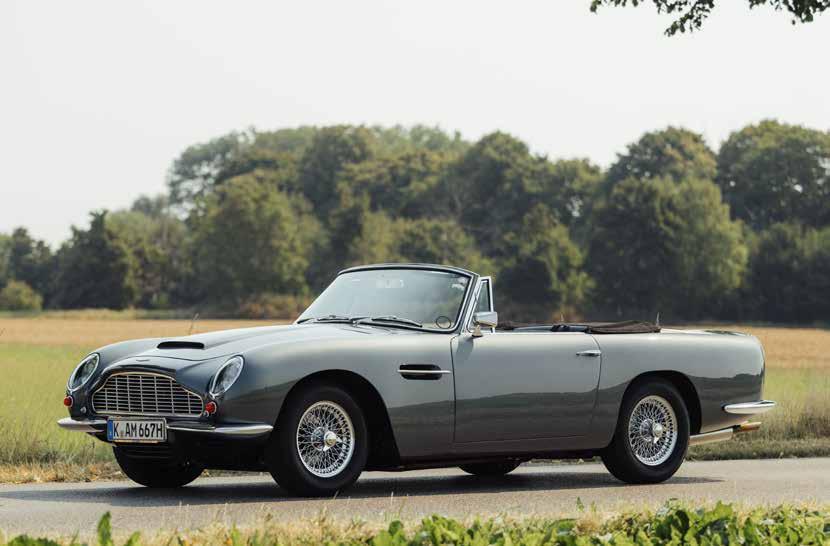
"I have driven most of the Aston Martin models that have been produced, from the racing twin-cam 1½-litre of the 1920s onwards. For years my favourite has been the DB3S sports-racer, but now my allegiance is wavering. There can be little doubt that the DB6 is the best Aston yet and it is a credit to British engineering." - John Bolster, Autosport, 21st October 1966.
Considered by many to be the last 'real' Aston Martin, the DB6 was launched in 1965, updating the DB5. Although Royal patronage of the marque undoubtedly helped DB6 sales, the car arrived at a difficult time for Aston Martin, with the home economy in a parlous state and the US market subject to ever more restrictive legislation.
Though recognisably related to its Touring-styled DB4 ancestor, the DB6 abandoned the underlying Superleggera body structure of its predecessors in favour of a conventional steel fabrication while retaining the aluminium outer panels. Somewhat confusingly, 'Superleggera' badges continued to be applied for a time, presumably until stocks ran out.
The wheelbase was now 4" (100mm) longer than before, resulting in an extensive restyle with more-raked windscreen, raised roofline and reshaped rear quarter windows. Opening front quarter lights made a reappearance but the major change was at the rear where a Kamm-style tail with spoiler improved the aerodynamics, greatly enhancing stability at high speeds. "The tail lip halves the aerodynamic lift around maximum speed and brings in its train greater headroom and more luggage space," declared Motor magazine, concluding that the DB6 was one of the finest sports cars it had ever tested.
The Tadek Marek-designed six-cylinder engine had been enlarged to 3,995cc for the preceding DB5 and remained unchanged. Power output on triple SU carburettors was 282bhp, rising to 325bhp in Vantage specification. Borg-Warner automatic transmission was offered alongside the standard ZF five-speed gearbox, and for the first time there was optional power-assisted steering.


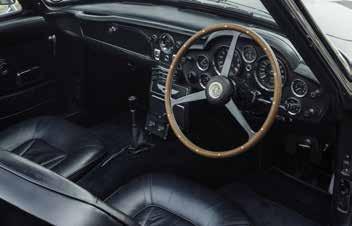
Premiered at the 1965 London Motor Show, the convertible DB6 marked the first occasion the evocative 'Volante' name had been applied to a soft-top Aston Martin. After 37 Volante convertibles had been completed on the DB5 short-wheelbase (8' 2") chassis, the model adopted the longer DB6 chassis in October 1966. The stylish Volante offered four-seat accommodation and was generously appointed with leather upholstery, deep-pile carpets, aircraft-style instrument cluster, and an electrically operated hood.
In the summer of 1969 the Mark 2 DB6 was announced in saloon and convertible versions. Distinguishable by its flared wheelarches and DBS wheels, the Mark 2 came with power-assisted steering as standard and could be ordered with AE Brico electronic fuel injection. When DB6 production ceased in 1970, a total of 1,575 saloons had been made, plus 178 of the long-wheelbase Volante convertibles, 140 of which were to Mark 1 specification like the one we offer. With so few built, the Mark I DB6 Volante is one of the rarest and most collectible of post-war Aston Martins, as well as one of the fastest four-seater soft-tops of its day.
This DB6 Volante was delivered new in the UK to H W Motors on 10th May 1967 and has been in the current owner's possession for 17 years. Between the first and current owners there have been four other custodians: Mr Alfred McAlpine, Mr Paul Heywood, Mr Anthony Joyce, and Mr Ken Chisholm. The Aston was restored in 2000 and since then has been driven regularly and always serviced in specialist workshops.
This Volante is finished in its original, rare and sought-after colour scheme of Platinum Grey with black interior; the engine is original but the automatic gearbox was swapped for a manual one. This is believed to be done in period. Notable features include an electrically operated hood, power windows, a concealed audio system, and a calibrated Trip Master. In recent years the Volante has been entered in numerous regularity events and Concours d'Elegance competitions, winning on several occasions (e.g. BCCM St Moritz, Bensberg Classic, etc).
The car comes with a most extensive history file containing a BMIHT Certificate; Aston Martin Certificate of Delivery; and a substantial quantity of maintenance and repair invoices for the period 1972 to date. The original owner's handbook, tool kit, jack and numerous spare parts are included in the sale. This car comes with German registration documents. €400,000 - 500,000
Chassis no. 660018
Engine no. W-1058-7
• One of only 240 alloy-bodied roadsters made
• Car number 18 of 57 with right-hand drive
• Matching numbers example
• Recent professional restoration with no expense spared (documented by a comprehensive history file)
• UK registration FAS 842

"We claimed 120 mph (for the XK 120), a speed unheard of for a production car in those days." - William Heynes, Chief Engineer, Jaguar Cars.
Told by the post-war Attlee government to 'export or die', the British motor industry responded valiantly, none more so than Jaguar Cars, soon to become the UK's biggest US-dollar earner thanks in no small measure to the success of its XK120 sports car. Ironically, the XK120's creation had only come about because delays in the gestation of the MkVII saloon had forced Jaguar to find an alternative method of bringing its new XK six-cylinder engine to public attention. Conceived and constructed in but a few months, the XK120 debuted at the 1948 Earls Court Motor Show where the stunning looking roadster caused a sensation.
Conceived as a low-volume model, the XK120 proved considerably more popular than expected, the resulting demand for what was then the world's fastest production car taking Jaguar by surprise. It was immediately obvious that the ash-framed alloy coachwork, hand built in the best Vintage tradition, would have to go and the XK120 was reengineered in steel after 240 cars had been completed.
It's stunning appearance notwithstanding, the XK120 was conventional enough beneath the skin, being built on a separate chassis - in essence a shortened and narrowed MkV frame - featuring independent front suspension by means of wishbones and torsion bars, a live rear axle and drum brakes all round. The fact that the major mechanical components were already in existence meant that development centred on the body. The work of Jaguar boss William Lyons himself, and one of the most beautiful shapes ever to grace an automobile, the latter was conceived as a coachbuilt aluminium structure for the simple reason that Jaguar expected to sell no more than 200 XK120s in the first year!
The car's heart was, of course, the fabulous XK engine. Conceived in wartime and intended for Jaguar's post-war range-topping saloon, the 3.4-litre six embodied the best of modern design, boasting twin overhead camshafts running in an aluminium-alloy cylinder head, seven main bearings, and a maximum output of 160bhp. When installed in the lightweight XK120, the result was a car with a phenomenal power-toweight ratio and blistering performance. The '120' referred to the car's top speed, and Jaguar lost no time in demonstrating that this was no idle boast. Any doubts about the claim's veracity were swiftly banished when in May 1949, on the Jabbeke to Aeltre autoroute in Belgium, a standard X120 achieved a top speed of 126.4mph with hood and side screens erected, and 132.6mph minus its weather protection and equipped with an under-tray!

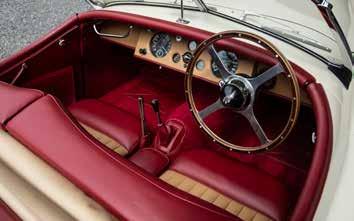

The XK120 set new standards of comfort, roadholding and performance for British sports cars and, in keeping with the Jaguar tradition, there was nothing to touch it at the price. Coupé and drophead coupé versions followed, and for customers who found the standard car too slow, there was the Special Equipment package which boosted power from the stock 160 to 180bhp. With either engine, and regardless of the type of bodywork, the XK120 was a genuine 120mph car capable of sustained high-speed cruising. From launch until the end of production in the autumn of 1954 the XK120's popularity never slackened, especially in overseas markets that took over 85 percent of total output. In the end a little over 12,000 XK120s were built, making every one of the 240 alloybodied roadsters something very special indeed.
The car offered here is one of the rare alloy-bodied roadsters built by Jaguar at the commencement of XK120 production. Car number '18' of 57 produced with right-hand drive, '660018' left the Jaguar factory on 11th November 1949 bound for Dominion Motors in Adelaide, Australia. Finished in Cream with Biscuit/Red leather interior and a Sand hood, '660018' is a beautiful and highly original example of what is recognised as one of Jaguar's most desirable models. The original build details are confirmed by the accompanying Jaguar Heritage Trust Certificate.
This beautiful alloy XK120 was first owned by a Mr Ron Angas, who kept the car for many years before it was purchased by Jaguar collector, Dean Willis. In 1985 he sold the XK to the Clement family, who carried out extensive restoration work and showed the car at various events, winning multiple awards. The car changed hands in 1999, remaining with the new custodian for two decades, including a lengthy stint in Hong Kong. In 2017 the Jaguar returned to the UK, where marque specialists CMC UK were commissioned to carry out a full restoration to impeccable condition with no expense spared. Related invoices on file show that more than £240,000 was spent.
In 2021 this car was purchased by a prominent collector, joining his sizeable collection in Germany. The car retains its German registration, and during this period it has been driven, serviced and fastidiously maintained. All of the work carried out on this car, dating back to its original sale in 1949, is detailed in the comprehensive history file.
Resplendent in its original specification, and restored to the absolute highest standard, this Jaguar XK120 alloy-bodied roadster is presented in remarkable condition.
€200,000 - 250,000
Chassis no. WBAEJ11000AF78763
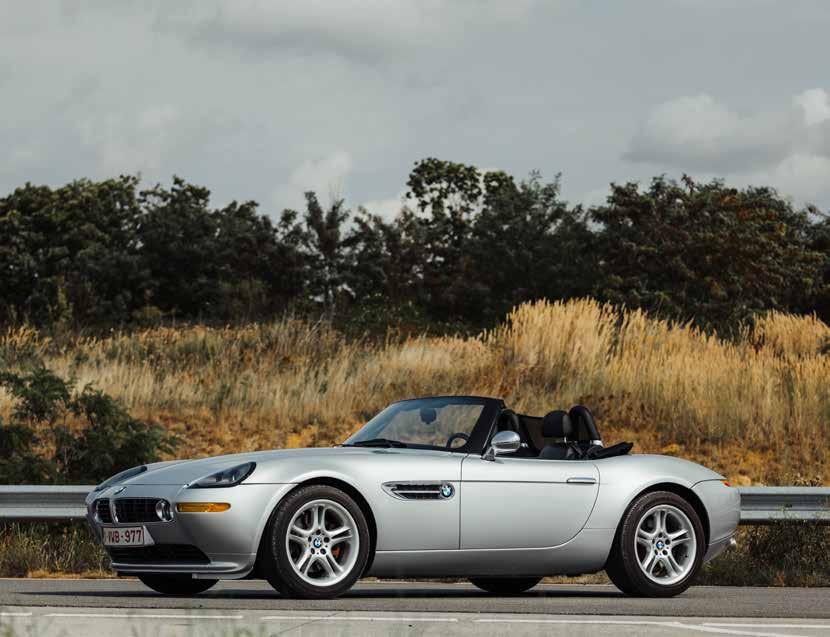
In recent times many motor manufacturers, particularly those with a significant sporting heritage, have felt the need to reference iconic models from the past when launching their latest. BMW has proved adept at exploiting this 'retro' trend, commencing in 1996 with the Z3 coupé and convertible, the styling of which brilliantly recalled its fabulous '328' sports car of pre-war days. Its next effort along similar lines - the 'Z07' concept car of 1997 - took its inspiration from the post-war Alfred Goetz-designed '507', a luxurious limitededition roadster.
The sensation of the 1997 Tokyo Auto Show, the Z07 was received so enthusiastically that BMW decided to proceed with a production version: the Z8. For the most part the Z8 remained remarkably faithful to the original concept, retaining the 507-like twin-nostril front grille and distinctive front-wing vents. A period-style interior had been one of the Z07's most remarked upon features, and that too made it into the Z8.
• Delivered new to Belgium
• Only two owners from new
• c.66,000 kilometres recorded from new
• Garaged and used only sparingly since 2011
• Freshly serviced for the sale
The Z8's body panelling and bespoke spaceframe chassis were fabricated in lightweight and corrosion resistant aluminium, while the 32-valve 4,941cc V8 engine, shared with the M5 saloon, was built by BMW's Motorsport division. With 400bhp on tap, the Z8 raced to 100km/h (62mph) in 4.7 seconds and only the built-in rev limiter stopped it from exceeding 250km/h (155mph). It was rumoured that 290km/h (180mph) was achievable with the restrictor removed...
Power reached the run-flat tyres via a Getrag six-speed manual gearbox. Needless to say, the Z8 also came with all the modern appurtenances one would expect of a flagship model: traction control, stability control, front and side air bags, GPS navigation, climate control and power operation of the seats, steering wheel and convertible hood all being included in the package.
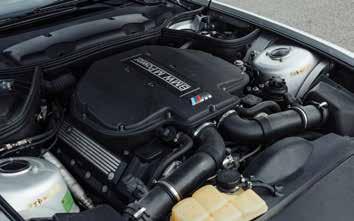
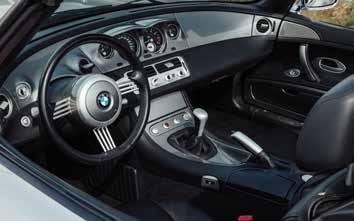
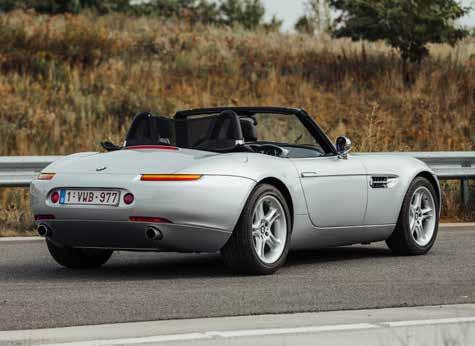
The fact that the Z8 was a low-volume model assembled, for the most part, by hand, enabled BMW to offer customers considerable freedom in personalising their cars. Further enhancing its appeal to collectors, the factory announced that a 50-year stockpile of Z8 parts would be maintained. Despite a (US) launch price of over $128,000, initial demand was so high that a bidding war broke out, with many Z8s selling for well in excess of that figure. By the time production ceased in 2003, 5,703 of these fabulous cars had been built.
Manufactured on 19th February 2001 and Belgian delivered new, this two-owner car comes with its original hardtop, service book, instruction books, and a third party condition report from 2011 when the odometer reading was approximately the same as today. A Car-Pass certificate from 2011 is on file, suggesting that the odometer reading was correct up until March 2011 when the current owner purchased the car, which has been garaged and only used sparingly.
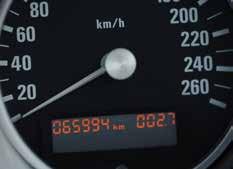

Finished in Titanium Silver with black convertible roof and matching leather-trimmed interior, the car features a body-coloured upper dashboard and seat bases, and aluminium-effect accents. The car rides on the correct 18" spoked alloy wheels. The vendor describes the condition overall as excellent, with only light signs of wear visible, as one would expect of a car this age.
This BMW Z8 is a highly sought-after convertible cruiser, finished in a timeless factory colour combination. This two-owner Belgian-market example has a solid history and is certain to appeal to collectors. Garaged for several years and used only sparingly since 2011, this modern classic comes to the sale freshly serviced and ready to be enjoyed on spirited drives or long-distance tours.
€160,000 - 180,000
No Reserve

Former President and Chief Executive Officer of Cartier International
We are delighted and honoured to receive this endorsement from one of the world’s outstanding leaders in luxury, design and style. This joint venture goes beyond commerce into the realms of art and emotion: it’s a partnership that combines business excellence and the best of taste on both sides.
As a boy in the 1950s, driving around Morocco with his father in Alfa Romeos and American cars, Bernard fell in love with the refined GTs being produced in the USA and in Europe during that golden age for car design.
Many kids dreamt they might own one of those cars someday. Bernard Fornas, however, fulfilled that dream abundantly in his extraordinary working life: he would acquire them all. Bernard Fornas’s career could be taught in business schools as a masterclass. It blended marketing acumen with a deep respect for heritage and innovation and added firm ethical principles.


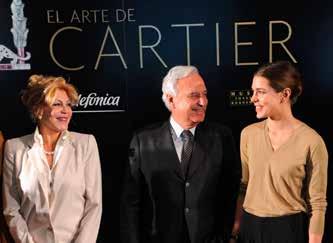
He joined Cartier in 1994 as international marketing director, becoming CEO in 2002 and leading the brand through economic turbulence while maintaining its exclusivity and prestige. In 2013, Bernard Fornas became Co-Chief Executive of Richemont, overseeing brands like Chloé, Alaïa, and Dunhill.
Founded in Paris in 1847, Cartier was described by King Edward Vll as “jeweller of kings and king of jewellers” and supplied every crowned head of Europe. Under Bernard Fornas, Cartier was led to unprecedented heights. He spearheaded global expansion, especially into emerging markets like China, Russia, and the Middle East. Moving in the most elevated social and business circles, silverhaired and immaculately tailored, Bernard Fornas said of this period, “I live on planes”.
Believing that luxury and exclusivity is about innovation and emotional resonance, not just price tags, he advocated for ethical sourcing, refusing to buy rubies from Burma due to human rights concerns and opposing the trade in blood diamonds.
The cars in this consignment thus embody the glittering qualities of the top luxury brands Bernard Fornas championed throughout his working lifeexclusivity, outstanding design and engineering, deep cultural significance.
BonhamslCars are, therefore, proud to present to the global marketplace Mr Fornas’ exquisitely curated collection of motorcars.
Meanwhile, buyers can take pleasure in acquiring the painstaking choices of a man who is renowned for utterly impeccable taste and an unsurpassed reputation for appreciating excellence and beauty.



Chassis no. 16910515
• One of only 1,830 built in 1953
• 5.3-litre V8 engine
• Automatic transmission
• Owned by Bernard Fornas since 2015
• Very well presented

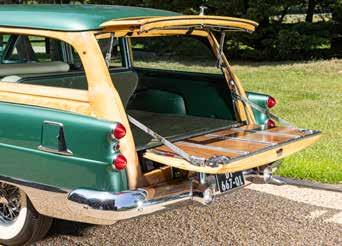

Inventor David Dunbar Buick built his first automobile in Detroit, Michigan in 1903. More designer than businessman, Buick's lack of talent in the latter role led to a number of changes of ownership in the firm's early years before its founder was eventually eased out in 1908, his departure from the Buick Motor Company coinciding with its establishment as the cornerstone of new owner William C Durant's General Motors.
Under Durant's stewardship production rose dramatically from 750 cars in 1905 to 8,802 in 1908 when Buick's most popular model was the four-cylinder Model 10, priced at $900 and a direct competitor for Ford's Model T. The four-cylinder Buicks were replaced by smaller sixes for the 1916 model year but the 'four' was back for 1917 in the shape of a two-door roadster and four-door tourer, both powered by a new overhead-valve engine with detachable cylinder head.
For a period in the 1920s the range consisted entirely of sixes and then at the end of 1930 Buick dramatically axed its six-cylinder models, adopting an all eight-cylinder range for 1931.
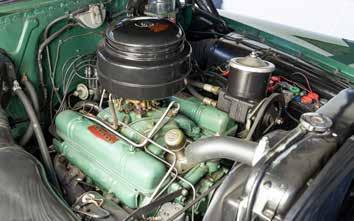

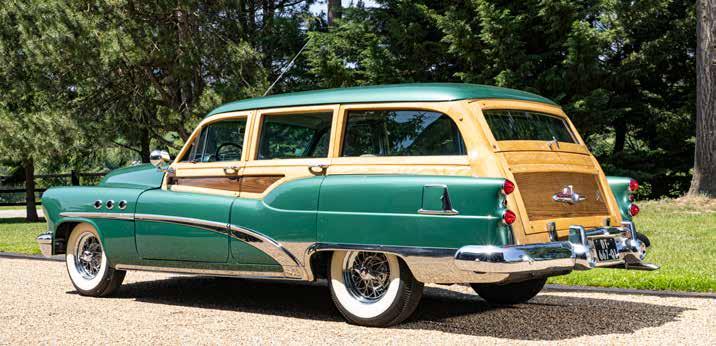
Stylistically and mechanically, the Buick range was comprehensively revised for 1936, featuring 'turret top' styling and improved independent front suspension, and these revitalised straight-eights would carry Buick through to WW2 and indeed beyond, as its products of the immediate post-war years, like those of its major rivals, were revised 1942 models. The first significant post-war styling changes arrived in 1949 and then in 1950 the famous 'bucktooth' range was introduced, so called because of its bold vertical grille bars. Vertical grille bars had characterised Buicks for some time but the 1950 line-up took this to extremes. The following year saw this styling device assume less exaggerated proportions before disappearing completely on the restyled 1955 range, by which time the old inline engine had been replaced by a new overhead-valve eight of 'V' configuration.
For 1953 there were four models in the middle-priced Super line-up, the rarest, with only 1,830 built, being the four-door, six-seater Station Wagon. The Roadmaster's new 322ci (5.3-litre) overhead-valve V8 was standard on the Super range for 1953.

The 'Woodie' station wagon, with its characteristically half-timbered body, ranks alongside the pickup truck as a quintessentially American vehicle. The style originated in the 1930s, its popularity peaking in the immediately post-war decades, though the look has been periodically revived by manufacturers on both sides of the Atlantic ever since. Towards the end of the 1950s the Woodie became the vehicle of choice among California surfers, who appreciated its ability to carry several passengers and their boards. Surfer pop bands The Beach Boys and Jan & Dean both referred to them in hit singles, thereby enshrining the Woodie's cult status. It has also featured in countless movies. Sadly, many were cut down or scrapped when the body timbers rotted, and the relatively few survivors are both highly prized and increasing in value. This car's body is the work of the Ionia Manufacturing Company, which was contracted to build all Buick's station wagons from 1949 to 1953.
This charming Buick 'Woodie' Station Wagon was purchased by Mr Fornas in April 2015 from Mendham Motors Inc of Gladstone, New Jersey, USA. It was described in an advertisement as a 'former AACA National First Prize Winner'. Since purchase the car has been regularly maintained by Mr Fornas' trusted mechanic, though it has never needed major work and is very well presented indeed.
€40,000 - 60,000 No Reserve

Coachwork by Carrozzeria Ghia
Chassis no. AM115/49 2128
Engine no. AM115/49 2128

• Originally built to US specification
• Desirable manual transmission
• Present ownership since 2014
• Maintained with no expense spared (see bills)
• Bodywork professionally restored

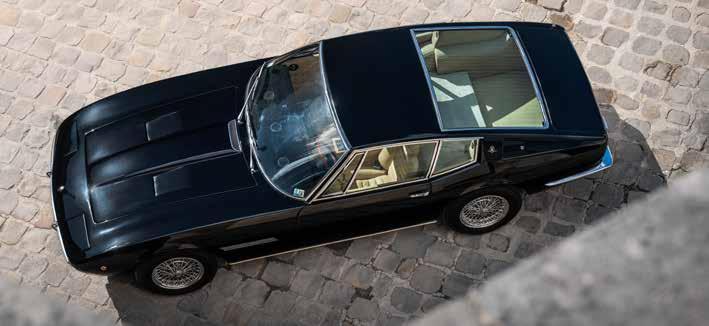
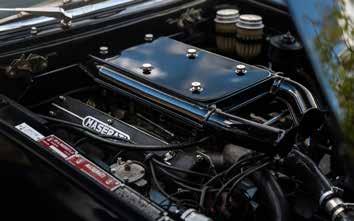
A strong contender for 'most handsome car of the 1960s' title, Maserati's Ghibli debuted in coupé form at the Turin Motor Show in November 1966. Styled at Carrozzeria Ghia by Giorgetto Giugiaro and named after a Sahara Desert wind, the Ghibli rivalled the Ferrari 365 GTB/4 'Daytona' for straightline performance - its top speed was around 170mph (275km/h) - while beating it for price and, arguably, looks. More than 4.5m long and 1.8m wide, the Ghibli occupied an inordinate amount of space for a mere twoseater, but perhaps the most startling aspect of its appearance was the height, or rather the lack of it (it was only 1.15m tall). Dry-sump lubrication enabled the engine to be mounted deep in the chassis, permitting a low bonnet line, while limited suspension travel ensured that the tyres did not foul the wheelarches. The roofline fell away from the top of the steeply raked windscreen to the chopped-off tail, Giugario thus achieving a cabin lower than that of almost all the Ghibli's contemporaries.
Like the contemporary Mexico 2+2, the Ghibli used a shortened version of the Quattroporte saloon's tubular steel chassis in its live-rear-axle form. Perhaps surprisingly, the Ghibli set-up used leaf springs and a single locating arm in preference to the more complex suspension arrangements favoured by its rivals. The power unit was Maserati's venerable, four-cam, 90-degree V8, an engine derived from that of the 450S sports racer and first seen in road-going guise in the 5000GT. This was used in 4.7-litre form up to 1970 when it was superseded by the 4.9-litre 'SS' version in order to meet ever more stringent emissions laws. The gain in horsepower was minimal but in either case performance was stunning, with 100mph (160km/h) attainable in under 16 seconds. This neck-snapping acceleration resulted from the V8's enormous torque, which made the Ghibli one of the most flexible and easy-to-drive GTs of its era.
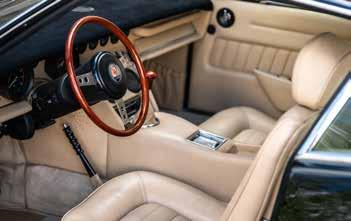
Testing a 4.7-litre model in 1968, Car & Driver recorded a standing quartermile time of 14.9 seconds with a terminal speed of 97mph: "But quartermile drags were never meant to be the Ghibli's forte, it's a GT car (with a claimed 174mph top speed) and it's doubtful that you'll find a more comfortable car – or one easier to drive at high speeds. Put your foot to the wood and there is an audible gasp from the engine compartment as the four big Weber carburettors begin sucking in additional air, and at the same instant you are slammed back in the seat as the car surges forward."
Ghibli production ceased in 1973 after approximately 1,149 coupé and 125 spyder models had been built. One of the most stunning sports cars ever made, the Ghibli was a worthy rival for the Ferrari Daytona and represents exceptional value for money today, just as it did 50 years ago.
This manual transmission Ghibli SS was originally built to US specifications, as evidenced by a plate in the engine compartment and a Texas Department of Public Safety sticker in the windscreen. It is not known when the Maserati returned to Europe, but documentation on file shows Bernard Fornas purchased it from The Gallery (Aaldering Classic & Sportscars Brummen) on 15th September 2014. The odometer reading at that time was 45,599 miles and is currently 47,956, indicating a mere 2,357 miles covered in the last 11 years. Accompanying paperwork also includes a Maserati Certificate of Origin; copies of registration documents and DEKRA Contrôles Techniques; insurance documents; numerous bills for extensive maintenance, many issued by Cecil Cars, Ollainville; and a selection of photographs documenting a bodywork restoration.
€165,000 - 210,000

139 * 1980 FERRARI 308 GTS
Coachwork by Carrozzeria Pininfarina/Scaglietti
Chassis no. F106AS31519
Engine no. 04369
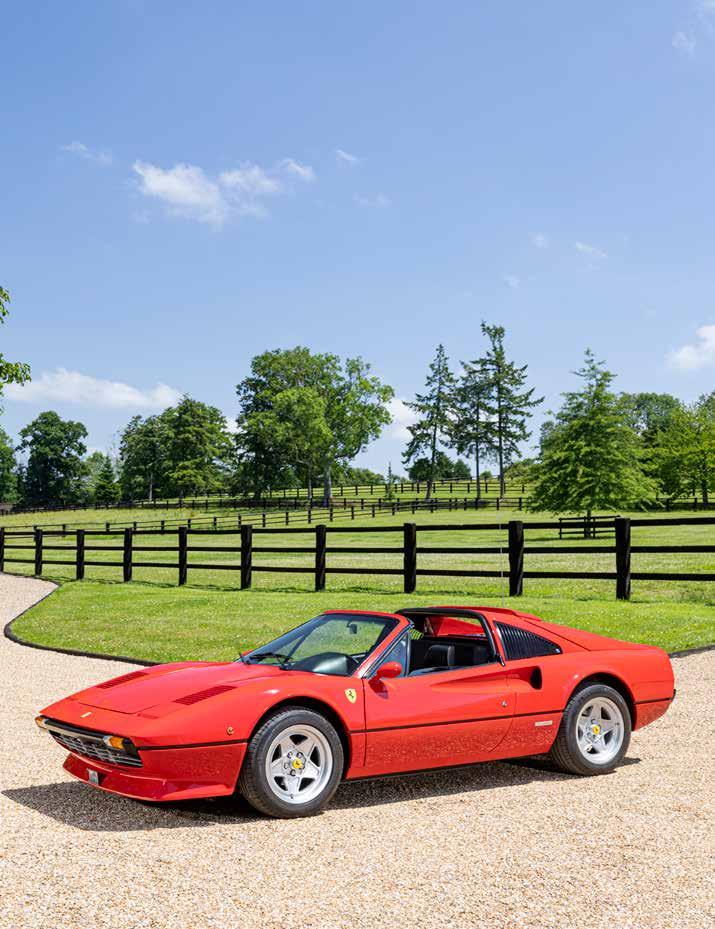
• The best-selling Ferrari of its era
• Sold new in Germany
• Purchased from Geneva-based dealer Carugati Automobiles
• Comes with all books and tools (including service booklet)


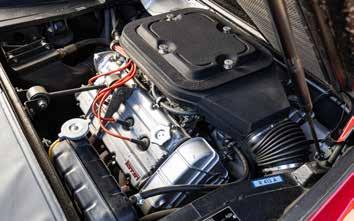
"In the early days, Enzo Ferrari often declared that his road cars would only ever have 12-cylinder engines. That was why, when the company first started producing models with V6s and V8s, they were badged as Dinos. "Despite having fewer than Enzo's requisite 12 cylinders, the 308 GTB was also badged and marketed as a Ferrari – a victory for the money men at parent company Fiat, no doubt, but one warmly embraced by customers. The GTB not only looked terrific; it had excellent performance, was barely two-thirds of the price of a Berlinetta Boxer, and it had a Ferrari badge on the nose. No wonder it sold like hot cakes." - evo magazine.
Introduced at the Paris Salon in 1975, the stunningly beautiful 308 GTB - Ferrari's second V8-engined road car - marked a return to Pininfarina styling following the Bertone-designed 308 GT4 that had launched this highly successful series in 1973. Badged as a 'proper' Ferrari rather than a Dino, the 308 GTB had changed little mechanically apart from a reduction in both wheelbase and weight, retaining its predecessor's underpinnings and transversely mounted 3-litre quad-cam engine that now featured dry-sump lubrication. In road tune this superbly engineered power unit produced 255bhp, an output good enough to propel the 308 GTB to a top speed of over 150mph.
Produced initially with glassfibre bodywork - the first time this material had been used for a production Ferrari - the Scaglietti-built 308 GTB used steel after April 1977, while further developments included the introduction of an open-top GTS version with Targa-style removable roof, the adoption of Bosch K-Jetronic fuel injection (1980) and, finally, revised cylinder heads with four valves per cylinder (1982).
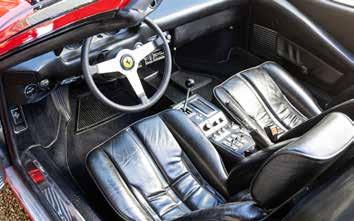
An exhilarating driver's car and a Ferrari purist's delight, the 308 GTB and its many derivatives proved a huge commercial success for Maranello with over 12,000 sold. A Weber carburettor model, this exceptional example of Ferrari's first Pininfarina-styled V8 road car was sold new in April 1980 via Auto Becker of Düsseldorf, Germany to one H Hüve. It is believed that the car was originally delivered in Grigio with red leather interior before being repainted in red and the interior re-Connollised in black. Period options include front and rear spoilers, four-pipe exhaust outlets, and the rare 16" alloy wheels.
Mr Fornas bought the car through Geneva-based dealer Carugati Automobiles, whose list of past owners and services, mainly relating to the period November 2011 to November 2021, is on file. The last major service listed is dated November 2021 at 22,187 kilometres, and included a change of cam belts. This beautifule V8-engined Ferrari, still registered in Switzerland, comes complete with jack, tools, spare wheel, and its folder of books, including the service booklet.
€85,000 - 110,000
No Reserve
For more information on the Symbol next to the Lot Number, please refer to the Lot Symbols Key at the front of the Catalogue.
Chassis no. SAJ-JNADW4DM 174364
• Delivered new in France
• Automatic transmission
• Owned by Bernard Fornas since 2013
• Only 7.500 kilometres recorded
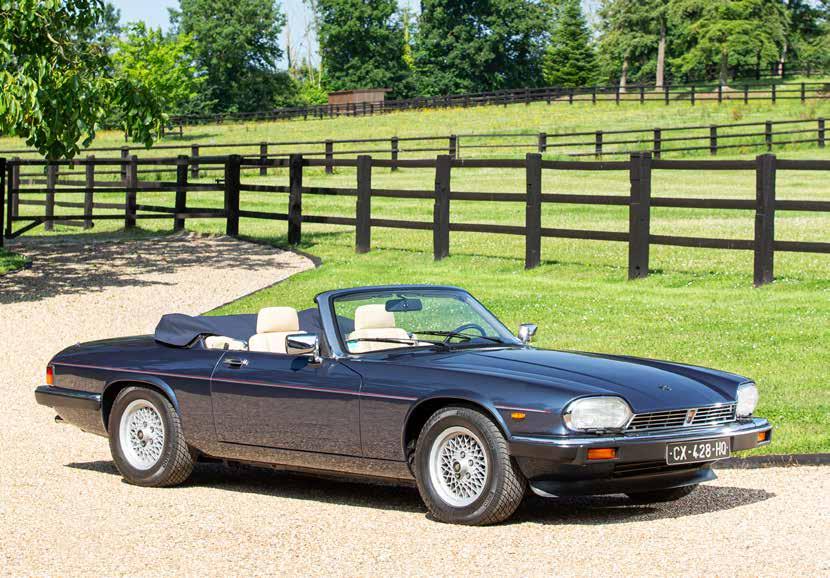
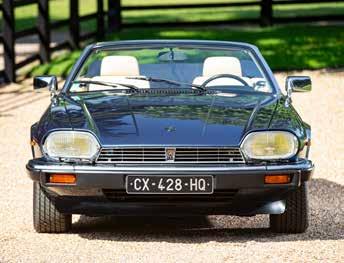

With E-Type sales falling and an outright ban on convertibles looming in its most important export market – the USA – Jaguar addressed the problem of defining its successor as the 1960s drew to a close. Code named 'XJ27', the car that would evolve into the XJ-S was styled by Malcolm Sayer (the man responsible for the E-Type) under the fatherly eye of Jaguar boss, Sir William Lyons.
Conceived as a comfortable and long-legged Grande Routière, rather than an out-and-out sports car like the preceding E-Type, the XJ-S made use of the Jaguar XJ6/XJ12 saloon platform and running gear. Shorter in the wheelbase than its saloon siblings, the XJ-S debuted at the 1976 Frankfurt Motor Show as a V12-powered coupé with sixcylinder and soft-top versions following in the 1980s, the expected ban on open cars having failed to materialise.
One of the most important developments in the evolution of the V12powered XJ-S was the introduction of the HE (High Efficiency) engine in 1981. Incorporating a new 'Fireball' cylinder heads, designed by Swiss engineer Michael May, this more fuel-efficient unit enabled the top-of-the-range XJ-S to meet tighter worldwide emissions legislation.
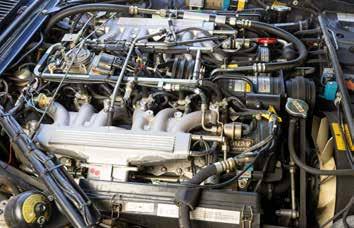
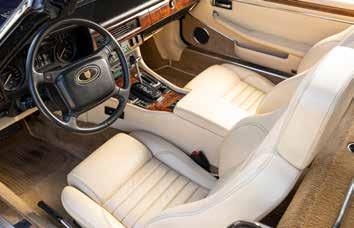
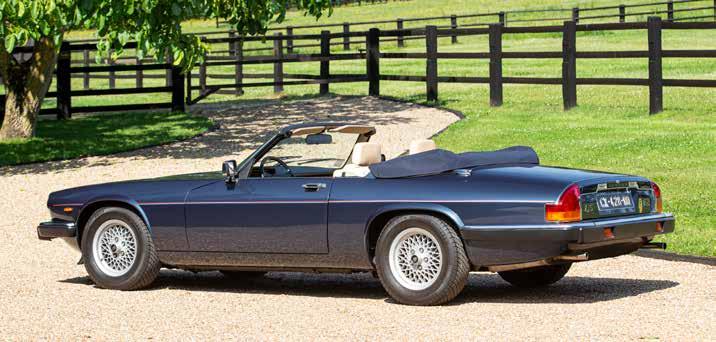
Combined with a higher (2.88:1) final drive ratio, the result was an improvement in fuel consumption of up to 20% at some engine speeds. It is worth noting that that figure applied to the automatic transmission version, which with a top speed of 155mph (approximately 249km/h) was the world's fastest 'slush pumper'.
The car's 150mph performance was not achieved without penalty however, its prodigious thirst causing sales to nosedive as oil prices soared. However, the arrival of the HE (High Efficiency) V12 in 1981 and the introduction of the smaller six enabled it to weather the storm. The introduction of the six-cylinder model in 1983 coincided with that of the Targa-style cabriolet - the first open Jaguar since the E-Type's discontinuation - but it was not until 1988 that a full convertible became available.
Jaguar's first response to demands for an open-top XJ-S was somewhat conservative in engineering terms. The car had not been designed with an open version in mind, so a Targa-style arrangement was adopted for the XJ-S Cabriolet, which retained a substantial roll hoop in the interests of maintaining rigidity in the absence of a fixed roof.

Essentially an exercise in niche marketing to test public reaction, the Cabriolet's production was entrusted to outside specialist contractors, with bodyshells being transported back and forth across the Midlands before returning to the Brown's Lane factory prior to final despatch. Following the Cabriolet's deletion, both the Coupé and conventional Convertible models lasted until the end of XJ-S production in 1996.
This left-hand drive, automatic transmission XJ-S V12 Convertible was manufactured on 6th August 1990 and delivered new to Jaguar France in Paris finished in Solent Blue metallic with Magnolia interior. Mr Fornas purchased the car from the dealer Jean Guikas (GTC Sarl) in July 2013 when it had a genuine total of 3,395 kilometres on the odometer. Reportedly, the car had only one previous owner (Mr Jacques Delair, 8, rue du Treuil, 16160 Gond Pontouve) who bought it from Jaguar Bordeaux, the car being delivered to him on 13th July 1990. He never drove the car on public roads but only within the grounds of his French château, hence the minimal invoices accompanying it. The car also comes with a JDHT certificate and is presented in the excellent condition one would expect of a car that has covered a trifling 7,500 kilometres from new!
€45,000 - 65,000
No Reserve

141
1976 RANGE ROVER 4X4 3.5-LITRE
Chassis no. 35821294D
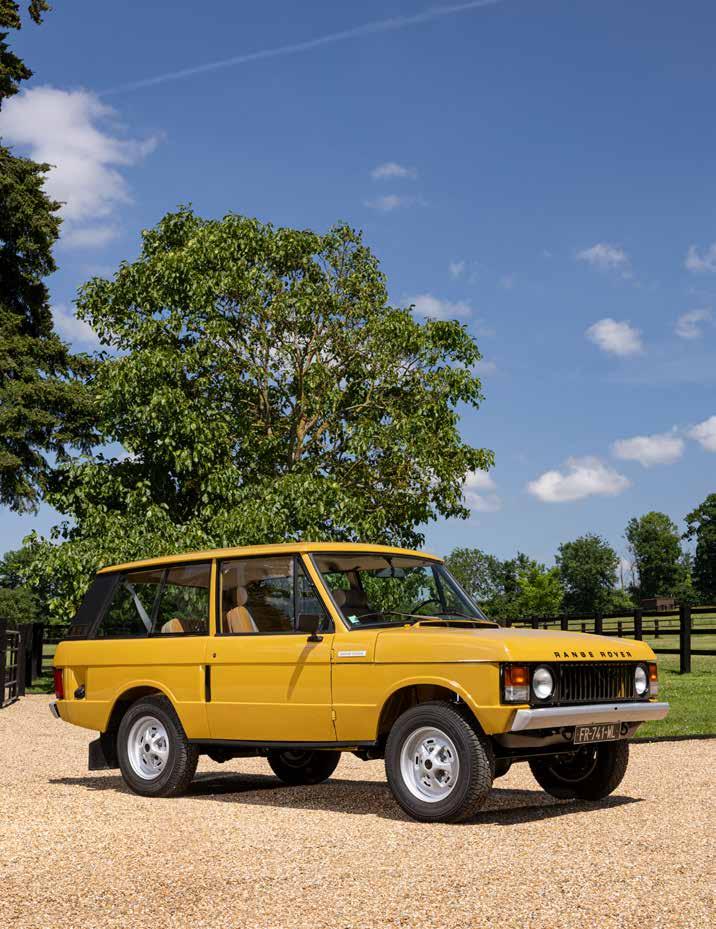
• Formerly the property of Alain Delon
• Original 3.5-litre V8 engine
• Comprehensive high-quality restoration
• Original Bahama Gold livery
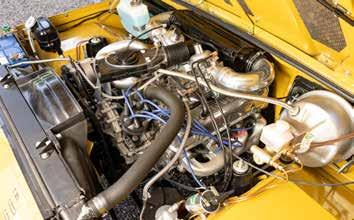
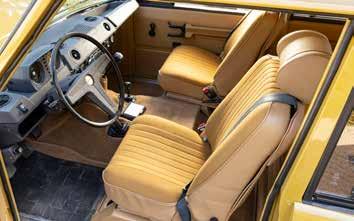
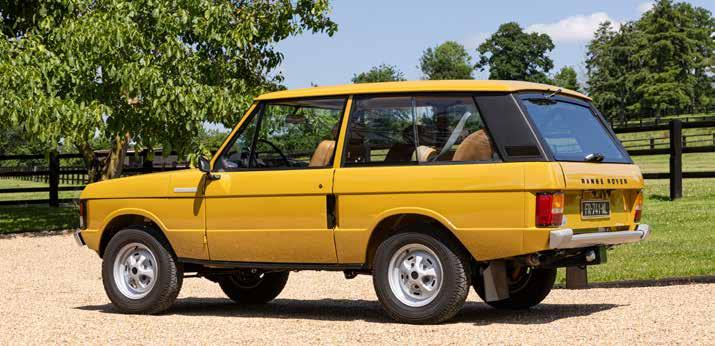
"The first production Range Rover seemed a technological wonder. Permanent four wheel drive, dual line disc brakes, and lightweight V8 engines were unusual enough on road cars; thoroughly radical for anything that went off road." - Eric Dymock, Land Rover File.
An outstanding landmark design that almost single-handedly created the booming market in dual-purpose 4x4s, the Range Rover was greeted with universal acclaim on its arrival in 1970 and has remained the class leader, despite ever increasing foreign and domestic competition, ever since. The idea of a more road-biased 4x4 had been around since the Land Rover's arrival in the late 1940s, but it would be some two decades before the concept crystallised in what would end up as the Range Rover. 'Spen' King and Gordon Bashford were responsible for the initial conception, with final detailing entrusted to David Bache. A separate, Land Rover type chassis was employed to carry the enclosed aluminium body, while long-travel coil-sprung suspension ensured that the ride would be more saloon car than utility. Rover already possessed an ideal power unit in the form of its 3.5-litre light alloy V8.
The Range Rover was greeted enthusiastically by both press and public on its arrival in 1970, offering comfortable cruising at 90mph and a greater off-road capability than most of its customers would ever need.

The fact that the original lasted in production for an amazing 24 years before being replaced in 1994 only serves to illustrate the soundness of the original concept. Indeed, the 'old' Range Rover - evocatively renamed Range Rover Classic - did not disappear immediately but continued to be built for another year alongside the new P38A version.
The early classic three-door example offered here dates from 1976, by which time the Range Rover had gained an extensively upgraded interior and power assisted steering in response to customer demand. Registered on 1st June 1976, this 'Rangie' was once owned by French film star Alain Delon, as evidenced by the copy of its old registration document on file. The previous owner, a Range Rover collector, treated the car to a comprehensive restoration between 2019 and 2020, which included removing the body, stripping the chassis, and repainting the car in its superb original - and very 1970s - Bahama Gold livery. The matching numbers engine was also completely overhauled together with the running gear, while the upholstery was retrimmed, as evidenced by numerous photographs and invoices on file. Mr Fornas purchased the range Rover from a French auction in March 2022. Offered with a French title, and possessing A-List celebrity provenance, this superbly restored Range Rover represents a unique opportunity.
€100,000 - 130,000
No Reserve
Chassis no. WP0ZZZ91ZJS102879
• Desirable model with the G50 gearbox
• Delivered new in France
• Known ownership history
• Three owners from new
• All books and tools
• Circa 51,800 kilometres recorded from new

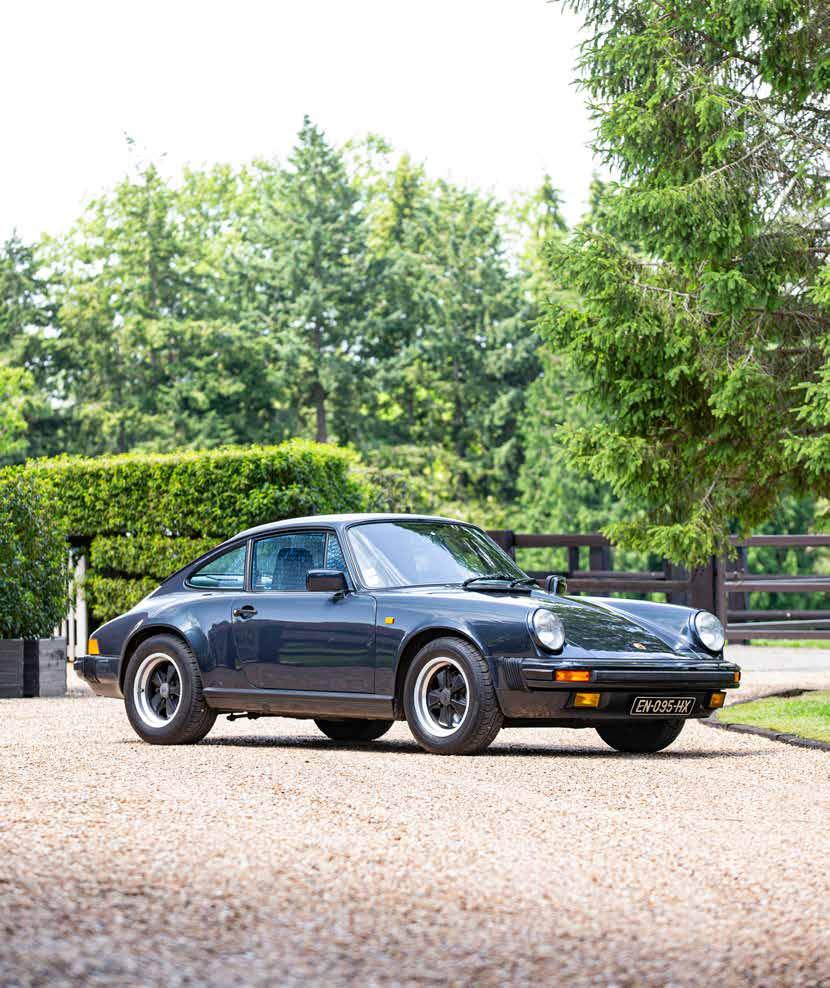

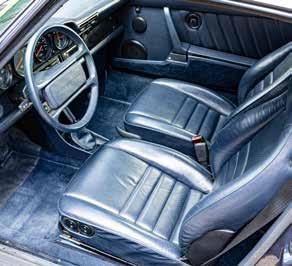

Porsche revived the evocative Carrera name - previously used for the competition orientated versions of the preceding 356 model - for its luxuriously equipped, top-of-the-range 911 in 1973, applying the title to all 911 variants, co-incidentally with the introduction of the 3.2-litre engine, from the start of the 1984 model year. The revived name was part of a major revamp of the long-running 911, now selling better than ever, development of which had slowed while Porsche concentrated on meeting the ever increasing demand.
Although it remained an air-cooled 'flat six', the '3.2' motor was 80% new and incorporated an effective cam chain tensioner and associated lubrication system that at last addressed a perennial 911 shortcoming. An ECU controlled the fuel and ignition systems for the first time on a 911, enabling the engine to be both more powerful and less thirsty. As a result, this enlarged and extensively revised power plant now produced 231bhp, 27 horsepower up on its predecessor, endowing the Carrera with a level of performance approaching that of the original 911 Turbo of 1974, the bald statistics being a 0-60mph time of 5.3 seconds and a top speed of 152mph (244km/h) with 100mph (160km/h) reachable in a breathtaking 13.6 seconds.
No major changes were made to the bodyshell, though there was a new front spoiler with integral fog lamps, while the number of models on offer remained at three: Coupé, Targa, and Cabriolet.

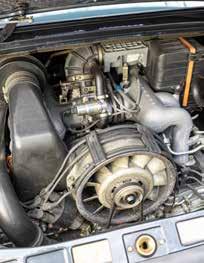
In 1987 the Carrera was upgraded with a new five-speed 'G50' gearbox sourced from Getrag, together with an hydraulically operated clutch. Thirty-plus years on, the Carrera 3.2 is now highly sought after and for very good reason, though finding one is not that easy.
This stunning Carrera 3.2 was ordered new by a Mr Jacques Boudet resident in Louveciennes (78) on 18th June 1988. Copies of the bill of sale and the original temporary registration document are on file. The Porsche then passed to a Mr Guy Rocchi before being bought by Mr Fornas in 2017 from Mr Rocchi's daughter, who had inherited the car from her late father. The odometer reading was 49,720 kilometres at time of purchase and currently stands at a little over 51,800 kilometres. Also on file is a detailed and copiously illustrated Rapport d'Expertise from Michel Gicquel, which was commissioned by way of a pre-purchase inspection by Mr Fornas in 2017. This report lists all servicing and maintenance carried out from the time of delivery in 1988 up to August 2015. It concludes: "Vehicle in a rare condition (in original paint) and with a clear history." The Carrera also comes with its Porsche wallet, tool kit, space-saver spare wheel, stamped service book, various instruction manuals, and other historical paperwork. Finished in dark blue with matching interior, this Carrera presents beautifully and feels almost like a new car. A rare opportunity.
€90,000 - 110,000
No Reserve
Chassis no. 12283
Engine no. 245
• Owned by Mr Fornas since December 2014
• Maintained by Ferrari specialists Dino Sport
• Engine rebuilt in August 2017 (bills and photographs available)
• 26,652 kilometres recorded
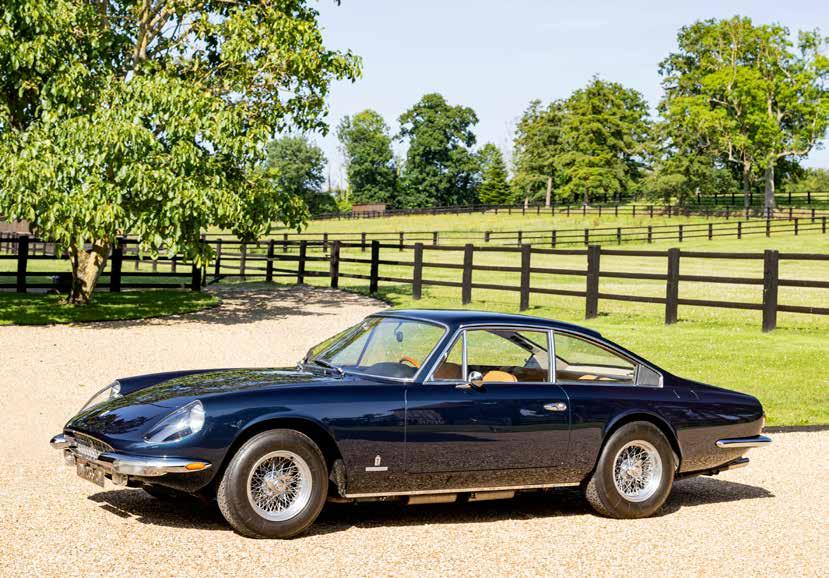


By the mid-1960s, 50 percent of all Ferraris produced were being built with four seats, and following on from the success of its first such model, the 250 GTE of 1960, Ferrari introduced the 330 GT 2+2 in January 1964. The newcomer's steel tube chassis was 2" longer in the wheelbase than that of its predecessor and featured independent front suspension and a live rear axle. Beneath the 330's morespacious Pininfarina coachwork was a 300bhp, 4-litre V12 coupled to a four-speed overdrive gearbox. Its replacement, the 365 GT 2+2, was launched at the Paris Salon in October 1967. Sleekly styled in the manner of the limited edition 500 Superfast, the 365 GT 2+2 was the most refined Ferrari to date.
Based on that of the contemporary 330 GTC, the chassis was made up of Ferrari's familiar combination of oval and round steel tubing, and as well as featuring independent suspension all round (for the first time on a Ferrari 2+2) boasted Koni's hydro-pneumatic self-levelling system at the rear. Further refinements included mounting the engine and drivetrain in rubber bushes to insulate the car's occupants from noise and vibration, and offering ZF power-assisted steering and air conditioning as standard equipment.
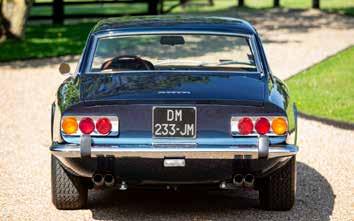
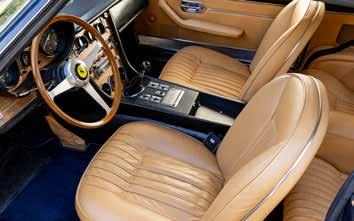
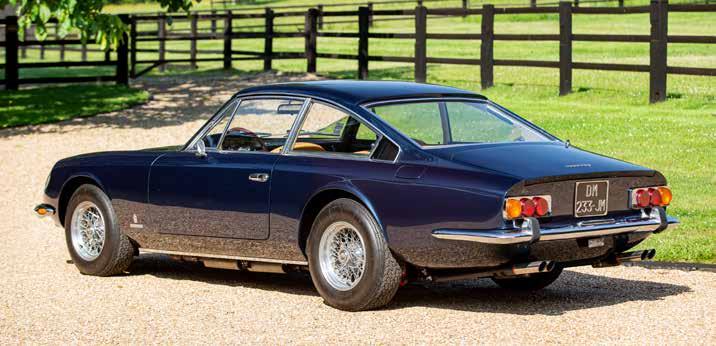
Developing 320bhp in its 365 GT incarnation, the well-proven 4.4-litre V12 engine was coupled to a five-speed gearbox, while the car's blistering performance - top speed 150mph, 0-60mph in 7.0 seconds - was restrained by Girling ventilated discs all round. A total of 800 cars had been completed by the time production ceased in 1971.
Endowed with fine handling and a supple ride, the 365GT 2+2 was rated by Car magazine as "the most civilised Ferrari yet". Impressed by the car's build quality, Car & Driver reckoned it, "prototypical of the new Ferraris where everything fits and falls together accurately, as needs must if Ferrari is to survive in the US market". The respected American motoring magazine found the overall effect to be "one of a very real and serious, ultra luxurious, high-speed touring machine," yet no compromises had been made in the handling department: the 365 GT 2+2 remained very much a driver's car in the traditional Ferrari manner. Road & Track agreed: "Out on the open road this car really comes into its own, as does any Ferrari; the power steering makes it seem light on its feet and the giant Michelin XVR tyres furnish high cornering power with little fuss."

This elegant Ferrari 365 GT 2+2 was purchased by Mr Fornas in December 2014 from the well-known French classic car specialist, Cecil Cars (see bills on file). Since purchase Mr Fornas has had the car regularly maintained by Ferrari specialist Dino Sport in Bezons, France (bills on file). At 23,410 kilometres the following components were replaced: rear shock absorbers; fuel pumps; fuel lines; electrical wiring (for the fuel pumps); and radiator fans. In September 2016, the gearbox was overhauled, and a new clutch installed. In August 2017, the engine was dismantled for a full overhaul, in the course of which new pistons were fitted, for a total of €46,781.96 (bills and photographic record on file). Also, some minor cosmetic work was undertaken by Cecil Car's workshop with some attention to the wiring. Since then, the car has been regularly maintained by Mr Fornas' local specialist.
The current odometer reading is 26,652 kilometres. As well as the aforementioned documentation, the Ferrari comes with a detailed and copiously illustrated Rapport d'Expertise from Michel Gicquel, which was commissioned by Mr Fornas in November 2016. A wonderful opportunity to acquire a very well cared for example of this highly desirable Ferrari Gran Turismo.
€200,000 - 220,000
Coachwork by Carrozzeria

Chassis no. 4439
Engine no. 4439
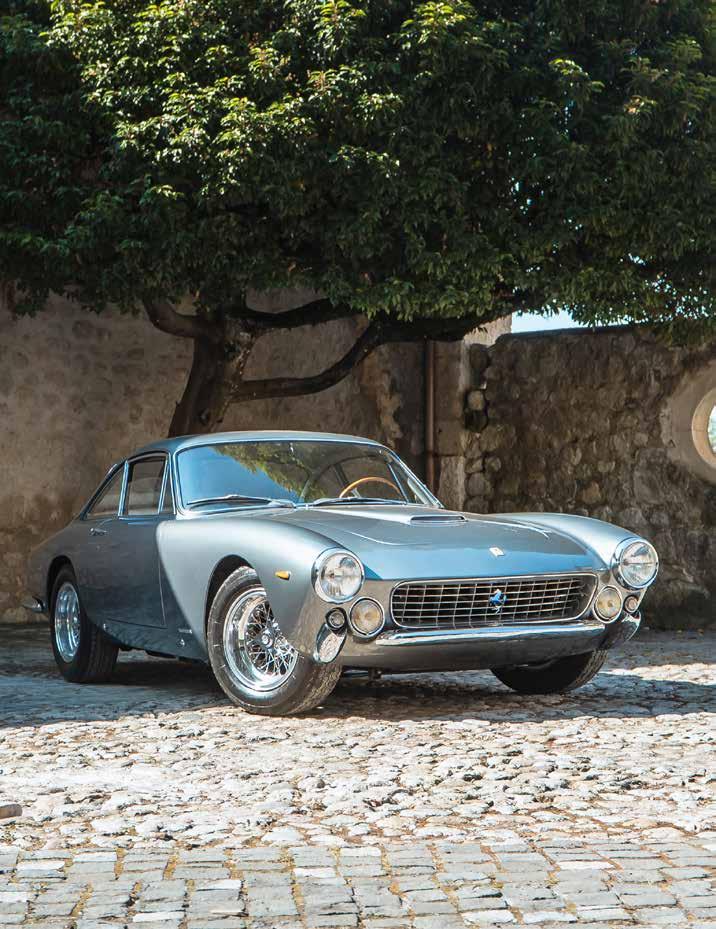
• Iconic model
• Unsurpassed Pininfarina style
• One of 350 made
• Purchased by Bernard Fornas in 2012
• Matching numbers (chassis, engine)
• Engine overhauled by Swiss Ferrari specialist Garage Donati in time for the sale
• Ferrari Classiche Certified

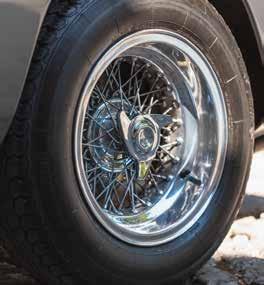
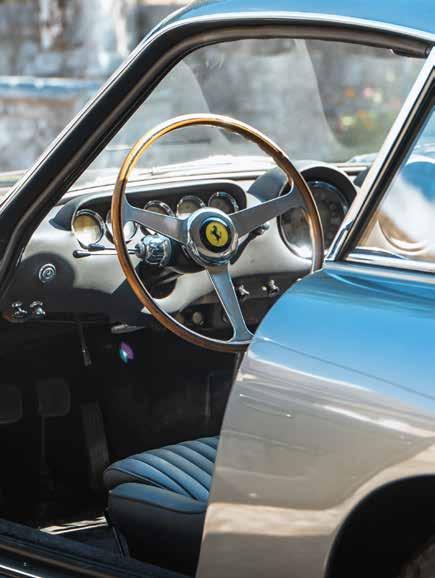
“This new luxury Berlinetta has been developed from the car which allowed so many gentlemen to enjoy sports car performance. It boasts those characteristics valued by enthusiasts while also possessing the comfort required by the ladies.” – Ferrari’s brochure for the 250 GT Lusso.
Arguably the most beautiful product ever to carry the Maranello marque’s prancing horse emblem, the 250 GT Lusso debuted at the Paris Salon in October 1962. Styled by Pininfarina and built by Scaglietti, the Lusso (Luxury) combined racetrack looks with new standards of passenger comfort. Beautifully proportioned, it blended a low-slung nose, reminiscent of that of the SWB Berlinetta, with a sculpted Kamm tail by means of some of the most exquisite lines yet seen on an automobile. Slim pillars and wide expanses of glass not only enhanced the car's outward appearance but made for excellent visibility and a pleasantly light and airy interior. “The design of the body was at once elegant and exciting and no other road Ferrari before or since has earned the same degree of enduring admiration for its aesthetics,” declared Road & Track.
After Pininfarina had completed the prototype Lusso, production was entrusted to Carrozzeria Scaglietti, at that time a smaller concern that specialised in building low-volume models for Ferrari. In total, 350 (including one prototype each from Pininfarina and Scaglietti) would be completed over the next two years, with deliveries of the production model commencing early in 1963. “Its proportions approach perfection, and the execution is faultless,” enthused Car & Driver. “It makes for Grand Touring in the grandest possible manner…”

The Lusso’s immediate antecedent had been the 250 GT Berlinetta SWB. Introduced at the 1959 Paris Salon, the latter was a true dual-purpose car, arguably more capable than any Ferrari before or since of coping equally well with the conflicting demands of racetrack and highway. The ‘SWB’ (Short Wheel Base) designation arose from a chassis that, at 2,400mm, was 200mm shorter than that of the standard 250 GT. Specifications could be varied to suit individual customers’ requirements for either road or track, models supplied for competition use having lightweight aluminium-alloy bodies while the Lusso road version came with a fullytrimmed interior and softer springing.
However, Ferrari’s policy of building a single, dual-purpose race/road model did not survive long into the 1960s, the diverging requirements of the two markets necessitating greater specialisation in the form of the competition-only 250 GTO and the touring 250 GT Lusso. Built on a short-wheelbase chassis similar to that of the 250 GT SWB and 250 GTO, the Lusso was powered by Gioacchino Colombo’s light and compact 3.0-litre V12. Ferrari’s first in-house power plant, the supremely versatile Colombo V12 had debuted in 1947 as a 1.5-litre unit and would enjoy a remarkably long production life, finally bowing out in 4.9-litre quad-cam form in 1988. Breathing through three twin-choke Weber carburettors, this all-aluminium, two-cam, Tipo 168 unit produced 240bhp at 7,500rpm as installed in the Lusso, giving it a top speed of 150mph (240km/h) and a useful 0-100mph (0-160km/h) acceleration time of 19.5 seconds.
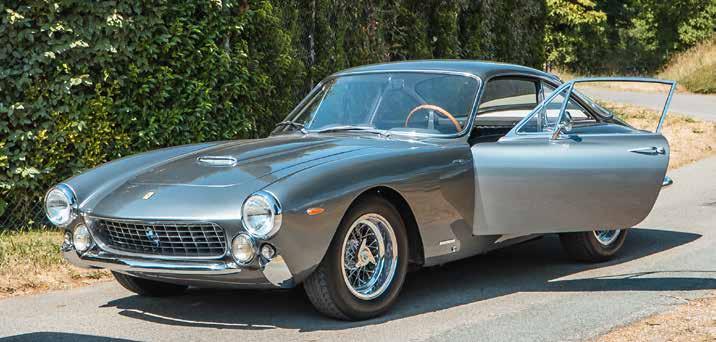
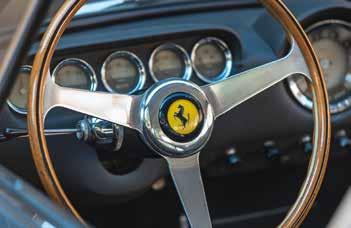
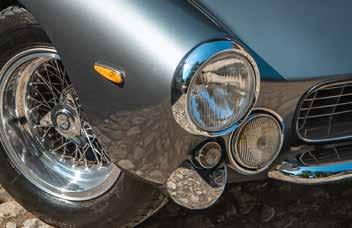
Power was transmitted to the road via a conventional four-speed gearbox, and the power train was housed in Ferrari’s familiar steel spaceframe chassis with oval main tubes. Suspension was conventional for the time: independent at the front by means of ‘A’ arms and coil springs, with a semi-elliptically sprung live axle at the rear.
The result was not only one of the best looking Ferraris ever made but also, courtesy of its competizione antecedents, one of the most rewarding to drive. “Driving a Ferrari smoothly is always easy; the Lusso is no exception,” proclaimed R&T. “The gearshift moves like the proverbial stick in a bowl of whipped cream, and the smooth clutch combines with the 12-cylinder engine’s buttery delivery of torque to make it nearly impossible… to stall the engine when moving off from rest.” R&T found that the Lusso’s steering was lighter than one would expect and remarked on its smooth, predictable, and forgiving handling. They were also much impressed by the powerful servo-assisted four-wheel disc brakes.
An important milestone in the Maranello marque’s history, the 250 GT Lusso was the last of the long-running 250 series that had done so much to cement Ferrari’s commercial success, and a most fitting finale to this remarkable family of Ferrari road cars.

Delivered new to Luigi Chinetti Motors in New York, USA finished in Grigio Argento with Nero Connolly interior, chassis number '4339' was bought by Mr Fornas through Geneva based dealer Carugati in November 2012 (the car is still Swiss registered). It has since been maintained by the Swiss Ferrari specialist, Garage Donati, located in Corseaux near Vevey. In 2009 the engine had been overhauled, while the interior was re-trimmed in September 2011 by Lauvray Creation in Monaco. The bodywork was restored in 2015 in Italy by MC Carrozzeria. In December 2024 this car was awarded Ferrari Classiche Certification after spending nearly two years in Modena. The chassis and engine match, but it is believed that the gearbox and/or rear axle are non-original. At present the engine is being overhauled by Donati and will be fresh for the sale. The car is offered with a file of invoices and other historical paperwork, including details of its original specification and early ownership in the USA (inspection recommended).
A rare opportunity to acquire a model - seldom offered for sale - that is not only one of the most beautiful and exclusive Ferraris ever made, but also one of the most enjoyable to drive and own: the 250 GT Lusso.
€1,250,000 - 1,500,000
For more information on the Symbol next to the Lot Number, please refer to the Lot Symbols Key at the front of the Catalogue.
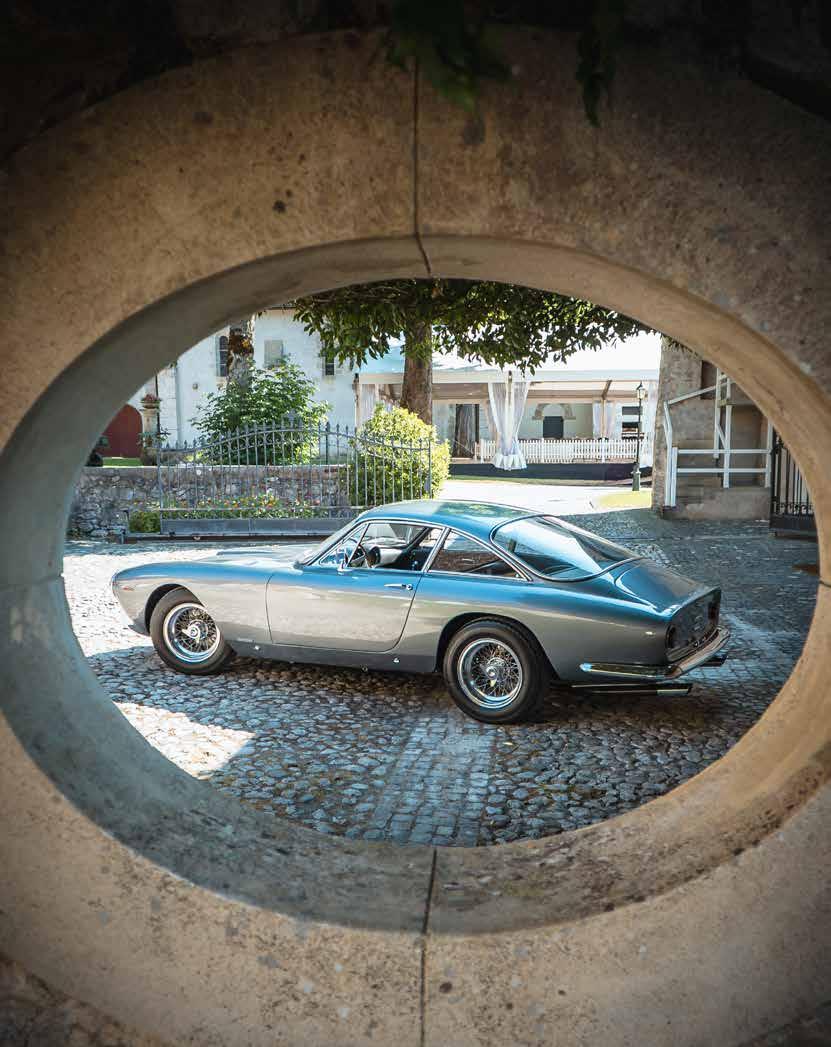
145 P
Chassis no. DB5/C/1510/L Engine no. 400/1531
• One of only 38 left-hand drive DB5 convertibles
• Delivered new to the USA
• Professionally restored in Italy circa 2009
• Purchased by Bernard Fornas in 2012
• Engine completely rebuilt and enlarged to 4.2 litres in 2019
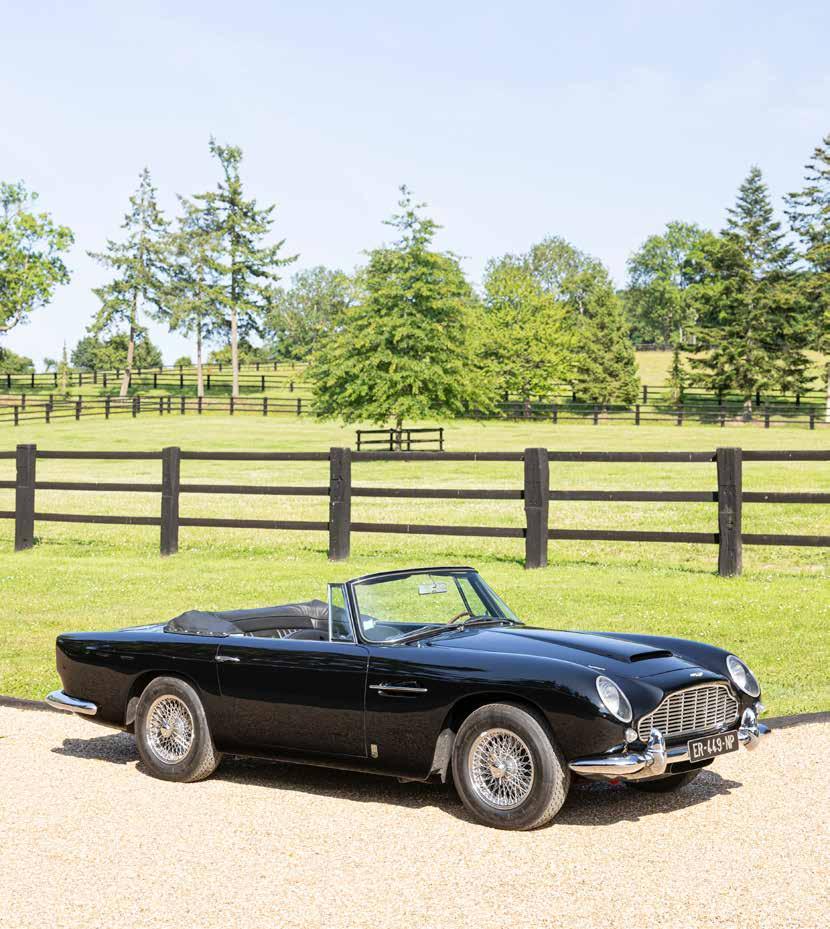



'More and more cars today reach the magical "ton" but those which can do it with the same ease and rapidity of the Aston can be counted on the fingers of one hand. High-speed stability and safety is not cheap to engineer, and with few people to pay the price, production costs are never reduced by the quantity of the work. The DB5 therefore fills a unique corner of the market, a corner at the top end both in the way it performs and the price one pays for the privilege.' – Autocar, 18th September 1964.
Introduced in 1963, the DB5 was a development of the preceding DB4 that had represented such a giant step forward in Aston Martin's postwar evolution on its arrival in 1958. Classically proportioned, the Touringdesigned body established an instantly recognisable look that would stand the marque in good stead until 1970. The DB4's engine was still an all-alloy twin-overhead-camshaft 'six' but the old W O Bentley/Willie Watson-designed 3.0-litre unit had been superseded by a new design by Tadek Marek, newly arrived from Austin. Proven in racing before it entered production in the DB4, the new 3,670cc engine featured 'square' bore and stroke dimensions of 92x92mm and developed its maximum power of 240bhp at 5,500rpm.

The David Brown gearbox was a new four-speed all-synchromesh unit. Top speed was claimed to be 141mph; 0-60mph could be covered in 8.5 seconds and, thanks to its four-wheel disc brakes, the DB4 was quicker from 100mph and back to rest than any other production car in the world.
Touring's Superleggera body construction, which employed a lightweight tubular structure to support the aluminium-alloy body panels, was deemed incompatible with the DB2/4-type multi-tubular spaceframe, so engineer Harold Beach drew up an immensely-strong platformtype chassis. Independent front suspension was retained, the DB2/4's trailing links giving way to unequal-length wishbones, while at the rear the DB4 sported a live axle located by a Watts linkage instead of its predecessor's Panhard rod. Five series were built as the model gradually metamorphosed into the DB5. The latter's distinctive cowled headlamps had first appeared on the DB4GT and the newcomer was the same size as the lengthened Series V DB4.

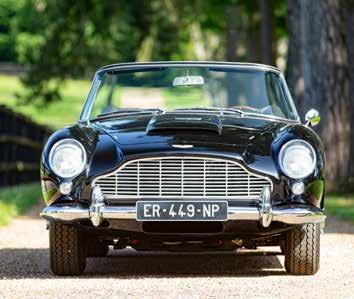
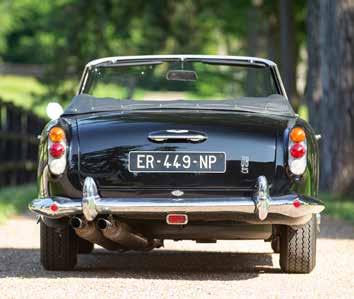

The DB5's 3,995cc engine, first seen in the Lagonda Rapide, produced 282bhp. As Autocar observed in its edition of 21st May 1965: "Racing has played a major part in the development of all Aston Martin engines since Frank Halford designed the original 1.5-litre unit for Bamford & Martin. The 3,995cc 6-cylinder light alloy engine fitted to the DB5 is in all major respects the same as that which powered the 4-litre prototype which ran in the 1962 and 1963 Le Mans 24-Hour races." The newly enlarged engine was mated to a four-speed, overdrive-equipped gearbox, a 'proper' ZF five-speed unit being standardised later. Other improvements made to the DB5 included alternator electrics, Girling disc brakes instead of Dunlops, Sundym glass, electric windows, and an oil pressure gauge as standard equipment.
Like its many predecessors, the DB5 was also offered in convertible form (the 'Volante' name would not be applied to the soft-top Aston until the DB6's arrival) while independent coachbuilder Harold Radford offered a shooting brake conversion. 1,021 DB5s were manufactured between July 1963 and September 1965, a total that included a mere 123 convertibles and 12 shooting brakes.
This rare DB5 convertible was bought by Mr Fornas in November 2012 from Belgian dealer Michel Kruch Sprl having previously been in the ownership of a Belgian national, Mr Hubert Bonnet.

This car had been delivered new in the USA to one Charles E O'Hara, at which time it was finished in Platinum with Red interior. Many years later the Aston was discovered as a complete 'barn find' in the USA. It was bodily restored in Italy (allegedly by Bacchelli & Villa, a company known for their perfect Ferrari restorations). Unfortunately, there is only photographic evidence of the restoration, which was carried out circa 2009. The car was restored in striking 'triple black'.
Since the Aston's acquisition by Bernard Fornas, the engine has been completely overhauled (2019) with new liners and pistons, enlarging the capacity to 4.2 litres. The parts were bought through marque specialist Cecil Cars and the engine was dismantled and reassembled by Mr Fornas' own mechanic. In June 2017, this car was part of a feature article in the French magazine, British Motors (copy of the magazine in the file).
One of the rarest of post-war Aston Matins with 123 built, and only 38 in left-hand drive, the DB5 convertible is only rarely offered for public sale, making this a not-to-be-missed opportunity for the discerning collector.
€1,150,000 - 1,400,000
For more information on the Symbol next to the Lot Number, please refer to the Lot Symbols Key at the front of the Catalogue.

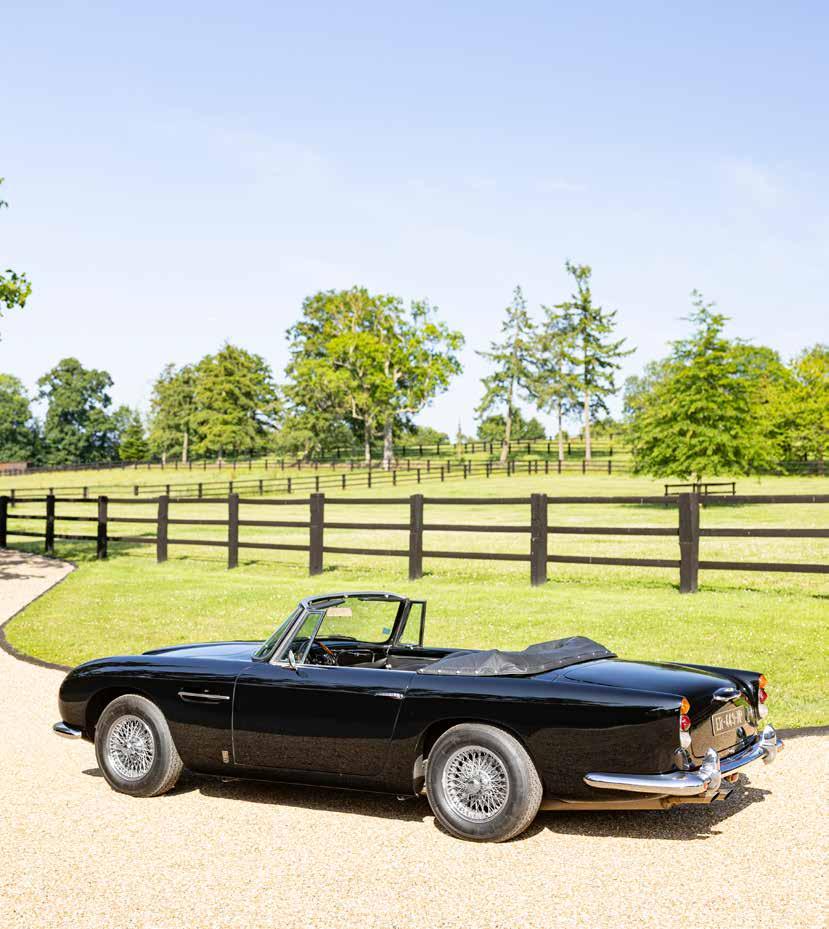

Chassis no. DB5/1429/R
Engine no. 40/1405
"Racing has played a major part in the development of all Aston Martin engines since Frank Halford designed the original 1.5-litre unit for Bamford & Martin. The 3,995cc 6-cylinder light alloy engine fitted to the DB5 is in all major respects the same as that which powered the 4-litre prototype which ran in the 1962 and 1963 Le Mans 24-Hour races." – Autocar, 21st May 1965.
Aston Martin's post-war evolution had taken a giant step forward in 1958 with the launch of the DB4. Classically proportioned, the Touringdesigned body established an instantly recognisable look that would stand the marque in good stead until 1970 and is still being referenced in today's Aston Martins. At its launch in October 1958, the DB4 marked a major turning point for Aston Martin as it was the first car of the David Brown era which neither used a chassis derived from the experimental Atom of 1939 nor an engine co-designed by W O Bentley. Moreover, it was the first Aston Martin to carry Carrozzeria Touring's 'Superleggera' bodywork, in which light alloy panels were fixed to a supporting framework of small diameter steel tubes.
Although styled by Touring, the DB4's gorgeous fastback coachwork was built under license at Newport Pagnell by Aston Martin, which employed some of the finest panel beaters in the industry. The result was a car whose sleek lines were described as "unmistakably Italian and yet... equally unmistakably Aston Martin". When the DB4 was introduced, it was Britain's most powerful and fastest production car, and its aerodynamically styled, all-aluminium, Superleggera coachwork looked sensational, establishing a look that would endure for the next dozen years.
• Matching numbers (Engine and Gearbox)
• Converted from right- to left-hand drive in period
• Comprehensively restored by Noble House in 2015
• Beautiful condition
• The most famous of all 'James Bond' Aston Martins
• Comes with Belgium registration documents
Touring's Superleggera body construction had been deemed incompatible with the DB2/4-type multi-tubular spaceframe, so engineer Harold Beach drew up an immensely strong platform type chassis for the DB4. The DB2/4's trailing-link independent front suspension gave way to unequal-length wishbones while at the rear the DB4 sported a live axle located by a Watts linkage instead of its predecessor's Panhard rod.
The Aston Martin DB4 was also the first of the DB models to employ the entirely new engine designed by Tadek Marek, which had first been seen at Le Mans the previous year in the DBR2. A Polish engineer who had joined the company in 1954, Marek had previously enjoyed a racing career and posts with General Motors and FIAT in Poland. He designed tanks during WW2 and had arrived at Newport Pagnell from Austin. An all-alloy, twin-overhead-camshaft six like its predecessor, Marek's new 3,670cc engine featured 'square' bore and stroke dimensions of 92mm and developed its maximum power of 240bhp at 5,500rpm. The David Brown gearbox was a new four-speed all-synchromesh unit.
Five (unofficially designated) series were built as the model gradually metamorphosed into the DB5. Introduced in July 1963, the Aston Martin DB5 boasted a 4.0-litre engine, this enlarged unit having been seen first in the Lagonda Rapide of 1961. Equipped with three SU carburettors, the '400' engine produced 282bhp at 5,500rpm and was mated to a four-speed/overdrive gearbox, a 'proper' ZF five-speed unit being standardised later.
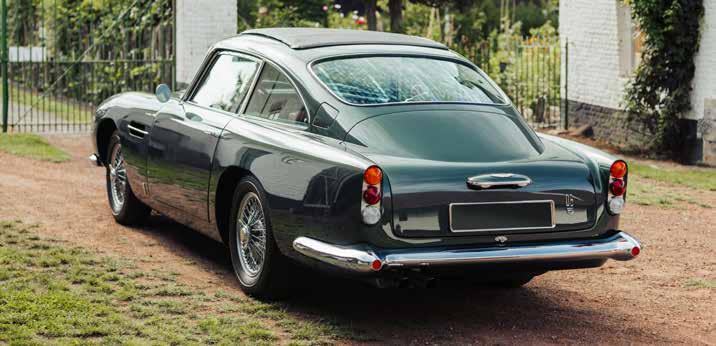
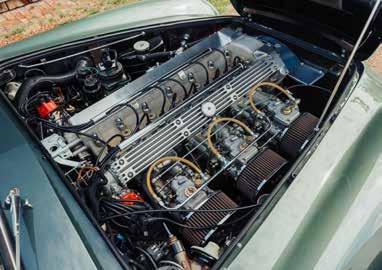
The DB5's distinctive cowled headlamps had first appeared on the DB4GT and the newcomer was the same size as the lengthened, 'Series V' DB4. Outwardly there was little to distinguish the DB5 from the last of the DB4s apart from twin fuel filler caps, though these had already appeared on some cars. Beneath the skin, however, there were numerous improvements including alternator electrics; Girling disc brakes instead of Dunlops; Sundym glass; electric windows; and an oil pressure gauge as standard equipment.
From September 1964 the 314bhp, triple-Weber Vantage engine became available and was fitted to a total of 95 cars. The DB5 was also offered in convertible form (the 'Volante' name would not be applied to the soft-top Aston until the DB6's arrival), while independent coachbuilder Harold Radford offered a shooting brake conversion. 1,021 DB5s were manufactured between July 1963 and September 1965, a total that included 123 convertibles and 12 shooting brakes.
The DB5 was the first and remains the most famous of all the 'James Bond' Aston Martins, having appeared in no fewer than five movies of the series beginning with Goldfinger in 1964. Equipped with rocket launchers and sundry other gadgets, 007's DB5 was finished in Silver Birch with red interior, in which specification it was later issued by Corgi Toys.

Originally a right-hand drive model, this beautiful Aston Martin DB5 was converted to left-hand drive in period. The car comes with a copy of its guarantee form, which shows that it retains matching chassis and engine numbers; the original finish is recorded as Goodwood Green, and the car left the Newport Pagnell factory equipped with a Motorola radio, power operated aerial, and two Marchal fog lamps. It is noted that the clutch was changed from Borg & Beck to Laycock. The Webasto sunroof is another in-period fitting, and the car retains the aforementioned Motorola radio. The DB5 was retailed via Brooklands of Bond Street in February 1964 and first owned by James Lilley Esq; its original UK registration was 'L 38'. Information concerning the late Mr Lilley and his family may be found within the accompanying history file.
In 2015 the DB5 was comprehensively restored by the highly respected Dutch Aston Martin Heritage Specialist, Noble House and comes with the related bills. It should be noted that there are now two spark plugs per cylinder and that the engine runs of '123 electronic' ignition and Weber Carburettors. Finished in Goodwood Green with tan interior, this stunning DB5 is described as in very good condition. Highly eligible to any number of prestigious Historic motoring events, it comes complete with its original spare wheel, instruction book, jack and tools.
€500,000 - 550,000
Italics CAR TITLE
Coachwork by ....
Chassis no. XXX
Chassis no. LML/50/366
Engine no. XXX
Engine no. VB6B/50/1193
• Bullet points
• Bullet points
• One of only 98 DB2 drophead coupés (75 LHD)
• Bullet points
• Matching numbers chassis and engine
• Bullet points
• Restored to original factory colour scheme
• Delivered new to the USA
• Bullet points
• Restored in Switzerland in the 2000s for noted collector Jean-Pierre Slavic
• Present private ownership since 2011


Aston Martin owner David Brown's 1947 acquisition of Lagonda made the latter's Willie Watson-designed, twin-overhead-camshaft, 2.6-litre six available for a new sports car: the DB2. (This power unit is commonly referred to as 'the Bentley engine', W O Bentley having been Lagonda's Chief Engineer at the time.) Announced in April 1950, with production commencing the following month, the DB2 owed much to the Claude Hill-designed DB1, using a shortened and modified version of the latter's chassis and identical suspension. Italian-inspired, the timelessly elegant GT bodywork was the creation of Frank Feeley, and with more power (105bhp at 5,000rpm) and less weight, the sleek DB2 comfortably out-performed its predecessor.
Writing in 1952, Autosport's John Bolster enthused: "The DB2 is a very fast sports car of immense stamina, as a long list of racing successes has proved. (The) model is remarkable for its comfort and luxury, and is also about the easiest thing there is to drive, outside of the 'automatic transmission' carriages." Bolster enjoyed the DB2's outstanding performance, particularly that of the 200km/h Vantage version, and remarked on the car's inherent safety and versatility: "Whether one would go shopping, to the theatre, on a long-distance tour, or even race at Le Mans, one could have no more perfect companion than the Aston Martin."
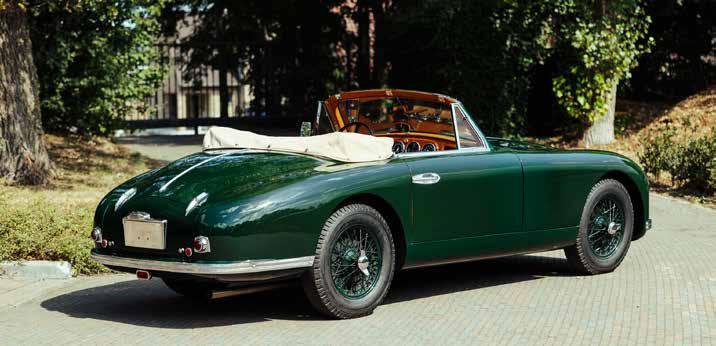
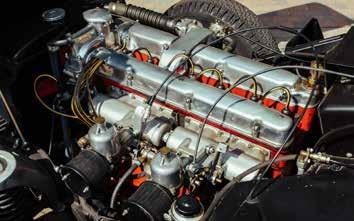
The body of the DB2 afforded its two occupants a generous amount of interior space and the considerable convenience, from the maintenance and accessibility point of view, of a forward-hinging entire front section. DB2 bodies were coach built in the traditional manner, a situation that resulted in numerous differences between individual examples, most obviously in the treatment of the front grille. A drophead coupé version was announced towards the end of 1950. When production ceased in April 1953, a total of 411 DB2s had been made: 98 of them dropheads, of which 75 were of left-hand drive configuration.
This DB2 drophead's guarantee form (copy on file) shows that it was built with the more powerful (125bhp) VB6B 'Vantage' engine and left the factory in left-hand drive configuration bound for Aston Martin importer J S Inskip in the USA. The car left the factory finished in Deep Carriage Green with beige interior trim. A rear seat, Purolator filter, manual choke and ignition, and a windshield vent frame are among the items of non-standard equipment listed. The Aston's first owner is recorded as Mr Marvin Weimann of Woodmere, Long Island.
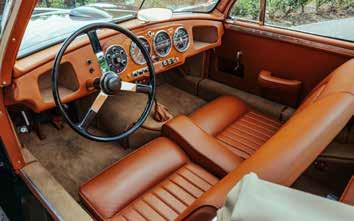
In 2006 the preceding owner Jean-Pierre Slavic, a noted Geneva based collector purchased it at an auction in Massachusetts. He then imported the Aston to Switzerland where it was restored, the works included an engine rebuild and repainting and re-trimming in the original colours. The following caretaker of this vehicle purchased the car at a UK auction in December 2011.
Invoices on file for maintenance (six in total) dating from December 2007 to October 2009 total CHF 20,341 and with the him from February 2012 to September 2020 total €23,213. The car also comes with a BMIHT Certificate, an original DB2 sales brochure, copy of the Aston Martin build sheet extract from the records, Belgian Carte Grise, Belgian Contrôle Technique (valid until 25.03.2025), and the aforementioned copy guarantee form. The current vendor bought the car from Bonhams' 2022 Zoute Sale. He has, since then meticulously stored the car and driven it sporadically. The car has been recently serviced and makes a wonderful opportunity to own and enjoy one of these very desirable and quintessentially British sports cars in its rare open-top form and in Vantage configuration.
€300,000 - 350,000 No Reserve
Coachwork by Mulliners of Birmingham
Chassis no. LML/588
Engine no. VB6J 463 (see text)
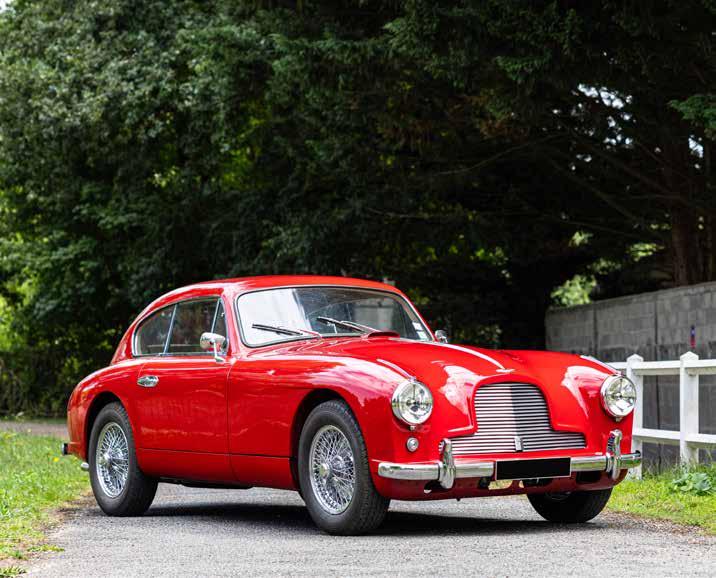

• One of 565 made
• Delivered new to France
• Fitted with a DB2/4 3.0-litre engine
• Current ownership since 1985
• Valid Contrôle Technique
With the introduction of the '2+2' DB2/4 in autumn 1953, Aston Martin extended the DB2's appeal to the hitherto untapped yet increasingly important market comprised of 'sports car enthusiasts with a family'. By modifying the rear of the chassis, reducing the fuel tank capacity from 19 to 17 gallons and moving the spare wheel under the tank, Aston's engineers liberated sufficient space within the existing design for two child-sized occasional rear seats. Alternatively, the rear seat backs could be folded down, thus creating a load-carrying platform that more than doubled the luggage space. The latter could be accessed via the 2/4's opening rear door, a pioneering example of the now commonplace 'hatchback' concept.
In addition, a raised roofline, one-piece windscreen, larger bumpers, slightly raised headlights, modified dashboard gauge layout and other detail styling changes differentiated the newcomer from its predecessor. Otherwise, the DB2/4 remained much the same as the DB2, employing the latter's rectangular-tube chassis, trailing arm independent front suspension and well-located live rear axle. Bodies were supplied by Mulliners of Birmingham until the advent of the Mark II version in October 1955 when Tickford - recently acquired by Aston Martin's owner, David Brown - took over.

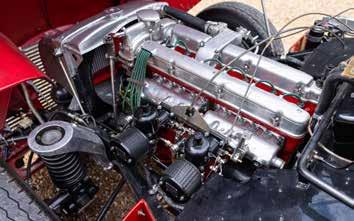
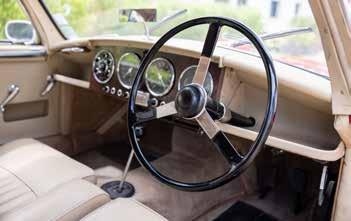
Designed at Lagonda by Willy Watson, under the supervision of the great W. O. Bentley, the 2.6-litre, six-cylinder, twin-cam power unit came in tuned (125bhp) Vantage specification as standard for the 2/4. Despite this, the re-design's inevitable weight gain was not fully compensated for until the arrival of the 3.0-litre, 140bhp engine in 1954. The DB2/4's top speed was now 118mph with 60mph reachable in around 11 seconds, making it one of the fastest British-built cars of the day. In total, 565 of all types had been produced by the time the Mark II version arrived in October 1955.
Chassis number 'LML588' was sold new via Aston Martin's Paris agents, Majestic Motors, and delivered on 17th December 1953 to its first owner, a Mr. de Dampoerre of 5 rue Lauriston, Paris. Its accompanying copy order form shows that the car (originally left-hand drive then converted to right-hand drive) was bodied as a saloon by Mulliners of Birmingham and left the Newport Pagnell factory finished in black with blue interior trim. In accordance with its year of manufacture and the aforementioned order form, this car was originally delivered with a 2.6-litre engine (number 'VB6E/50/1324'). During the restoration of the car, the 2.6 litre engine has been replaced with a 3-litre DB2/4 engine ('VB6J 463'), comprehensively restored by the current owner.
Owned by our vendor since 1985, the Aston has been restored and regularly maintained by his team of mechanics, just like all the other cars in his collection. Recent works undertaken include restoration of the front suspension, rear axle, and brakes. The repaint in red was undertaken by the current owner, and the upholstery has been re-trimmed in Ivory leather. The odometer now shows a total of 2,876 kilometres, which leads us to believe that the odometer was reset during the engine restoration. On a recent test drive the engine started straight away and was smooth, as was the gearbox, with all gears shifting well, while the brakes also worked properly.
Accompanying documentation includes a French Carte Grise, valid Contrôle Technique, and a record of historical works carried out, and the car also comes with a complete tool kit.
€90,000 - 110,000
No Reserve
149
Number 113 of 278 built 1993 ALFA ROMEO
Chassis no. ZAR16200003002128
Body no. 148
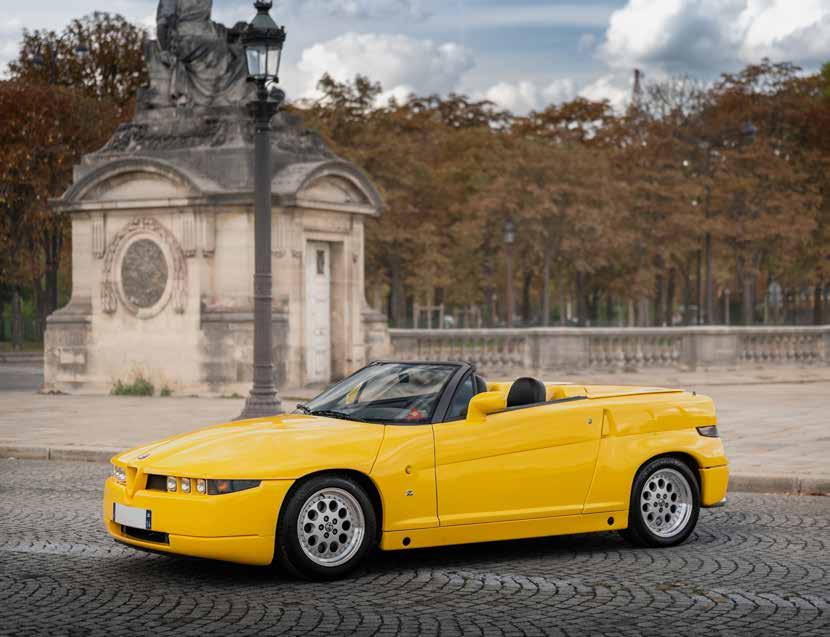
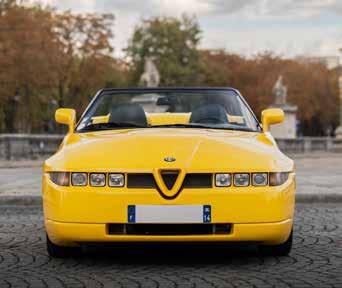
• Delivered new in Italy
• Known and documented history
• Complete with documentation and tools
• Painted in desirable Giallo Ginestra
• Less than 38,500 km recorded
Reviving its tradition of building special-bodied Alfa Romeos, including the original SZ (Sprint Zagato) competition coupé of the late 1950s, Carrozzeria Zagato unveiled its outrageous new SZ at the 1989 Geneva Salon. Built at Zagato's factory at Terrazano di Rho, the SZ was a joint project that also involved the styling departments of both Alfa Romeo and its parent company, FIAT, whose Robert Opron was responsible for the initial sketches.
Originally typed 'ES 30' (Experimental Sports 3.0-litre) but known popularly as 'Il Mostro' (The Monster) the aggressive-looking two-seater coupé eschewed the rounded styling and aluminium-alloy coachwork hitherto associated with Zagato's high-performance Alfas in favour of an angular bodyshell crafted in lightweight moulded plastic - alloy roof excepted - by Carplast, which was bonded to the floor pan of the existing Alfa 75. Lessons learned from the latter's IMSA racing programme influenced the SZ's suspension, which endowed the car with superlative handling and roadholding, some drivers recording lateral cornering forces of up to 1.4G during testing. Suspension development was overseen by engineer Giorgio Pianta, formerly team manager of the FIAT and Lancia works rallying teams. There was power assisted steering but no ABS.


Powering the SZ to its highly respectable 244km/h (152mph) top speed was a 210bhp version of Alfa's superb 3.0-litre four-cam V6, widely recognised as one of the finest power plants of recent times. This excellent performance was achieved thanks partly to the body's exceptionally low drag coefficient of 0.30 Cd, the product of many hours spent in FIAT's wind tunnel.
Demand for the 1,000-or-so SZs scheduled for series production greatly exceeded supply, and today this rare and highly individual supercar is much sought after. There was also an even rarer open spyder version: the RZ, of which only 278 examples were produced.
Bearing number 113, this Alfa Romeo RZ Giallo Ginestra left the factory on 20 April 1993 and was sold on 4 July 1994 in Rome. On 10 May 1995, as confirmed by its original warranty booklet, it was delivered by Alfa Romeo Leverkusen to Mr Ulrich Fischer. The car then had 1,012 km on the odometer. It was eventually registered for the first time on 8th July 1997. Imported to France in 2001, at 14,486 km and registered 15 AJC 59, it was then acquired by Mr Franck Montagnana in Burgundy, under the registration 7131 SM 89. He kept the RZ until 2012, clocking up a little under 10,000 km at its wheel.
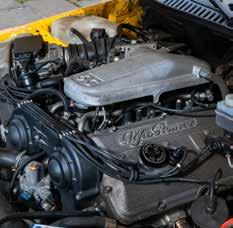
On 23 January 2012, it was the turn of Mr Jean-Louis Receveur to adopt the yellow RZ, still in Burgundy. He kept it for 10 years, until 2022, driving some 5,000 km while ensuring that it was serviced regularly by the Busso specialist, the Garage Busson in Sannois. In 2022, the car came into the possession of a trader from Alsace, who carried out a range of work, in particular on the braking system. In 2024, it was ceded to an insurer from Savoie, who parted with it in favour of the current owner in March 2025. Today registered in France and with a complete file, including its original logbooks, the original sales brochure, the onboard toolkit and the spare key, this RZ will also be offered with its Alfa Romeo car cover. It is also still fitted with its Clarion Alfa Romeo radio-cassette player and a Conrero pedal accessory.
With under 38,500 km recorded, this is a rare opportunity to acquire a true coachbuilder's car, typical of the 1990s, which did not go unnoticed during our photoshoot amidst the traffic of central Paris.
€80,000 - 120,000 No Reserve
Long-term ownership for more than 20 years 1991 FERRARI F40 COUPÉ
Chassis no. ZFFGJ34B000090667
Engine no. 28385
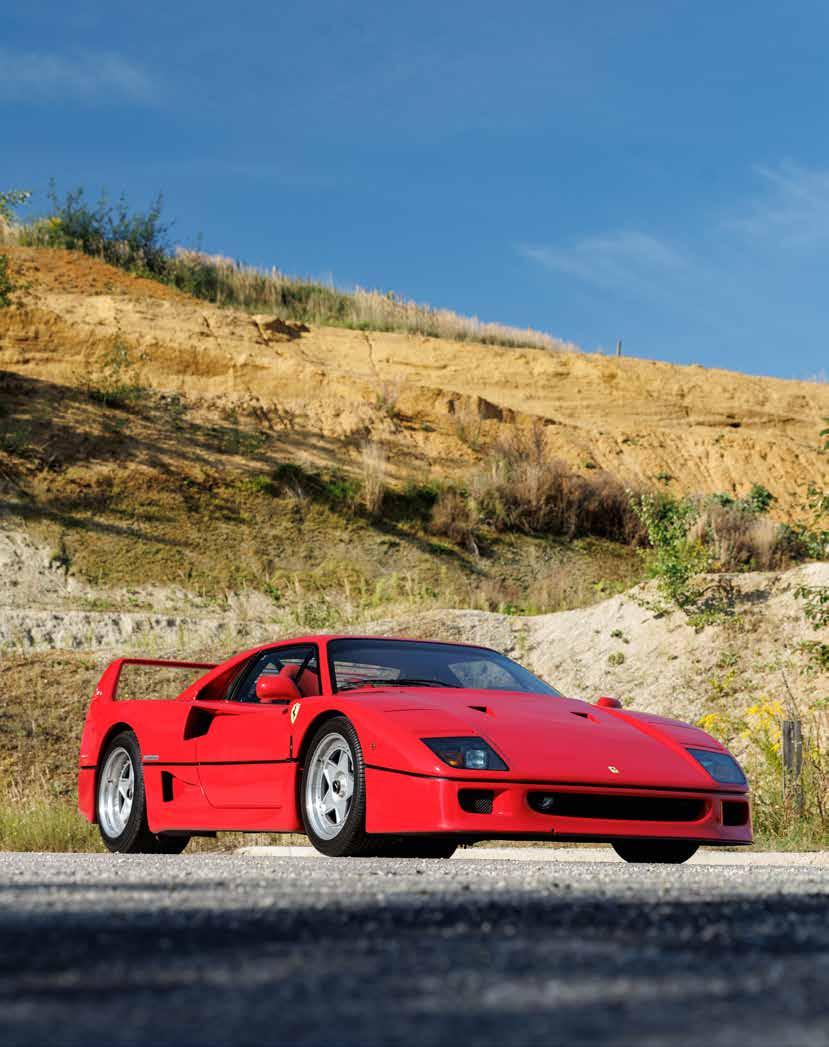
• One of the most uncompromising sports cars ever built
• Delivered new via Crepaldi/Milan
• Full service history
• Ferrari Classiche certification granted
• Original service book, manuals and leather wallet
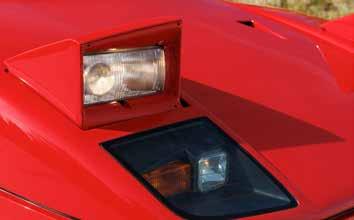
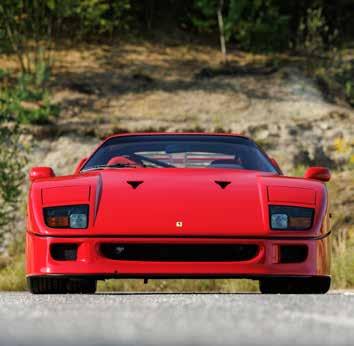
Introduced in 1988 to celebrate Enzo Ferrari's 40 years as a motor manufacturer, the legendary F40 was the ultimate supercar and is historically significant as the last model conceived and introduced before Il Commendatore's death. A mid-engined, two-seater berlinetta, the F40 was a development of the 288 GTO Evoluzione, and like the latter - but unlike the preceding 308 series - mounted its power unit longitudinally rather than transversely. The Evoluzione version of the 288 GTO had been intended for Group B racing, only to be rendered obsolete when the formula was cancelled. Nevertheless, it did bequeath its tubular steel space-frame chassis to the F40, suitably strengthened with bonded-in composite elements.
The F40's power unit too, was a development of the 288 GTO's: slightly enlarged from 2,855cc to 2,936cc and incorporating up-rated internals and a state-of-the-art Weber/Marelli engine management system. A four-cam 3-litre V8 with four valves per cylinder, the F40 engine employed twin IHI turbochargers to liberate 478bhp (approximately 352kW) at 7,000rpm. For the seriously speedaddicted, this could be boosted by 200bhp by means of a factory tuning kit. Power reached the ground via a five-speed transaxle.
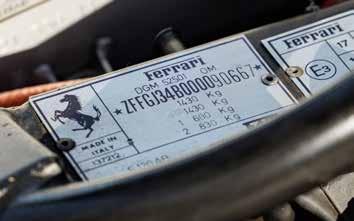
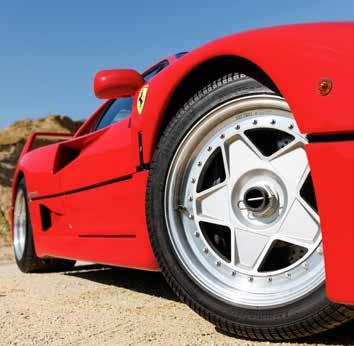
Of equal, if not greater, technical interest than this stupendous engine was the method of body/chassis construction, the F40 drawing on Ferrari's Formula 1 experience in its use of composite technology. Thus the chassis had a bonded-in mix of Kevlar, carbon fibre and glassfibre panels. A one-piece plastic moulding, the body was bonded to the tubular steel chassis to create a lightweight structure of immense rigidity. The doors, bonnet, boot lid and other removable panels were carbon fibre. Compared with rest of the car, the F40's suspension was entirely conventional, consisting of unequal-length wishbones and coil spring dampers all round, with anti-roll bars at both ends.
Pugnaciously styled by Pininfarina's Leonardo Fioravanti, the man responsible for the 365 GTB/4 'Daytona', the F40 incorporated the latest aerodynamic aids in the form of a dam-shaped nose and high rear aerofoil. Despite the need to generate considerable downforce - and with a top speed higher than the take-off speed of many light aircraft, the F40 needed all the downforce it could get - the result was a commendably low drag coefficient of just 0.34.

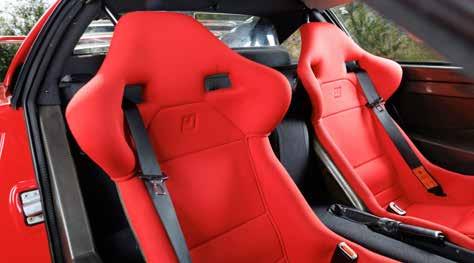
The F40's interior re-enforced its image as a thinly disguised racecar, with body-contoured seats, an absence of carpeting and trim, and sliding Plexiglas windows. Performance was breathtaking, with a 0-200km/h (0-124mph) time of 12 seconds and a top speed of 323km/h (201mph) it comfortably eclipsed both Porsche's 959 and Lamborghini's Countach. And when it came to actual competition, race-prepared F40s more than held their own, and in the Global GT series proved quicker on many circuits than McLaren's F1 GTR.
Initially Ferrari announced that they would build 400 F40s, only to be overwhelmed by the response from would-be purchasers numbered in the thousands. The production run was upped to 950 but Ferrari would end up producing 1,315 examples. Even then demand continued to exceed supply, with speculation the inevitable result.
Autocar found the experience of driving the F40 somewhat overwhelming: "The take-up into the next gear is flawless and, with the turbos cranking hard, the blast of acceleration just goes on again and you seem to be in a blur of time conquering distance, gearshifts and noise. It has the tonal quality of an F1 engine, if not the sheer ferocity. From outside, if you stand and listen, you hear the frantic whoosh as the turbos start to drive oh-so-hard."

Autocar concluded its test thus: "on a smooth road it is a scintillatingly fast car that is docile and charming in its nature; a car that is demanding but not difficult to drive, blessed as it is with massive grip and, even more importantly, superb balance and manners. You can use its performance - the closest any production carmaker has yet come to race car levels - and revel in it. ...there's little doubt it is the very personification of the term sports car."
Even decades later the F40 still had the power to impress. Reacquainting himself with the F40, F50 and Enzo Ferraris for Octane magazine (July 2014 edition) racing driver Mark Hales declared: "The F40 is for me, the special one. Not just because I have spent so much time in them, but because it was such an explosive, otherworldly creation when it first appeared, and it still retains much of that character." Enough said.
A rare variant with catalytic converters and adjustable suspension, chassis number '90667' was delivered new via the famous Milanbased concessionaire Crepaldi Auto to a resident of Jersey in the Channel Islands, and subsequently sold to a resident of Tokyo, who would keep the car for more than 20 years.
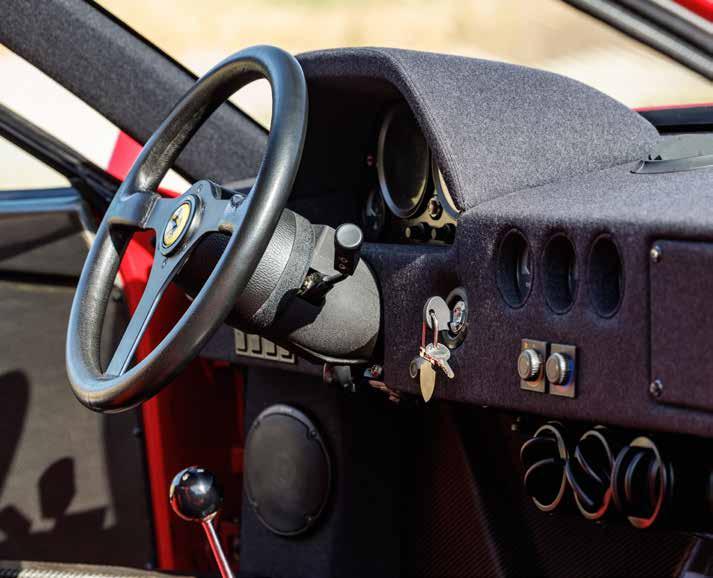
Reading the original service book shows that the car has been looked after very carefully throughout. Recorded services include the following:
29th June 1992, 5,000km service carried out by Crepaldi
14th July 1997 at 10,150km, service at official Ferrari Service Grand Prix Service
11 th April 2001 at 11,995km, service at Auto Becker in Düsseldorf included new timing belts
28th September 2015 at 18,289km, service by Cornes Ltd in Japan
5th July 2018 at 18,369 km, service by Cornes Ltd
The last service was carried out under instructions from our vendor by Ferrari concessionaire Autohaus Blöchl in Osterhofen, Bavaria on 16th October 2024 at 18,867km, and included new timing belts. At time of cataloguing the odometer reading was 18,933km.
Listed below are numerous other invoices from Cornes Ltd in Japan covering the period 11th June 2001 to 30th September 2022. A translation of these invoices (44 pages, perusal recommended) reveals careful servicing and upkeep of the car while in Japan, always with the same owner.
11/06/2001 at 12,035km
04/07/2001 at 12,146km
17/07/2001 (mileage not indicated)
13/07/2002 at 13,150km
30/07/2002 (mileage not indicated)
18/03/2003 at 14,267km
13/11/2003 at 15,615km
24/04/2005 at 16,036km including new timing belts
20/07/2006 at 16,356km
28/08/2006 (no mileage indicated), including new timing belts and front and rear suspension forks
09/04/2007 at 16,484km
13/11/2007 at 17,129km
01/07/2008 at 17,335km
23/06/2009 at 17,449km
28/06/2010 at 17,655 km
09/09/2011 at 17,795km – including new timing belts
24/10/2015 at 18,231km – including new timing belts
16/09/2016 at 18,289km - including new timing belts
11/07/2020 at 18,510 km – including new timing belts
30/12/2020 (no mileage indicated) – fitting of new petrol tanks
15/08/2022 at 18,650km
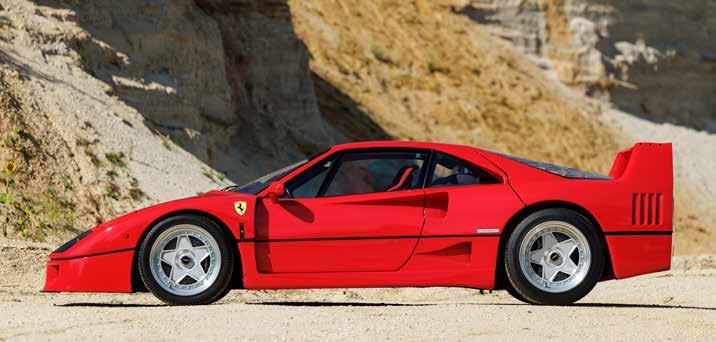

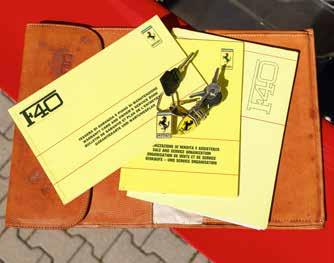

Importantly, the fuel tanks were replaced at the end of 2020 and there are also pictures on file of new suspension parts being fitted in Japan. With such great care lavished upon the car throughout its life, it is no surprise that it presents beautifully today.
The F40 is currently undergoing the all-important Ferrari Classiche Certification – it now appears on the Ferrari system as certified and the famous Red Book will be sent on to the new owner.
This exceptional F40 is offered with its original service book, instruction manual and dealer network booklet in their original leather pouch; copies of the aforementioned invoices; confirmation from Ferrari that the certification and Red Book will be forthcoming; and a copy of the Japanese registration and new German registration documents.
With original Italian delivery, comprehensive service history and fastidious long-term ownership from 2001 to 2022 with invoices to prove and the important Ferrari Classiche certification, what more could one wish for?
€2,600,000 - 2,900,000
For more information on the Symbol next to the Lot Number, please refer to the Lot Symbols Key at the front of the Catalogue.
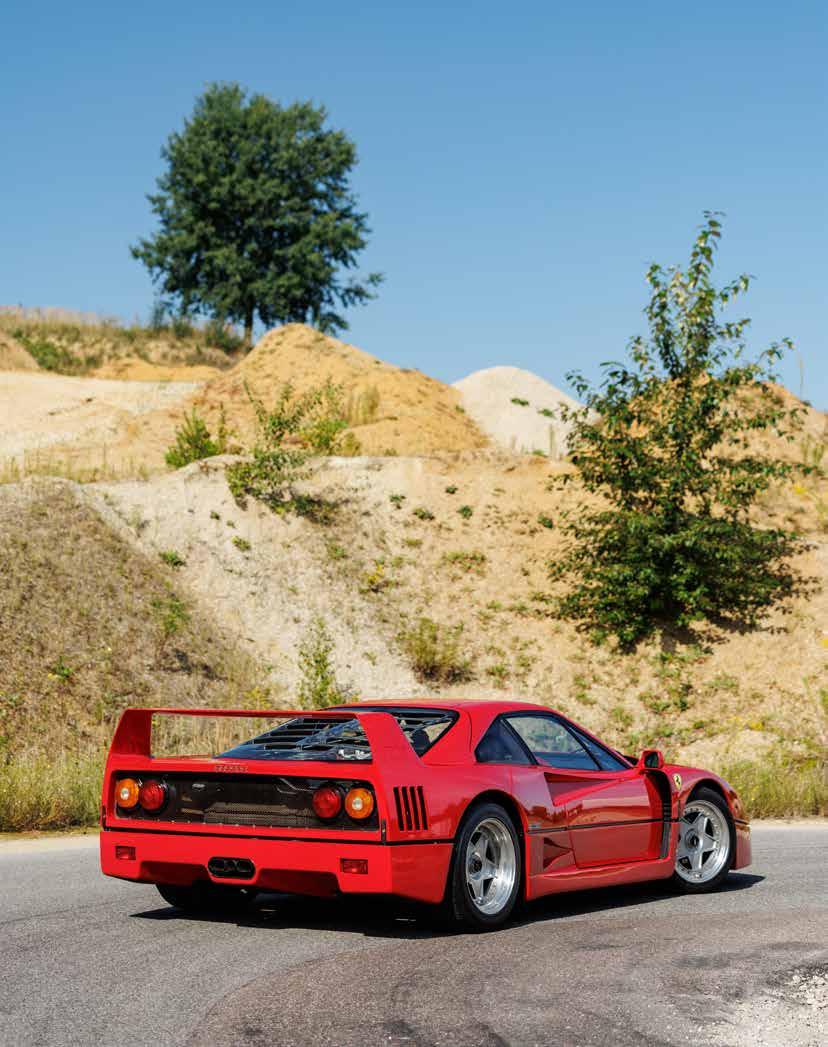
Registration no. BLU 417 (ex-UK registration)
Chassis no. E4/434/S
Engine no. E4/434/S
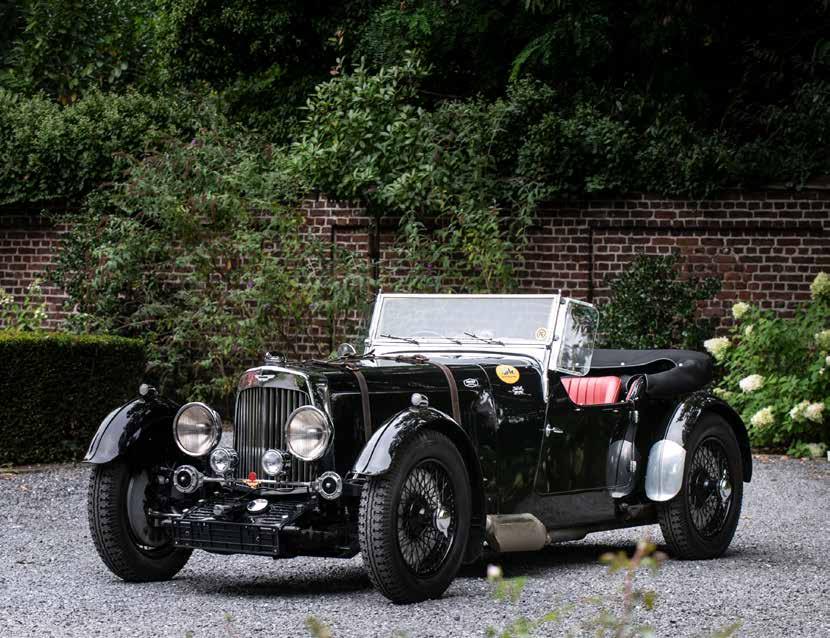

• Ex UK Registration no. 'BLU 417'
• Very desirable short-chassis model
• Matching numbers
• Well known to the AMOC
• Extensive mechanical refurbishment
• Registered in Belgium
Introduced in January 1934 and built until December 1935, the Mark II version of Aston Martin's 1½-Litre model boasted a stronger chassis with relocated Hartford friction dampers for an improved ride, while the engine received a counter-balanced crankshaft. Short- and longwheelbase versions were built.
The lovely example offered here is a highly desirable and very original short-chassis Mark II from 1934. This car is presented in very good condition mechanically, runs smoothly and powerfully, and is said to handle very well. In short: it is a really pleasurable drive for lovers of pre-war cars. Finished in black with red leather interior, this Aston Martin has a charming patina and shows some minor signs of usage; as the French say, the car remains 'dans son jus', showing the kind of ageing that one would expect of a car over 90 years old.
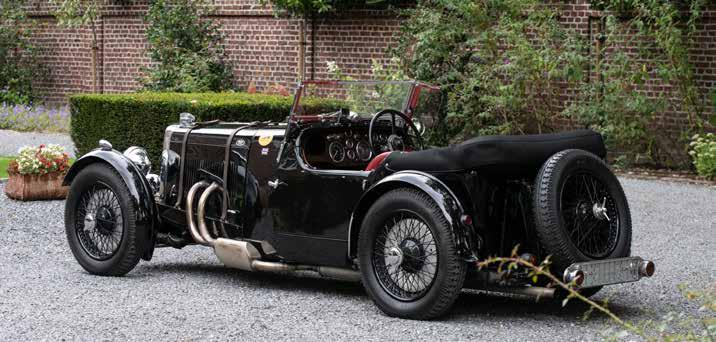
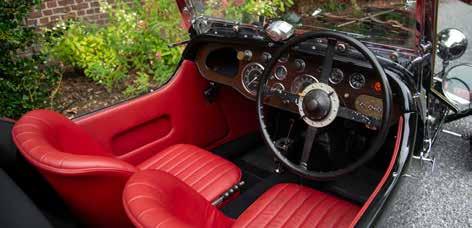
This example remains original and has been very well serviced and maintained throughout. An overhaul was carried out by previous owner. According to accompanying documentation: the engine was rebuilt with a new block, crankshaft, pistons, timing gear, camshaft and starter gear, while the inlet ports were enlarged from 1⅛" to 1¼". The compression ratio is now 9.0:1 and 2.5 kilograms has been removed from the flywheel (making it very light). In addition, the starter motor and water pump have been overhauled, and the magneto replaced with coil ignition.
A previous owner converted the brakes from cables to hydraulic and changed the position of the pedals to conventional (throttle on the right instead of in the middle). This is a very helpful adaption which makes driving, certainly in daily traffic, so much easier. The car comes equipped with a hood, side screens and tonneau cover, making it well-prepared for touring in any weather conditions.
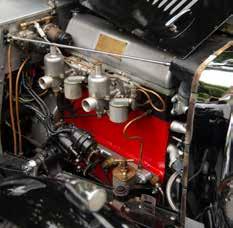
'BLU 417' has a history with the AMOC going back nearly 40 years; the car was exported to Australia in the early 1970s and re-imported into the UK in 2013. For its more than 40 years in Australia it was owned by Mr Bill Ewing, who was an enthusiastic member of the Australian AMOC, participating in VSCCA and AMOC events and winning the AMOC National Meeting Concours in 1976. Very few cars stay with an owner for longer, and so the provenance and continuity of this particular Aston Martin can be accepted with confidence. This car is well known to the Aston Martin Owners Club and the Aston Martin Heritage Trust, and is a correct and very original short-chassis Mark II as confirmed and certified by a letter from the AMOC's Andy Bell.
In 2013 the Aston was sold via renowned marque specialists Ecurie Bertelli to a Belgian car collecting family, passing to the current Belgian owner in 2023. This lovely beauty is registered in Belgium on Belgian numberplates. The old registration book is present, with all previous owners recorded.
Ideal for rallies, tours or any other classic car event, this well documented Aston Martin is looking for further adventures and is certain to delight its fortunate next custodian.
€190,000 - 210,000
Chassis no. WP0ZZZ93ZHS070092
Engine no. 68H01174
Gearbox no. 77H01625
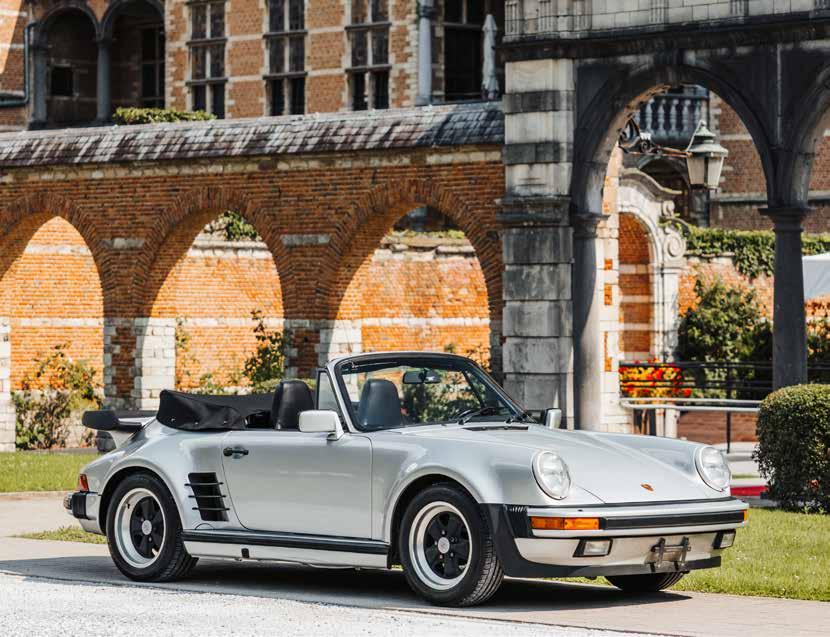
"Apart from being very fast and exciting, the Porsche is a practical car. Unlike most rivals which can be regarded as Sunday morning adrenalin pumps because of their intractability, or cramped accommodation, the Turbo can be used as comfortable daily transport. Yet its handling and roadholding are probably as good as any other car in the world. Few, if any, cars have impressed us so much." - Motor magazine, 8th November 1975.
Anyone that has driven a Porsche 911 Turbo will agree with the above, whether they are a professional road-tester or merely one of thousands of enthusiastic owners. Indeed, one of the most celebrated of the former, Paul Frère, declared that the Porsche 911 Turbo offered "the finest blend of ultimate performance and refinement I have ever come across..."
Much of the Porsche 911's development had resulted from the factory's CanAm racing programme with the Type 917 sports-racer, and it was the then Group 4 homologation rules, which required 400 road cars to be built, which spurred the development of 'Project 930' - the legendary 911 Turbo. In production from April 1975, the Turbo married a KKK turbocharger to the 3.0-litre Carrera RSR engine, in road trim a combination that delivered 260bhp for a top speed of 250km/h (155mph).
• Delivered new to the USA
• Two private owners from new
• Matching numbers and colours
• Present ownership in Belgium for 35 years
• Highly original and unmolested
• Engine overhauled in 2021
But the Turbo wasn't just about top speed, it was also the bestequipped 911 and amazingly flexible - hence only four speeds in the gearbox - being capable of racing from a standstill to 100mph (161km/h) in 14 seconds.
The Turbo's characteristic flared wheelarches and 'tea tray' rear spoiler had already been seen on the Carrera model, while the interior was the most luxurious yet seen in a 911, featuring leather upholstery, air conditioning and electric windows. For 1978 the Turbo's engine was enlarged to 3.3 litres, gaining an inter-cooler in the process; power increased to 300bhp and the top speed of what was the fastest-accelerating road car of its day went up to 257km/h (160mph).
In 1986, the Type 930 was reintroduced to the US and Japanese markets fitted with a 278bhp emissions-controlled engine, coincidentally with the release of the Targa and Cabriolet versions that would prove so popular. Refined over the years while retaining its high performance edge, the 930 Turbo sold in the thousands, becoming the definitive sports car of its age. When Porsche revealed that the original 911 would be replaced by the new Type 964 in 1990, dealer stocks of the existing Turbo model sold out overnight.
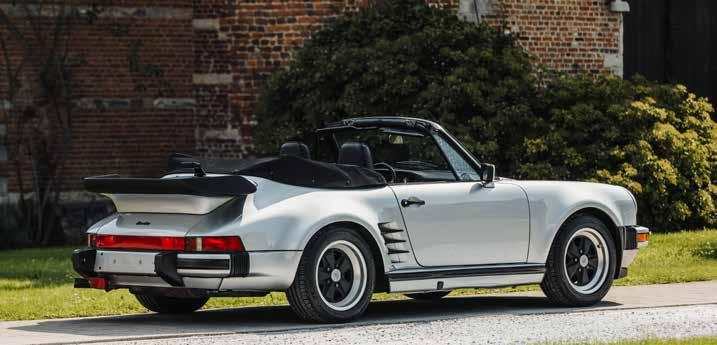
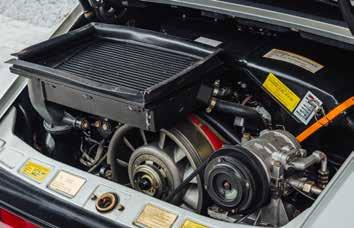
The rare Porsche 911 3.3 Turbo Cabriolet is now considered a 'cult' car thanks to numerous appearances in Hollywood movies and on television, most famously Miami Vice. Built to US specification, this wonderful example comes with a Porsche Certificate of Authenticity (CoA) recording its original colour scheme as Silver Metallic with black leather interior and matching soft top. The CoA also lists this car's numerous desirable factory options.
Highlights include the following:
Blaupunkt Reno radio
Oil cooler with fan
Locking differential
Electric cabriolet top
Passenger side mirror (electric plain)
High intensity windscreen washer
Headlight washer
Velour carpet in luggage compartment
Windshield green graduated tint
Protective side mouldings
Air intake slots in the rear wings

The aforementioned air intake slots were usually reserved for the 'slant nose' model, and our vendor believes that his is one of only a few regular 911 3.3 Turbo Cabriolets combining this option with the locking differential and protective side mouldings.
The Porsche had only one owner, in Ohio, before being sold in 1990 to the international dealer German Auto Specialists with only 9,306 miles recorded (documents on file). German Auto Specialists sold the Porsche via a Belgian dealer to the current Belgian owner that same year (invoice on file). In the present ownership for 35 years, this 911 Turbo has been meticulously serviced and kept strictly original. A renowned Porsche expert has carried out an extensive inspection, taking 131 paint thickness measurements, and confirmed the car's originality: exterior/interior in exceptionally good condition, never restored; accident free; and multiple factory markings still present (chalk marks, spare wheel, labels and identification, etc). The Turbo is said to be mechanically excellent having benefited from a engine overhaul in 2021 (see invoice totalling €40,000 on file). The current mileage total is 31,600 (approximately 50,500 kilometres).
€120,000 - 140,000
The 2L Prototype Class Winner at the 1966 Daytona 24 Hours 1966 PORSCHE 906 CARRERA
Chassis no. 906-017 Engine no. (see text)
• The second officially known 906
• Used as a development car by Porsche during winter 1965
• Used at the unveiling of the 906 to journalists in January 1966
• Driven to 6th overall by Herbert Linge and Hans Hermann at the 1966 Daytona 24 Hours
• Factory test car for the Targa Florio and Monza 1000 km 1966
• Comprehensively restored from the chassis by Freisinger-Motorsport between 2008 and 2013
• Coming from one of the biggest car collections in France
• Registered in Germany for road use

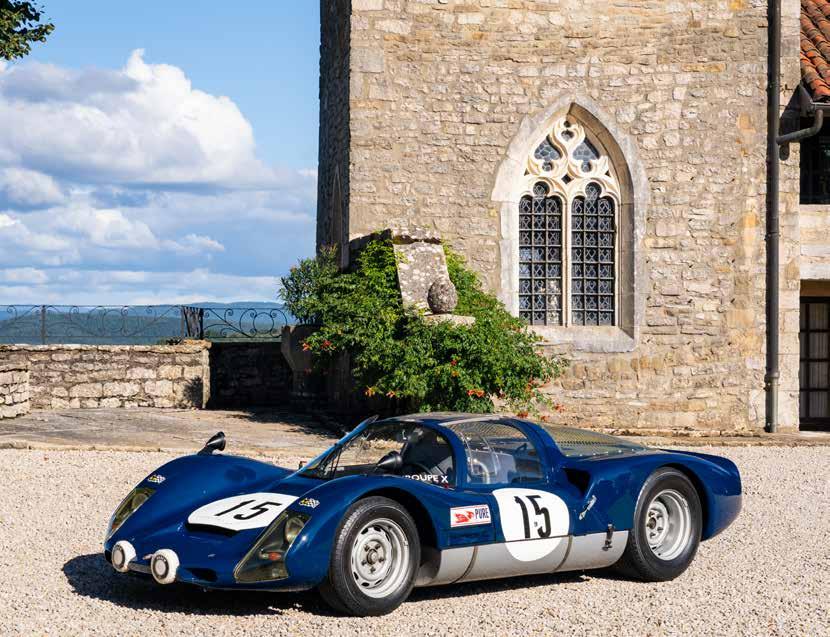
The Porsche 906 was produced for the 1966 season of the World Sportscar Championship. It was designed to meet the requirements of the FIA's new Group 4 regulations, while modified variants of the model –using larger engines or cut-down Spyder bodywork – could be accepted for Group 6 Sports-Prototype competition.
The 906 became the last street-legal racing car to be produced by Porsche. It replaced the steel pontoon-chassis Type 904 model and was the first substantial product of Technical Director Ferdinand Piech's new design regime at the Zuffenhausen factory. Where the complicated and costly Porsche 904 had derived structural rigidity from its bonded-on moulded fiberglass bodywork, the new 906 featured a racing-bred multitubular spaceframe chassis, clothed by unstressed moulded fiberglass body panelling.
As a result, the initial batch of 50 Porsche 906 – or Carrera 6 – Coupe cars that then emerged offered competitive light weight - some 1,300 lb (580 kg) which represented a weight saving of around 250 lb (113 å6-cylinder lightweight racing engine was standard equipment, offering 220bhp on carburettors. A handful of factory-entered works cars were alternatively powered either by fuel-injected versions of the 6-cylinder engine or, were adapted to accept flat-8 cylinder power units, all – of course – air cooled.
The Carrera 6 model was notable for its external envelope shape dictated by extensive wind tunnel testing. This research and development work endowed the model with a top speed as high as 170mph (280km/h) at Le Mans, which for a 2-liter car was immensely respectable.
The new cars made their international racing debut in the 1966 Daytona 24 Hours, one example finishing 6th overall. Its drivers on that occasion were Hans Herrmann and Herbert Linge, and at the subsequent 12 Hours of Sebring, Herrmann won the category again in a new Carrera 6, co-driving it this time with Gerhard Mitter and Joe Buzzetta, and finishing fourth overall.
The Monza 1,000kms also saw 906s dominate the 2-liter class, this time with Herrmann and Mitter in a works entry leading home the private customer version of Charles Vogele/Jo Siffert, these two cars placing fourth and fifth overall behind the victorious Ferrari 330P3 and a pair of Ford GT40s.
The Targa Florio in Sicily was the next World Championship race that year, and there the Carrera 6 won outright, Willy Mairesse and Herbert Muller co-driving the Swiss Ecurie Filipinetti-entered car. The Dutch racing brothers, Gijs and David van Lennep, then won the Sports 2-liter class in the less-prominent Spa 1,000kms – co-driving their bright orange-liveried Racing Team Holland Porsche 906 - and in the ADAC 1,000kms at the Nürburgring the Dutch pairing won again, from Swedish private owner Sten Axelsson and Bo Johansson in the former's sister car.
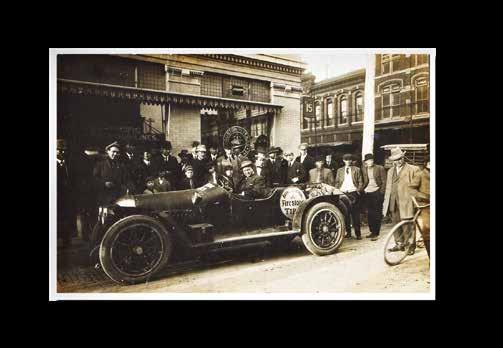
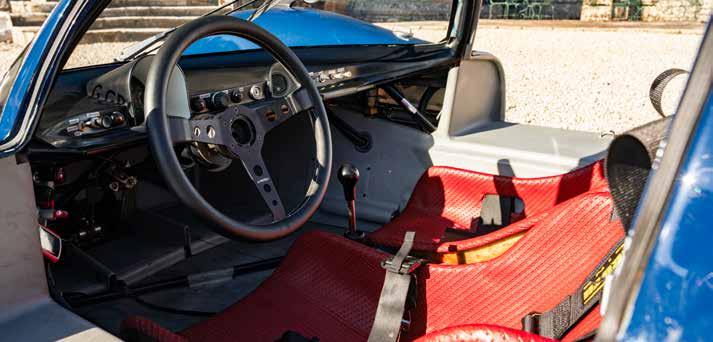
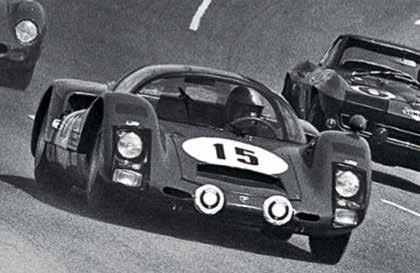

The 1966 24 Hours of Le Mans then saw works-entered prototype category Porsche 906LE Coupes finishing 4-5-6-7 behind the leading trio of 7-liter-engined Ford GT Mark IIs, outlasting all of the previously dominant V12-engined sports-prototype Ferraris, while the 2-liter Sports class was again dominated by a standard 906 – co-driven in this instance by Gunther Klass and Rolf Stommelen.
Completing that memorable season of endurance racing achievement, the Hockenheim 500kms was utterly dominated by Porsche 906s, which filled the first six places – works drivers Mitter, Klass and Herrmann placing 1-2-3 in the factory-entered 906LE variants, while Udo Schutz, Gerhard Koch and Andre Wicky showed how well competent private owners could do in their customer cars by chasing the works stars home to fill 4th, 5th and 6th places.
The Austrian 500kms event at Zeltweg then saw Gerhard Mitter with Hans Herrmann and Jo Siffert (driving solo) finishing 1-2 for Porsche System Engineering, with the Scuderia Lufhansa-entered sister 906 of Udo Schutz and Herbert Linge finishing third for another complete 'Carrera 6' whitewash.
Into 1967 the Carrera 6s continued to be campaigned by prominent private entrants and drivers, while the Ferdinand Piech-directed Porsche factory team moved on to introduce their much more specialized
and larger-engined Typ 907 models, culminating in the Typ 908 flat-8 cylinder replacement for 1968-69. All of this, of course, led directly to the immortal Porsche 917 – towards which the 906 (as offered here) was a crucial stepping stone.
Chassis 906-017 was the second 906 built, after 906-016, and was used for development as well as for the car's homologation during the winter of 1965. It was later, at the parent factory in Zuffenhausen, that it was presented to the press by Huschke von Hanstein, head of Porsche's racing department, and by the drivers Gerard Mitter and Hans Hermann. There are many photos of this presentation, and chassis 017 is easily recognisable with its specific shade of blue. A few weeks later, the 906017 was lined up under number 15 on the start line of the Daytona 24 Hours on 5th and 6th February 1966. With Hans Hermann and Herbert Linge at the wheel, in qualifying it came in 18th of the 60 timed cars, with a time of 2:07.6, in front of the other two factory Porsches, two 904 GTSs. During the race, faced with an armada of Ferrari 250 LMs and other Ford GT40s, and despite a much smaller engine capacity, the excellent reliability of the three factory Porsches allowed them to move up the classification, taking the 6th, 7th and 8th places overall, but above all, two wins in their class with the 906, number 15, in Prototype 2L and the 904, number 16, in Sport 2L. With around 3,800 km on the clock and an average speed of 160 km/h, thus began the 906's adventure, with a first race and a first win, before so many others.
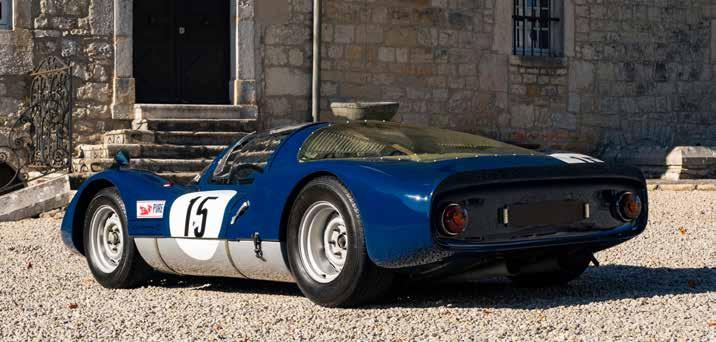
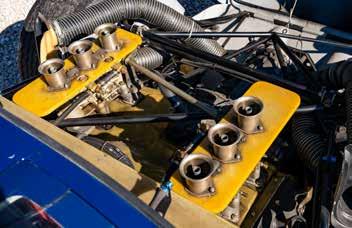
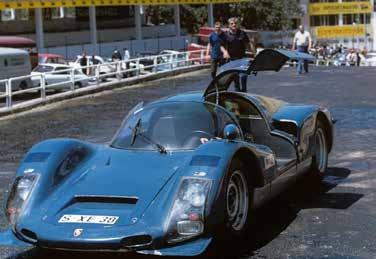
As Porsche's press release noted, Triumph der Kleinen (a win for the small). Suffice to say, the 50 client models of the 906 would very quickly find homes, even leading the carmaker to extend the production run to 65 chassis.

After scraping a victory, the 906-017 returned to the factory in preparation for the Targa Florio, and the 1,000 km of Monza. It was thus that, on 25th March 1966, the blue prototype took part in the Targa Florio trials, covering 576 kilometres in the hands of various official drivers, Jo Bonnier, Hans Hermann, Gerard Mitter, Dieter Glemser, Vincenzo Arena and Antonio Pucci. A photo of these trials remains, where the 906-017 appears with the number plate S-XE 38, with Jo Bonnier at its wheel.
Having returned to the factory to be fitted with a new gearbox, the 906-017 was in Monza on 20th April 1966 for practice prior to the 1,000 Kilometres on 25th April. It clocked up 425 kilometres in tests, contributing somewhat to the class win and overall 4th place of the 906128, driven by Mitter and Hermann.
Just a few days later, on 28th April, 017 was back on the road in Sicily to undertake another 1,000 km in tests for the Targa Florio, which took place on 8th May 1966, and which saw chassis 128 triumph again in the hands of Willy Mairesse and Herbert Müller.
Porsche's used car service, along with chassis 142, 143, 155 and 016. Chassis 017 is described there as having been sold without an engine, but with a gearbox. It is also noted in Porsche's archives from 1st September 1966 that a transverse tube had broken underneath the gearbox, and that the coachwork was damaged. The car then had around 5,000 km on the odometer.
It would then be sold in Mexico to an unknown owner, before it was acquired by Jim Tidwell of La Mesa, California, during the 1970s. The latter had owned, among others, the 904-012, formerly belonging to Robert Redford, sold by Bonhams in 2022. Jim Tidwell then sold the 906-017 to collector Kerry Morse, known for having one of the marque's finest prototypes in his collection. There are photos of chassis 906-017 while it was in his possession, and they can be found in the car's file. In 2008, Manfred Freisinger acquired 017 and imported it to Germany to put it through a comprehensive restoration from the bare chassis. It was thus between 2008 and 2011 that the 906 was returned to its 1966 24 Hours of Daytona configuration, with the whole process detailed in numerous photos, available in the file. A specialist in the field, Freisinger Motorsport carried out a high-quality restoration. At this time, the car was fitted with engine 906-013 and gearbox 906-040. On 1st June 2011, 906-017 obtained its historic technical passport from the DMSB, in the FIA TSRC16 class.
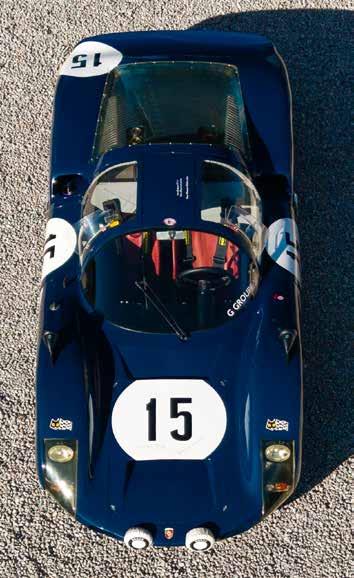
It was then sold by Claudio Roddaro, in 2013, to German collector Rolf Richter. The latter had the car overhauled at Porsche in Stuttgart before registering it in Germany under the number GS R906. He then used it for historic events, and notably at Rossfeldrennen 2014 and 2015. He parted ways with it in 2017, entrusting it to a French Porsche collector and gentleman driver.
Acquired in 2023 by its current French owner, 906-017 has since been exhibited in an exceptional automobile collection.
Today, 906-017 retains the same visual configuration that it had at the 1966 Daytona 24 Hours. A sign of a high-quality restoration: although it has been used since the work dating back around 15 years, it only has a few cosmetic faults, notably a crack in the corner of the plexiglas of the driver's-side door. An interesting detail is that its bonnet is signed by its two drivers of years gone by, Herbert Linger and Hans Hermann. It should be noted that since the restoration, and doubtless to improve ease of use and reliability, the Type 901/20 elektron engine casings fitted by Freisinger Motorsport have been replaced by aluminium casings of type 901.101.102.OR, while the internal casings and accessories have been left untouched. In fact, a Porsche service in 2014, noted that the engine seals were faulty.

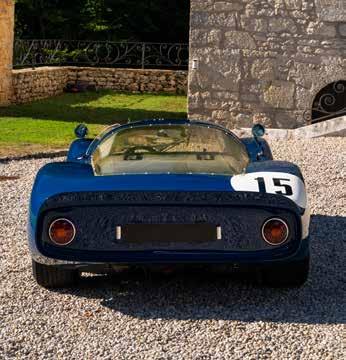
The casing is not stamped in the usual spot, only the letter E is visible on the upper part of the engine. The fuel supply is handled by two triplebarrel Weber 46 IDA 3C carburettors, while the ignition is transmitted to twin spark plugs for each cylinder, in line with the original specifications of the 906. The gearbox bears casting number 90630110103.
This Porsche 906-017 constitutes one of the most important chassis of the 906 series, one of the first two development prototypes, holder of the model's first class win, and today restored in the colours of this success. Eligible for both the Tour Auto and Le Mans Classic, this 906 will need a mechanical overhaul before returning to the circuit, having been used very little in recent years. Accompanied by various expert reports, its historic technical passport from 2011, copies of Porsche archives from the time attesting to the different events in which the car took part, its file of restoration photos, as well as its original German registration document, this 906, in addition to its historical interest, represents an excellent opportunity to participate in outstanding global events.
€1,600,000 - 2,200,000
For more information on the Symbol next to the Lot Number, please refer to the Lot Symbols Key at the front of the Catalogue.
Chassis number '001'
Chassis no. ZA9EC1012HTM09001(01)

• One of only five coupés made
• An icon of exclusivity and performance
• Only 1.238 kilometres recorded from new
• Belgian registration
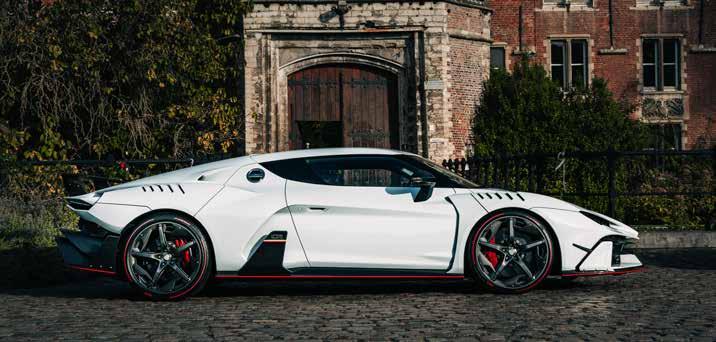
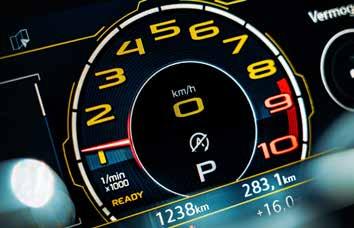
"The Zerouno project, developed by Italdesign Automobili Speciali, is a prime example of the division's focus on limited edition vehicles for collectors and visionary enthusiasts. With only five units produced, Zerouno blends race car performance with road-legal practicality, featuring lightweight materials and a powerful V10 engine. Designed for ultimate customization, it offers unparalleled driving experience."Italdesign Automobili Speciali.
The sensation of the 2017 Geneva Motor Show, Italdesign's Zerouno 'concept car' still looks futuristic today. One of the most influential carrozzeria of recent decades, although the company is far more than a mere coachbuilder, Giorgetto Giugiaro's Italdesign had made its name designing volume-selling production cars such as the Volkswagen Golf and Sirocco, Citroën BX and Lancia Delta. Giugiaro had founded Italdesign in 1968 in partnership with ex-FIAT design engineer, Aldo Mantovani, and remained at the helm until Volkswagen took control in 2010. In 2015 he left to set up the GFG Style design studio in Turin with his son, Fabrizio Giugiaro, where he works to this day.
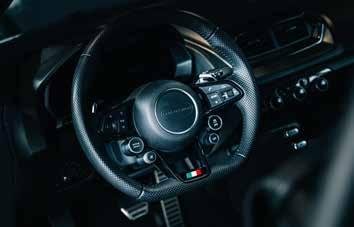
Italdesign's formidable reputation had been funded on its work for mainstream manufacturers, which makes the Zerouno historically significant as the first supercar to be launched under the company's own brand: Italdesign Automobili Speciali. Designed by Italdesign's Filippo Perini, the Zerouno is an ultra-limited-production supercar powered by the 5.2-litre Audi Sport V10 engine found in the Lamborghini Huracán and Audi R8 Plus. According to Perini, the brief "was to design a car not overlapping with anybody else's, with a look that was sexy and mean."
The Zerouno features an aggressive-looking carbon-fibre body and a modular carbon-fibre and aluminium chassis. The mid-mounted, naturally aspirated V10 engine produced 602bhp and 413lb/ft of torque, outputs good enough for a top speed of 205mph (330km/h) and a 0-60mph (0-100km/h) acceleration time of 3.2 seconds. Power reached the ground via a seven-speed dual-clutch gearbox and Audi quattro all-wheel drive transmission.
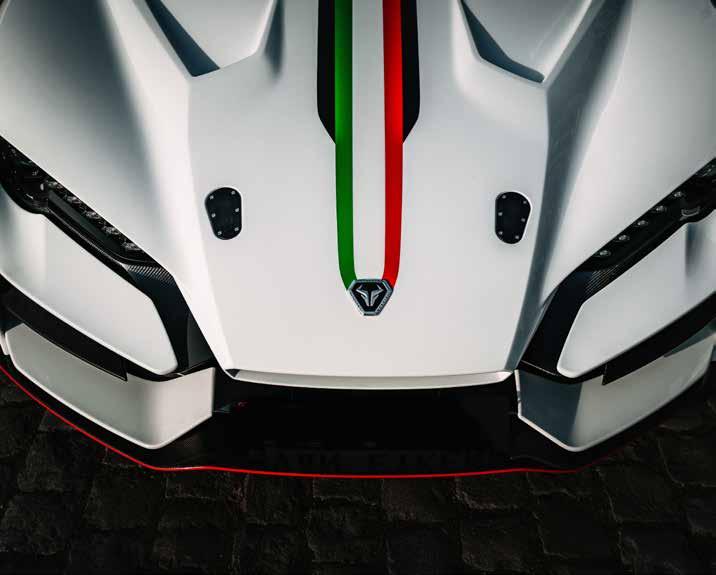
Autocar magazine got to test a Zerouno in November 2018: "It's eruptively fast, of course, dramatically noisy, unhesitatingly responsive and rich with physical communication. It also feels terrifically well developed – its handling, grip, drivability and aura of rigidity confirming the results of extensive testing that included the necessary homologation with the super-strict German TUV."
As is the case with the current generation of super/hypercars, their outward appearance is largely determined by the need to generate enormous downforce. In the Zerouno's case this is achieved by means of a double-decker venturi system at the rear, plus sill extensions and ventilation slats in the wing tops, exhausting air from the brakes, while at the front there is a titanium diffuser, carbon sill extensions, and a Y-shaped duct channelling air from under the bonnet.
According to Autocar: "You can feel the results on the road too, the car feeling wonderfully secure at speed, and not without delicacy either. This manifests itself in the ride, which while firm remains supple enough to provide satisfying feedback over rougher roads, and ensures decent comfort too... the result is a whole heap of addictive entertainment."
Only five Zerouno coupés and five Zerouno Duerta roadsters were produced. Despite them being priced at €1.5 million +taxes each at launch, Italdesign had no trouble in selling every last one.
This pristine example of one of the most exclusive automobiles ever made has covered a mere 1.238 kilometres from new and is presented effectively in 'as new' condition. Belgian registered, it represents a possibly once-in-a-lifetime opportunity to acquire a car more exclusive than almost any Ferrari and more attention grabbing than a Bugatti Veyron.
€800,000 - 1,200,000
For more information on the Symbol next to the Lot Number, please refer to the Lot Symbols Key at the front of the Catalogue.
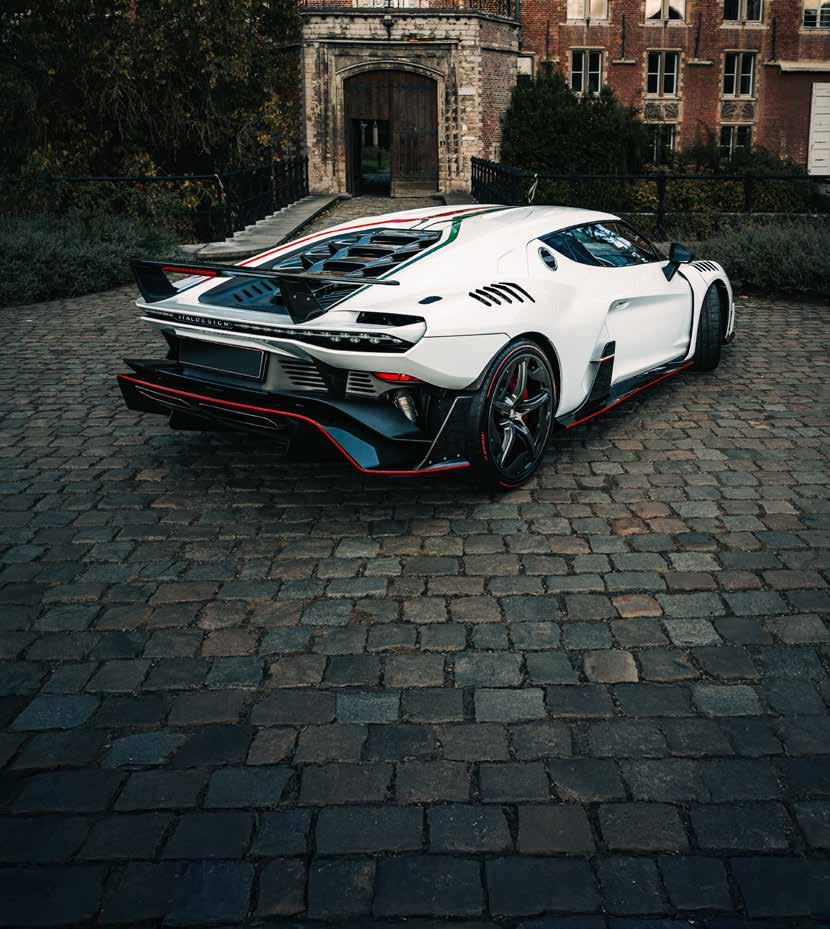
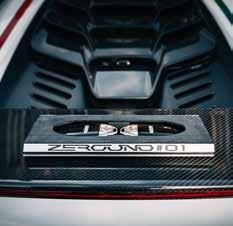


Chassis no. WPOZZZ998RS267813
Engine no. 006266

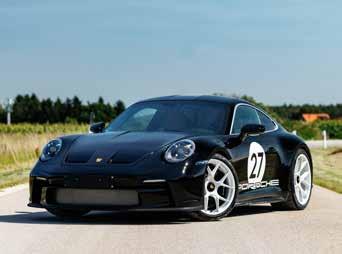
• Stunning specification
• Fewer than 1,700 kilometres recorded
• Last of the naturally aspirated Porsches with the manual gearbox
• One registered owner from new
• Under factory warranty until January 2027
"Maximum rawness and engagement, a truly great driver's car."evo magazine on the Porsche 911 S/T.
In August 2023, Porsche revealed the 911 S/T to celebrate the 911's 60th anniversary, announcing that 1,963 would be built, that number referencing the original's launch (as the 901) in 1963. Its designation was an homage to the original 911 S/T, an early lightweight competition version predating the famous Carrera RS and produced in limited numbers between approximately 1970 and 1972. These cars were conceived to exploit a provision in the FIA's production sports car racing regulations that permitted wheelarches to be flared by 50mm (2") to accommodate wider-than-standard wheels.
The modern version uses various components found in other Porsche models, the engine being the 518bhp naturally aspirated unit taken from the GT3 RS, while the body is basically the standard Type 992, featuring S/T-specific carbon wings, carbon doors, and the 'double-bubble' roof from the GT3 RS. Mechanically the same as that of the GT3 Touring, the suspension had nevertheless been extensively reworked electronically for the S/T. Porsche Carbon Composite Brakes (PCCB) were standard, while deletion of the stock rear-wheel steering meant that the steering had to be retuned, resulting in a marked improvement in feedback.
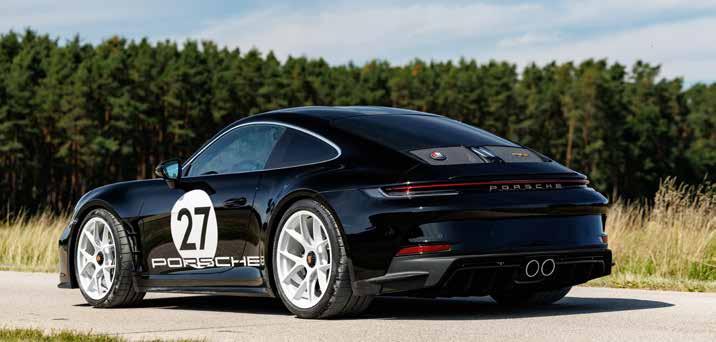
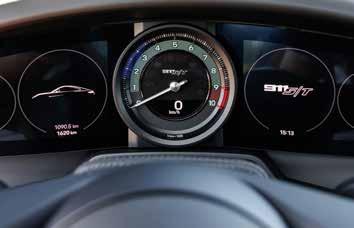
Wheels were magnesium centre-lock: 20" front, 21" rear. Inside the cabin the fortunate S/T owner would find carbon bucket seats with fabric centres, acres of leather trim, and gold badging.
The S/T is also notable as the first model to combine the GT3 RS engine with a (six-speed) manual gearbox, as well as being the lightest of the Type 992 family. The transmission also featured a S/T-unique lightweight clutch and single-mass flywheel. For the S/T, the gear ratios were shortened to improve acceleration, which had the effect of reducing the top speed to 186mph (300km/h), while the 0-100km/h dash was covered in 3.7 seconds. "The shorter gearing lends the S/T an even greater sense of urgency than a GT3," declared evo magazine. "But it still has long legs and you find yourself using the upper mid-range most of the time."
Indeed, so impressed was evo with the S/T's overall performance that it was voted their 'Car of the Year 2024'. "With its manual gearbox, inertiafree flat-six and shorter gearing, the limited-edition 911 is in some ways more focused than even the 911 GT3 RS that won last year," declared the esteemed British motoring magazine.
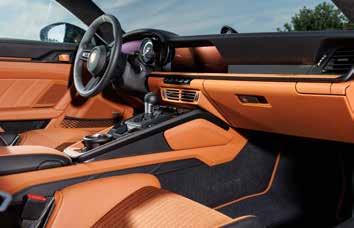
Sold new and registered to its sole owner in Germany, this stunning 911 S/T comes with an enviable specification which includes the following:
S/T Interior Heritage Design with extended leather, bi-colour black/ cognac
BOSE Surround Sound System
Chrono Pack
Heritage Design 60 Years Porsche 911 90-litre fuel tank
Porsche Dynamic Light System Plus
Front suspension lift
Paint Protective Film to the front of the car
Carbon fibre reinforced roll cage
Rare and exclusive, the 911 S/T is judged by many to be the ultimate road going Porsche: the company's last model with the naturally aspirated engine and manual gearbox. Importantly, it still is under factory warranty until January 2027. A not-to-be-missed opportunity.
€340,000 - 380,000
For more information on the Symbol next to the Lot Number, please refer to the Lot Symbols Key at the front of the Catalogue.
Coachwork by Pininfarina/Scaglietti
Chassis no. 04802
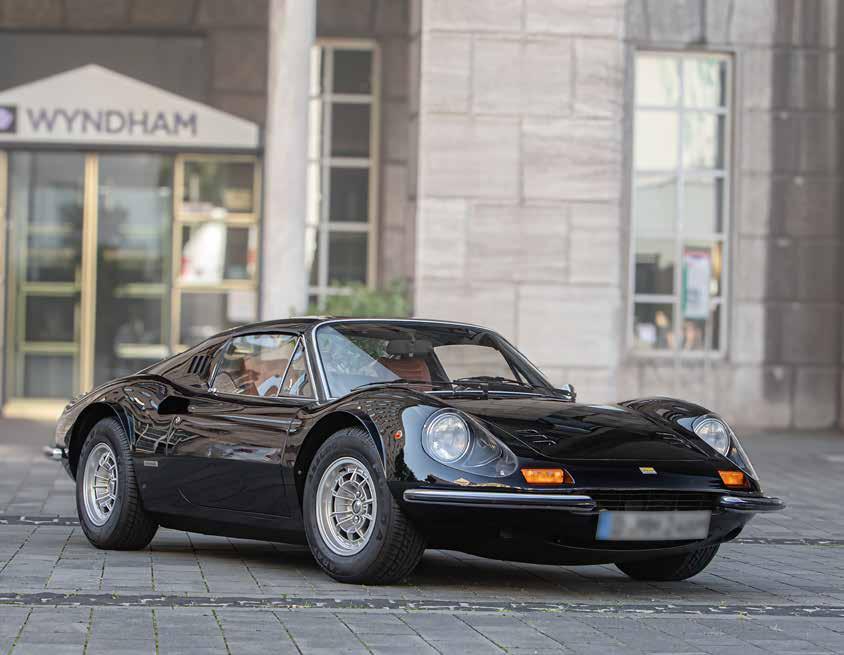
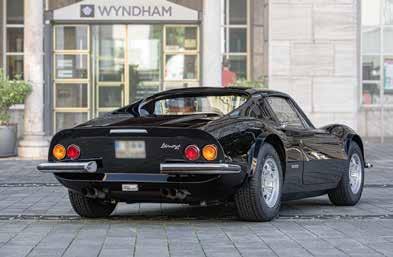
• Delivered new to the USA
• Air conditioning from new
• Professionally restored in the USA 2008-2009 and in Europe in 2019
• Desirable Colour Combination
'It is a thrill to drive a car like the Dino, one whose capabilities are far beyond what even an expert driver can use in most real-world motoring, and that is the Dino's reason for being. The real joy of a good mid-engined car is in its handling and braking and the Dino shone as we expected it to. The steering is quick without being super quick, and it transmits by what seems a carefully planned amount of feedback exactly what is going on at the tyres. Thanks to the layout's low polar moment of inertia the car responds instantly to it. The Dino's cornering limits are very high... ' – Road & Track.
It was the need for a production-based engine for the new Formula 2 that had prompted the introduction of a 'junior' Ferrari, the Dino 206 GT, at the Turin Motor Show in 1967. The latest in a line of Dino V6 'quad-cam' engines stretching back to the late 1950s, the new unit proved as successful on the racetrack as in the showroom, Derek Bell and Ernesto Brambilla both winning races in the European Championship, while Andrea de Adamich triumphed in the 1968 Argentine Temporada series.
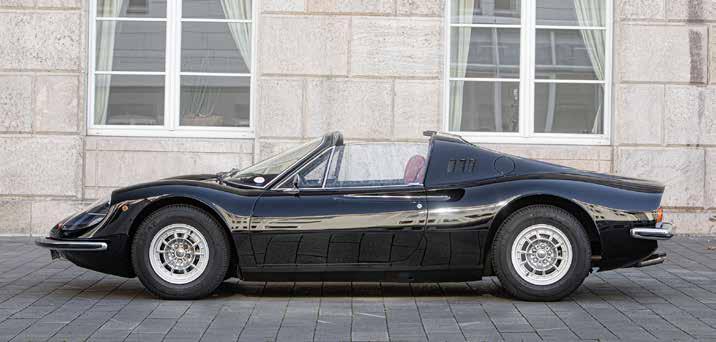

Building on experienced gained with its successful limited edition Dino 206S sports-racer of 1966, Ferrari retained the racer's mid-engined layout for the road car but installed the power unit transversely rather than longitudinally. A compact, aluminium-bodied coupé of striking appearance, the Pininfarina-styled Dino - named after Enzo Ferrari's late son Alfredino Ferrari and intended as the first of a separate but related marque - was powered by a 2.0-litre, four-cam V6 driving via an in-unit five-speed transaxle. The motor's 180 brake horsepower was good enough to propel the lightweight, aerodynamically-efficient Dino to 142mph, and while there were few complaints about the car's performance, the high cost enforced by its aluminium construction hindered sales.
A 2.4-litre version on a longer wheelbase - the 246 GT - replaced the original Dino 206 in late 1969. Built by Scaglietti, the body was now steel, and the cylinder block cast-iron rather than aluminium, but the bigger engine's increased power - 195bhp at 7,600rpm - adequately compensated for the weight gain. A Targa-top version, the 246 GTS, followed in 1972. The Dino 246 was built in three series: 'L', 'M', and 'E', these designations reflecting detail changes in the specification.

This Ferrari Dino 246 GTS was built in 1972 as a United States version complete with air conditioning. Between 2008 and 2009 a 'frame off' restoration was undertaken, which included a thorough overhaul of the engine and gearbox and upgrading with the popular 'Chairs & Flares' package of modifications. The work was undertaken by Ed Waterman, the leading Dino specialist in the United States. After 20,000 kilometres had been covered, a second restoration was carried out in 2019 by TG Classics of Willich, Germany, leading specialists in the restoration of Ferrari and Lamborghini cars. Detailed photographic documentation and receipts are available together with a current valuation report.
While not quite as fast in a straight line as its larger V12-engined stablemates, the nimble Dino was capable of showing almost anything a clean pair of heels over twisty going. Truly a driver's car par excellence, it is still highly regarded today. Every Ferrari collection should have one. Offered with German registration documents as well as the aforementioned file.
€350,000 - 450,000
Coachwork by Henri Chapron
Chassis no. 4609606
Engine no. 0318007358
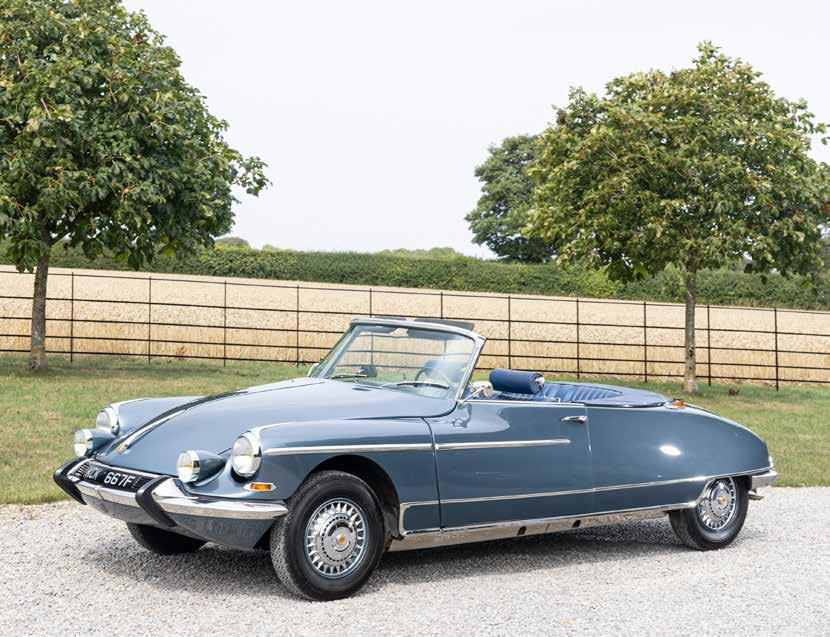
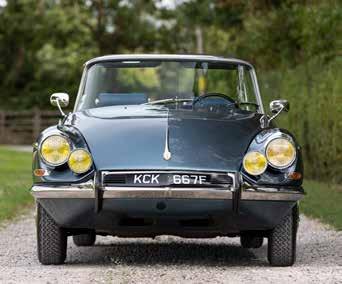
• Open headlight version with desirable green LHM hydraulic fluid
• All matching numbers (chassis, body, engine)
• Comprehensively restored to concours condition 1990-1993
• Restoration bills available
• Registered in the UK
Just as it had done 21 years previously with the revolutionary Traction Avant, Citroën stunned the world again in 1955 with the launch of the strikingly styled 'DS'. Beneath the shark-like newcomer's aerodynamically efficient, low-drag bodyshell there was all-independent, self-levelling, hydro-pneumatic suspension plus power-operated brakes, clutch, and steering.
The project had been initiated in the 1930s by the company's managing director, Pierre-Jules Boulanger, and would be brought to fruition by designers Andre Lefebvre, previously with Voisin and Renault, and Flaminio Bertoni, who had worked on the styling of the pre-war Traction Avant. Part of Boulanger's brief had been that the proposed 'VGD' (Voiture de Grand Diffusion or Mass Market Car) should be capable of affording a comfortable ride over sub-standard rural roads while remaining stable at sustained high speeds on the Autoroutes. The solution to these seemingly incompatible requirements was the famous hydro-pneumatic suspension, suggested by Citroën engineer Paul Mages. No European car would match the DS's ride quality for several years, the fundamental soundness of Citroën's ahead-of-its-time hydropneumatic suspension being demonstrated by its survival until recently in top-of-the-range models.
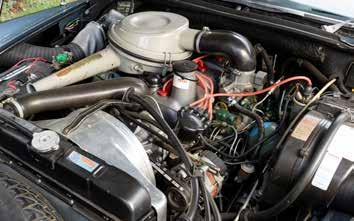
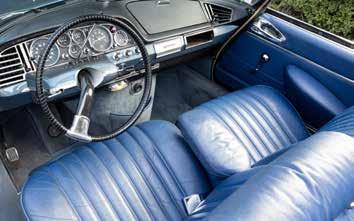
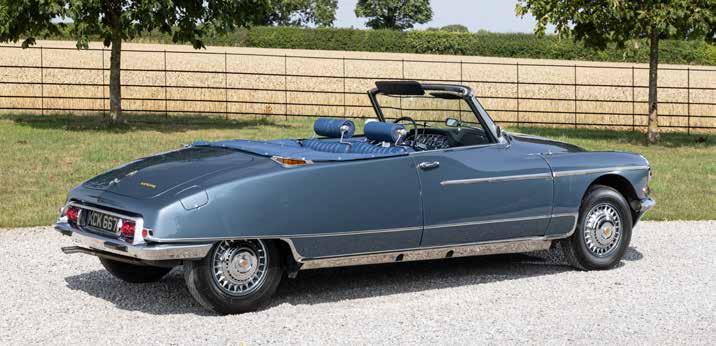
In September 1965 the DS's original 1,911cc, overhead-valve, longstroke engine – inherited from the Traction Avant - was replaced by a short-stroke 1,985cc unit, also available in 2,175cc and 2,347cc versions, while other DS developments included swivelling headlights, fuel injection and a five-speed gearbox. Other models offered alongside the original DS were the ID (a simplified, cheaper version), the cavernous Safari estate and the two-door Décapotable (convertible), the latter boasting coachwork by Henri Chapron.
Chapron's first convertibles had been produced independently of Citroën but the factory eventually gave the project its blessing. Built by Chapron, Citroën's own Décapotables were erected on the longer, stronger chassis of the ID Break (Estate). In total, 1,365 usine (factory) convertibles were made with either the DS19 or DS21 engine between 1960 and 1971, while Chapron built a further 389 of his own, the last in 1973.
First registered in 1968, this matching-numbers DS 21 Décapotable has the most desirable hydraulic semi-automatic gearbox. We're advised by the vendor that this DS remained with the first owner until 1988 when it was sold to a Parisian professor of psychology, Mr Ike Benzakein. This car has belonged to only two families since it left the factory before it was purchased by our vendor from the Zoute Sale in 2019.
In 1990, Mr Benzakein commenced a restoration to the highest standard; the chassis, body, engine, transmission, hydraulics, interior, and convertible hood all being restored to 'as new' condition, while the car was repainted in Bleu Antartique, a colour that was available in period. It is believed that during the restoration the front of the car was modified from the twin headlamp configuration to the arguably more attractive single 'Frogeye' version.
Today, this DS remains in outstanding condition; fastidiously maintained, it is reported to run and drive superbly. Restoration bills are on file and the car is currently registered in the United Kingdom and is being offered with a V5C registration document. An eye-catcher at any gathering, this magnificent and rare piece of French motoring history is 'on the button' and ready to be enjoyed.
€180,000 - 220,000 No Reserve
For more information on the Symbol next to the Lot Number, please refer to the Lot Symbols Key at the front of the Catalogue.
Chassis no. 16949
Engine no. B2804
• Delivered new to Chinetti Garthwaite Imports, USA
• Same ownership since 1988
• Matching numbers (chassis, engine, gearbox)
• Ferrari Classiche certified
• Restored by Ferrari in Modena
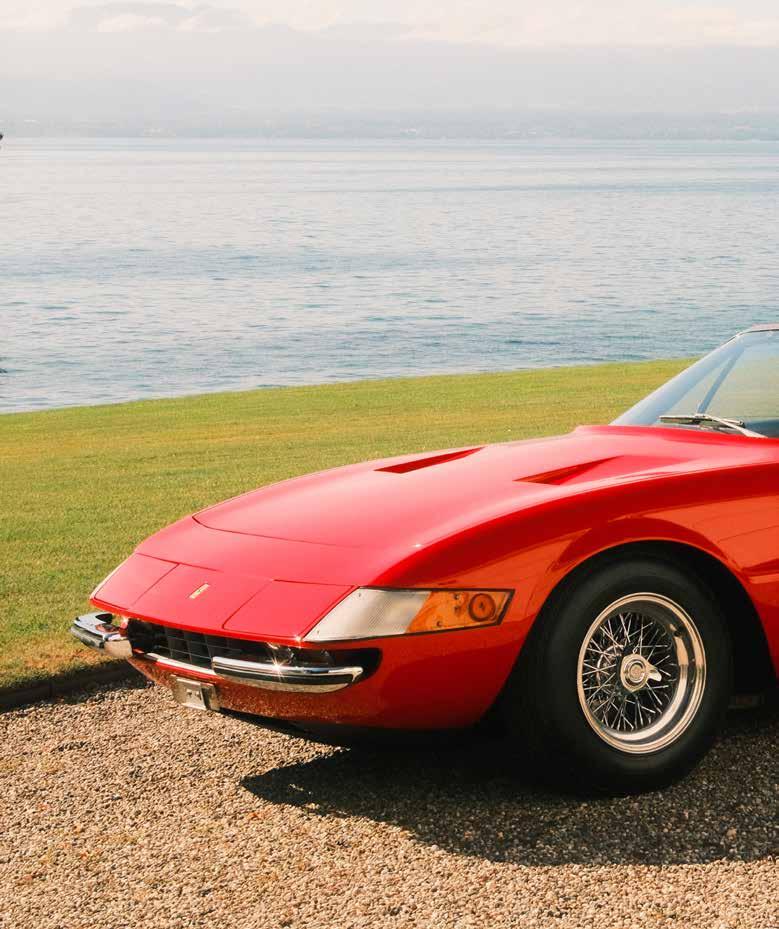





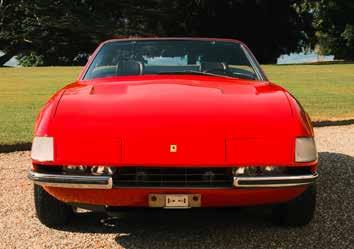
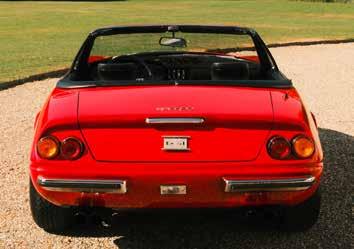

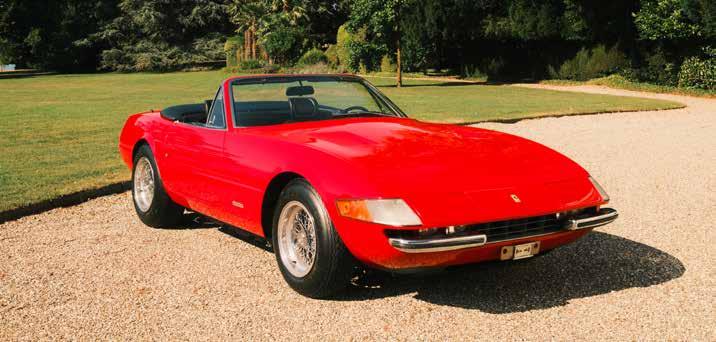

“It’s a hard muscled thoroughbred, the Daytona - easily the most awesome and yet disciplined road-going Ferrari in that firm’s brilliant quarter century of existence. The Daytona isn’t fast – it’s blinding. It will eat up a quarter-mile of asphalt in 13.2 seconds at 110mph and scream out to 175mph - or it will slug through traffic at 1,500rpm with the Sunday manners of a FIAT. It is the perfect extension of its driver. You can cut and weave through shuffling traffic with the agility of a halfback, or lope down the freeway with the piece of mind that comes from knowing you can contend with anyone’s incompetence. To say, after you’ve driven it, that the Daytona is desirable doesn’t begin to sum up your feelings - you would sell your soul for it.” - Car & Driver, January 1970.
Every Ferrari is, to a greater or lesser extent, a ‘landmark’ car, but few of Maranello’s road models have captured the imagination of Ferraristi like the 365 GTB/4. The ultimate expression of Ferrari's fabulous line of V12 front-engined sports cars, the 365 GTB/4 debuted at the Paris Salon in 1968, soon gaining the unofficial name 'Daytona' in honour of Ferrari's 1-2-3 finish at that circuit in 1967.

Aggressively styled by Pininfarina, Ferrari's new sports car boldly restated the traditional 'long bonnet, small cabin, short tail' look in a manner which suggested muscular horsepower `a la AC Cobra while retaining all the elegance associated with the Italian coachbuilder's work for Maranello. An unusual feature was a full-width transparent panel covering the headlamps, though this was replaced by electricallyoperated pop-up lights to meet US requirements soon after the start of production in the second half of 1969.
In response to Lamborghini, Ferrari's road-car V12 had gained four overhead camshafts during production of the 275GTB (cars thus equipped acquiring a '/4' suffix) and in the Daytona displaced 4,390cc. Power output was 352bhp at 7,500rpm, with maximum torque of 318lb/ft available at 5,500 revs. Dry-sump lubrication permitted a low engine installation, while a five-speed transaxle enabled 50/50 front/rear weight distribution to be achieved. The chassis embodied long-standing Ferrari practice - being comprised of oval-section tubing - the allindependent wishbone and coil-spring suspension was a more-recent development though, having originated in the preceding 275GTB.
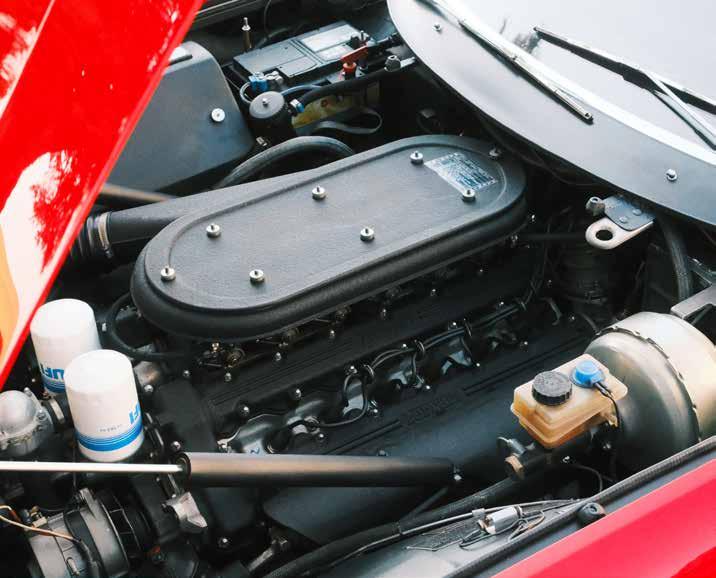
Unlike the contemporary 365GTC/4, the Daytona was not available with power steering, a feature then deemed inappropriate for a 'real' sports car. There was, however, servo assistance for the four-wheel ventilated disc brakes. Air conditioning - vital for the US market - was optional, but elsewhere the Daytona remained uncompromisingly focussed on delivering nothing less than superlative high performance. Although overshadowed in some respects by the mid-engined Lamborghini Miura, the Daytona gave nothing away to its rival in terms of straightline speed. With a maximum velocity in excess of 170mph, it was the fastest production car of its day. “The Ferrari 365GTB/4 is the best sports car in the world,” wrote Road & Track magazine in 1970. “Or the best GT. Take your choice; it's both.”
Although there had been no official open-top version of its predecessor, the favourable reception of Luigi Chinetti's 275GTB-based NART Spyder no doubt influenced Ferrari's decision to produce a convertible Daytona. Again the work of Pininfarina, the latter was first seen at the Frankfurt Motor Show in 1969, with deliveries commencing in 1971. Although the rear end had been extensively reworked, so successful was Pininfarina's surgery that it was hard to credit that the Daytona had not initially been conceived as a spyder.

In all, Ferrari manufactured around 122 Daytona Spyders (published figures vary from 121 to 124). Number 101 of the series, this stunning example was delivered in December 1973 to Chinetti Garthwaite Imports in the USA. The car was originally finished in Rosso Chiaro with Nero Connolly leather interior and left the factory equipped with air conditioning, a radio and Cromodora alloy wheels (it is currently fitted with Borrani wires but Cromodora wheels will come with it).
The current owner purchased the Ferrari in 1988 from Graber Automobile AG in Bern, Switzerland. In 2010 the Daytona was sent to Ferrari in Modena to be fully restored to its original colours. In the process, we were told that the car was converted to European specification. It is worthwhile noting that the original leather upholstery has been retained, thus endowing the interior with a lovely patina. A truly beautiful example of one of the rarest and most sought-after Ferraris, '16949' comes is complete with jack, tools, instruction manuals, documents, the aforementioned Cromodora wheels and, of course, the all important Ferrari Classiche certification.
€2,200,000 - 2,500,000
For more information on the Symbol next to the Lot Number, please refer to the Lot Symbols Key at the front of the Catalogue.

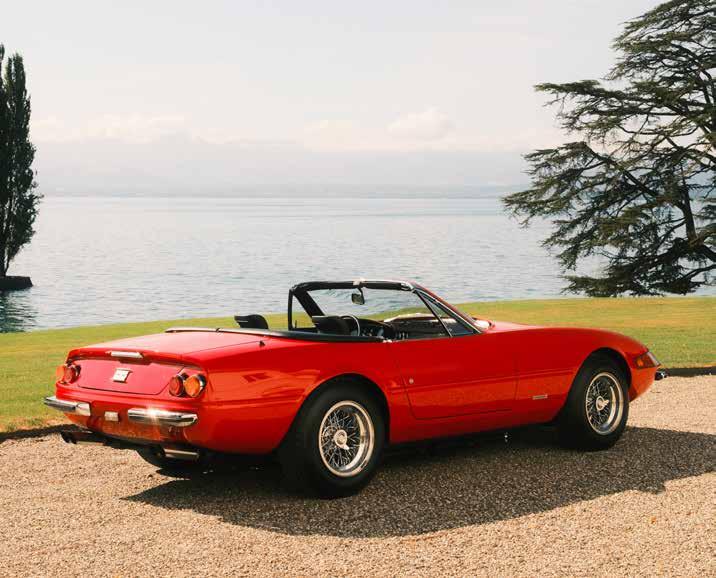
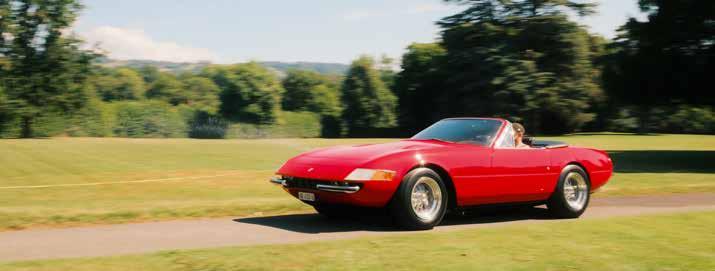

Highly sought-after early 'Plexiglas' model, Ferrari Classiche certified 1969 FERRARI 365 GTB/4 'DAYTONA'
Chassis no. 12637
Engine no. 12637
• The 29th Daytona produced out of a total of approximately 530 plexiglass nose examples
• Delivered new in Italy
• Ordered new in 'Blu Scuro Dino'
• Full matching numbers confirmed by Ferrari Classiche Red Book
• Swiss registration document


Every Ferrari is, to a greater or lesser extent, a 'landmark' car, but few of Maranello's road models have captured the imagination of Ferraristi like the 365 GTB/4. The ultimate expression of Ferrari's fabulous line of V12 front-engined sports cars, the 365 GTB/4 debuted at the Paris Salon in 1968, soon gaining the unofficial name 'Daytona' in honour of the sweeping 1, 2, 3 finish by Ferrari at that circuit in 1967. Pininfarina's Leonardo Fioravanti, later the famed Carrozzeria's director of research and development, was responsible for the influential shark-nosed styling, creating a package that restated the traditional 'long bonnet, small cabin, short tail' look in a manner suggesting muscular horsepower while retaining all the elegance associated with the Italian coachbuilder's work for Maranello.
One of Pininfarina's countless masterpieces, the influential sharknosed body style featured an unusual full-width transparent Plexiglas panel covering the headlamps, though this was replaced by electrically-operated pop-up lights to meet US requirements soon after the start of production in the second half of 1969. Fioravanti later revealed that the Daytona was his favourite among the many Ferraris he designed.
Although the prototype had been styled and built by Pininfarina in Turin, manufacture of the production version was entrusted to Ferrari's subsidiary Scaglietti in Modena. The Daytona's all-alloy, four-cam, V12 engine displaced 4,390cc and produced its maximum output of 352bhp at 7,500rpm, with 318lb/ft of torque available at 5,500 revs. Dry-sump lubrication enabled it to be installed low in the oval-tube chassis, while shifting the gearbox to the rear in the form of a fivespeed transaxle meant 50/50 weight distribution could be achieved.
The all-independent wishbone and coil-spring suspension was a recent development, having originated in the preceding 275 GTB. Unlike the contemporary 365 GTC/4, the Daytona was not available with power steering, a feature then deemed inappropriate for a 'real' sports car. There was, however, servo assistance for the four-wheel ventilated disc brakes. Air conditioning was optional, but elsewhere the Daytona remained uncompromisingly focussed on delivering nothing less than superlative high performance.
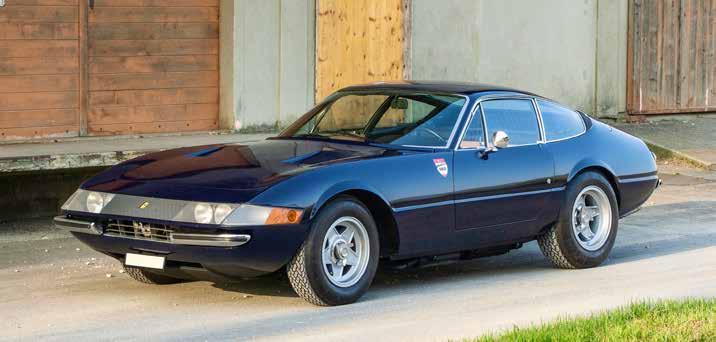
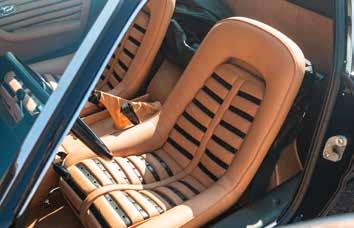
At the time of its introduction in 1968 the Daytona was the most expensive production Ferrari ever and, with a top speed in excess of 273km/h, was also the world's fastest production car. Deliveries commenced in the second half of 1969 and the Daytona would be manufactured for just four years; not until the arrival of the 456 GT in 1992 would Ferrari build anything like it again. Only 1,300 Berlinetta models and 122 Spyder convertibles had been made when production ceased in 1973, only some 530 examples of the Daytona left the factory with the plexiglass nose.
According to its accompanying Ferrari Classiche 'Red Book', this very early Plexiglas model was delivered new in June 1969 finished in Blu Scuro Dino; it is the 29th Daytona produced and a desirable full-matching-numbers example. On file is a lengthy list of works carried out during the car's 1,500-hour professional restoration by Automobile Découverte SA in Switzerland.
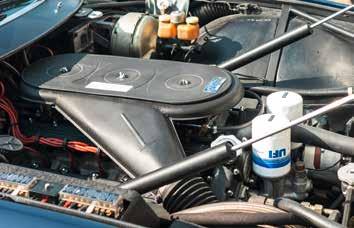
It is believed that the Ferrari has always been resident in Europe. Additional documentation consists of Marcel Massini correspondence showing the car has remained in Italy in the first years of its life. This plexiglass Daytona comes with Swiss registration documents.
Please kindly note the original registration documents will be delivered after the auction.
€500,000 - 700,000 No Reserve
For more information on the Symbol next to the Lot Number, please refer to the Lot Symbols Key at the front of the Catalogue.
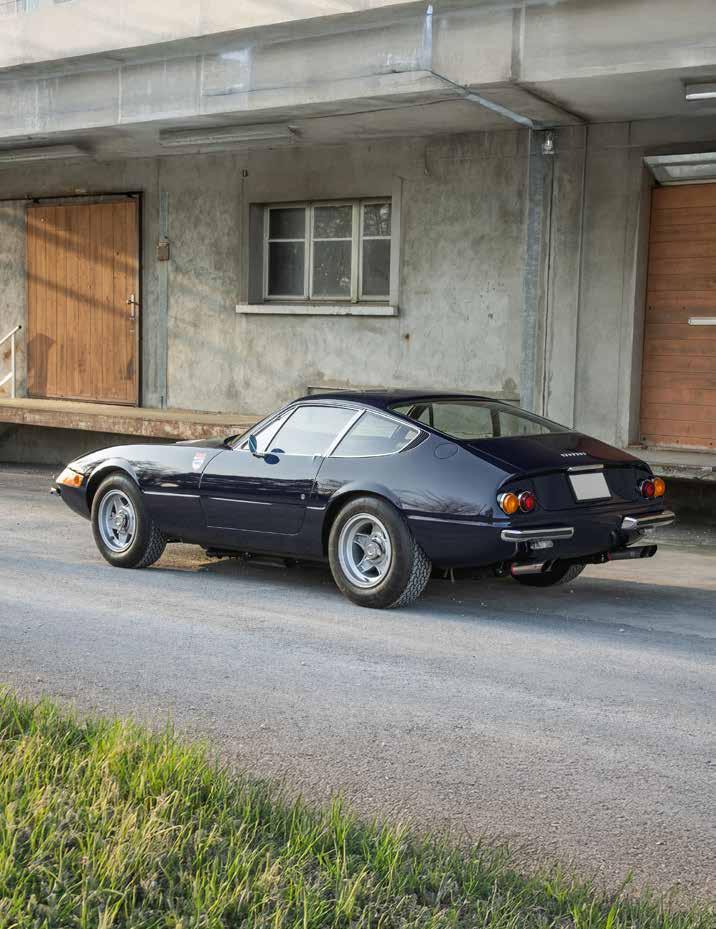
160
Italics CAR TITLE
Coachwork by ....
Full history known from new 1960 FIAT 500 N JOLLY
Coachwork by Ghia
Chassis no. XXX
Engine no. XXX
Chassis no. 159442
Engine no. 189842
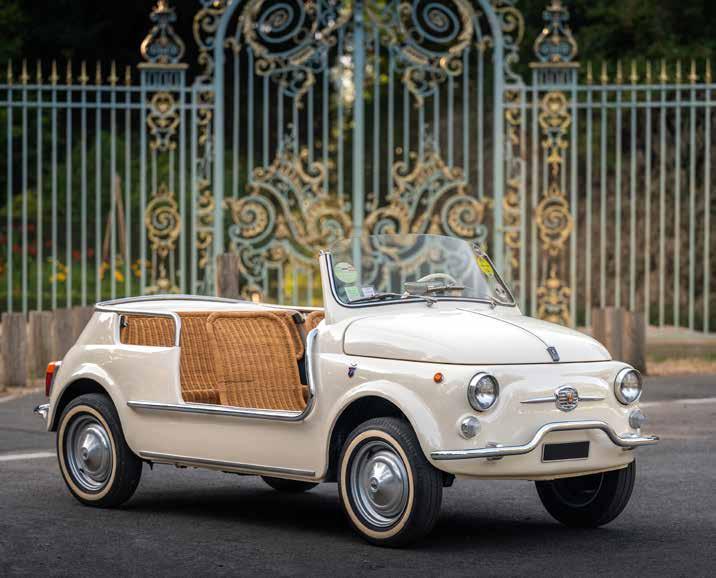
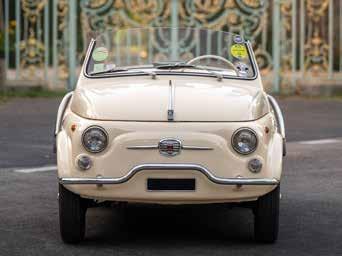
• Bullet points
• Delivered new in France
• Bullet points
• Ex-L'Oréal family
• Bullet points
• Rare, certified authenticity
• Bullet points
• Bullet points
• Matching coachwork, engine and chassis numbers
• Restoration file and presentation book available
An object of pure luxury, created for the jet set, the Fiat 500 Jolly occupied a market segment all its own: beach cars. This type of automobile, created by Ghia at Fiat's request with the 600 in 1958, found its best self in the Nuova 500. Although it seems close to the standard version, in reality it was a real coachbuilder's car, the fruit of Gianni Agnelli's imagination, and handbuilt in the Carrozzeria Ghia atelier in Turin.
Elegantly converted into a cabriolet with neither doors nor roof, it was decked out with a canework interior, and adorned with a fine, canvas roof, with much more in common with a parasol than real protection from bad weather. A luxury object, the Jolly was sold for a king's ransom and reserved to the jet set. While Agnelli parked his on his yacht, the Agneta, others, like the US president Lyndon B Johnson, used theirs as golf carts. Famous Jolly owners included Princess Grace of Monaco, Elvis Presley, Aristotle Onassis, John Wayne. In total, between 500 and 650 models were produced by the Italian coachbuilder.
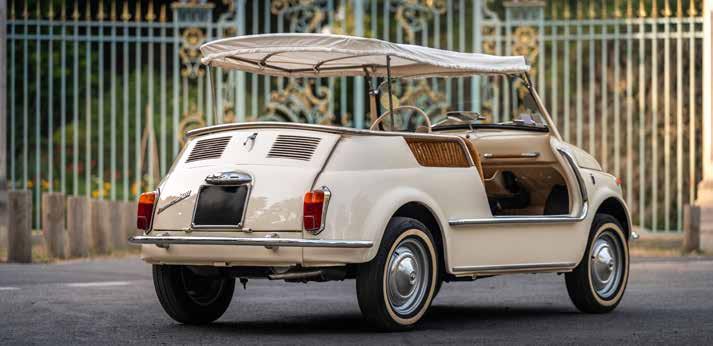

As for this model, it was delivered new in 1961 to Mrs Sophie Camplez Dalle, then wife of François Dalle, managing director of Groupe L'Oréal. Domiciled in Cannes, the 500 Jolly was used sparingly by its owners of the time, before being repainted blue between the late 1960s and early 1970s. Kept by Mrs Camplez Dalle until 1995, it later entered the collection of a fan of the marque, who exhibited it with the Fiat Fan Club France at various events, including Le Mans Classic and the Italian Festival at Montlhéry.
The current owner acquired the car in 2023. The Jolly, still in very good condition, having been driven a total of just 30,000 kilometres around the South of France, was in a rare condition, without the slightest trace of rust. As such, with the exception of its change of colour, the Jolly needed only a preservation restoration, rather than a total reconstruction. The exterior coachwork was thus stripped and the original Ghia ivory colour found under the blue paintwork was recreated using a spectrophotometer. The specific fittings and screws were renovated rather than replaced, the canework seats were completely refurbished to be identical to their original state, while the mechanical parts were more thoroughly overhauled, including a full refurbishment of the engine with rebalancing of all moving parts.
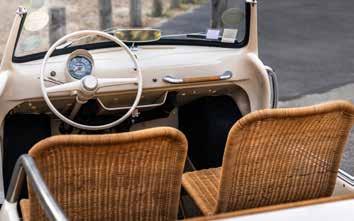
The engine compartments and matte black boot did not require restoration and remain in their original state, down to the coachwork numbers 2164 stencilled on the floors or engraved on the chrome fittings. Just as exceptional is the roof system with its original tubes, which have not even been restored.
Today in rare authentic condition, with all its original features and complete with its original set of accessories in their fabric case, this Fiat 500 Jolly Ghia has its matching numbers and will be sold with substantial documentation.
It comes with its French registration document, including the letters "CABR" for "cabriolet", copies of its previous registration documents, a statement from the Registro Fiat Italiano, a statement from the Fiat Fan Club France, a file and photo book of its restoration, as well as its original Uso e Manutenzione booklet.
It is probably one of the most authentic and best-preserved of the estimated 100 or so surviving models around the world, testament to the 1950s and 1960s and the much-celebrated Italian Dolce Vita! €100,000 - 140,000
Coachwork
by Carrozzeria Vignale
Chassis no. AM116/49*1924*
Engine no. AM116/49*1924*
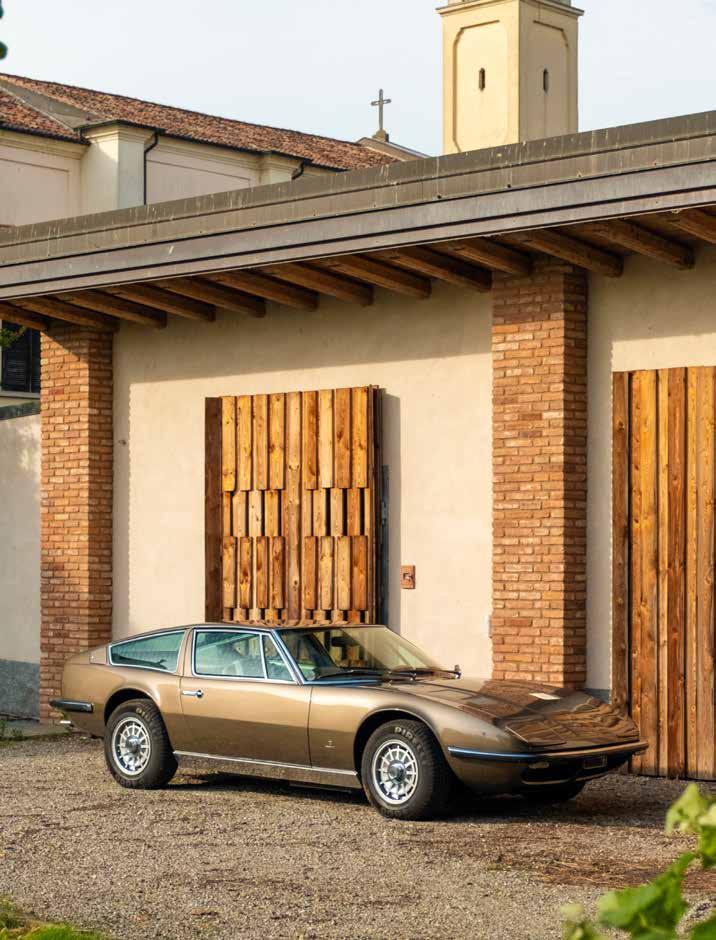
• One of only 300 '4900' models made
• Delivered new in Milan, Italy
• Known ownership history
• Present ownership since 2008
• Desirable ZF five-speed manual gearbox
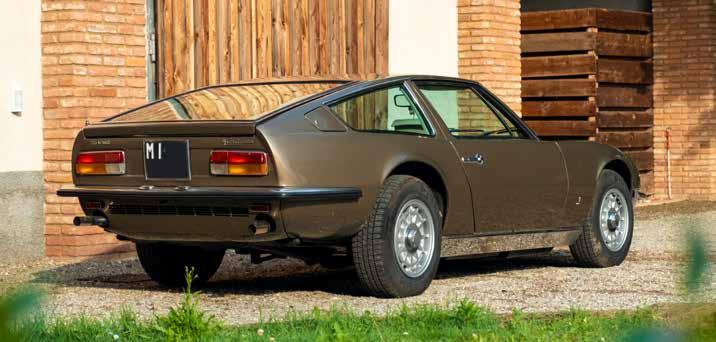
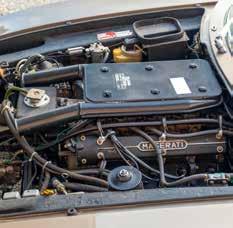

Maserati followed up its stunning, Ghia-styled Ghibli two-seater with the equally elegant Indy 2+2, though the latter, announced in 1968 and noteworthy as the first unitary construction Maserati, was the work of Carrozzeria Vignale. The Indy first appeared publicly on Vignale's stand at the 1968 Turin Motor Show and was officially launched by Maserati at the Geneva Salon in 1969.
Running gear was conventional, with independent front suspension, live rear axle and four-wheel disc brakes, while the power unit was - initiallythe Modena firm's well-tried, 4.1-litre, four-cam V8, with 4.7- and 4.9-litre versions following. With 260bhp on tap, the top speed of Maserati's luxury four-seater was in the region of 150mph, a figure the subsequent larger-engined versions improved upon. The sleek Vignale coachwork was so effective that the Indy was able to carry four people in relative comfort without impairing its performance as a sports car. In 4.9-litre form the Indy's claimed maximum increased to 320bhp, which pushed its top speed to 165mph (266km/h). Power steering and air conditioning were standard on the '4900' model, 300 of which were made between 1972 and 1975.
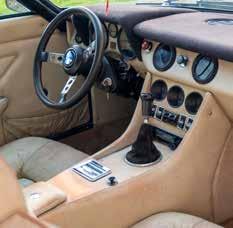
As confirmed by the Archivio Storico Maserati, this Indy with the most powerful engine variant left the factory in Modena on 15th May 1973 bound for its first owner in the province of Milan. The delightful colour combination was Marrone Colorado (metallic brown) with a contrasting 'bianco' (white) leather interior. The car remained in or near Milan with another owner from 1988 to 2002 before passing into the ownership of the official Ferrari and Maserati concessionaire Rosso Corsa in 2002.
Sold by Rosso Corsa to the preceding owner in 2004, the Indy became part of the vendor's collection in 2008. A few invoices from 2012 come with the car, and it presents nicely with a delightful patinated interior. Importantly, it is fitted with the desirable ZF five speed manual gearbox. Offered with Italian registration documents, sundry invoices and ASI certificate of identity.
€50,000 - 70,000
No Reserve
Chassis no. 4145
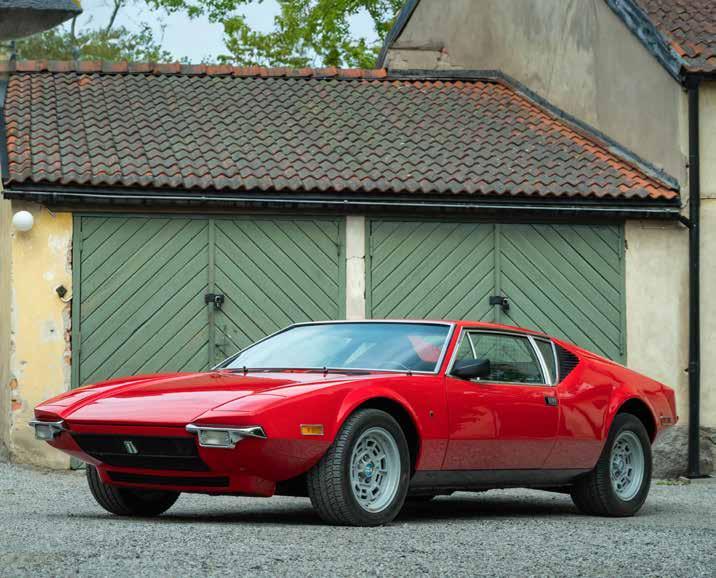
In 2007-8 this car's owner was searching for an early Pantera, checking every example offered for sale worldwide. Over the years many Panteras have been modified, renovated or upgraded, but he was looking for a 100% original, low mileage car, and during that time he found only two that matched his criteria, the one offered here being the best of them. Chassis number '4145' was for sale at PI Motorsports with 8,188 miles (13,176 kilometres) on the odometer.
According to PIM's advertisement: "We have been offering Panteras for sale for over a decade and we seldom find a car with less than 10,000 miles on it. We feel this is a unique opportunity for an enthusiast desirous of finding a stock car in superior condition. This is not a 'car in the barn' either, the current owner has driven the car and logged several thousand miles since he purchased it, although mostly on short drives. This car even smells new inside and the interior, other than the radio and a digital gauge, looks just like the original Pantera brochure. The engine and engine room is very tidy and well presented."
• Delivered new to the USA
• Present ownership in Sweden since 2007
• Highly original and unmolested
• Matching engine and gearbox
• Circa 8,950 miles recorded (14,402 kilometres) from new
Our vendor purchased this Pantera and had it shipped to Stockholm. The car came with a large number of documenting photographs (included) and since then has resided in his garage, being cared for and undertaking only a few outings on dry roads every year, adding only some 900 miles to the total.
Contacts with the former owner and PIM revealed that the car had been in a museum/private collection during the 1980s and '90s before being consigned to to PIM to be sold. The preceding owner bought the car and kept it in his workshop where he was working on drag racers. Upon purchasing the car he fitted the following new parts:
Radiator (original type)
Stronger drive shafts (originals with car)
After-market coil-over shock absorbers (originals with car)


After that he drove the Pantera for a few thousand miles, but mostly it sat in his workshop under a cover until it returned to PIM in 2007 to be sold (to our vendor). When the car arrived it was obvious that it had not moved for a while; the brakes were partly stuck and the carburettor was leaking. The vendor restored the brakes and brake hoses, and changed all fluids. The carburettor was restored also and verified to be an original item correct for the production year. The front and rear light lenses where changed to European specification (the American lenses come with the car). Since then the Pantera has passed the roadworthiness test every time.
At a later date, the anti-roll bar bushes were changed together with all front and rear suspension bushes, since the rubber had aged. Apart from that, regular checks and fluid changes have been carried out to keep the car in excellent driving condition. The paintwork has also been treated by a professional. (The paintwork was redone at some point, probably more than 25 years ago.) The air conditioning compressor is charged but not activated (the belt is disconnected). As one would expect of such a highly original car, the engine and gearbox are matching numbers.
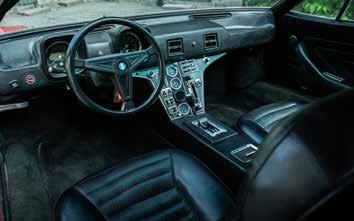
In addition to those listed above, items which are not original are as follows:
Left-side mirror (correct one included)
Digital temperature gauge (correct one included)
The original speedometer is in the car, fitted with an insert to change the reading to km/h. The mileage is still counted in American miles though, to keep track of the original distance covered. A European speedometer comes with the car but is not installed. The current recorded mileage is circa 8,950 (14,402 kilometres)
Accompanying paperwork includes Swedish registration papers; copies of the old American titles; various documents; instruction manual; etc. This quite exceptional Pantera also comes with two sets of original keys and a quantity of spares to assist with future maintenance.
€100,000 - 120,000
No Reserve
1981 FERRARI 512 BB
Chassis no. F102BB31359
Engine no. F102BB00000563
• One of only 929 512 BB models produced
• One of the most capable supercars of its era
• In the same ownership for over 30 years


Having reasserted itself at the top of the supercar hierarchy with the first 'Boxer' - the 365 GTB/4 BB - Ferrari went one better with its successor: the 512 BB. For the new Boxer, Ferrari abandoned its long-standing practice of denoting a model by the capacity of an individual cylinder and adopted the Dino-type nomenclature where '512' indicates 5 litres/12 cylinders. Displacement was increased by enlarging both bore and stroke, while in addition the compression ratio was raised and dry-sump lubrication adopted. The result of all these changes was a useful increase in torque which, coupled with revised gear ratios, made the 512 more tractable.
Changes to Pininfarina's inspired coachwork were, not surprisingly, few. The running gear likewise came in for only minor revision while the already excellent all-round ventilated disc brakes remained unchanged. Inside, the 512 remained virtually the same as before but for the welcome adoption of multi-way adjustable seats in place of the fixed originals. Road & Track magazine had achieved a speed of 175mph (280km/h) in the preceding 365 GT/4 BB, and although lack of road space prevented the discovery of their test 512's capability, Ferrari's claimed maximum of 188mph (302km/h) was felt entirely realistic.

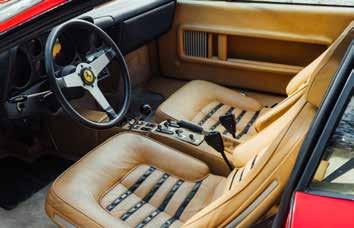
In 1981 the model was updated with Bosch fuel injection, becoming the 512 BBi. Once again, maximum power remained unchanged but there was more available at lower revs and torque increased still further. Possessing an engine directly related to Ferrari's contemporary Formula 1 unit, as well as being both lighter and faster than the legendary Daytona, the 512 BB was one of the most capable and exciting supercars of its era and is still capable of providing all the thrills that an enthusiastic owner-driver could wish for.
One of only 929 512 BB models produced by Ferrari, the example offered here is described by our vendor as in beautifully unrestored condition. Although the first owner was an American and the Ferrari remained in the USA for many years, it is believed it was built in European specification. The most recent owner had the car for almost 30 years in a large Ferrari collection and has taken very good care of it. The bodywork is said to be very nice, with neatly fitting panels and beautiful paintwork, around 75% of which is still believed to be original. The gaps are consistent everywhere, while the lighting lenses and other details such as rubber mouldings, mirrors, and windows are said to be in good condition.
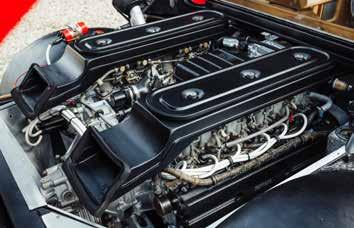
Boasting Daytona-style cognac-coloured leather seats, the original interior likewise is described as in good condition, possessing a lovely patina. The carpeting and door cards are said to be well preserved, as is the dashboard. Light brown dominates, with nostalgic black gauges with orange numbers and needles, and it is reported that everything functions properly, including the factory-fitted air conditioning.
In the vendor's own words: "Driving the Ferrari is simply fantastic, a sensation in fact. Everything about the car is in good condition, including the braking system and the suspension, providing a confident feeling when driving at higher speeds. As if you're strapped to the front of a rocket, the 512BB takes off with breathtaking acceleration. The sensation and experience of the power combined with the howling twelve-cylinder right behind the occupants are simply magnificent. The intake sound of the six Weber carburettors is phenomenal and is complemented by a fantastic exhaust sound. The steering responds to every minimal input you make, and the car instils incredible confidence. It's simply amazing what Ferrari managed to achieve almost 50 years ago." The car has a US title but the EU taxes have been paid.
€175,000 - 225,000
Eligible for the Mille Miglia
1928 ALFA ROMEO 6C 1500 SPIDER CORTO
Coachwork by James Young (see text)
Chassis no. 0110910
Engine no. 0110882
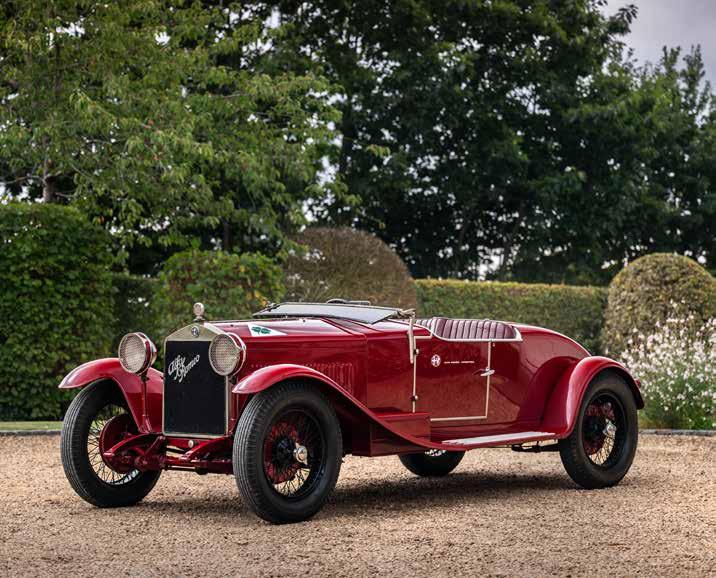
"The 1750, and for that matter the 1500... must be among the finest ever made both from the point of view of engineering and driver satisfaction."- Michael Frostick, Alfa-Romeo-Milano.
It was Enzo Ferrari, no less, who persuaded Vittorio Jano to leave FIAT's racing department and join him at Alfa Romeo. One of the most gifted and influential automobile engineers of all time, Jano would not only supervise Alfa Romeo's Grand Prix racing programme but also design its road cars. This happy state of affairs resulted in the latter emerging as some of the most exciting of their day, establishing the Milanese marque's reputation for producing sporting drivers' cars second to none.
Jano arrived at Alfa in 1923 and by the following year had produced one of the most fabulous racing automobiles of all time: the legendary P2. As well as bringing Alfa much valuable publicity by virtue of its outstanding Grand Prix successes, the P2 provided the basis for Jano's first production model. Announced in 1925 but not produced for another two years, the 6C 1500 was designed as a fast touring car combining light weight with sparkling performance. The latter was achieved courtesy of a 1,487cc inline six-cylinder engine based on the P2's straight eight and producing 44bhp in single-overhead-camshaft Normale form.
• Delivered new in Argentina
• Fitted with the great Vittorio Jano in-line 6
• Important history file
The cylinder head was non-detachable, being cast in one piece with the cylinder block, and a four-blade fan was driven from the front of the camshaft via a friction clutch. The crankshaft ran in five main bearings and also drove, via a cross-shaft, the water pump and dynamo. Two chassis lengths were offered: 4,052mm (wheelbase 3,100mm) for six- or seven-seater coachwork, or 3,822mm (wheelbase 2,900mm) for four-seaters.
Twin-overhead-camshaft Sport and supercharged Super Sport models followed, the latter being the first of its type to feature the classic open two-seater coachwork by Zagato that is forever associated with sporting Vintage-era Alfas. The 1500's competition career, aided by its mechanical longevity, extended far beyond its production, which ceased in 1929 on the arrival of the 6C 1750.
This Alfa Romeo 1500 is a rare model with a short chassis, number 0110910, and appears to have been ordered by Juan A. Roccatagliata (Concesionario Exclusivo para la Argentina & Uruguay) according to an invoice available in the file. We are unfortunately unable to confirm that it relates to this car. It was then purchased new in 1928 by one Mr Pertoni, in Argentina. We then pick up its trail, still in Argentina, during the 1970s, in the hands of Cacho Pieres, president of the CAC (Club de Automóviles Clásicos).
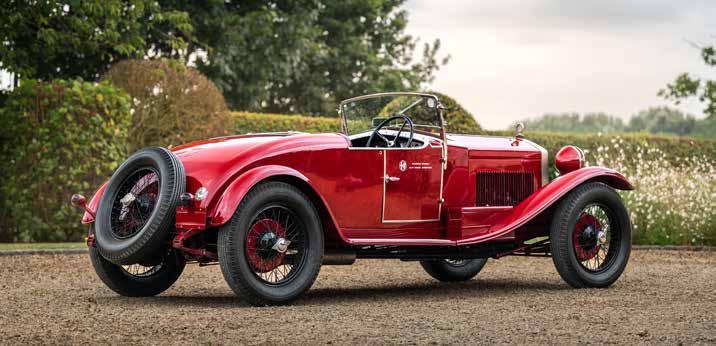
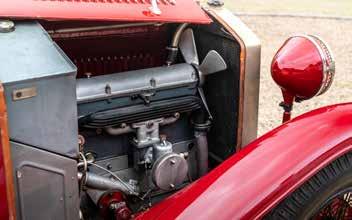
It was during this period that the coachwork was modified, keeping the original front portion, but opting for a sportier rear, coupled with a dickey seat. In 1996, it was acquired by Albrecht Guggisberg, who imported it to Europe, before it passed into the hands of Henri Lalanne, the well-known Bugatti collector. The latter then apparently passed it on to Pur Sang Argentina in exchange for another car, in order for it to be used as the model for the South American artisan's creations. It was in fact Cristian Bertschi, a pre-war Alfa Romeo specialist from the South American automobile scene, who came across it in around 2006 in the Pur Sang atelier, partially dismantled but complete and in good condition. On 27 January 2009, Pur Sang sold it and it was registered on 6 July 2010 to Pablo Marcelo Villanueva. Thus, in October 2011, the car was exhibited at AutoClásica San Isidro, in Buenos Aires. On 28 September 2012, Mr Villanueva sold the Alfa Romeo to Alberto Mieres, a relative of the Formula 1 driver Roberto Mieres, who completed some cosmetic work before taking part in the Club Automóviles Clásicos Desafío Vintage on 9 July 2015.
It was in 2017 that the 6C was imported to Europe, more precisely to Trieste, where it took part, still in the hands of Alberto Mieres, in various local rallies. Mieres eventually parted with the car in 2018, selling it to Dutch specialist, The Houtkamp Collection. It was from the latter that the current owner acquired the 6C.

Today, the car bears the elegant but sporty coachwork of a roadster with a fold-down windscreen, in the style of James Young. It is fitted with engine 0110882, which, according to what is known of the car's history, was installed by Mr Pieres in the early 1970s. The engine is fitted with an S.U. carburettor, but the car is sold with a spare standard Zenith carburettor. Most of the numbers cast on the car's various parts appear to match Alfa Romeo's original fonts: 000110910 on the rear of the chassis, 60-0110882 on the rear left engine mount, 0120869 on the clutch housing, 882 on the bonnet frame, 015891 on the steering casing, 0160001 on the front axle, NR12781 on the gear stick mount. Lastly, and to improve its ease of use, this 6C was also fitted with a modern electric starter.
This is a rare opportunity to acquire one of the milestones of Italian automobile history, a real short-chassis 6C from 1928, eligible for many races, notably the Mille Miglia. It will be sold with a file of historical documentation, its FIVA identity card, its European customs clearance documents, and its Argentinean registration documents.
€170,000 - 230,000
One of only 455 built
Chassis no. 7703
• Highly desirable Series 2 single-headlight example
• Delivered new to Belgium
• Just under 27,000 kilometres recorded
• Original and largely unrestored
• Extensive documentation and manuals
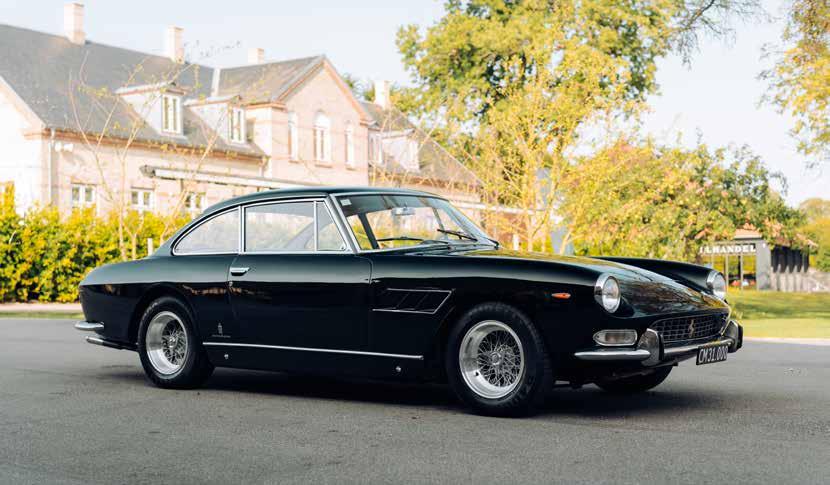
"Coming out of corners the combined action of the ZF limitedslip differential and the ample contact area of the tyres allows you to accelerate much earlier and with more gusto, and this without affecting the chosen line through the bend. Because of this, the 330 GT is blessed with exceptional speed on twisty roads and on coming out of corners it leaps forward like a rocket, leaving behind two thick black tyre marks." – Sporting Motorist, 1964.
By the end of the 1950s, the market for sports cars with 'family accommodation' had grown sufficiently for Ferrari to contemplate the introduction of a four-seater model. Introduced in the summer of 1960, the first such Ferrari - the 250 GTE 2+2 - was based on the highly successful 250 GT. Pininfarina's brief had been to produce a 2+2 without sacrificing the 250's elegant good looks or sporting characteristics, and Italy's foremost carrozzeria succeeded brilliantly, moving the engine, gearbox, and steering gear forward and the fuel tank back, thus creating sufficient room for two occasional rear seats.
The 250 GTE provided the basis for its replacement: the 330 GT 2+2 introduced in January 1964. Pininfarina was once again entrusted with the styling, adopting of a four-headlamp frontal treatment that reflected the tastes of Ferrari's most important export market, the USA.
The 330 GT's tubular chassis was 50mm longer in the wheelbase than before, which made conditions less cramped for the rear passengers. Suspension was independent at the front by wishbones and coil springs, while at the back there was a live axle/semi-elliptic set-up. Improvements to the discs-all-round braking system saw separate hydraulic circuits adopted for front and rear. Nevertheless, and as may be deduced from Sporting Motorist's comments above, Ferrari had not lost sight of the requirement to offered the ultimate driving experience, despite the increase in bulk necessitated by the 330 GT's additional accommodation.
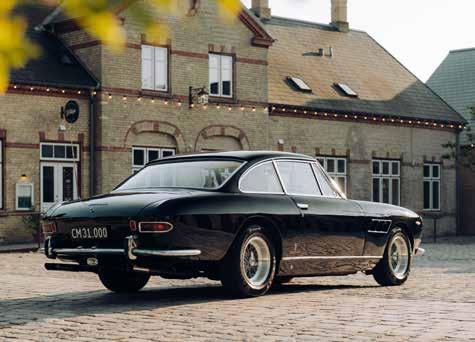
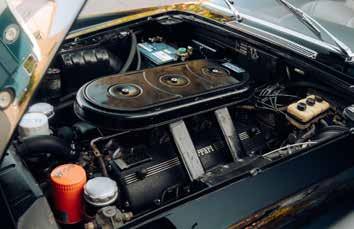
The 330 GT's Colombo-type, 60-degree, V12 engine had first appeared in the 330 America (effectively a big-bore 250 GTE 2+2) in 1963. Displacing 3,967cc, the single-overhead-camshaft, all-alloy unit was good for 300-plus horsepower, an output sufficient to propel the 330 GT to a maximum velocity of 152mph (245km/h) making it, when introduced, the fastest road-going Ferrari. Equipped at first with a four-speeds-plus-overdrive gearbox, the 330 GT gained a five-speed transmission in mid-1965 and later that year had its four-headlight front end replaced by a two-lamp arrangement, these later cars being known as the 'Series 2'.
In total, Ferrari produced 1,080 examples of the 330 GT, of which only 455 were built to the desirable Series 2 specification, making this example exceptionally rare. The Series 2 model was unveiled for the first time at the Brussels Motor Show in 1964, and chassis number '7703' was delivered new to the official Belgian Ferrari importer, S.A. Garage Francorchamps in Brussels. Finished in its striking original combination of Nero with Beige Connolly leather interior, this car represents both a rare and historically significant example of Ferrari's Gran Turismo lineage.
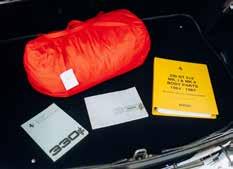
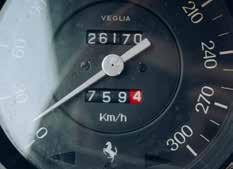
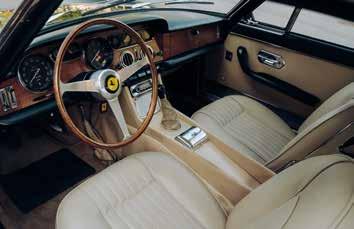
Originally supplied to a Mr Von Rudgisch, the Ferrari passed in 1971 to Frenchman Francesco Erriquez, who was followed in 2008 by Stefano Umberto Albarosa of Bucharest, Romania. In 2012, the car was acquired by Marilena Pop, also of Romania, before returning to Belgium in 2021 where it was sold to our vendor, who subsequently imported the Ferrari into Denmark and registered it on Historic license plates.
This highly desirable single-headlight Series 2 330 GT 2+2 is presented today in largely unrestored and exceptionally original condition. It retains its elegant interior and classic Borrani wire wheels, with the cabin exuding the charming patina of six decades of use, beautifully showcasing the quality of its original materials. In 1982 the car had a well documented engine rebuild from Ferrari Maranello S.P.A. Having covered just under 27,000 kilometres recorded (according to its service history), the car comes complete with extensive documentation and manuals, reflecting its full and verified ownership.
Regularly enjoyed over the years, the car remains delightful to drive, according to the owner it features largely unrestored bodywork and its original panels, though it would benefit from an engine inspection, offering the next owner an opportunity to further improve this rare and collectible Ferrari.
€230,000 - 260,000
Chassis no. 8436
Engine no. 40623

"Carrozzeria Bertone unveiled one of its motor show sensations at the 1967 Geneva event, the Marzal. This dramatic concept car was seen as an approach to a four-seat Lamborghini... and it turned out to be a forerunner of the Espada, a genuine four-seater and a distinctive 1960s supercar." – David Hodges, Lamborghini – The Legend.
Ferruccio Lamborghini's first production car, the Touring-styled 350 GT, had debuted at the 1964 Geneva Motor Show. The work of two of Italy's most illustrious automobile engineers, the 350 GT featured a glorious 3.5-litre, four-cam V12 designed by Giotto Bizzarrini, housed in a chassis penned by Gianpaolo Dallara. The 350 GT's four camshafts and all-independent suspension meant that it upstaged the best that Ferrari offered at the time; but to compete with his Maranello rival's larger models Lamborghini needed a nominal four-seater, and the 4.0-litre 400 GT 2+2 duly appeared in 1966. Despite its novice status as an automobile manufacturer, Lamborghini had quickly dispelled any lingering doubts about its ability to compete with the world's best Gran Turismos.
• One of 575 Series II Espadas built
• Delivered new via Lamborghini GB
• In Italy since 2006
• Present ownership since circa 2012
• Professionally restored in Italy 2012-2016
• Registered in Italy
Named after a matador's sword and unveiled at the 1968 Geneva Motor Show, the Espada was styled by Bertone's Marcello Gandinicreator of the incomparable Miura - along lines similar to those of the stillborn, rear-engined, six-cylinder Marzal but carried its 4.0-litre, fourcam V12 up front. The latter - first seen in the 400 GT and used also by the contemporary Islero - produced 325bhp, an output sufficient to propel the distinctive coupé to 150mph. Islero running gear was employed but wedded to a platform-type, semi-monocoque chassis rather than the former's tubular frame.
Introduced in January 1970, the Series II cars came with an extra 25bhp, 155mph (249km/h) top speed, an improved dashboard layout, and the option of power assisted steering. The dashboard was revised yet again in late 1972 for the Series III, which also incorporated power steering as standard, up-rated brakes, minor suspension improvements, and a restyled front grille.
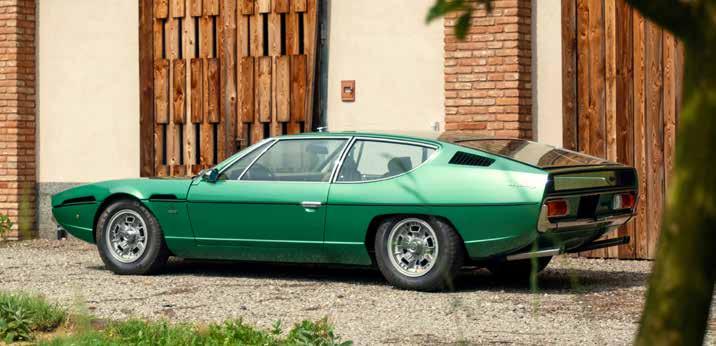

Espada production ceased in 1978 after 1,217 of these imposing cars had been built, of which 575 were Series II examples. Even today there are few cars that can match the on-road presence of the Espada.
According to data supplied by the International Lamborghini Registry, this stunning Espada was originally finished in Verde Pallido with a Verde Scuro leather interior and delivered to its first owner via Lamborghini GB on 10th August 1971. The body number was (and is) 'X750X0529X'.
Little is known about the car's subsequent history before it was purchased by our vendor circa 2012. The car had been in Italy since 2006. Upon his purchase, the vendor embarked on a thorough restoration, entrusting the body to a specialist in Northern Italy.
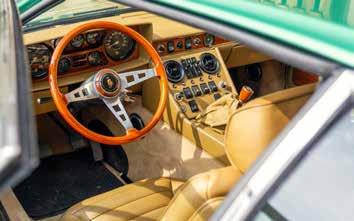
A handwritten receipt lists the work done, which included stripping the body back to bare metal; replacing corroded body panels where necessary; replacing suspension and brake parts; overhauling the engine, including the carburettors; and fitting a new clutch.
The car was then repainted and the interior expertly reupholstered with new leather. The work was undertaken between circa 2012 and 2014, and the Espada was then awarded the ASI Certificato d'Identita with Grade Tipo A, Gruppo 3: the correct classification for a car restored to original condition without any major deviations from correct factory specification. In addition to the aforementioned receipt and ASI certificate, the car also comes with Italian registration documents. Having seen regular but sparing use since restoration, this stunning Lamborghini Espada presents beautifully and is worthy of the closest inspection.
€140,000 - 180,000
Chassis no. WDB1860141360/53
Engine no. 01337/52
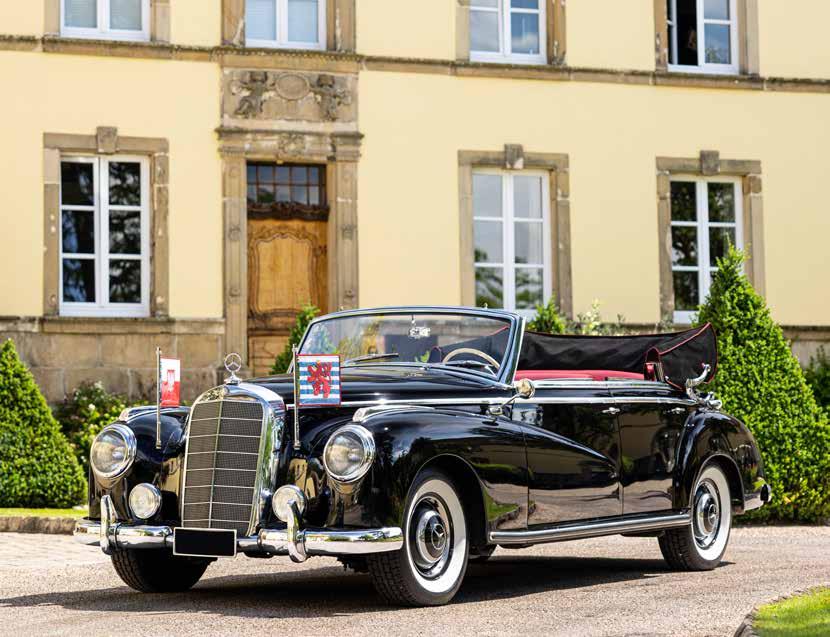
One of Mercedes-Benz's first all-new designs of the post-war era, the 300 saloon debuted in 1951 and would succeed in re-establishing the Stuttgart firm in the front rank of prestige motor manufacturers, marking as it did a return to the marque's tradition of building highperformance luxury automobiles of the finest quality.
Technologically advanced, the 300 featured independent suspension all round, four-wheel drum brakes, hypoid bevel final drive, dynamically balanced wheels, and remote electrical control of the rear suspension ride height. Initially developing 115bhp, the 3.0-litre, overhead-camshaft, six-cylinder engine was also used in the 300 SL sports car. The cylinder head was made of aluminium and crankshaft of forged steel. A special oil cooler was fitted and, when the engine was cold, additional cylinder lubrification was provided to protect the engine.
• One of only 181 Mercedes-Benz 300a Cabriolet D models built in 1953
• Professionally restored between 2003 and 2010 (photographic record available)
• Present ownership since 2010
• Registered in Luxembourg
Custom built by Mercedes-Benz's most experienced craftsmen, the 300 was luxuriously appointed and trimmed with materials of the highest quality. Fast and elegant, it was one of very few contemporary vehicles capable of carrying six passengers in comfort at sustained high speeds.
It was the car of choice among West German government officials and widely favoured by businessmen, financiers and politicians. Indeed, 'Adenauer' became its unofficial model name, after German Chancellor Dr Konrad Adenauer, its most famous customer, who is said to have had six ot them between 1949 and 1963.
The original 300 (a) was also available in four-door Cabriolet D form from March 1952, having commenced pre-series production in April 1951. One of the world's most expensive and exclusive automobiles at the time of its introduction, the Cabriolet D cost DM23,700, DM3,800 more than the saloon.

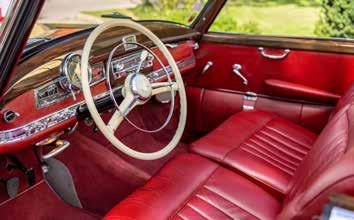
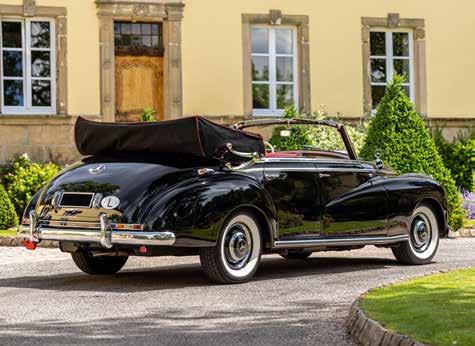
One of only 181 built in 1953, this 300a Cabriolet D left the factory on 6th August 1953, delivered to the Mercedes-Benz dealership in Berlin-Charlottenburg. The car remained 'off the radar' until 2000 when it emerged at a classic car dealership in Eupen, Belgium. In 2003 the Mercedes was taken over by a local German 300 specialist, who restored it to original condition between 2003 and 2010 when it was acquired by the current owner (see purchase invoice in the file). It was at this point that the ageing engine was replaced by a comprehensively restored engine.
According to the car's history, and although we cannot certify this, it would appear that the Mercedes belonged to the Polish government, which would explain the presence of flag carriers, special Polish number plates accompanying the car and various items of equipment more luxurious than standard). Electric power steering was fitted later. A detailed photographic record of the restoration is available.
Since its complete restoration the car has covered 40,995 kilometres and been serviced by Mercedes/Merbag Luxembourg and by two experienced independent specialists (see invoices on file).
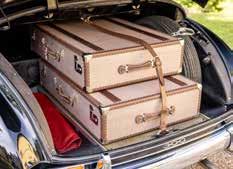
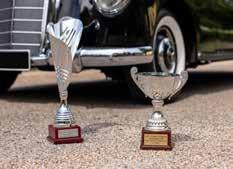
While in the vendor's care the Mercedes has taken part in numerous elegance competitions in Germany and has won the following prizes, among others, 2nd prize at the Oldtimermeeting at Baden-Baden in 2010 and 2011; the Meguiar's Allemagne prize at Baden-Baden in 2013; and the Dekra Automobile prize at Baden-Baden in 2014.
The car comes with the following items: original spare parts catalogue, reprint of the owner's manual, original advertising, original Polish number plates, Luxembourg and Polish flags, file of documents about the car from the local and international press, tailor-made luggage, tool kit, spare wheel, Luxembourg registration papers. Finally it should be noted that the car is equipped with an electric power steering, a reversing camera and a MP3 player connected to Becker Nürburg radio. The car comes with its technical inspection valid until 24th October 2026.
€130,000 - 160,000
No Reserve
Rare Royal Purple livery – fitted with a 2.2S engine
1973 PORSCHE 911 2.4 T / 2.2 S TARGA
Chassis no. 91135110602
Engine no. 6301568 (see text)
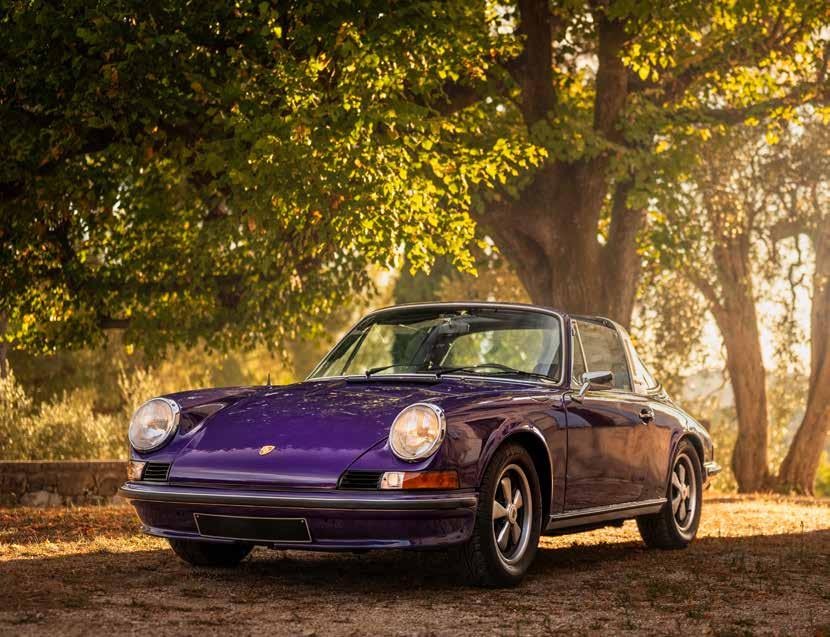
"Quite understandably, journalists got excited about the revised 911s. For many reasons, the 2.2-litre cars would be among the best Porsches ever made. Performance was more than adequate, all the 'bugs' had been eradicated, and genuine improvements had been made. Even the 'baby' 911T was capable of 206km/h, dashing from rest to 100km/h in under 9 seconds" – Lawrence Meredith, Porsche 911 Model by Model. Porsche's perennially popular 911 sports car first appeared at the 1963 Frankfurt Show as the '901', but shortly after production proper commenced in 1964 had become the '911' following Peugeot's complaints about the use of '0' model numbers.
In 1967 the 911T (Touring) was introduced as a new base model, initially with the 2.0-litre engine in 110bhp form before gaining the 2.2-litre unit along with the rest of the range in 1969, by which time the 911's wheelbase had been extended by 57mm to tame the sometimes wayward handling. Lately, the 911 was updated with a 2.4-litre engine, producing 130bhp. Two years after the original coupé's introduction, a convertible 911 - the 'Targa', named in honour of Porsche's numerous victories in the Sicilian classic Targa Florio - arrived in 1966. Expected US safety legislation had prompted an ingenious approach to the soft-top 911, the Targa sporting a hefty roll-over bar to protect the occupants in the event of an inversion, together with removable roof and rear hood sections, which were stowed in the boot when not in use.
• Delivered new in Europe
• Originally painted with Colour Code 341
• Numerous invoices on file
• Recent mechanical restoration
For 1969 a quieter and less leak-prone fixed rear window replaced the less than perfect rear hood, and the ever-popular Targa would continue in this form well into the 1990s, sharing countless mechanical and styling developments with its closed cousin along the way.
Easily recognisable with its well-known Fuchs alloy wheel rims, the S was equipped with a significantly overhauled engine, producing 158bhp, some 30 more than the basic version. Taken together, this allowed the 911 to reach speeds of 140mph. An extended wheelbase introduced in 1969 improved the 911's sometimes capricious manoeuvrability, then for the 1970 model, the engine's capacity was increased for the first time, to 2.2 litres. Henceforth, it produced 178bhp on the S versions, with Bosch mechanical injection.
This Porsche 911 Targa was delivered new in Europe, painted in the rare Royal Purple colour, code 341. Registered for the first time on 8th January 1973, it was later registered in the Allier département, in France, on 3rd April 1990, under the number 8999 RV 03. The current owner acquired the car in 2020. At that time, it was red. He decided to entrust its full restoration to Serge Incorvaia, a Porsche specialist, whose garage neighbours the Nevers Magny Cours Circuit.
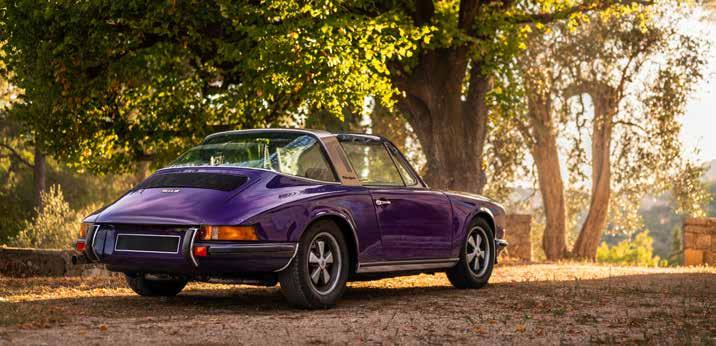


Intent on returning the car to its initial configuration, he decided to completely strip back the shell and return it to its appearance of the time, the rare and very original Royal Purple shade that leaves no one indifferent. As for the engine, impressed by the exceptional performances of the 2.2S injection engine for its generation, and as Serge Incorvaia had one available, despite its rarity, the owner made the bold decision to install it in the place of the original 2.4L carburettor engine, which was a lot less powerful.
And it was on this exceptional engine block, number 6301568, that the most substantial restoration was carried out. It was completely dismantled to be overhauled, and all new parts came from Porsche Sonauto. The cylinder heads were fitted with new valves and guides, while the injection pump was serviced at a Bosch centre. For the gearbox, a full service was also carried out, notably including new synchro rings and bearings, as well as a sealing kit. Lastly, the running gear was fully upgraded, with the installation of new silent blocks and shock absorbers.
The passenger compartment was also given a rejuvenation to finish off the renovations, which ran from 2020 to 2021.
All this work is illustrated in the photo file available with the car The result met the owner's expectations, and he made the most of it on the roads of the Côte d'Azur, where he has covered some 3,000 km since the restoration.
The 2.2S engine rages and roars. It makes the car an uncommon pleasure to drive, thanks to its power and its rapid acceleration. Combined with the very lightweight chassis, the driving sensations remain unparalleled, even today. In 2025, the car was entrusted to Asphalt Classics, a renowned specialist and fan of older Porsche models, for a major overhaul, engine setting and the fitting of four new tyres. At the same time, the headliner was restored, the dashboard replaced, and various cosmetic improvements were made to further refine this 911. Today, this 911 Targa has a timeless charm, in both its typically 1970s hue and the sharp, high-performance mechanics of its 2.2-litre injection engine! A real Porsche for those seeking pleasure and thrills, this car is ideal for tourist rallies or exhilarating drives!
It will be sold with various invoices and photos of its restoration, as well as with its French registration document.
€75,000 - 110,000
No Reserve
Chassis no. 300941
Engine no. 901096

A 'modern classic' if ever there was one, Porsche's long-running 911 sports car first appeared at the 1963 Frankfurt Show as the '901', but shortly after production proper commenced in 1964 had become the '911' following Peugeot's complaints about the use of '0' model numbers. The preceding Type 356's rear-engined layout was retained but the 911 switched to unitary construction for the body/chassis and dropped the 356's VW-based suspension in favour of a more modern McPherson strut and trailing arm arrangement. In its first incarnation, Porsche's single-overhead-camshaft, air-cooled, flat-six engine displaced 1,991cc and produced 130bhp; progressively enlarged and developed, it would eventually grow to more than 3.0 litres and, in turbo-charged form, put out well over 300 horsepower.
Chassis number '300941' is one of the early, short-wheelbase 911s much favoured by the Historic rallying fraternity, a situation that has led to unmodified examples such as this one becoming a great rarity and consequently much in demand. It belongs to the '0-Programme' series built from the start of production in August 1964 up to the introduction of the 'A-Programme' model in August 1967, and thus represents the Porsche 911 in its earliest and purest form.
• Early short-wheelbase model
• Optional five-speed gearbox
• Full black leather interior (a very rare option)
• Professionally restored 2,500 miles ago
• Registered in France
• Matching Numbers (Chassis and Engine)
Although a left-hand drive model, this Porsche 911 was delivered new on 20th April 1965 via the UK importer AFN Ltd to Mr. Irwin Edward Leventen in London. Chassis number '300941' left the factory finished in Light Ivory with the full black leather interior (a very rare and hardly ever seen option). The accompanying Porsche certificate shows that the car was delivered fitted with the desirable five-speed gearbox, tinted glass, headrests, Blaupunkt Köln radio, loudspeaker and antenna, Dunlop tyres and a Webasto heater. It has since been fitted with Weber carburettors. The original Solex carburettors and corresponding air filters are still in the possession of the current owner and will be supplied to the future owner.
This car's early history may be traced in the service book, which records several services between 1965 and 1967 in London, Fellbach, Stuttgart, Berlin and Rimini. The Porsche was then left in an underground car park in Paris for 17 years having travelled around 27,000 miles when taken off the road.
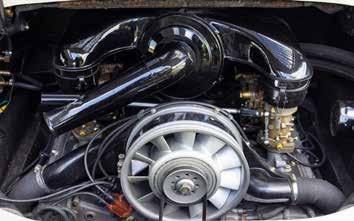
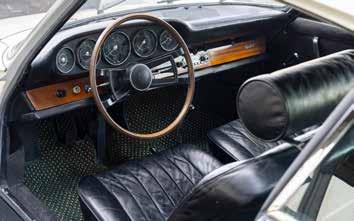
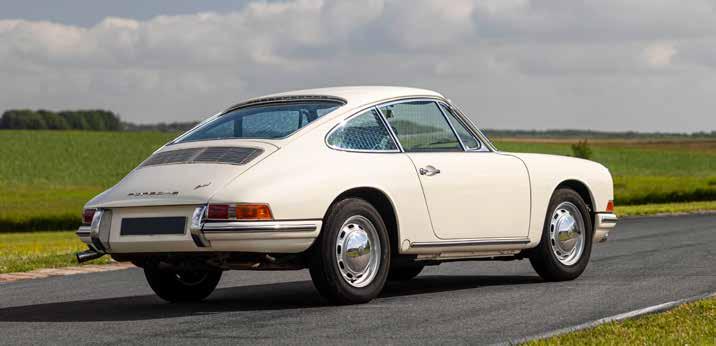
A mechanic in the south-west of France discovered and bought the car in 1984 before it was finally purchased by the current owner in 1986, when the odometer showed 34,000 miles. The long immobilization had stuck the piston rings and marked the cylinders, which were changed by Paris-based Porsche mechanic Michel Pailleux. In 1991 the Porsche participated in the 'International Meeting 356' at Harrogate, North Yorkshire, and by 2009 had travelled another 10,000 miles.
In 2012 the 911 was entrusted to the well-known Porsche specialist RSO Motorsport for an extensive restoration. The car was fully stripped and the right rocker panel and the two front wings replaced; the floors remain original. According to our vendor, the car was found to be exceptionally healthy. The engine was simply removed and cleaned, the carburettors adjusted (by B2H) and the distributor renewed. The brakes are new all around. It was decided to leave the nicely patinated interior and carpets in place as they were in very good original condition like the rest of the car.
The windscreen was changed but unfortunately it proved impossible to find a green-tinted example like the original. There are restoration bills on file totalling €29,000.
The Porsche has travelled a mere 2,500 miles since its restoration (the current odometer reading is 46,561 miles). The vendor advises us that the engine, transmission, chassis, body and paintwork are all in very good condition, while the engine is said to be smooth and powerful and the gearbox easy and precise. During our test drive, we noted that the car handled very well on both slow and fast stretches of road. The spare wheel is unused and the original Solex carburettors and their air filter are supplied with the car. Registered in France, this lovely early Porsche 911 comes with its certificate issued by Porsche France confirming that the car has matching chassis and engine numbers, maintenance booklet, jack, tool kit (non-original), car cover and a luggage rack to be fitted to the engine cover.
€130,000 - 160,000
by Karosserie Reutter
Engine no. 63 587
Gearbox no. 12155
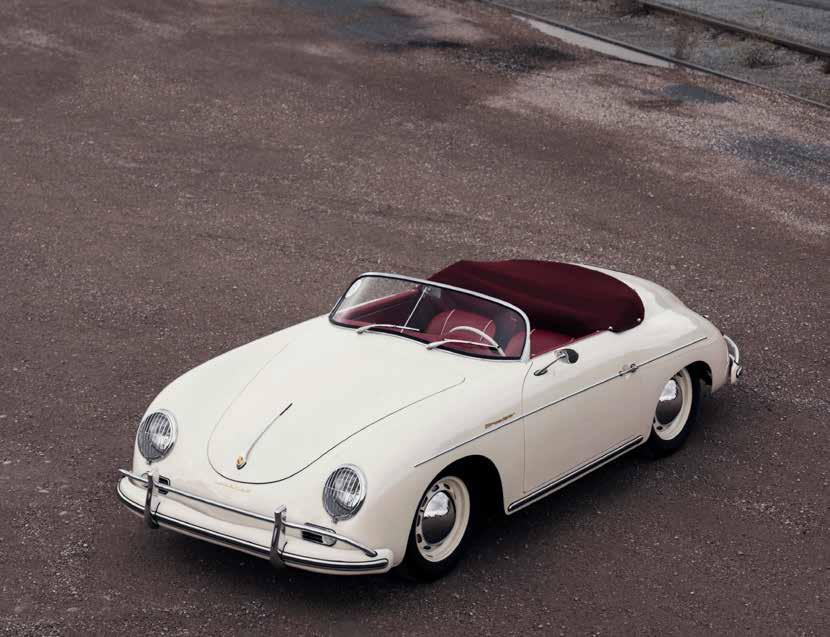
Its factory Kardex reveals that this Porsche 356A Speedster, chassis number '82782', was delivered on 26th November 1956 via Hoffman in New York, USA. The Porsche was delivered in Weiss (White) a with Rot (Red leatherette) interior, and left the factory equipped with sealed-beam headlights and US bumpers. The car retains fully matching numbers and colours.
• Delivered new in the USA
• In-period competition history
• Fully matching numbers and colours
• Restored in Poland by a recognised specialist in 2019 (bills and photographs available)
• Offered from an important Porsche collection in Poland
In 1952 a trial batch of 15 Type 356 roadsters was constructed at the behest of US importer Max Hoffman, who had persuaded Porsche of the potential for a 'cut-price' entry-level model. The roadsters' successful reception in the USA led to the introduction of the Speedster model in 1954.
Instantly recognisable by virtue of its low, wraparound (as opposed to V-shaped) windscreen; smaller and entirely retractable hood; lower door waistline; horizontal trim strip at the level of the door handles; and twin bucket seats, all of which served to emphasise its sporting image, the Speedster was effectively an 'economy' model intended to compete with the cheaper British sports cars.
The Speedster was powered initially by the 1.5-litre version of Porsche's horizontally opposed four, gaining the new 1.6-litre engine with the introduction of the improved 356A for 1955. Priced at $2,995, the Speedster was the lightest of the 356s, enjoying a commensurate performance boost that meant over 100mph was possible. Allied to its already renowned handling characteristics, this made the Speedster an instant success in the burgeoning North American sports car racing scene. Its combination of style, performance and value for money made the Speedster deservedly popular (4,822 examples being constructed between 1954 and '58) and today this most handsome of the 356 variants enjoys iconic status.
In California during the 1970s, the Speedster was serviced at Lukes & Shorman Inc (Bay Area Porsche specialists). The Porsche was restored in 1976 and its use in a local competitions is documented.
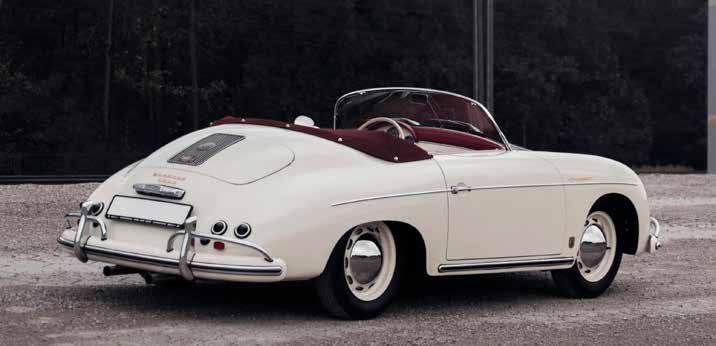
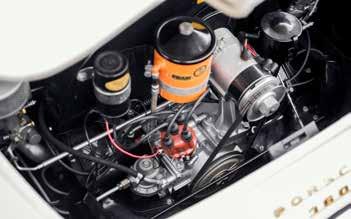
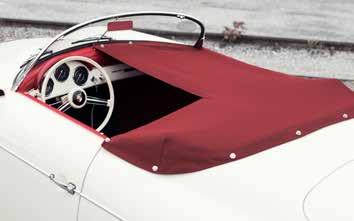
In April 1986, at 86,442 miles, a pre-purchase inspection was carried for Emile Ragoof of San Anselmo, CA (the report survives). In July 1986 at 86,938 miles, the Speedster was sold (see handwritten ownership note on file). In addition there are invoices dating from the 1980s and 1990s for regular servicing: shock absorbers, carburettor kits, braking system parts, etc.
In 2019 a comprehensive bare-metal restoration was carried out by Piotr Bem Classic Porsche Restoration (Poland). The rebuild included bodywork; a mechanical overhaul (engine, gearbox, suspension, brakes); electrical system; and a complete interior retrim. The restoration was carried out under a formal contract with staged invoices (Rozliczenie 1–8), which are on file together with Excel cost calculations and a full photographic record. The invoices document all stages of the restoration including disassembly, metalwork repairs, lead loading, paint, gearbox rebuild, brake and steering overhauls, upholstery, and final tuning. Overall restoration costs exceeded PLN 166,000 (US$44,820) plus parts, evidencing the scope and quality of the work.
Supporting documentation includes the following:
• Porsche Kardex
• US ownership and service notes
• Invoices from Lukes & Shorman and other Bay Area specialists
• 1986 pre-purchase inspection report
• Restoration contract, Rozliczenie 1-8 invoices, Excel cost summary
• Full photographic record of the 2019 restoration
Supported by the foregoing provenance, this fully matching Speedster
- boasting in-period competition history - has been treated to a lastnut-and-bolt restoration by a recognised Porsche 356 specialist and comes from one of the most important Porsche collections in Poland. Additional equipment offered consists of a driver's manual and tonneau cover.
€280,000 - 330,000
Chassis no. 111 027 12 002 266 Engine no. 116 980 12 001 983
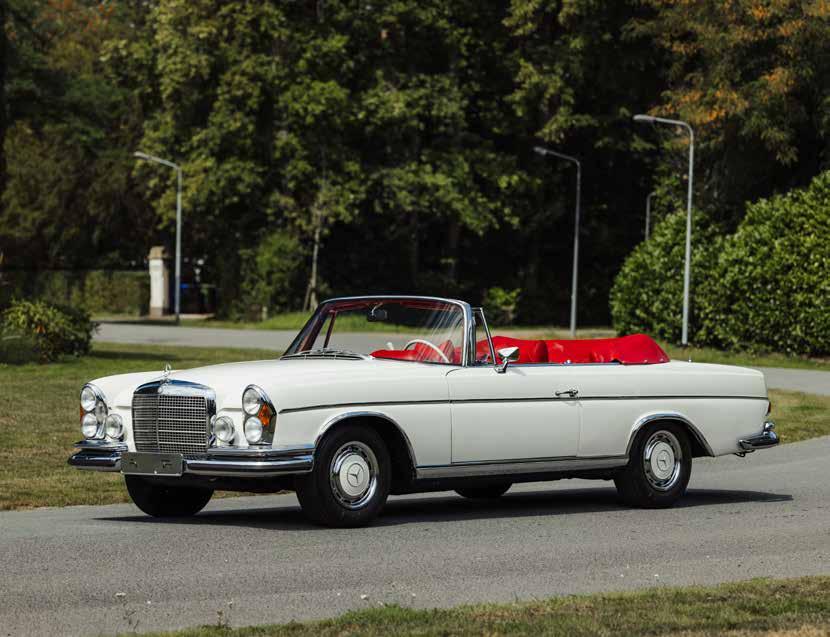
'Exclusive' is a much bandied-about word in the classic car world, but it is a most apt description of the Mercedes-Benz 280 SE 3.5. Why? Because at $13,500 in 1970 its price was not only $3,500 more than that of the equivalent Mercedes-Benz saloon but also more than double that of a Cadillac Deville Coupé! Commonplace it was not.
The 3.5-litre version of the 280 SE typifies the resurgence of largerengined Mercedes-Benz models that began in the late 1960s and early 1970s, when the progressive easing of fiscal constraints, which had dissuaded customers from buying cars with large capacity engines, encouraged the German manufacturer to offer bigger, more potent power units. Thus the ultra-luxurious 280 SE Coupé/Cabriolet and 300 SEL saloon were the models chosen by Mercedes-Benz to launch its magnificent new 3.5-litre V8 engine in September 1969. An over-square design featuring a cast-iron block and aluminium-alloy cylinder heads, each equipped with a single overhead camshaft, this all-new, state-ofthe-art power unit produced 200bhp courtesy of Bosch electronic fuel injection and transistorised ignition.
• Mercedes-Benz's flagship model
• Matching numbers (Chassis, Engine and Gearbox)
• Only two owners and 71,800 kilometres from new
• Unrestored and outstandingly original
• Fully documented from new; all invoices available
The new V8 engine had particularly smooth running characteristics and endowed the 280 SE 3.5s with performance superior to that of many out-and-out sports cars. Thus equipped, the Coupé/Cabriolet was good for 125mph (200km/h) with 60mph (97km/h) reachable in 9.5 seconds, a substantial improvement on the six-cylinder version's figures. As befitted top-of-the-range luxury models, the 280 SE 3.5 Coupé and Cabriolet came equipped with automatic transmission, power windows, and a stereo radio as standard.
Although the equivalent SEL saloon used the 'New Generation' bodyshell, the 280 SE Coupé and Cabriolet kept the elegant coachwork that had debuted back in 1960/1961 on the 220 SE. Nevertheless, there had been some refinements made: the radiator shell was lower and wider, with a correspondingly flatter front end to the bonnet, a characteristic that has led to enthusiasts referring to these face-lifted cars as 'flat radiator' models, while the bumpers were now fitted with rubber strips.


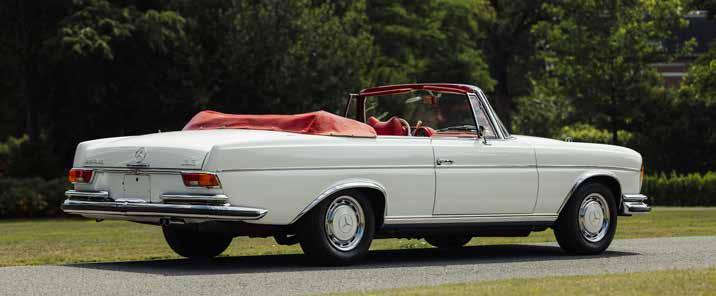
Significantly, the 280 SE 3.5 was to be the final model featuring this longestablished and much admired body style. It was truly Mercedes-Benz's flagship model, representing status, luxury, and reliability. Only 1,232 Cabriolets were built, and today these last-of-the-line classics are highly sought after by discerning Mercedes-Benz collectors.
Offered with every single piece of paperwork accumulated since it left the Stuttgart factory on 21st August 1970, together with its original instruction manuals, this is without question one of the most fully documented cars Bonhams Cars has ever seen, and prospective purchasers should not miss the opportunity to inspect its exceptionally comprehensive history. A European car from new, this Mercedes-Benz 280 SE 3.5 Cabriolet was delivered new to Hamburg and remained in that city until 2025, enjoying only two owners in all that time while covering a relatively low 71,800 kilometres, which is believed to be correct.
There is a list of the owners on file. The accompanying Mercedes-Benz Ausstattung reveals that this car was originally finished in white with a light red leather interior, and that it left the factory equipped with individual seats, seatbelts, fog lamps, halogen lighting, and a dark blue convertible hood. The leather of the interior and the carpets are in original, unrestored and very good condition.
According to our vendor, the Mercedes is highly original, unmolested and in beautiful condition and believed to be accident free - while benefiting from a new soft-top. Its most recent service was carried out in 2024 and the car is said to be 'on the button'.
A rare and powerful four-seat open tourer, in a delightful colour scheme, this top-of-the-range Mercedes-Benz 280 SE 3.5 Cabriolet is one of the finest currently available. Comes with a German registration.’
€260,000 - 280,000
Coachwork by ....
Coachwork by Carrozzeria Touring
Chassis no. XXX
Engine no. XXX
Chassis no. AR1900C 01445
• Bullet points
• Bullet points
• Very desirable Alfa Romeo model
• Bullet points
• One of only three right-hand drive examples
• Bullet points
• Some 16 years in current Belgian ownership
• Bullet points
• Offered from an important private collection
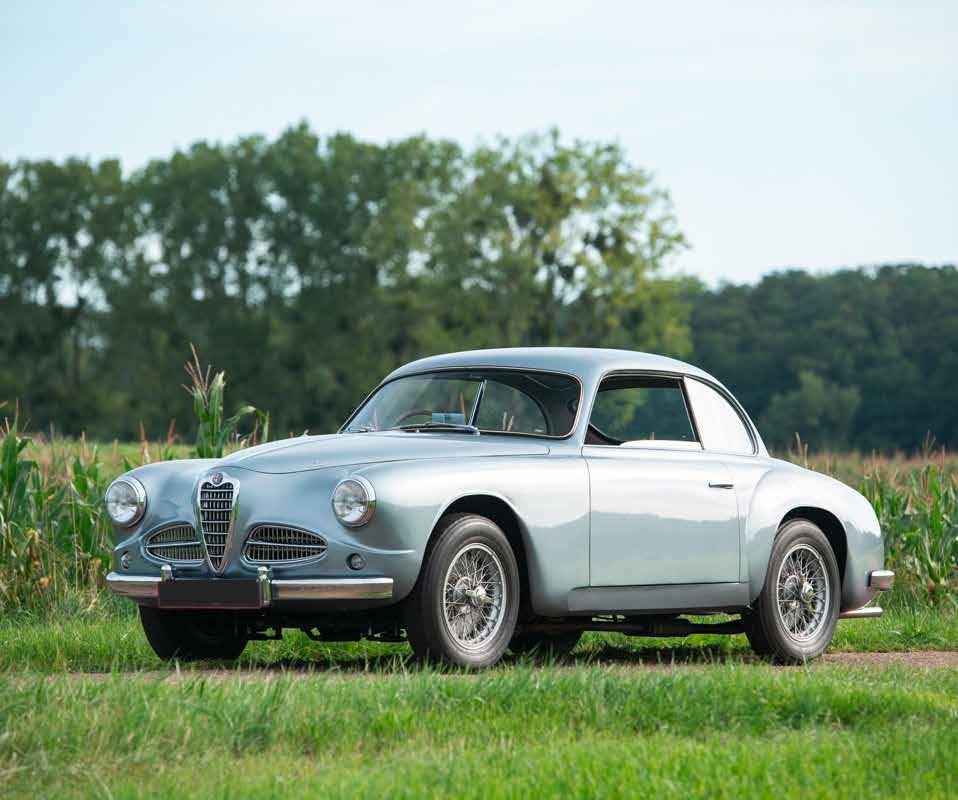

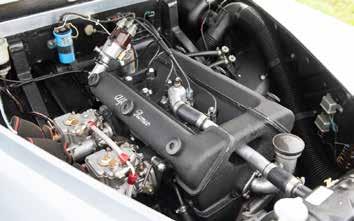
The Alfa Romeo 1900C Super Sprint was designed and assembled by Carrozzeria Touring using its iconic Superleggera (Superlight) method of body construction, which employed a framework of small-diameter steel tubes to support the aluminium body panels. Cars built using this method typically featured Touring's 'Superleggera' badges on the bodywork,
Manufactured in 1953 and sold in November that same year, this beautiful example is one of approximately 650 1st Series Sprint coupés bodied by Touring. Sold new in Piemonte, Italy, it is one of only three original right-hand drive models and has the desirable floor-mounted gear shift, making it exceedingly rare. In the past the car has benefited from a thorough restoration including a full mechanical overhaul by Church Green Engineering in the UK, now trading as Leither Motor Company (all invoices present). The restoration was monitored by Mr Peter Marshall'the Alfa 1900 guru' – from start to finish.
Powered by a 1.9-litre twin-cam four coupled to a four-speed manual gearbox, the Alfa is described as driving and performing very well, running smoothly and a real pleasure to drive. Mechanically and cosmetically the car is presented in very good condition; the aluminium body is also very good, boasting straight panels with only insignificant blemishes and with a charming patina throughout.
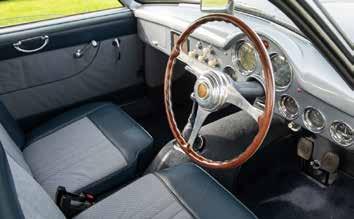
This car is not a matching-numbers example but has the correct engine type and non-standard twin Weber carburettors. This Italian beauty impresses with its lovely colour scheme: the silver exterior is a classically elegant colour which is perfectly complemented by the blue leather/fabric seating.
In the 1970s the Alfa was sold to a gentleman in the UK, who had the car restored completely to the highest standards. Due to his age he sold the car in 2009, and since then it has formed part of the owner's important classic car collection in Belgium. Over the last 16 years in Belgium the car has enjoyed regular maintenance and servicing, affording its owner much joy and driving pleasure. Belgian registered and on Belgian number plates, the Alfa is ready to show or tour.
The Alfa has participated in several rallies and events and has been a prize-winner on several occasions. The current owner too has participated in many rallies in it, driving yearly to Goodwood and taking part in many other classic car events. The car is very well documented and comes with extensive history, old invoices, and numerous files and documents. Well known to the Alfa Romeo Club and the Alfa Romeo 1900 Register, this is a well sorted example ready for a new adventure with its fortunate next custodian.
€125,000 - 150,000
One owner from new 2017 ASTON MARTIN DB11 COUPÉ
Chassis no. SCFRMFAV8HGL02360
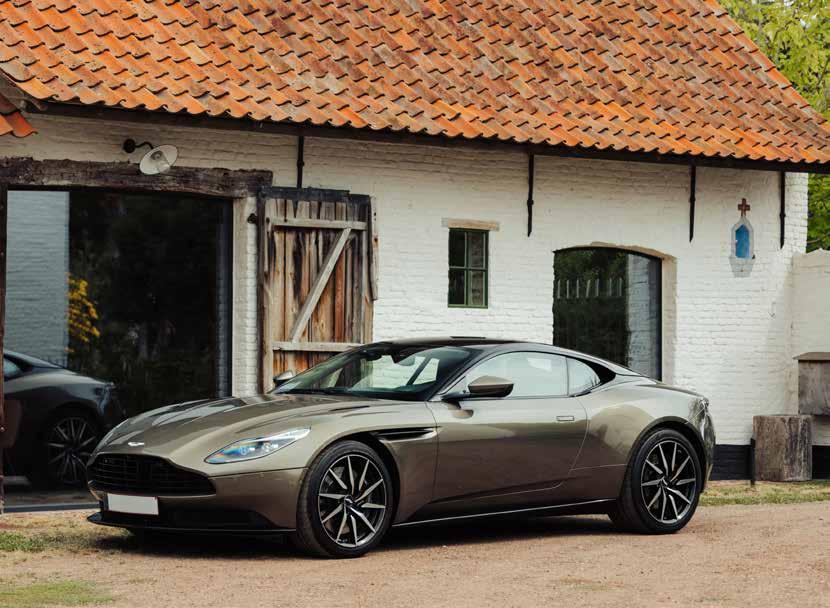

• Delivered new to Belgium
• Extremely well specified
• 5.2-litre twin-turbo V12 engine
• Automatic transmission
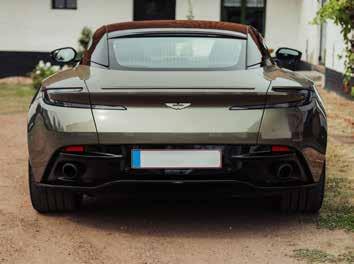
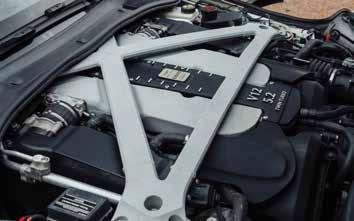

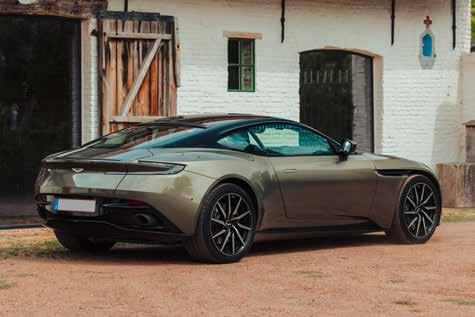
Succeeding the DB9, Aston Martin's DB11 Gran Turismo made its public debut at the Geneva Motor Show in 2016, Top Gear's Jack Rix remarking that the newcomer represented "a solid start to a future portfolio that will be studded with flashier and faster members than this, but none that are quite so suited to being enjoyed every day, wherever you're heading". Manufacture began at Aston Martin's factory at Gaydon, Warwickshire in September 2016, with each hand-built DB11 taking some 250 Hours to complete. In 2017 the Marek Reichman-designed DB11 won the Golden Steering Wheel award for the most beautiful car of that year. A convertible Volante model followed in October 2017.
Like its predecessor and other contemporary Aston Martins, principally the Vantage and DBS Superleggera, the DB11 made extensive use of aluminium in its structure, and like the Vantage was available with a choice of two different engines: in the DB11's case a 4.0-litre V8 sourced from Mercedes-AMG or Aston Martin's own 5.2-litre V12. In either case the transmission was a ZF eight-speed automatic built into the rear transaxle. As one would expect of a modern supercar, there is coil-sprung double wishbone suspension all round. Three different drive modes were available: Normal (for everyday driving), Sport (offering enhanced feedback), and Sport+, which speaks for itself.
Sophisticated aerodynamics are a feature of modern supercars, whose maximum velocity exceeds the take-off speed of many light aircraft, with increasing ingenuity applied to managing underbody airflow to increase downforce. In the DB11's case this is done by means of a flat underbody with a rear diffuser and sizeable front splitter, minimising lift.

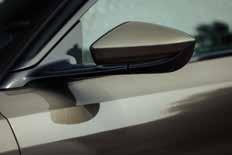
The DB11 also features a so-called AeroBlade, which captures highspeed air at the C-pillars and channels it through ducts under the bodywork, exiting through slots in the boot lid. This system effectively functions as a large rear spoiler, reducing drag without recourse to such a device. An extendable active spoiler enhances the AeroBlade's efficiency at high speeds.
According to Top Gear: "Indeed, it's still layered in finely stitched leather inside, still has back seats, and still feels most in its comfort zone when you relax, at which point the V12 whispers eerily in the background... "Not perfect, but the DB11 straddles the worlds of sports cars and GTs in a deeply classy way."
Finished in Arden Green with Osidian Black interior, the DB11 we offer has the 5.2-litre twin-turbo V12 engine producing 600bhp. Delivered new in Belgium via Aston Martin Antwerp, the car comes with a copy of its Aston Martin order form dated 5th December 2016 listing its specifications and the numerous options specified.
Currently displaying a total of 71,002 kilometres on the odometer, this supremely elegant Aston Martin Gran Turismo comes with an EC Certificate of Conformity; two Aston Martin service invoices (2023, 2024); and the aforementioned order form. It comes with a Belgium registration documents.
€100,000 - 120,000
No Reserve
Chassis no. WP0ZZZ99ZTS330632
Engine no. 63T02718

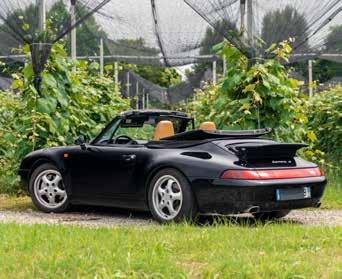
• The last air-cooled Porsche 911 model
• Fitted with desirable manual gearbox
• Attractive colour combination
• Only three owners since 1999
"Six years after the end of its production life the 993-model 911 Carrera has become one of the most sought-after Porsches of all time. In just four years in production the last of the air-cooled 911s established an unrivalled reputation for faultless performance, reliability and not least build quality." – 911 & Porsche World, January 2004.
An historic landmark in the Porsche 911's continuing development arrived in 1994 with the introduction of the Type 993 version, destined to be the last to use the air-cooled engine, designed by the celebrated Porsche engineer, Hans Mezger, which had been a distinguishing feature of the 911 since its introduction 30 years previously. Today the Type 993 is regarded by many as the most beautiful 911 of all. Over the years the 911 had received numerous aerodynamic and safetyinspired add-ons, diluting the purity of the original form; the Type 993's arrival marked a return to basic principles, being recognisably a 911 but one in which all functions had been harmoniously integrated in a truly outstanding example of modern automotive styling. Along with the sleeker bodywork came new multi-link rear suspension that improved both ride quality and roadholding, reducing the 911's characteristic lift-off oversteer.
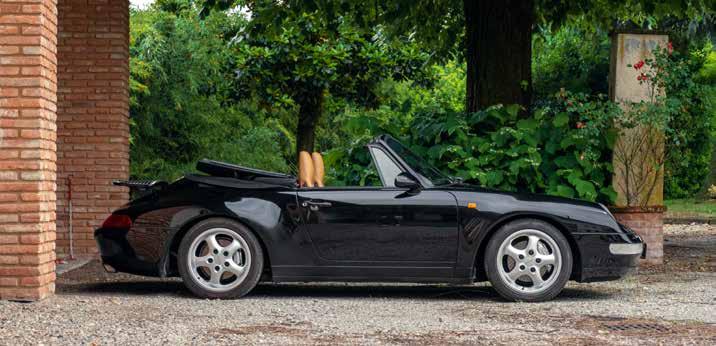


The range on offer remained pretty much as before, comprising twoand four-wheel drive Carrera 2/4 models, the legendary Turbo, and the Cabriolet convertible, all powered by the latest 3.6-litre version of Porsche's perennial flat-six engine. The latter had undergone significant internal upgrading to make it both smoother and quieter, while the adoption of hydraulic tappets eliminated a service item.
The '3.6' not only produced more power than before but made it available over a wider rev range thanks to 'Variocam' variable valve timing and variable-length air intakes. The Type 993 was also the first 911 to feature a six-speed version of the G50 gearbox, while the Tiptronic automatic transmission was improved. The optional fourwheel drive transmission was redesigned, switching from a centre differential to a viscous coupling unit which, combined with the new suspension arrangements, made for improved roadholding in difficult road conditions
Introduced alongside the coupé in April 1994 for the 1995 model year, the Cabriolet featured an electrically powered soft-top incorporating reinforcing metal sheets and an automatic wind blocker, while a small spoiler with integral brake light was mounted at the rear.
Most attractively finished in black with matching hood and contrasting tan interior, this Type 993 was delivered new to Switzerland before being imported into Italy in 1999. While in Italy it has had only three owners: the first from 1999 until 2003, the second from 2003 to 2009, and our vendor from 2009 to the present day. Shortly after purchasing the car the vendor commissioned none other than the well-known official workshop of Redolfi Orlando for a thorough repair and service, which included new brake discs, various suspension arms, various other small repairs and a gearbox oil change. The total cost of these works was €5,610. The odometer reading at the time of the service was 118,946 kilometres and at time of cataloguing was only 119,344 kilometres, indicating that the car has only seen very limited use since 2010. It is offered with Italian registration documents, an ASI Certificato di Identità, the owner's manual, and duplicate service book.
€60,000 - 80,000
No Reserve
Coachwork by Bertone
Chassis no. AR1355352
• Desirable 1750 1st series version
• Delivered new to France
• French registration document
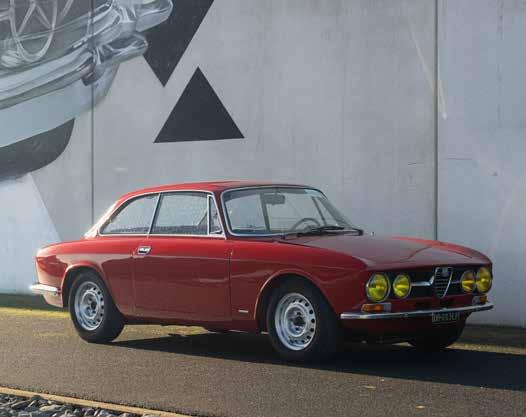

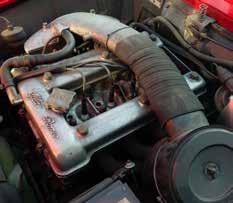
A short-lived but nevertheless popular model, the 1750 GTV underwent a minor mechanical and styling revision before being replaced by the 2000 version in 1972. More powerful than the 1600 but sweeter running than the 2000, the 1750 is the choice of the Alfa Romeo enthusiast who knows their GTVs. Driver's cars par excellence in the Alfa tradition, Bertone's timelessly elegant Giulia coupés are among the most exciting sports saloons of the 1960s and today all are highly sought after.
Offered with an old French Certificat d'Immatriculation and French/ Spanish sales paperwork, this example represents a rare opportunity for the Alfa Romeo enthusiast to own one of these eminently collectible models.
€30,000 - 35,000 No Reserve
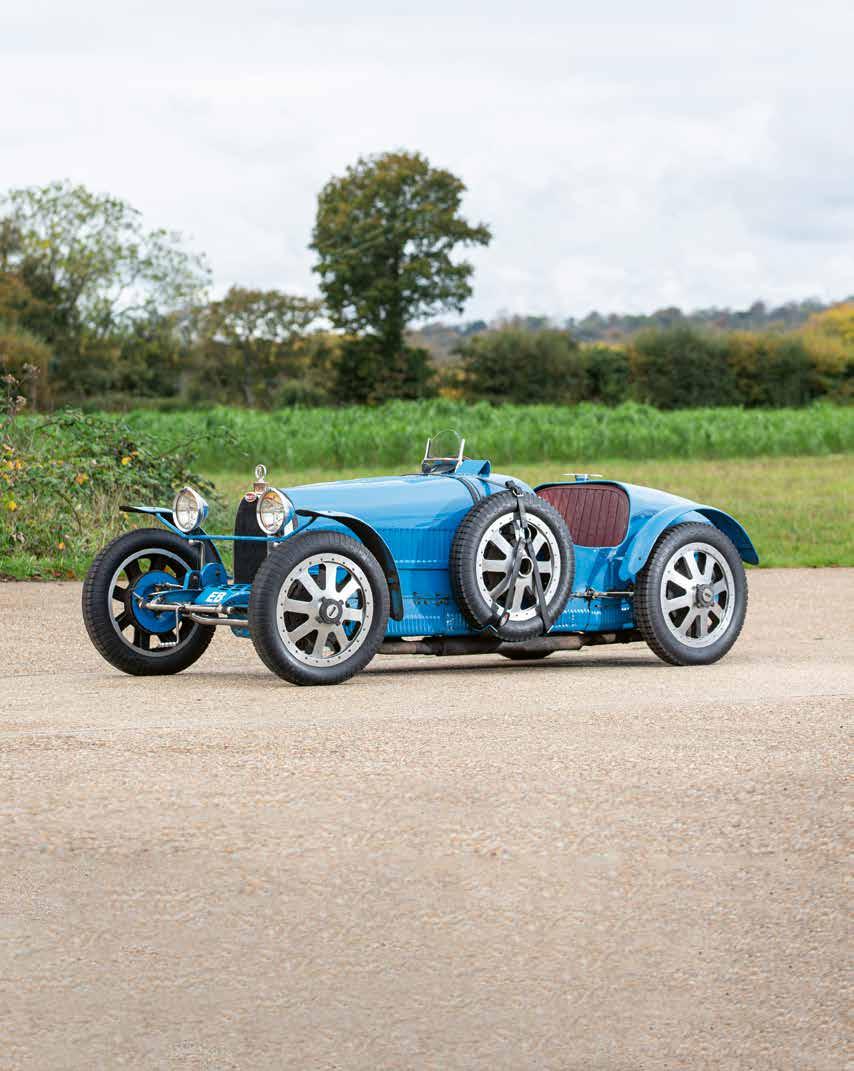



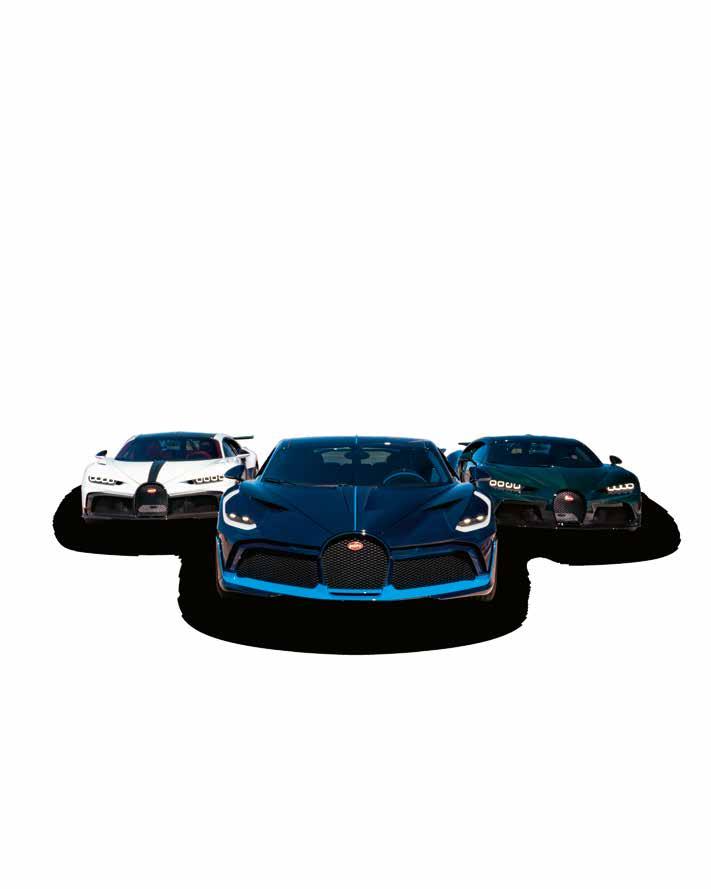

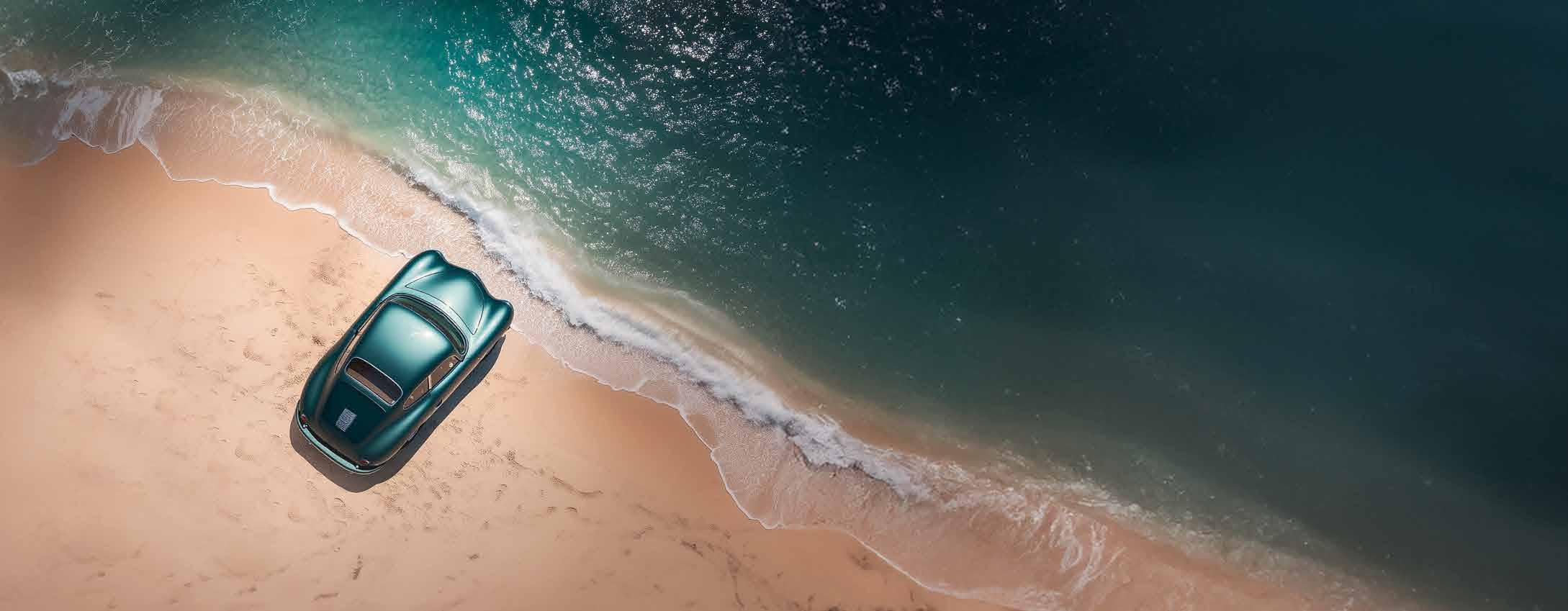




Possible in both dedicated and combined transport by single trailer or truck.
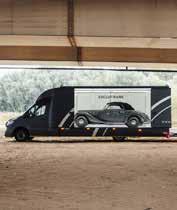
Exclutrans offers a highly and permentantly secured car storage with optional car butler services.

World wide experience, also including the assistence in necessary customs formalities.
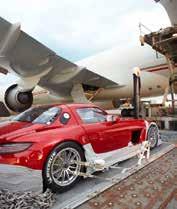
Being well established over 15 years in the business, by offering tailor-made solutions.

The text below is a free translation of the Algemene voorwaarden in Dutch. If there is a difference between the English version and the Dutch version of the conditions of sale, the English version will take precedence.
Any reference in these general conditions to “Bonhams” will be deemed a reference to Bonhams 1793 Ltd (hereinafter referred to as “Bonhams”).
Bonhams acts as an agent of the vendor. The sales contract for the item auctioned publicly is agreed between the vendor and Buyer. The relationship between Bonhams and the Buyer is subject to these general conditions, as well as Important Information For Buyers and Sellers appended to this same catalogue. Bonhams will not be held liable for breaches committed by the vendor or Buyer.
In these General Conditions, the following terms and expressions will have the meaning indicated below:
- “Acquirer” or “Buyer” or “Winning bidder”: the person who makes the last bid, and to whom a Lot is awarded by the authorised auctioneer.
- “Auctioneer” or “Authorised auctioneer”: the representative of Bonhams 1793 Ltd who is authorised to conduct the auction.
- “Bidder” the party who bids during an auction sale or bidding, through an intermediary or representative of Bonhams 1793 Ltd.
- “Lot”: any item (goods or motor vehicles) included in the catalogue, or the list of added Lots, which are on view and to be presented for auction.
- “Auction price” or “Hammer price”: the price, excluding costs, given in the currency in which the sale takes place, at which a Lot is awarded by the authorised auctioneer to the Buyer.
- “Reserve Price”: the minimum price at which a Lot may be sold, as agreed between Bonhams and the Vendor.
Any Lot marked by the symbol (#) indicates that Bonhams has a financial interest in the Lot.
- Bonhams advises bidders to carefully examine the Lots on which they are interested in bidding prior to the auction. “Condition reports” on the condition of Lots are available on request from the relevant department.
- All information on the condition of a Lot in catalogue descriptions or “condition reports”, as well as any oral declaration, is the expression of an opinion only. References in the catalogue description or condition reports regarding the condition of a Lot and its restoration or accident history, are given in order to draw the Buyers attention to these points.
- The condition of a Lot may vary between the time it is described in the catalogue and the time it is put on sale. Any material variation shall be announced at the time of sale.
- Any party wishing to bid before the sale must fill in a Bonhams bidder registration form. They must also present an official piece of identification, and address confirmation. The duly completed form, signed and dated, will be submitted to Bonhams before the sale commences, and a registration number will be assigned to each potential bidder.
- All bidders will be considered and assumed to be acting on their own behalf unless, before the sale, it has been expressly brought to the attention of Bonhams, in writing, that they are acting on behalf of a third party, and this third party has been approved by Bonhams. In this event both parties will be deemed by Bonhams jointly liable.
- Anyone who bids at the auction is understood to have read and accepted the conditions of sale.
- The sale shall take place in Dutch, which is the official legal language of the sale.
- Auctions are held in Euros. Conversions to different currencies displayed on an electronic board may be slightly different from the legal rate. Bonhams rejects any liability in the event of any malfunction or incorrect display. Only the amount of the last bid, as expressed by the auctioneer, must be taken into account.
- Bonhams reserves the right, at its entire discretion, to refuse participation in its auctions to any person.
- Estimates given by Bonhams are indicative in nature, and may not be deemed any guarantee of the auction price.
- If a reserve price has been fixed, the authorised auctioneer reserves the right to make bids on behalf of the vendor until the reserve price is reached.
- Bonhams may not be held liable in the event of sale of a Lot for which no reserve price has been established for a sum lower than that estimated.
- Bidding will be at the entire discretion of the auctioneer.
- Bonhams gives potential Buyers not attending the sale the option of making a telephone or absentee bid. For this purpose, forms are available on site and appended to the catalogue.
- Bonhams will not be liable for a failure or error in the execution of an absentee bid request. This option is merely a service provided free of charge to the potential Buyer.
- Where two identical absentee bids are received, the first bid received will take precedence.
- Bonhams will not be liable if the telephone connection fails for technical reasons, or an error or omission is made when executing your bid.
- We have complete discretion to refuse any bid, to nominate any bidding increment we consider appropriate, to divide any Lot, to combine two or more Lots, to withdraw any Lot from a Sale and, before the Sale has been closed, to put up any Lot for auction again.
The Buyer will be the Bidder who makes the highest bid acceptable to the Auctioneer for any Lot (subject to any applicable Reserve) to whom the Lot is knocked down by the Auctioneer at the fall of the Auctioneer’s hammer. Any dispute as to the highest acceptable bid will be settled by the Auctioneer in his absolute discretion.
- Sales are finalised once the auctioneer has struck his Hammer and pronounced the word “toegewezen” (“sold”)
- If the reserve price has not been met, the Lot will be finalised by the strike of a Hammer.
- On the fall of the Hammer, the Buyer must show the auctioneer the number allotted to them.
- After the sale, all risks pertaining to the Lot shall be transferred to the Buyer in full, unreservedly. It is the responsibility of the Buyer to have purchases insured. Bonhams rejects any liability for damage that the Buyer may suffer between the moment of sale and removal of the Lot in the event of breach of this requirement by the Buyer.
- In addition to the Hammer price the Buyer agrees to pay Bonhams:
- A Buyer’s Premium of 15% of the Hammer Price on each vehicle and automobilia item together with VAT at the standard rate.
- Additional costs or special taxes may be owed on certain Lots, on top of usual fees and taxes. This will be indicated in the sale catalogue or by an announcement made at the time of sale by the auctioneer.
- The Buyer must immediately pay the total purchase price, comprising the sale price and applicable fees and taxes.
- Bonhams reserves the right to retain Lots sold until full payment and effective encashment of the sales price, plus applicable fees and taxes.
- Payment may be made in cash up to a maximum of €3,000; and by bank transfers in euros. (See also Important Information For Buyers and Sellers).
† VAT at the prevailing rate on Hammer Price and Buyer’s Premium
Ω VAT on imported items at the prevailing rate on Hammer Price and Buyer’s Premium
* VAT on imported items at a preferential rate of 6% on Hammer Price and the prevailing rate on Buyer’s Premium
NMT For the vehicles of less than 6 months old, or having travelled 6,000 km or less, VAT will be payable for EU citizens acquiring the aforementioned vehicle from another EU member state. These Lots will be marked with (NMT)
The prevailing rate of VAT at the time of going to press is 21% but this is subject to government change and the rate payable will be the rate in force on the date of the Sale.
- The Buyer of a vehicle must carry out all necessary formalities, of any type whatsoever, to use it on public highways, pursuant to legislation in force. The winning bidder is presumed to be aware of this legislation, and under no circumstances may Bonhams be held liable for failure by the winning bidder to respect said formalities.
- It is the responsibility of the Buyer to inspect, before the sale, documents relating to the car they wish to purchase, in particular technical inspections and road documents.
- The mileage referred to in the description corresponds to that on the meter, and may not guarantee the real distance travelled by vehicles. Bonhams will not be liable if there is a discrepancy between the two.
- The year announced in the description of each Lot corresponds to the year on the road documents.
- Temporary import: vehicles preceded by the symbol (Ω) or (*) beside the Lot number have been submitted by owners from outside the EU. Buyers must pay applicable VAT on top of their bids, which may be reimbursed to Buyers from outside the EU on presentation of export documents, received within three months of the sale date.
- The application for a certificate for cultural items with a view to their free circulation outside Belgian territory (export licence) or any other administrative documents does not affect the payment obligation incumbent on the Buyer.
- Bonhams holds reproduction rights for its catalogue. No reproduction is authorised without the written authorisation of Bonhams.
- Bonhams has, in its capacity as a public sales auction, a waiver in respect of the reproduction of works of art in its sale catalogue, even if the right of reproduction is not within the public domain.
- Pursuant to the literary and artistic property law, the sale of a work does not imply transfer of the right of reproduction and representation of the work.
- This Agreement, any claim, dispute or difference concerning and any matter arising from, will be governed by and construed in accordance with English law.
- Each Party irrevocably agrees that the Courts of England will have exclusive jurisdiction in relation to any claim, dispute or difference concerning this Agreement and any matter arising from it save that Bonhams may bring proceedings against you in any other court of competent jurisdiction to the extent permitted by the laws of the relevant jurisdiction.
- You irrevocably waive any right that you may have to object to an action being brought in the Courts of England or any other jurisdiction that Bonhams brings proceedings against you further to the preceding clause above, to claim that the action has been brought in an inconvenient forum or to claim that those courts do not have jurisdiction.
- The clauses in these general conditions are independent from each other. The nullity of one clause will not give rise to the nullity of another.
- Only the English version of these general conditions has legal force. Any version in another language will be deemed merely ancillary.
De onderstaande tekst is een vrije vertaling van de Algemene voorwaardenin het Engels. Indien er verschillen zijn tussen de Engelse versie en de Nederlandse versie van de verkoopvoorwaarden dan is de Engelse versie beslissend.
Ieder verwijzing in deze algemene voorwaarden naar “Bonhams” wordt geacht een verwijzing te zijn naar Bonhams 1793 Ltd. (hierna “Bonhams”).
Bonhams treedt op als agent van de verkoper. Het verkoopcontract voor het object dat publiekelijk wordt geveild is overeengekomen tussen de verkoper en de koper. De relatie tussen Bonhams en de koper is onderhevig aan deze algemene voorwaarden evenals aan de Belangrijke informatie voor kopers en verkopers die als bijlage is bijgevoegd bij deze catalogus. Bonhams is niet aansprakelijk voor inbreuk door de verkoper of de koper.
DEFINITIES VAN DE WOORDEN EN UITDRUKKINGEN DIE GEBRUIKT WORDEN IN DE ALGEMENE VOORWAARDEN
In deze algemene voorwaarden hebben de volgende termen en uitdrukkingen de onderstaande betekenis:
- “Verkrijger” of “koper” of “winnende bieder”: de persoon die het laatste bod doet en aan wie door de gemachtigde veilingmeester een kavel wordt toegewezen
- “Veilingmeester” of “gemachtigde veilingmeester”: de vertegenwoordiger van Bonhams 1793 Ltd. die gemachtigd is om de veiling te leiden
- “Bieder” is de partij die tijdens een veilingverkoop of tijdens het bieden een bod uitbrengt. Dit kan ook geb€en door middel van een tussenpersoon of door middel van een vertegenwoordiger van Bonhams 1793 Ltd
- “Kavel”: ieder object (goederen of motorvoertuigen) die zijn opgenomen in de catalogus of de lijst van toegevoegde kavels, die bezichtigd kunnen worden en die gepresenteerd worden voor de veiling
- “Veilingprijs” of de “hamerprijs”: de prijs, exclusief kosten, gegeven in de valuta waarin de veiling wordt gehouden en waartegen een kavel door de gemachtigde veilingmeester aan de bieder wordt toegekend.
- “Limietprijs”: de minimum prijs waarvoor een kavel verkocht mag worden als overeengekomen tussen Bonhams en de verkoper.
Ieder kavel dat gemerkt is met een (#) symbool geeft aan dat Bonhams een financieel belang heeft bij dit kavel.
- Bonhams adviseert bieders om de kavels waarop zij willen bieden voorafgaand aan de veiling zorgvuldig te inspecteren. “Conditierapporten” over de conditie van de kavels zijn op verzoek beschikbaar van de relevante afdeling.
- Alle informatie over de conditie van een kavel in de beschrijving in de catalogus of de “conditierapporten”, evenals mondelinge verklaringen zijn uitsluitend een uitdrukking van een mening. Verwijzingen in de catalogusbeschrijving of conditierapporten ten aanzien van de conditie van een kavel en de restauratie- of ongevallengeschiedenis worden enkel gegeven om de aandacht van de koper op deze bijzonderheden te vestigen.
- De conditie van een kavel kan variëren tussen de tijd waarop het wordt beschreven in de catalogus en de tijd dat het ter verkoop wordt aangeboden. Iedere belangrijke variatie zal op het moment van verkoop worden vermeld.
- Iedere partij die voorafgaand aan de verkoop een bod uit wil brengen dient een registratieformulier van Bonhams voor bieders in te vullen. Zij dienen tevens een officieel legitimatiebewijs en een bewijs van adres te overleggen. Het naar behoren ingevulde formulier moet ondertekend en gedateerd worden ingeleverd bij Bonhams voordat de verkoop begint en iedere mogelijke bieder zal een registratienummer onVATngen.
- Alle bieders worden verondersteld en zullen geacht worden op persoonlijke titel te bieden tenzij voorafgaand aan de verkoop uitdrukkelijk aan Bonhams schriftelijk bekend is gemaakt dat zij optreden namens een derde en deze derde door Bonhams is goedgekeurd. In dat geval zullen beide partijen hoofdelijk en gezamenlijk aansprakelijk worden gehouden door Bonhams.
- Iedereen die tijdens de veiling een bod uitbrengt wordt geacht de verkoopvoorwaarden gelezen en geaccepteerd te hebben.
- De verkoop zal plaatsvinden in het Nederlands, dat de officiële, wettelijke taal van de verkoop is.
- Veilingen worden gehouden in euro’s. De omrekeningskoersen naar andere valuta die op een elektronisch bord worden weergegeven kunnen enigszins afwijken van de wettelijk vastgestelde omrekeningskoers. Bonhams wijst alle aansprakelijkheid af in geval van een storing of een onjuiste weergave. Alleen het bedrag van het laatste bod als vermeld door
de veilingmeester geldt als beslissend.
- Bonhams behoudt zich het recht voor om geheel naar eigen inzicht de deelname door een persoon aan een van zijn veilingen te weigeren.
- Taxaties die door Bonhams worden verstrekt zijn alleen indicatief en mogen niet worden beschouwd als een gegarandeerde veilingprijs.
- Indien een limietprijs is vastgesteld dan behoudt de gemachtigde veilingmeester zich het recht voor om een bod te doen namens de verkoper tot de limietprijs bereikt is.
- Bonhams is niet aansprakelijk indien een kavel waarvoor geen limietprijs is vastgesteld verkocht wordt voor een bedrag dat lager is dan het getaxeerde bedrag.
- Het bieden geschiedt geheel naar goeddunken van de veilingmeester.
- Bonhams biedt kopers die niet aanwezig kunnen zijn bij de veiling de mogelijkheid om per telefoon een bod uit te brengen of een bod uit te brengen bij afwezigheid. Hiervoor zijn formulieren beschikbaar op de locatie en ook bijgevoegd bij de catalogus.
- Bonhams is niet aansprakelijk voor een verzuim of een fout bij de uitvoering van verzoek om een bod bij afwezigheid. Deze mogelijkheid is uitsluitend een dienstverlening die gratis wordt aangeboden aan de potentiële koper.
- Waar twee gelijke biedingen bij afwezigheid worden onVATngen, zal het eerst onVATngen bod voorrang krijgen.
- Bonhams is niet aansprakelijk indien de telefoonverbinding niet werkt door een technische storing, of indien er een fout of een omissie optreedt bij het uitbrengen van uw bod.
INCIDENTEN DIE DE VERKOOP BEÏNVLOEDEN
- Wij kunnen geheel naar eigen inzicht een bod weigeren, een bod verhogen met een bedrag dat wij juist achten, een kavel opsplitsen, twee of meer kavels combineren, een kavel terugtrekken uit een verkoop en voordat de verkoop gesloten is ieder kavel opnieuw ter veiling aanbieden. De koper zal de bieder zijn die het hoogste bod doet dat acceptabel is voor de veilingmeester voor ieder kavel (onderhevig aan een eventuele limietprijs) voor wie het kavel wordt toegewezen door de veilingmeester na het vallen van de hamer van de veilingmeester. Ieder dispuut over het hoogste geaccepteerde bod wordt geheel naar eigen inzicht beslist door de veilingmeester.
VERKOOP
- De verkoop is gedaan op het moment dat de veilingmeester zijn hamer laat vallen en het woord “toegewezen” zegt.
- Indien de limietprijs niet gehaald is zal het kavel per hamerslag worden afgeslagen.
- Na het vallen van de hamer dient de koper de veilingmeester het aan hem/haar toegekende nummer te tonen.
- Na de verkoop zal alle risico met betrekking tot het kavel volledig en zonder voorbehoud overgaan op de koper. Het is de verantwoordelijkheid van de koper om het gekochte te verzekeren. Bonhams wijst alle aansprakelijkheid van de hand voor schade die de koper op kan lopen vanaf het moment van de verkoop tot de verwijdering van het kavel in het geval dat de koper geen gehoor geeft aan deze bepaling.
BETALING
- De koper komt overeen om Bonhams bovenop de hamerprijs het volgende te betalen:
- Een opgeld van 15% van de hamerprijs voor ieder voertuig of automobilia item samen met de BTW tegen het vastgestelde tarief.
- Voor bepaalde kavels kunnen extra kosten of speciale belastingen verschuldigd bovenop de gewone vergoedingen en belastingen. Dit zal worden aangegeven in de verkoopcatalogus of door middel van een aankondiging op het moment van verkoop door de veilingmeester.
- De koper dient onmiddellijk de totale aankoopprijs te voldoen die bestaat uit de verkoopprijs en de toepasselijke opgelden en belastingen.
- Bonhams behoudt zich het recht voor om verkochte kavels terug te houden tot de volledige en effectieve betaling van de verkoopprijs, vermeerderd met de toepasselijke opgelden en belastingen, heeft plaatsgevonden.
- Betaling kan gedaan worden met contant geld tot een maximum van € 3000; door middel van een debetkaart, onderhevig aan een toeslag van 3% op het totaal indien niet uitgegeven door een Belgische bank; door middel van een creditcard, onderhevig aan een toeslag van 3% van het totaal, of door middel van een bankoverschrijving in Euro. (Zie ook Belangrijke informatie voor kopers en verkopers).
SYMBOLEN NAAST DE KAVELNUMMERS:
† BTW tegen het geldige tarief op de hamerprijs en het opgeld
Ω BTW op geïmporteerde kavels tegen het geldige tarief op de hamerprijs en het opgeld
* BTW op geïmporteerde kavels tegen een voorkeurstarief van 6% op de hamerprijs en tegen het geldige tarief op het opgeld
NMT Voor voertuigen jonger dan 6 maand oud of die slechts 6,000 kms of minder hebben gereden, zal BTW aangerekend worden voor EU-burgers die voorgenoemd voertuig aankopen komende uit een andere EU-lidstaat. Deze loten zullen worden aangeduid met (NMT)
Het momenteel geldige BTW -tarief op het moment van ter perse gaan is 21% maar is onderhevig aan wijziging door de overheid en het te betalen tarief zal het tarief zijn dat geldig is op de dag van aankoop.
- De koper dient alle vereiste formaliteiten te vervullen van welke aard dan ook die op dat moment wettelijk van kracht zijn om gebruik te maken van het gekochte op de openbare weg. De winnende bieder wordt verondersteld bekend te zijn met de toepasselijke wetgeving en Bonhams is onder geen enkele omstandigheden aansprakelijk voor nalatigheid door de winnende bieder zich aan de genoemde formaliteiten te houden.
- Het is de verantwoordelijkheid van de koper om voorafgaand aan de verkoop de documenten te inspecteren van de auto die zij wensen te kopen, met name de technische inspecties en de registratiedocumenten.
- Het aantal gereden kilometers in de beschrijving komt overeen met het aantal op de kilometerteller en biedt geen garantie van het werkelijk aantal met de auto gereden kilometers. Bonhams accepteert geen aansprakelijkheid indien er een verschil is tussen de twee.
- Het jaar dat vermeld wordt in de beschrijving van ieder kavel komt overeen met het jaar op de registratiedocumenten.
- Tijdelijke invoer: voertuigen die worden vooraf gegaan door het symbool (Ω ) of (*) naast het kavelnummer zijn ter beschikking gesteld door eigenaren buiten de EU. Kopers dienen bovenop hun bod de verschuldigde BTW te voldoen die kan worden vergoed aan kopers van buiten de EU na overlegging van de exportdocumenten die binnen drie maanden na de verkoopdatum onVATngen moeten zijn.
- De aanvraag van een certificaat voor culturele stukken met als doel de vrije circulatie daarvan buiten België (exportvergunning) of andere administratieve documenten is niet van invloed op de betalingsverplichting van de koper.
- Bonhams is eigenaar van het auteursrecht op de catalogus. Reproductie is niet toegestaan zonder schriftelijke toestemming van Bonhams.
- In zijn capaciteit als publieke verkoopveiling heeft Bonhams een vrijstelling met betrekking tot de reproductie van kunstwerken in zijn verkoopcatalogus, zelfs waar het auteursrecht nog niet in het publieke domein verkeert.
- Ingevolge de literaire en kunstzinnige eigendomsrechten impliceert de verkoop van een werk niet de overdracht van het recht van reproductie en representatie van het werk.
- Deze overeenkomst en iedere vordering, dispuut of verschil met betrekking tot deze overeenkomst en iedere zaak op grond van deze overeenkomst is onderhevig aan en zal worden begrepen in overeenstemming met de Engelse wet.
- Iedere partij komt onherroepelijk overeen dat de rechtbanken in Engeland exclusieve jurisdictie zullen hebben met betrekking tot iedere vordering, dispuut of verschil van mening aangaande deze overeenkomst en alle zaken die daaruit voortvloeien, tenzij Bonhams verkiest om gerechtelijke stappen tegen u te ondernemen bij een andere bevoegde rechtbank voor zover toegestaan door de wetten van het toepasselijke rechtsgebied.
- U doet onherroepelijk afstand van enig recht dat u hebt om bezwaar te maken tegen gerechtelijke stappen die Bonhams tegen u onderneemt bij de rechtbanken in Engeland of in enige andere jurisdictie op grond van de bovenstaande clausule door deze aan te vechten op basis van exceptie van onbevoegdheid of door de jurisdictie van die rechtbanken aan te vechten.
- De clausules in deze algemene voorwaarden zijn onafhankelijke van elkaar geldig. De nietgeldigheid van een clausule zal geen gevolgen hebben voor de geldigheid van de andere clausules.
- Uitsluitend de Engelse versie van deze algemene voorwaarden zal beslissend zijn. Iedere versie in een andere taal wordt beschouwd als ondergeschikt.
UK (Head office)
101 New Bond Street London, W1S 1SR
Tel: (020) 7447 7447
UK Representatives
Staffordshire & Cheshire Motor Cars
Chris Shenton Unit 1, Wilson Road Hanford, Staffordshire ST4 4QQ
Tel: 01782 643 159 chris.shenton@ bonhamscars.com
Devon, Cornwall & South West Motor Cars & Motorcycles
Jonathan Vickers Bonhams
36 Lemon Street
Truro, Cornwall TR12NR
Tel: 01872 250 170 jonathan.vickers@ bonhamscars.com
Hampshire & Dorset Motorcycles
Michael Jackson
Tel: 01794 518 433
Lincs & East Anglia Motorcycles
David Hawtin The Willows
Church Lane
Swaby, Lincolnshire LN13 0BQ
Tel: 01507 481 890
Motor Cars
Robert Hadfield 95 Northorpe Thurlby Bourne PE10 0HZ
Tel: 01778 426 417 Mob: 07539 074242 rhadfield10@gmail.com
Midlands Motor Cars
Richard Hudson-Evans Po Box 4 Stratford-Upon-Avon CV37 7YR Mob: 01789 414 983 richard.hudson-evans @bonhamscars.com
London, Berks, Hants, Surrey and Sussex Motorcycles
David Hancock
Tel: 01428 604 383 Mob: 07774 747 017 david.hancock@ bonhamscars.com
Leics, North Hants, Herts, Beds, Bucks & Oxon Motorcycles
Martin Heckscher
April Cottage, Cholesbury, near Tring, HP23 6ND
Tel: 01494 758 838 Mob: 07973 661 051 martin.heckscher@ bonhamscars.com
Lancs, Yorks, N. Counties & Scotland Motor Cars & Motorcycles
Mark Garside Knarr Mill
Oldham Road
Delph, Oldham OL3 5RQ
Tel: 01457 872 788 Mob: 07811 899 905 mark.garside@ bonhamscars.com
Midlands, Peak District & Wales Motor Cars & Motorcycles
Phil Ingle Mob: 07710 615 868 phil.ingle@ bonhamscars.com
European (Head office)
Paris 6 avenue Hoche, 75008 Paris
Tel: +33 1 42 61 10 11 eurocars@ bonhamscars.com
European Representatives Germany
Maximilianstrasse 52 80538 Munich
Tel: +49 89 24 205812 munich@ bonhams.com
Italy and Germany
Gregor Wenner
Mob: +39 333 564 3610 gregor.wenner@ bonhamscars.com
The Netherlands and North of Germany
Jonathan Middag
Tel: +31 6 50 60 77 96 jonathan.middag @bonhamscars.com
USA (Head offices)
New York
Eric Minoff
580 Madison Avenue
New York NY 10022
Tel: +1 917 206 1630 eric.minoff @bonhamscars.com
Allan Greenfield
Tel +1 917 206 1681
allan.greenfield @bonhamscars.com
Ian Gabriele
Tel +1 628 219 3974
ian.gabriele @bonhamscars.com
Los Angeles
Gordan Mandich 7601 W Sunset Blvd
Los Angeles, CA 90046
Tel: +1 323 436 5412 gordan.mandich@ bonhamscars.com
Adrien Durban
Tel: +1 323 436 5449 adrien.durban @bonhamscars.com
Louis Frankel
Tel: +1 213 916 2109 louis.frankel @bonhamscars.com
Nick Smith
Tel: +1 323 436 5470
nick.smith @bonhamscars.com
San Francisco
Kurt Forry
601 California Street
San Francisco CA 94108
Tel +1 717 623 1638 kurt.forry @bonhamscars.com
USA Representatives
Midwest
Tim Parker
Tel: +1 651 235 2776 tim.parker @bonhamscars.com
Pacific Northwest
Mark Osborne
Tel: +1 415 518 0094 mark.osborne @bonhamscars.com
Tom Black
Portland, OR Tel: +1 503 239 0227
Rest of the World
Australia
97-99 Queen Street
Woollahra
Sydney NSW 2025 +61 2 8412 2222 info.au@ bonhams.com
New Zealand
John Kennedy Craighall Puruatanga Road
Martinborough 5711
New Zealand
Tel: +64 6 306 8228
Mob: +64 21 042 5396 kaka943@icloud.com
Japan
Ryo Wakabayashi
Tokyo, Japan +81 (0) 3 5532 8636 ryo.wakabayashi@ bonhams.com
Hong Kong
Suite 2001
One Pacific Place 88 Queensway Admiralty
Hong Kong +852 2918 4321 hongkong@ bonhams.com
Beijing
Suite 511, Chang An Club, 10 East Chang An Avenue, Beijing 100006, China Tel: +86 10 6528 0922
Singapore Bernadette Rankine 11th Floor, Wisma Atria 435 Orchard Road
Singapore 238877 +65 (0) 6701 8038 singapore@ bonhams.com
(Attendee / Absentee / Telephone Bidding)
Please circle your bidding method above.
The Sale, including all bidding and buying, is governed by Bonhams’ Conditions of Sale. You should read the Conditions and any Sales Information prior to bidding and ensure you understand the charges payable on any purchase you make. The Conditions also set out certain undertakings by bidders and buyers and limits Bonhams’ liability to you. Please note an invoice for a purchased lot will be made out in the name as shown on this form and payment will only be accepted from an account in that name (or the name of the company if the bid is on behalf of that company).
Where we obtain any personal information about you when you register or bid with us, we shall only use it in accordance with the terms of our Privacy Policy. A copy of our Privacy Policy can be found on our website (www.bonhams.com) or requested by post from Client Services Department, 6 Av. Hoche, 75008 Paris, France, +33 1 42 61 10 10, paris@bonhams.com
We may from time to time provide you with information about goods and services that we believe may interest you, based on your previous interactions with us. You can opt out of receiving these communications at any time. If you do not want to receive such communications, please tick this box
At least 24 hours prior to the Sale, you must provide government issued photo ID, e.g., a passport or driving licence and - if not included on the ID document - proof of address, e.g., a current utility bill, or bank/credit card statement. Corporate clients must also provide their company registration documents, documentary proof of beneficial owners owning 25% or more of the company and confirmation of the named individual’s authority to act. Failure to provide these documents may result in your bids not being processed. Clients who are not able to provide documents prior to Sale may opt to bid online using our credit card verification option. Please note we reserve the right to request a bank reference or deposit.
If successful
I will collect the purchases myself
Please arrange shippers to contact me with a quote and I agree that you may pass them my contact details.
The Zoute Sale
Knokke - Zoute, Belgium 12 October 2025
If you are not attending the sale in person, please provide details of the Lots on which you wish to bid at least 24 hours prior to the sale. Bids will be rounded down to the nearest increment. Please refer to the Notice to Bidders in the catalogue for further information relating to Bonhams executing telephone, online or absentee bids on your behalf. Bonhams will endeavour to execute these bids on your behalf but will not be liable for any errors or failing to execute bids.
General Bid Increments:
€10 - 200 by 10s
€200 - 500 by 20 / 50 / 80s
€500 - 1,000 by 50s
€1,000 - 2,000 by 100s
€2,000 - 5,000 by 200 / 500 / 800s
€5,000 - 10,000 by 500s
€10,000 - 20,000 by 1,000s
€20,000 - 50,000 by 2,000 / 5,000 / 8,000s
€50,000 - 100,000 by 5,000s
€100,000 - 200,000 by 10,000s above €200,000 at the auctioneer’s discretion
The auctioneer has discretion to split any bid at any time.
Company name (if applicable)
Company Registration number (if applicable)
Post / Zip code
Telephone (mobile)
Telephone (landline)
E-mail (in capitals)
Please answer all questions below
/ State
Paddle number (for office use only) BY SIGNING THIS FORM, YOU CONFIRM THAT YOU HAVE REVIEWED THE CATALOGUING FOR THE ABOVE LOTS, YOU AGREE TO THE CONDITIONS OF SALE INCLUDING THE WARRANTIES LISTED THEREIN, AND AGREE TO PAY THE APPLICABLE BUYER’S PREMIUM, VAT AND ANY OTHER CHARGES DUE. THIS AFFECTS YOUR LEGAL RIGHTS.
1. ID supplied: Government issued ID and (if the ID does not confirm your address) current utility bill/ bank statement. If a company, please provide the Certificate of Incorporation, your ID (as above) (plus, if not a director, a letter authorising you to act), and documentary evidence of the company’s beneficial owners
2. Are you representing the Bidder? If yes, please complete question 3.
3. Bidder's name, address and contact details (phone and email): Bidder’s ID: Government issued ID and (if the ID does not confirm their address) current utility bill/bank statement
Are you acting in a business capacity? Yes No
If registered for VAT please enter your registration here: / - -
Please note that all telephone calls may be recorded.
Telephone or Absentee (T / A) Lot no. Brief description MAX bid in EUR (excluding premium & VAT) Covering bid *
Bidder/Agent’s (please delete one) signature:
Date:
* Covering Bid: A maximum bid (exclusive of Buyers Premium and VAT) to be executed by Bonhams only if we are unable to contact you by telephone, or should the connection be lost during bidding.
Payment will only be accepted from an account in the same name as shown on the invoice and Auction Registration form. Please email or post the completed Auction Registration form and requested information to: Bonhams, Client Services, Belgium Branch, Chaussée de Charleroi 89, 1060 Bruxelles, Belgium. +32 2 736 50 76 , bids@bonhams.com Bonhams 1793 Ltd - Belgium Branch, Chaussée de Charleroi 89, 1060 Bruxelles, Belgium. VAT Number: BE 0841 074 627. EORI Number: BEGB 001779
Maserati Ghibli SS 4.9-Litre Coupé
Maserati Mistral 4000 Coupé
Maserati Indy 4900
Maserati MC12 Stradale
Mercedes-Benz 280 SE 3.5 Cabriolet
Mercedes-Benz 300 SL Roadster

Tiger MK 1A Roadster
Toyota BJ43 “Land Cruiser”
